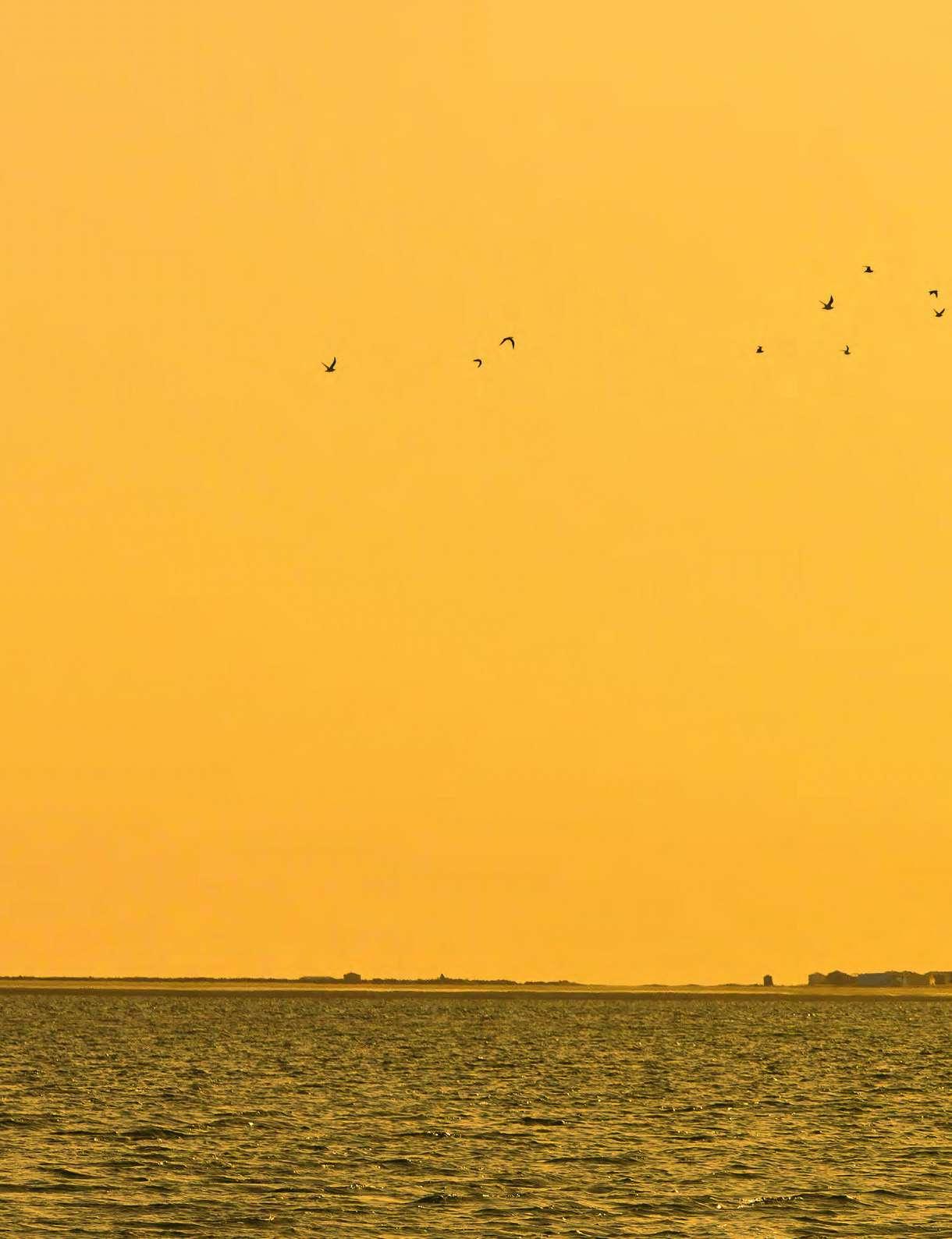MAVA FOUNDATION
For People and Nature: 1994-2022

Copyright © MAVA, Fondation pour la Nature, 2023
ISBN: 978-1-7393140-0-2

For People and Nature: 1994-2022

Copyright © MAVA, Fondation pour la Nature, 2023
ISBN: 978-1-7393140-0-2

 MUBARAK
MUBARAK
Upon this occasion to commemorate the achievements of the MAVA Foundation, its founder Luc Hoffmann and its President André Hoffmann, it would be too simplistic to say that we are losing strong partners in the global effort to fight the twin crises of biodiversity loss and climate change. Whilst true, this would not fully capture the impact of the MAVA Foundation, its staff and its founders, the Hoffmanns, on nature conservation globally over the past 70 years.
Through the visionary guidance of Dr Luc Hoffmann, born from his passion for nature and quest to better understand it, conservation as a discipline and a movement gained its footing; while through the discipline, strategic guidance and hands-on efforts of André Hoffmann, conservation organisations flourished. Indeed, Luc, André and the MAVA Foundation served as partners, but more importantly they served as visionaries, innovators, mentors, collaborators and capacity-builders.
Many conservation institutions – IUCN, WWF, Wetlands International and Ramsar – were born from the vision and innovation of the Hoffmanns. Take a moment to think about that list. WWF is the world’s largest conservation organisation with a presence in more than 100 countries. IUCN is the world’s largest and most diverse environmental network - the founder of the Red List of Threatened Species and CITES, a scientific observer and advisor for nature to the United Nations. It is a global advocate for nature, bringing together nations, civil society and scientists into a membership union.
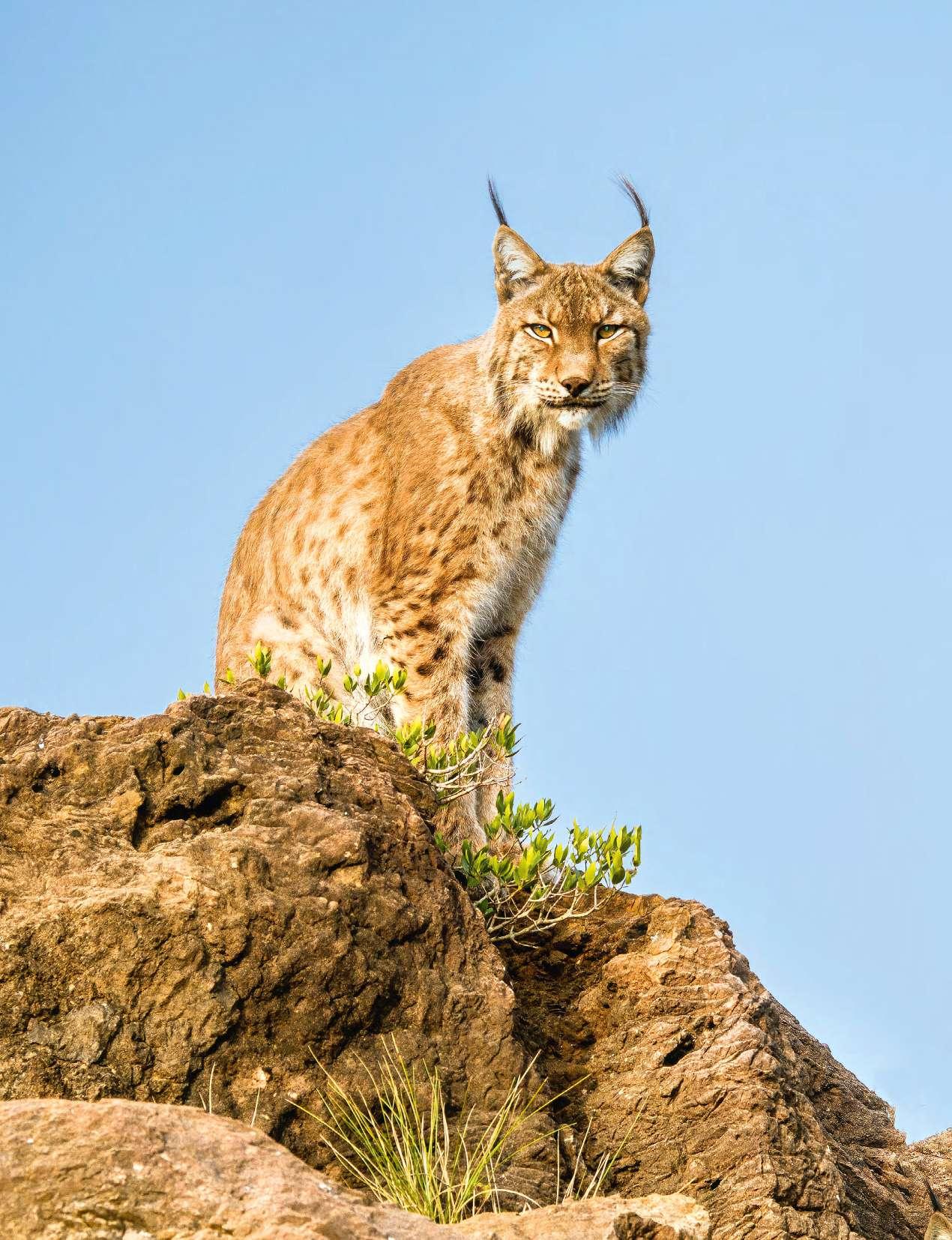
With distributions of over US$1 billion, the MAVA Foundation has supported thousands of projects in dozens of countries. Hundreds of millions of dollars have been distributed in the past five years alone. Quickly distributing large sums to dozens of conservation organisations at this precise moment of crisis is arguably one of MAVA’s greatest innovations. By investing generously and immediately in projects across the world, MAVA helped address biodiversity loss and climate change head-on while inspiring others to join the cause, build capacity and set the stage for future success. No doubt this was a tremendous accomplishment for the MAVA staff and they are to be commended for such a Herculean effort.
Much of what can be said about MAVA Foundation can also be said about André Hoffmann. André is a strong supporter of nature, he dives into conservation with his heart, soul, ambition, clarity of purpose and drive to succeed. Without him, conservation as an institution would be less effective, its voice not as strong, its cause not as urgent. It is with a deep sense of gratitude that I extend my best wishes to André and his entire family as they move on and continue striving to make the world a better place. There will always be a seat at the table reserved for André and the Hoffmanns. They earned it through their hard work and passionate advocacy.
As MAVA exits this space with grace, let us work to keep our commitments and ensure that the organisations and capacities that MAVA so dutifully supported endure and flourish to carry the legacy of MAVA into the future, protecting nature and the diversity of life on earth.
The decision to write a book about MAVA was not one we took lightly, as humility was always part of MAVA’s DNA. We always preferred to keep our partners in the foreground with our own contributions in the background. However, as our planned closure drew closer, we recognised that we had a wealth of experience to share, making the idea of leaving behind a physical memento of our work more and more appealing. It is our hope that other funders and the conservation community can learn from both our successes and our challenges.
As well as a learning resource, this book is also a keepsake and a collection of personal stories. We’re proud to share a broad range of stories, featuring partners we have supported throughout our lifespan and stretching across the globe. Of the nearly 500 stories we received, we selected partners and projects that represent the diversity of issues, approaches, geographies and themes we worked on over the years.
We hope their anecdotes raise a smile and bring back happy memories. We love the image of the book being
slipped off bookshelves and shared for many decades to come.
If you are interested in understanding more about MAVA’s approach, our way of operating and the lessons we have learned, we invite you to explore the appendices to this book where we have compiled a list of all our learning documents.

The closure of MAVA is the end of a chapter, not the end of a story. Beyond this book, we hope the MAVA story lives on through our partners, the special people we had the honour of collaborating with and, of course, the projects we funded, helped shape and co-created, which we hope will continue to thrive for many years.
This was a shared journey and we trust you will enjoy this set of collective memories. We tried to capture in words the friendliness, collaboration and trust that characterised our common journey.
The MAVA board and team
MAVA began its existence as a one-man show, created by an exceptional man – our founder Dr Luc Hoffmann. As a trained scientist with a lifelong fascination with the natural world, he was an expert in the field of nature in the broadest sense. However, he also had an ambitious vision for conservation and the determination to realise it. Over the years, the foundation grew, gaining engaged board members, competent staff and more than 500 dedicated partners.
His son André Hoffmann, another exceptional man, took up the reins after Luc stepped back in 2010 and led MAVA to even greater heights, with his own clear vision and sense of determination.
What I will remember most about MAVA is the people. Every single person who worked with MAVA turned up
because they were determined to protect the natural world. Their commitment is something I greatly admire and have learned a lot from.
Our small, dedicated team was always extraordinarily busy tackling many different conservation challenges at once, so the process of creating this book gave us the rare opportunity to step back and reflect. By examining the context in which MAVA existed, and seeing our achievements collated for the first time, we gained valuable perspective on our journey and contribution to conservation.
Hearing the voices of our partners and fellow funders was an excellent parting gift for us all.
I am very proud when I see the relationships that have grown between our partners and the networks
we nurtured. When we launched our outcome action plans, binding partners together in shared missions, we hoped to create opportunities for people to meet, collaborate and share wisdom. This participative approach is incredibly important to achieving longterm results.
The future belongs to collaboration, and my hope is that the creation of strong and durable collaborations will be one of MAVA’s enduring legacies. The fact that this community of actors has continued to develop independently of MAVA is pivotal, just like the tree that grows without human intervention once the seed has been planted.
I am a strong advocate for developing leadership skills in individuals to better serve the community. We invested in a strong community of passionate leaders who shared our values and helped equip them for the challenges of the future. We hope that these people, even now that our funding has ceased, will continue implementing projects in line with what we call the ‘MAVA spirit’.
We are publishing this book partly to help us draw a line in the sand. MAVA’s role in conservation has come to an end, but sharing our experiences for others to learn from helps to ensure our legacy will endure.
Thank you for your interest in our book and your contribution to the preservation of our planet.

 Lynda Mansson MAVA Director General
Lynda Mansson MAVA Director General
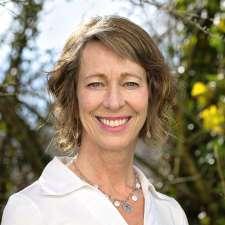
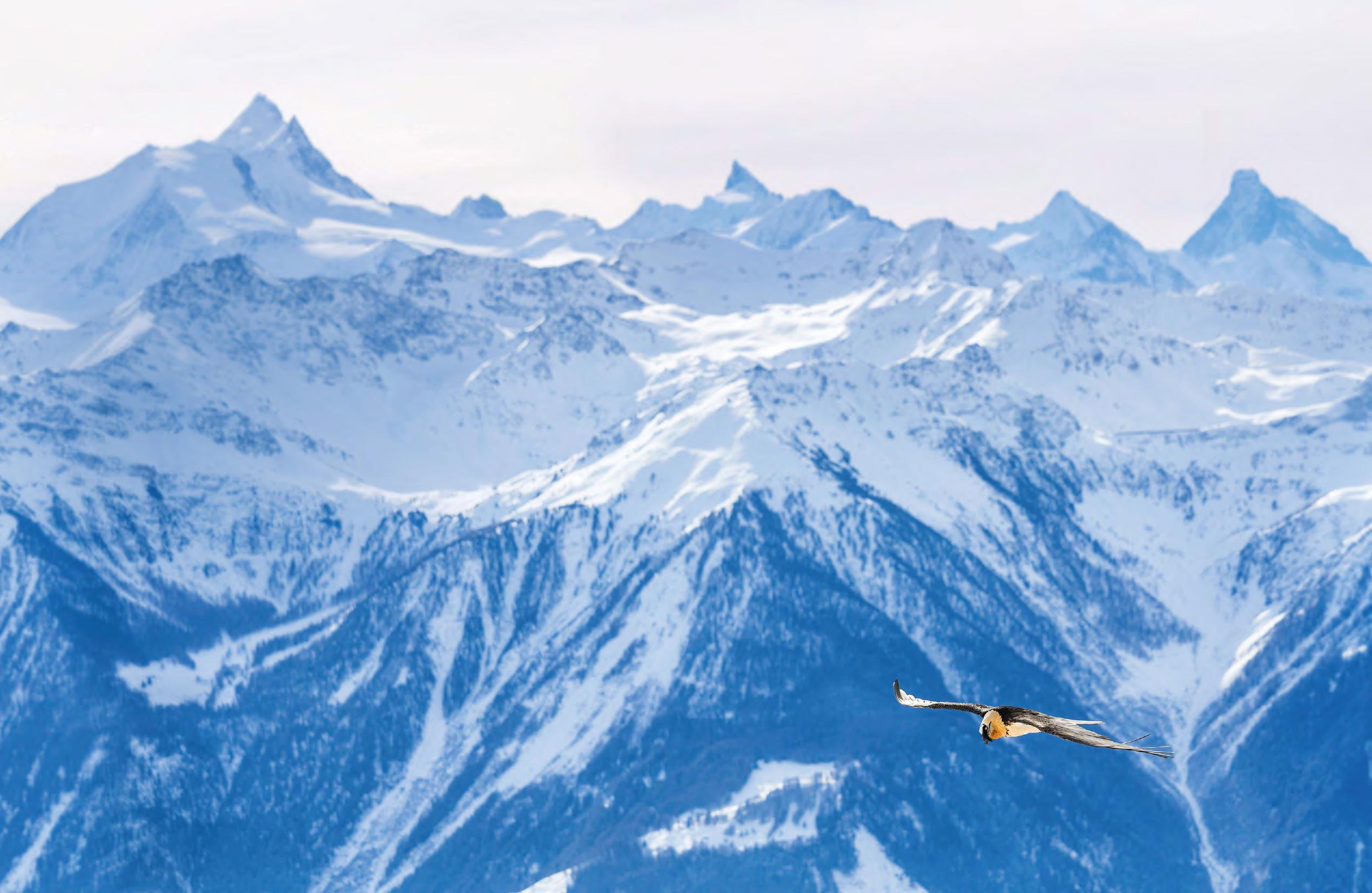
Headquarters in Gland, Switzerland, with a regional office in Dakar, Senegal.
Over its lifetime, MAVA allocated a total of


CHF 1.14 billion
across approximately
Freshwater and wetlands
Marine ecosystems
Cultural landscapes
Species Finance and economy
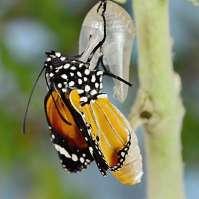
Circular economy


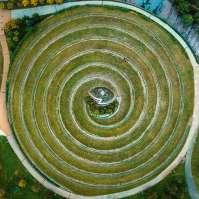
Natural capital

Impact and sustainability
In the Mediterranean, MAVA focused on freshwater, coastal and inland wetlands, marine coastal ecosystems, critical ecosystems in cultural landscapes and priority species.


Ten biggest partners in terms of funding received over the years
With the goal of contributing to the creation of a more sustainable global economic system and integrating with its regional programmes, MAVA focused on valuing natural capital, finance for biodiversity and circular economy.
MAVA’s Impact & Sustainability Unit invested in the development of a dynamic conservation community, helping to secure lasting impact and financial sustainability for its partners after closing.
Global Taking on broad threats and cross-cutting issues, MAVA’s global grants provided the flexibility to support important initiatives that complemented its priority programmes and helped to secure a future for people and nature.
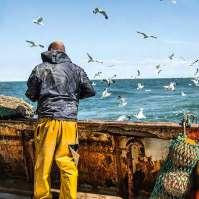
In West Africa, MAVA focused on sea turtles, coastal wetlands, seabirds, mangroves, seagrass beds and small pelagic fish.
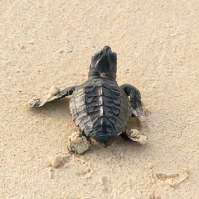
Switzerland (formerly Switzerland and the Alpine Arc)
In Switzerland, MAVA focused on rivers, sustainable agriculture, ecological infrastructure and circular economy.
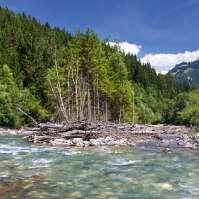
*added in 2014 |
**added in 2016
implemented by more than 500 partners MAVA AT A GLANCE MAVA FOUNDATION: FOR PEOPLE AND NATURE 15
We conserve biodiversity for the benefit of people and nature by funding, mobilising and strengthening our partners and the conservation community.
We envisage a future where biodiversity flourishes, particularly in the Mediterranean, coastal West Africa and Switzerland; where the global economy supports human prosperity and a healthy planet; and the conservation community is thriving.

We gather the relevant key players to address biodiversity conservation challenges and mobilise support for conservation action.
Flexible
With our ability to mobilise funds, rapid decisionmaking and understanding of the need for adaptive management, we are an agile player able to fund innovative initiatives.
We are convinced that nature conservation projects can only be successful if rooted locally, respecting local cultures and building the capacity of local organisations.
We aim for collective, long-term conservation successes with delivery of tangible results as key milestones.
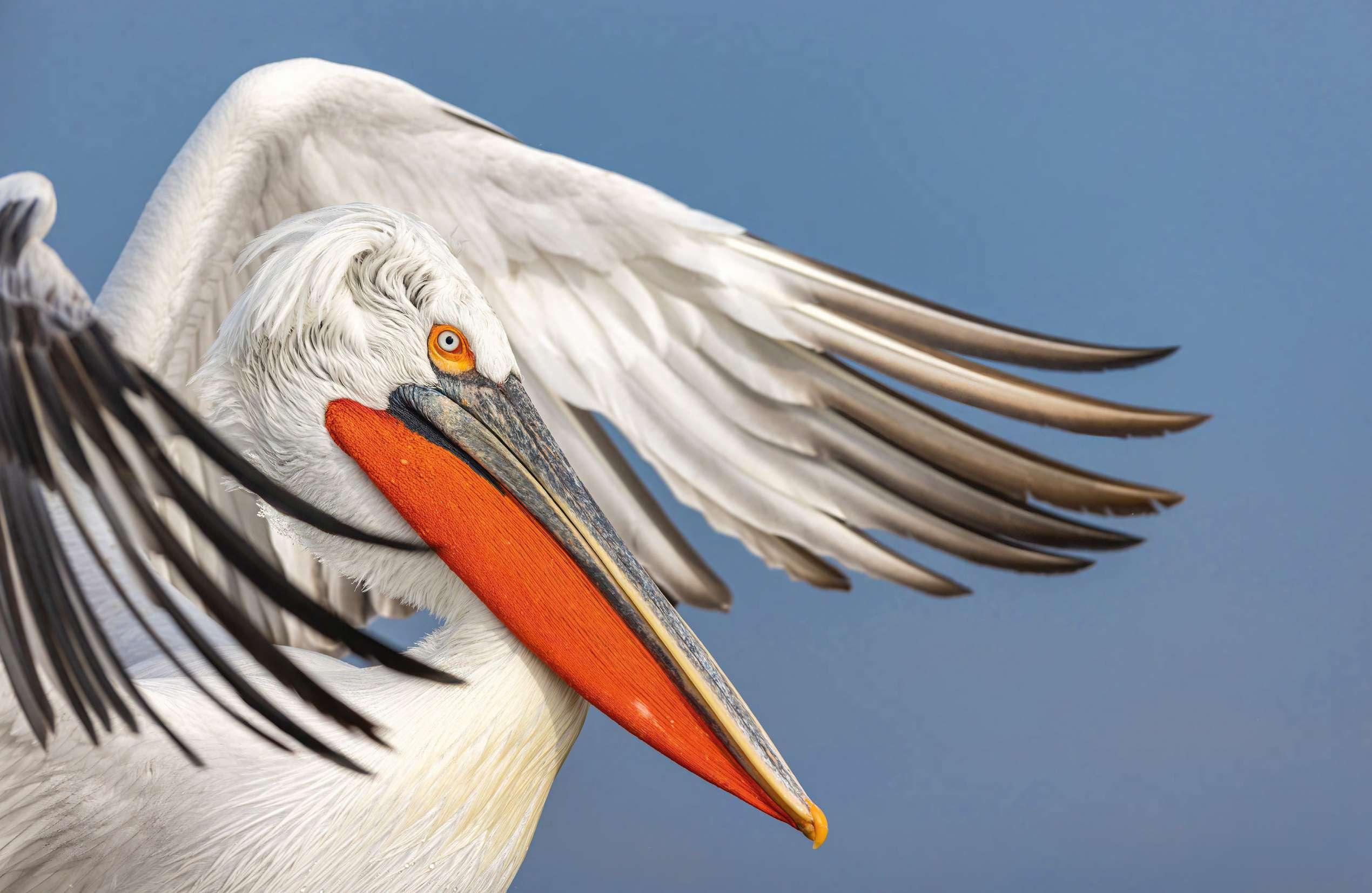
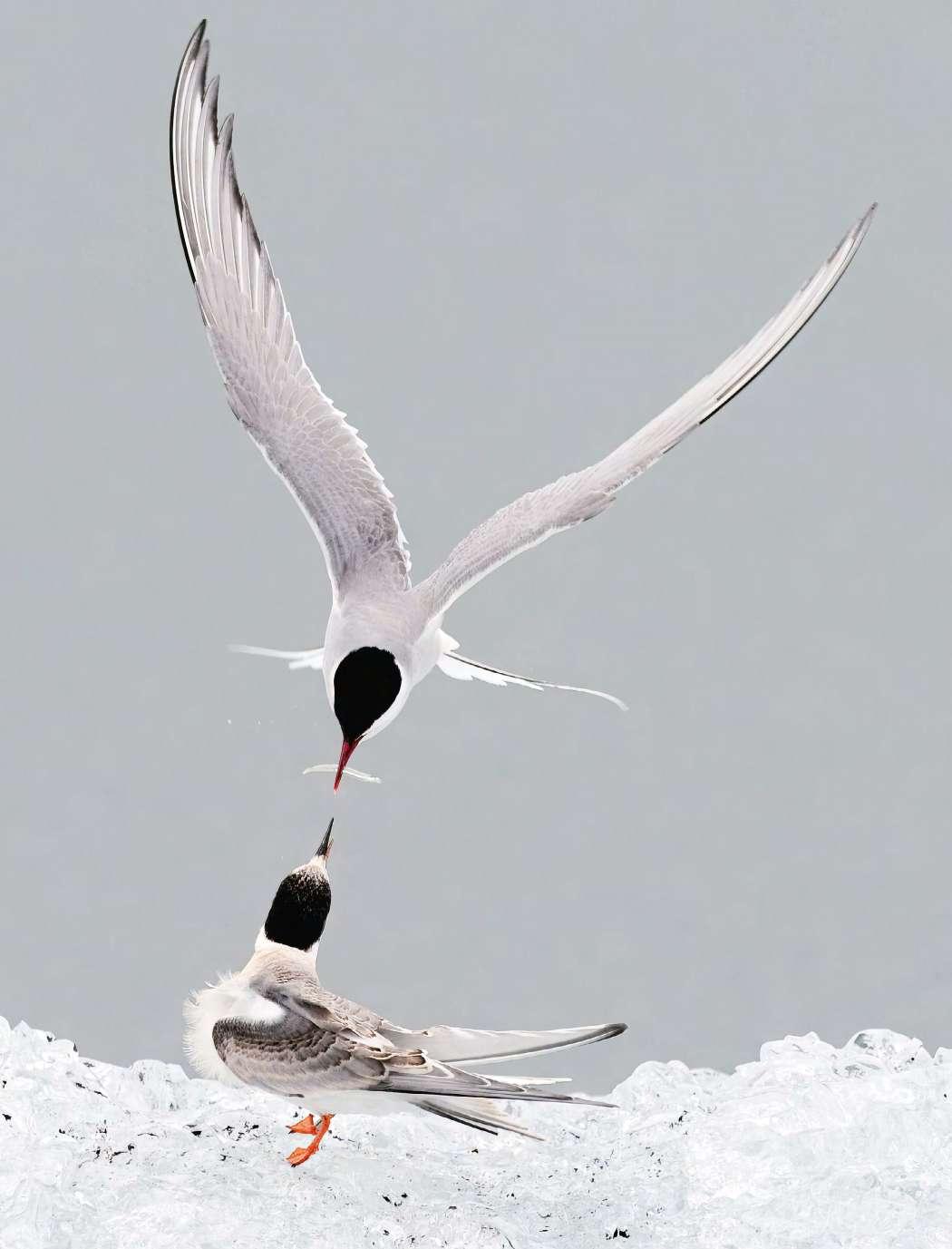
MAVA’s story has its roots in Luc Hoffmann’s early interest in nature, starting decades before the foundation was created.

Luc was born in 1923 in Basel, Switzerland, to a wealthy family. His grandfather, Fritz Hoffmann-La Roche, set up the pharmaceutical company Hoffmann-La Roche in the late 1800s and multiplied the family fortune through its success.
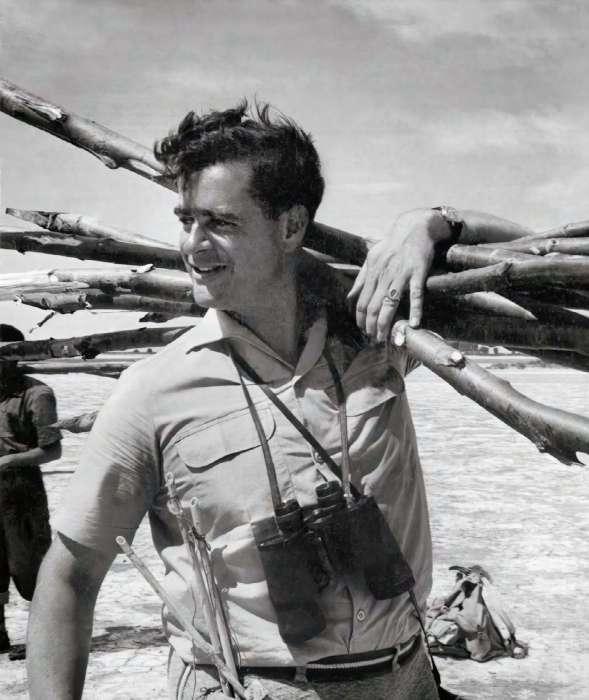
Hoffmann-La Roche’s growth contributed to Basel’s flourishing chemical industry. Luc focused his studies at boarding school around chemistry, as expected of the company’s heir, but soon discovered his passion lay elsewhere.
Luc’s habitual solitary walks and birdwatching expeditions provided ample opportunity to ponder his future. He eventually decided to pursue his love for the natural world by switching his studies to zoology, publishing his first academic paper at the age of 18 before beginning his further education in botany and zoology at the University of Basel. Luc was conscripted and a two-year stint in the Swiss Army interrupted his studies, but he returned to education after the end of World War II and completed his PhD in ornithology, studying the arctic tern. It is easy to understand how this fascinating bird captured his interest; it breeds in the Arctic region during the northern summer before migrating to the Antarctic coast for the southern summer, which is by far the longest migration known in the animal kingdom.
By 1948, Luc was in his mid-20s. Inspired by the unique environment of the Camargue, France, where the Rhône meets the Mediterranean, and concerned by the endangered greater flamingo population, he bought an old farm and its land at the Tour du Valat, an area within the Camargue, with the intention of making it his home.
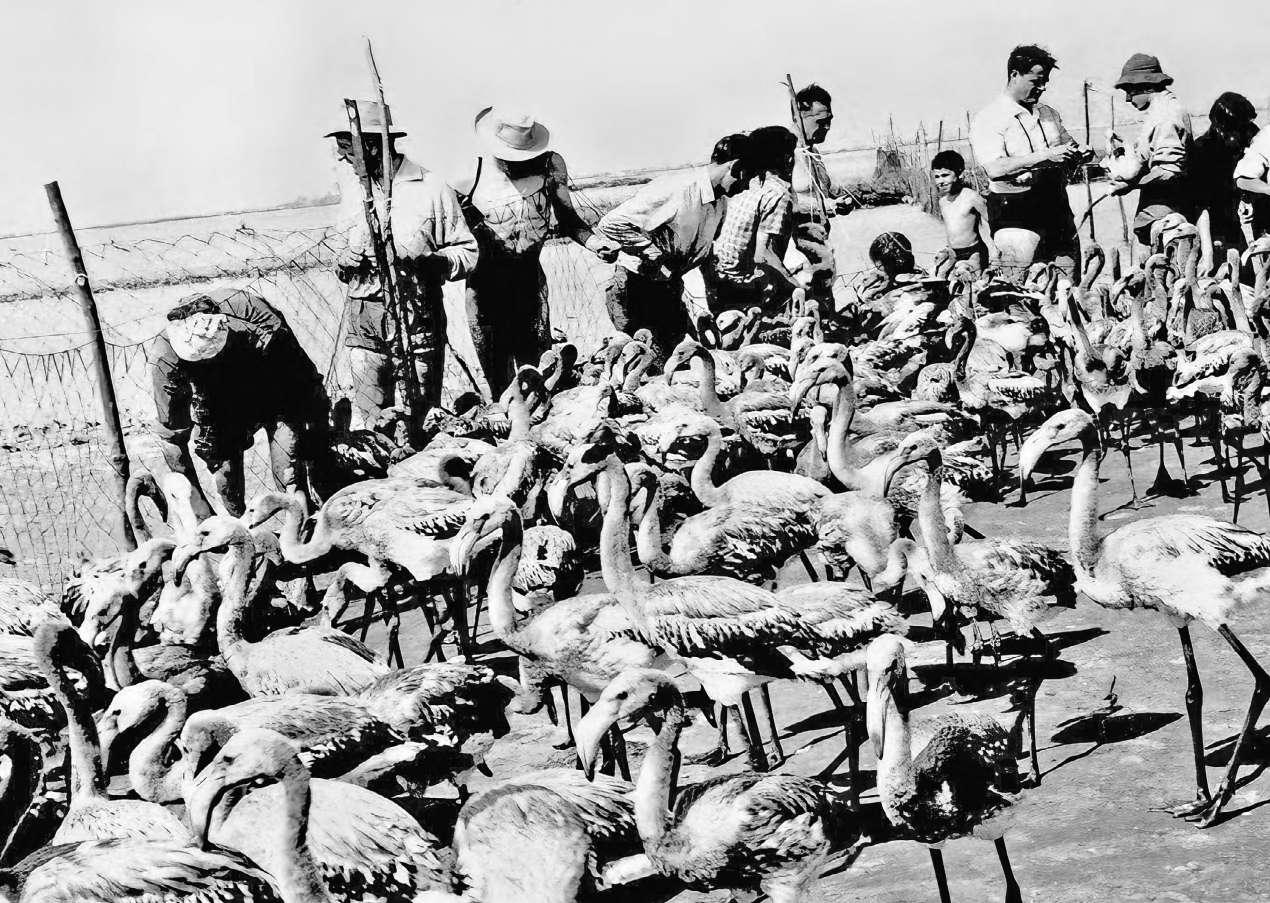
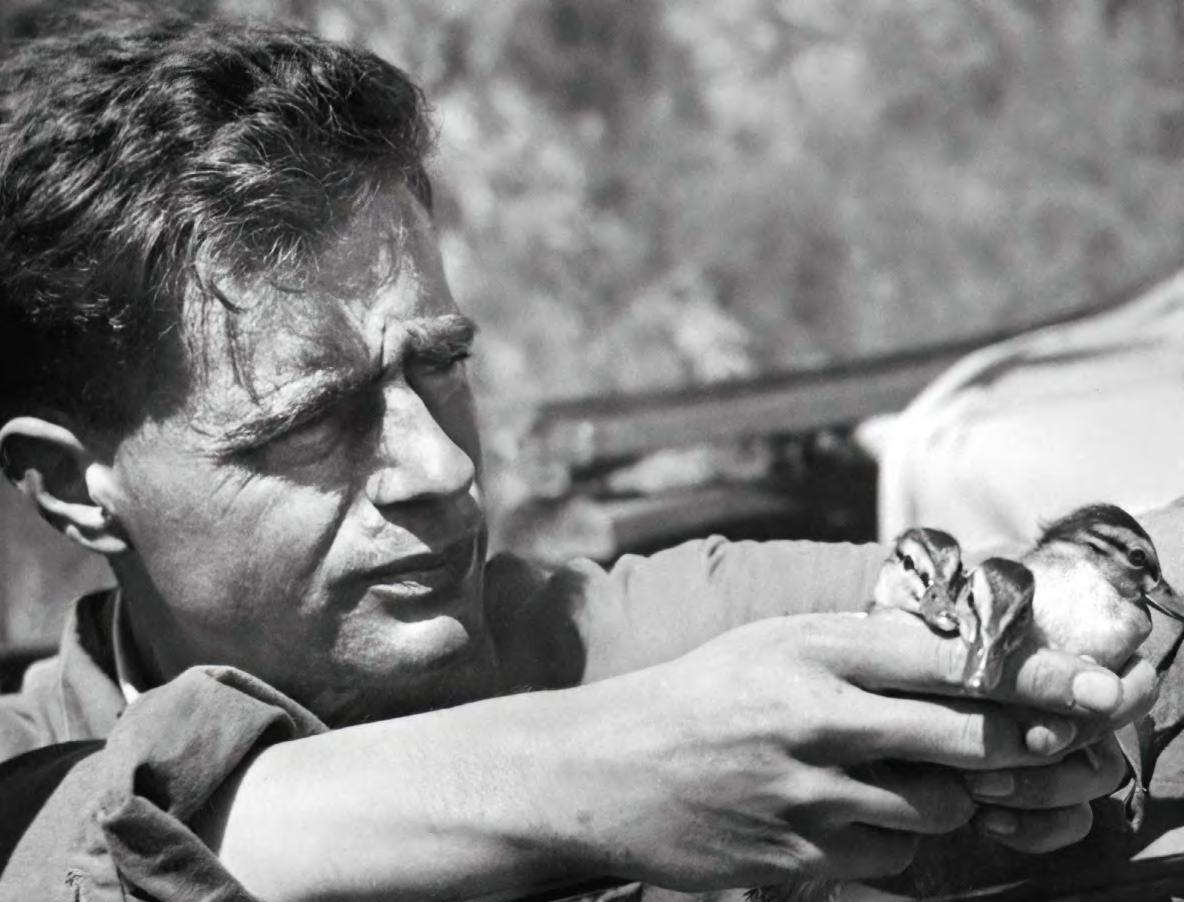
This 1,200-acre estate lacked running water or power but its location, surrounded by wetlands teeming with life, was a haven of peace. Its remoteness suited Luc, who was known for being quiet and private.
Despite his love of solitude, the area was too special –and fragile – for Luc to keep it to himself. He devoted himself to studying the populations and migration of the estate’s waterbirds, realising that they, as well
as the countless other species that called the Tour du Valat home, were threatened by planned urbanisation and agricultural development. In order to effectively protect the Camargue’s complex wetland ecosystem, he needed to better understand it.
Luc invited scientists and naturalists to visit and study the wetlands. The Tour du Valat’s reputation and number of visitors grew and it soon developed into a biological station, including the first permanent bird ringing centre in the area. From there, it gradually evolved into a renowned international research station, which has welcomed hundreds of biologists over the past seven decades. This continuity of action, which was relatively unique, was made possible by consistently available funding and Luc’s own tenacity, which was later translated into MAVA’s value of ‘persevering’.
Luc’s efforts to train, mentor, encourage, finance and connect the next generation of conservationists have resulted in the Tour du Valat’s alumni and their own mentees becoming responsible for protecting huge swathes of land across the planet.
Luc and his wife Daria raised their four children in a farmhouse on their estate at Tour du Valat. Their son André described growing up there as “certainly paradise. We had no electricity, we had no television, the central heating was finally installed the day I was born. I’m sure sometimes it was horrible and full of mosquitos, but I remember it being a communion with nature.”
Their daughter Vera agreed, saying, “It was an ideal place to grow up. It was so remote that my parents had to set up a community school for us. They hired
a teacher and we learned alongside the children of local farmers and fishermen, with all of us – aged five to 14 – learning together in one room.”
The location was isolated, but “the world came to us, ” as Vera put it. Biologists and naturalists of all kinds were in and out of the house during her childhood. She recalled being sent to the house of famed British ornithologist Sir Peter Scott to learn English, with her early English vocabulary unsurprisingly focusing on the names of different bird species.
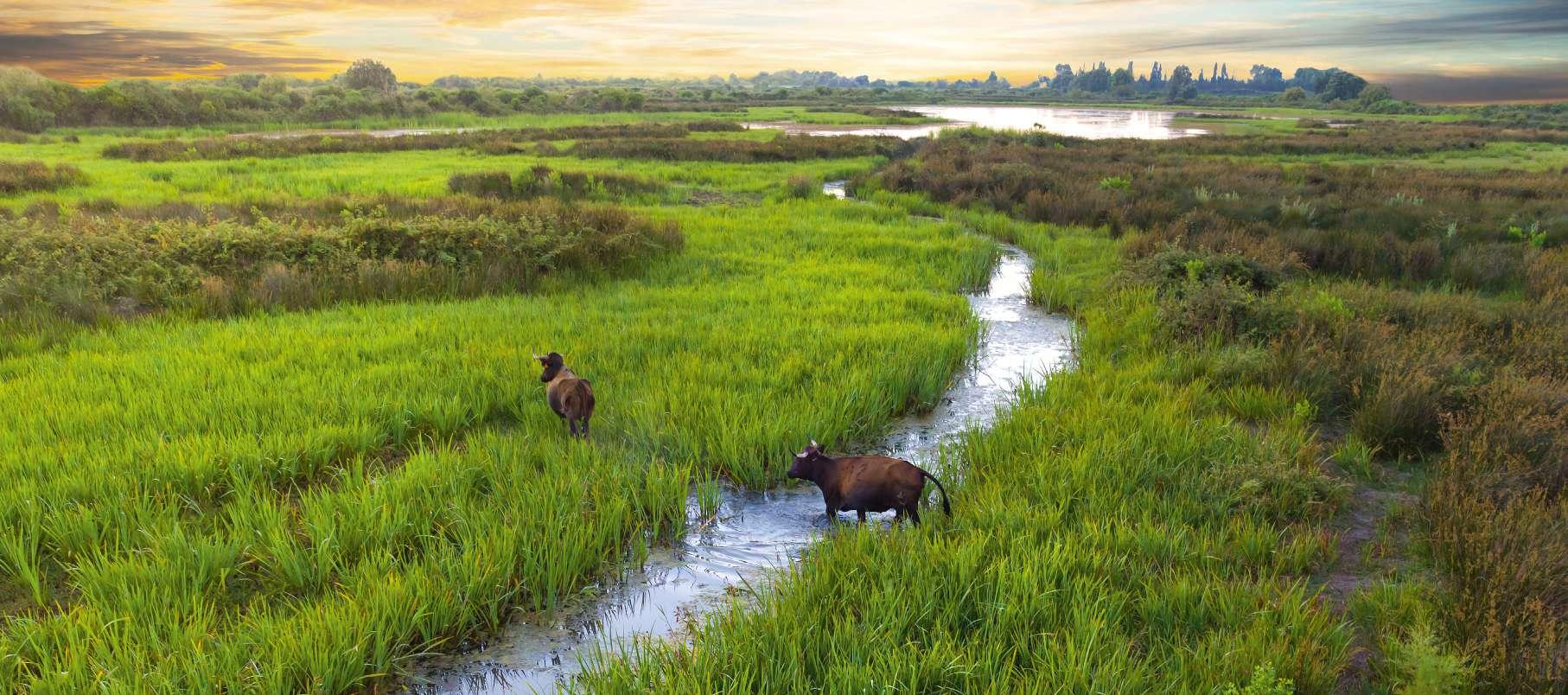
Luc was one of the first people to recognise the vital importance of wetlands like the Camargue in the natural world. In the 1950s, they were overlooked as ‘damp places with little to offer’ at best, or avoided as disease-ridden environments at worst. However, they are widely recognised today as extraordinary cradles of biodiversity. For example, more than 1,500 of the 4,700 flowering plant species identified in France are found in the Camargue, according to the Tour du Valat research institute. Wetlands provide sanctuary to wintering migratory birds, and breeding grounds and homes to countless other species. They also serve to mitigate the impact of storms and flooding. This transformation of perception was largely driven by Luc’s vision and tireless advocacy.
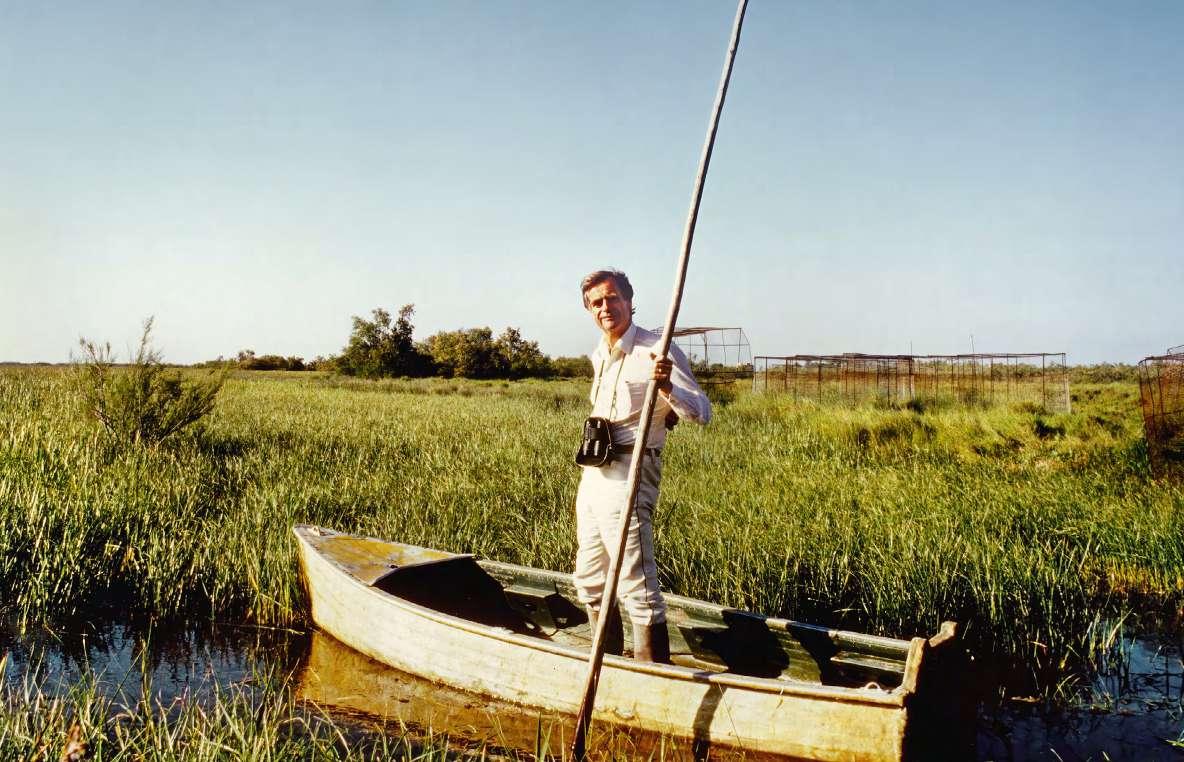
Much of Luc’s success in the Camargue, particularly in re-establishing the greater flamingo population, couldn’t have happened without the cooperation of local inhabitants. These people relied on the wetlands to support their unique way of life, including livelihoods like hunting wild boar, rice farming, salt farming and the manades, groups of semiwild Camargue horses or cattle led by herders or manadiers. Despite how embedded their lifestyles were with the natural world, certain inevitabilities such as flamingos eating crops were understandably unpopular with the Camargue’s residents.
Over time, Luc and his allies were able to show the local population how they would benefit from conserving the area, and how they needed to protect the ecosystem if they wanted to retain their traditional lifestyles. Luc’s motto of “with man, not against him” became a defining feature of how he operated. He passed this on to MAVA, as well as all the other organisations he created, which strove to always serve people and nature together.
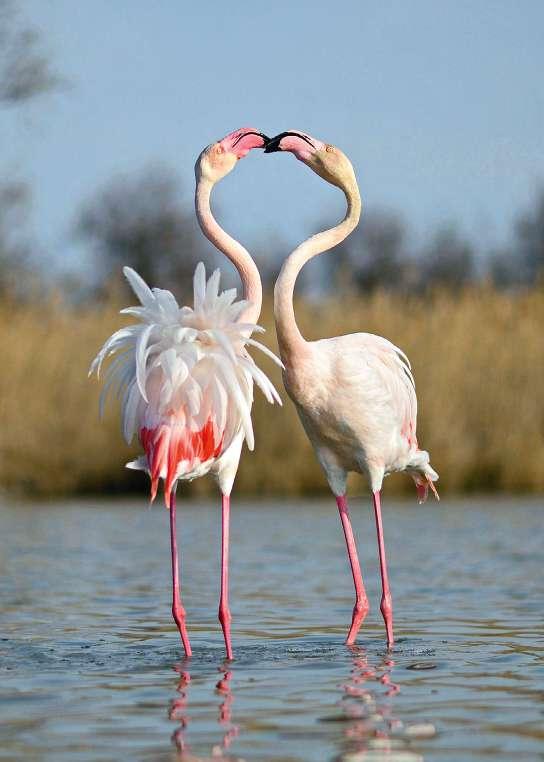
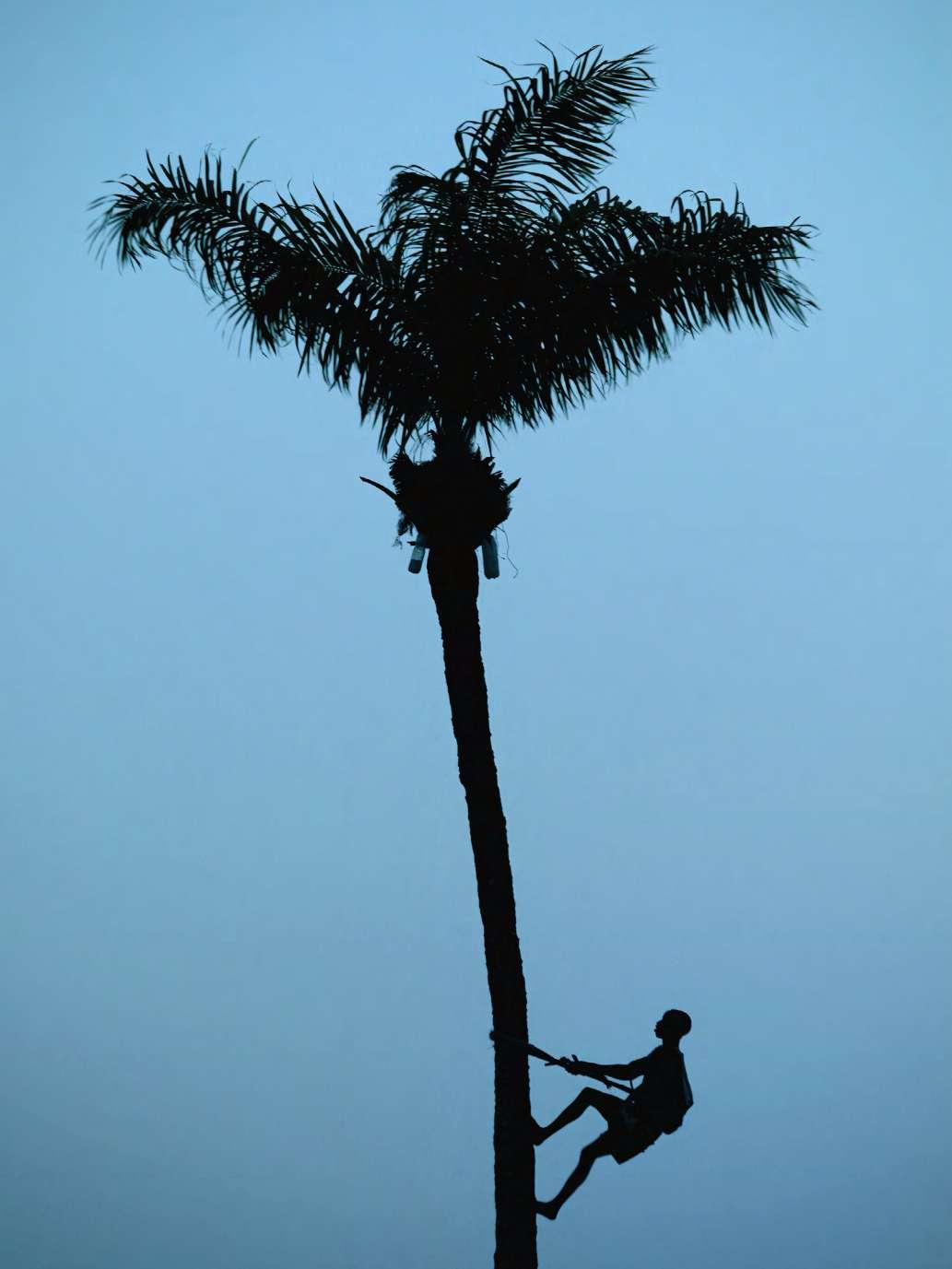
In the 1950s, when Luc’s work began, conservation as a concept was still in its infancy. The interdependencies of insects, fish, birds and plants with humans weren’t fully understood and ecology wasn’t widely regarded as a science, but as the niche pursuit of enthusiasts. As Luc explained in 2011, “I was convinced that ecologists had the duty to follow the evolution of ecosystems and preserve them from irreversible losses. At that time, conservation was generally seen as an activity antagonistic to economic development and the dominant view was that it should be confined to protected areas which were kept outside the general trends.”
Luc was instrumental in the global recognition of conservation as a science-based movement throughout the second half of the 20th century. He was a true pioneer with a clear vision and tireless generosity of spirit, who drove change across countries, continents and generations.
Luc firmly believed that conservation would only work if different groups joined forces to work together in partnership. With this in mind, he contributed to the founding of the International Union for Conservation of Nature (IUCN) in 1948, before later becoming its vice-president from 1960 to 1969.
In 1961, buoyed by his initial successes but ever-aware of the scale of the challenge, Luc helped co-found the
World Wildlife Fund (WWF) alongside conservationists such as Sir Peter Scott and Edward Max Nicholson, with the goal of forming an international body to serve and fund local conservation agencies. WWF has become one of the largest conservation organisations in the world, working in over 100 countries with millions of direct supporters. At its formation, Luc became Vice-president, mostly remaining in the background and making generous financial contributions that helped the organisation to grow into the conservation powerhouse it is today.
From 1947 to 1993, Luc dedicated much of his time and energy to the conservation of five sites: the Camargue in France, Doñana in Spain, the Banc d’Arguin in Mauritania, the Prespa Lakes in Greece, Northern Macedonia and Albania and the Bijagós archipelago in GuineaBissau. The stories of these special sites are told in more detail in the ‘Success stories’ chapter later in this book.
The Doñana National Park in Andalucia is a diverse, 140,000acre Spanish wetland home to the Spanish imperial eagle and the Iberian lynx, established in 1969 by WWF and the Spanish government as the fledgling WWF’s first campaign. Luc’s drive and financial backing was pivotal to the park’s creation, as was the leadership of the Spanish naturalist, José Antonio Valverde, whose two-decade campaign to protect the area was inspired by Luc’s success at the Tour du Valat.
Conservation is not the protection of nature against human development, but the preservation of lifesupporting systems and processes as a basis for lasting development.
Luc Hoffmann
In 1976, French scientist Théodore Monod convinced the Mauritanian government to create the Banc d’Arguin National Park (PNBA) to protect the vast coastal wetland that stretches along the Mauritanian coast. The park’s land and air provide a habitat for millions of birds, while its waters are bursting with marine life. In 1986, working closely with local authorities, Luc helped establish the International Foundation of the Banc d’Arguin (FIBA) to help manage and preserve the park against threats like overfishing.
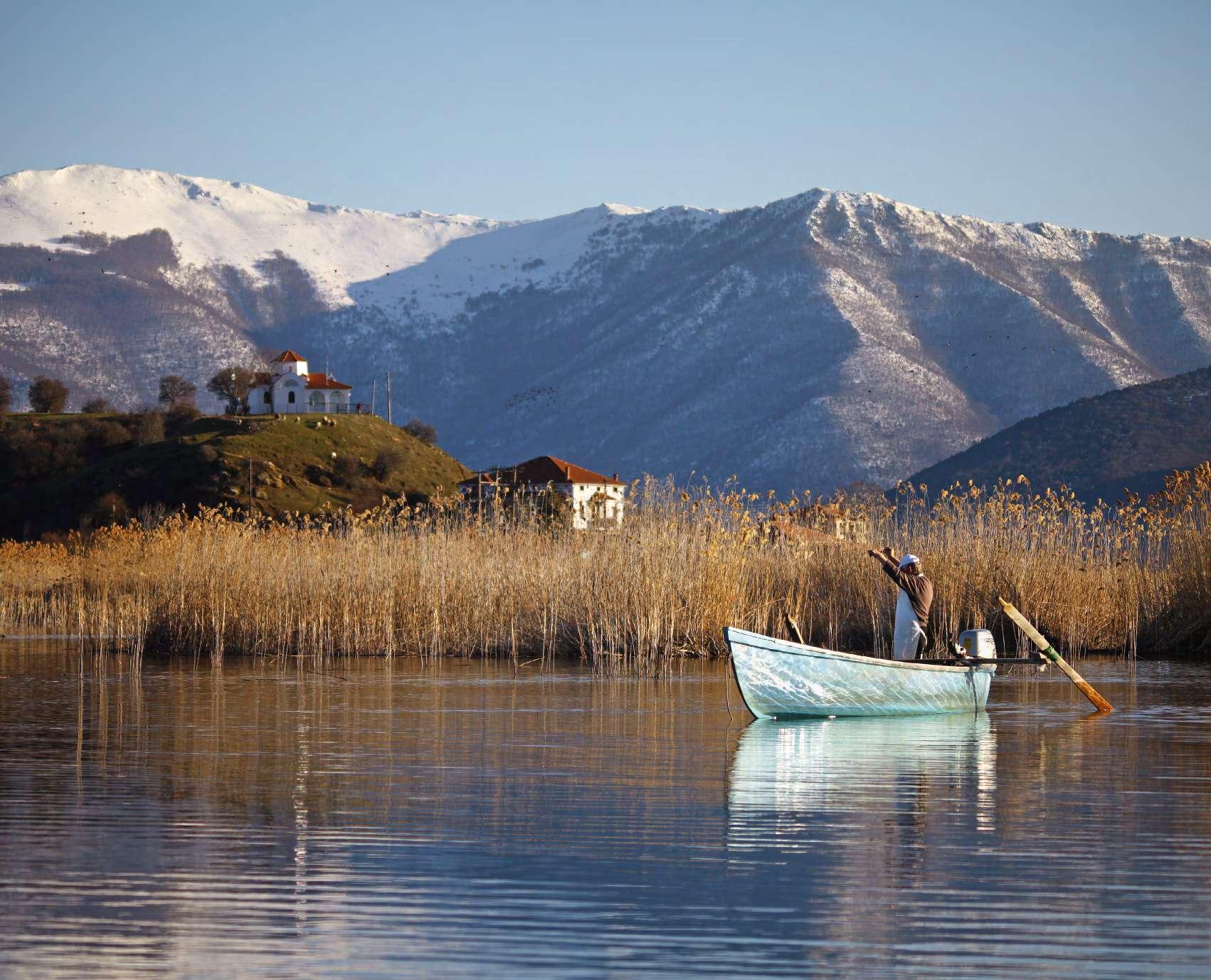
The Prespa Lakes have been officially protected since 1991 by the Society for the Protection of Prespa (SPP), but Luc’s relationship with the area stretched back to the early 1970s. His diplomacy and charisma were tested through engagement with the Greek military dictatorship and the Albanian and North Macedonian governments, but piece by piece, the SPP’s efforts were successful.
The last of MAVA’s iconic sites was the Bijagós islands of Guinea-Bissau in West Africa. In 1996, when UNESCO declared the archipelago a Biosphere Reserve, naturalist Pierre Campredon invited Luc to visit. He was immediately struck by the beauty of these 88 islands and the marriage between nature and culture exemplified by the lifestyles of the native Bijagó people. They were the islands’ best defence against the dangers of overfishing, tourism and oil exploration intensification. Using a regional approach embedded in local traditions and cultural context, a network of protected areas was created, which remains co-managed by the Bijagó people.
In addition to taking specific actions to protect each of these sites individually, Luc acted on a broader international level to encourage their preservation too. In 1971, he helped spearhead the Ramsar Convention for Wetlands of International Importance, the world’s first international environmental treaty. Today, it covers more than 170 countries.
In 1994, Luc created MAVA, Fondation pour la Nature, to tie together the threads of the conservation projects he had devoted his life to. Its name, based on the names of his four children, Vera, Maja, André and Daschenka, all raised in the farmhouse at the Tour du Valat, marks MAVA as a Hoffmann family endeavour from the start. Vera, Luc’s eldest daughter, was on the board from the very beginning, with Maja and André joining in 2008. MAVA’s generous funding was initially from Luc, but he later established a guaranteed income flow for the foundation via a beneficial interest in family-owned shares of Hoffmann-La Roche (which later became Roche).
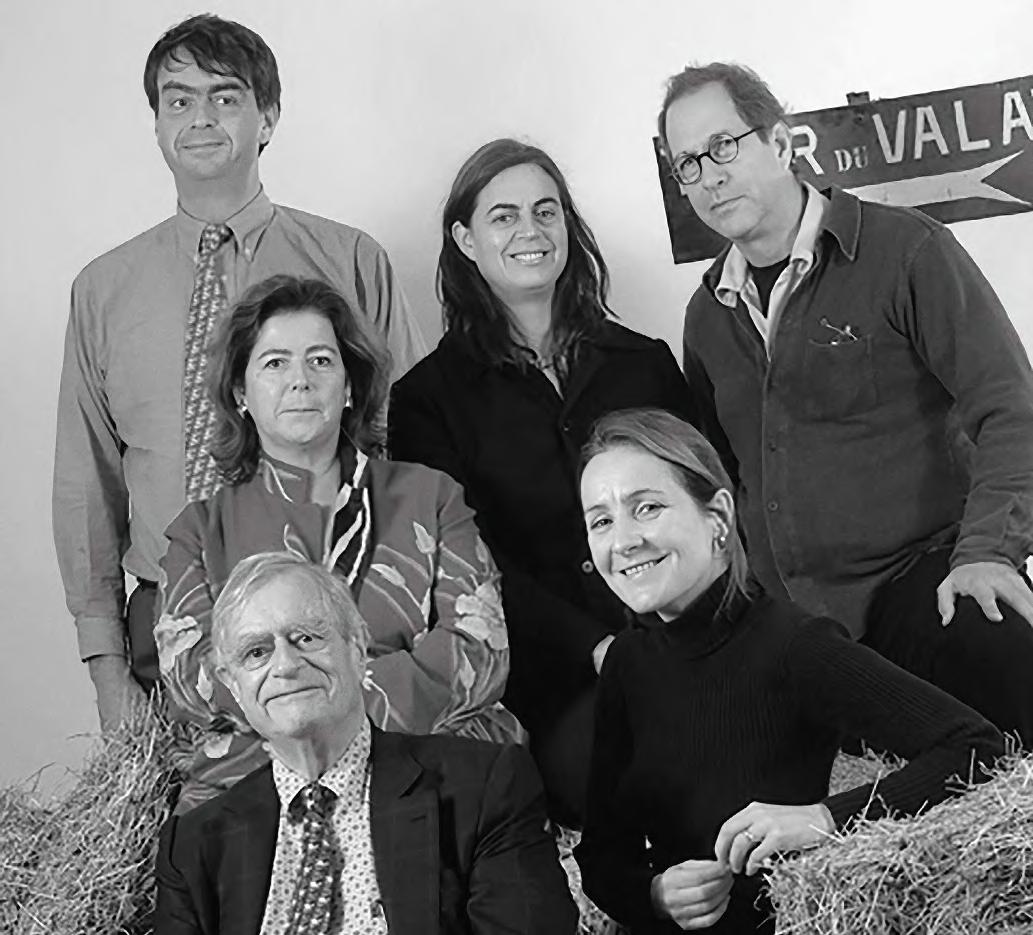
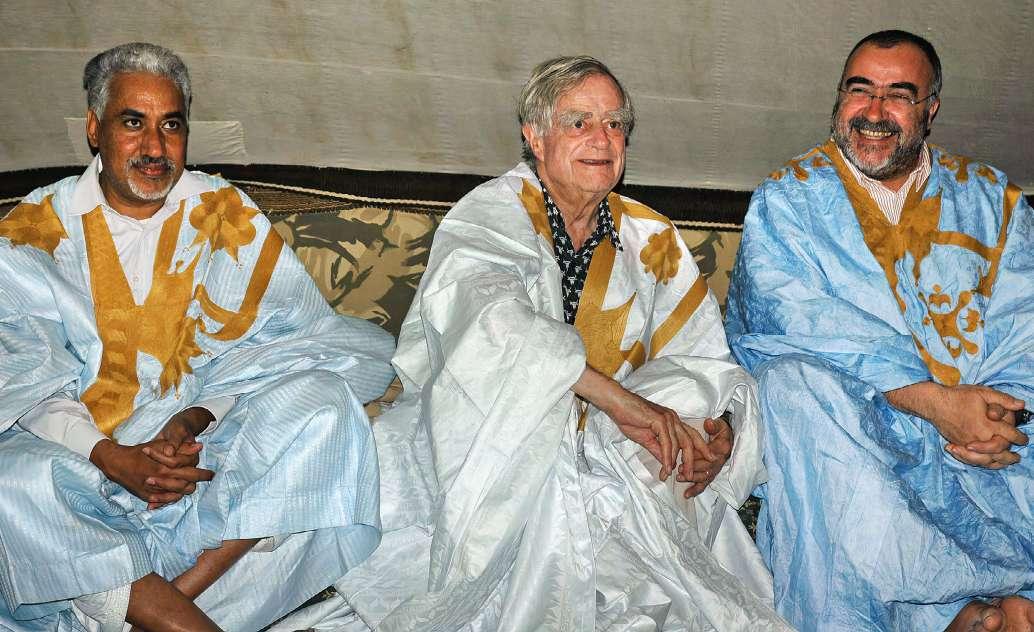
The creation of MAVA coincided with conservation beginning to be recognised more widely as an urgent concern, marking the beginning of Luc’s transition to a more formal way of operating. However, its beginnings were still relatively informal. The foundation was seen as an instrument rather than its own entity; a logical consequence of Luc’s many philanthropic projects and a convenient way of consolidating them.
Although many of its processes were informal, the early MAVA board created a framework to guide its actions based on Luc’s motivation and pragmatic vision which remained a guiding force throughout its lifespan. It included priorities of threatened species
and ecosystems, followed by the conservation of landscapes and sustainable management of nature, without excluding the fight against pollution and reducing the waste of resources and energy. The framework also included specific geographical criteria, focusing on the Mediterranean, West Africa and Switzerland, and guidance on providing funding quickly to urgent projects.
MAVA’s early successes relied heavily on Luc’s personal vision, commitment, network and wisdom. Its first board was mostly composed of Luc’s old friends. They made regular visits to project sites and jointly decided whether to grant funding to new projects, making their decisions based on intuition and personal expertise rather than a broader formal strategy.
Luc’s longtime collaborator and close friend Jean-Paul Taris became MAVA’s Director General in 2005 and remained so until 2010. Jean-Paul was an experienced
and celebrated conservationist who held many different conservation roles throughout his lifetime, including at the Tour du Valat.
Most of MAVA’s partners in this early stage also had close ties to Luc, such as WWF, IUCN, the Tour du Valat Biological Research Station, FIBA and the SPP.
A notable success during this formative period was the creation of the Regional Partnership for Coastal and Marine Conservation (PRCM) in 2000, which refers to a coalition of organisations working on West African coastal issues across seven countries. MAVA helped design this structure with the goal of improving collaboration between non-governmental organisations (NGOs) in West Africa that were all working towards separate agendas and sometimes at cross-purposes. Today, PRCM brings together people working in all areas of marine conservation, from donors and investors to researchers and ministers. Collectively, they network, fundraise, strategise, advocate and innovate.
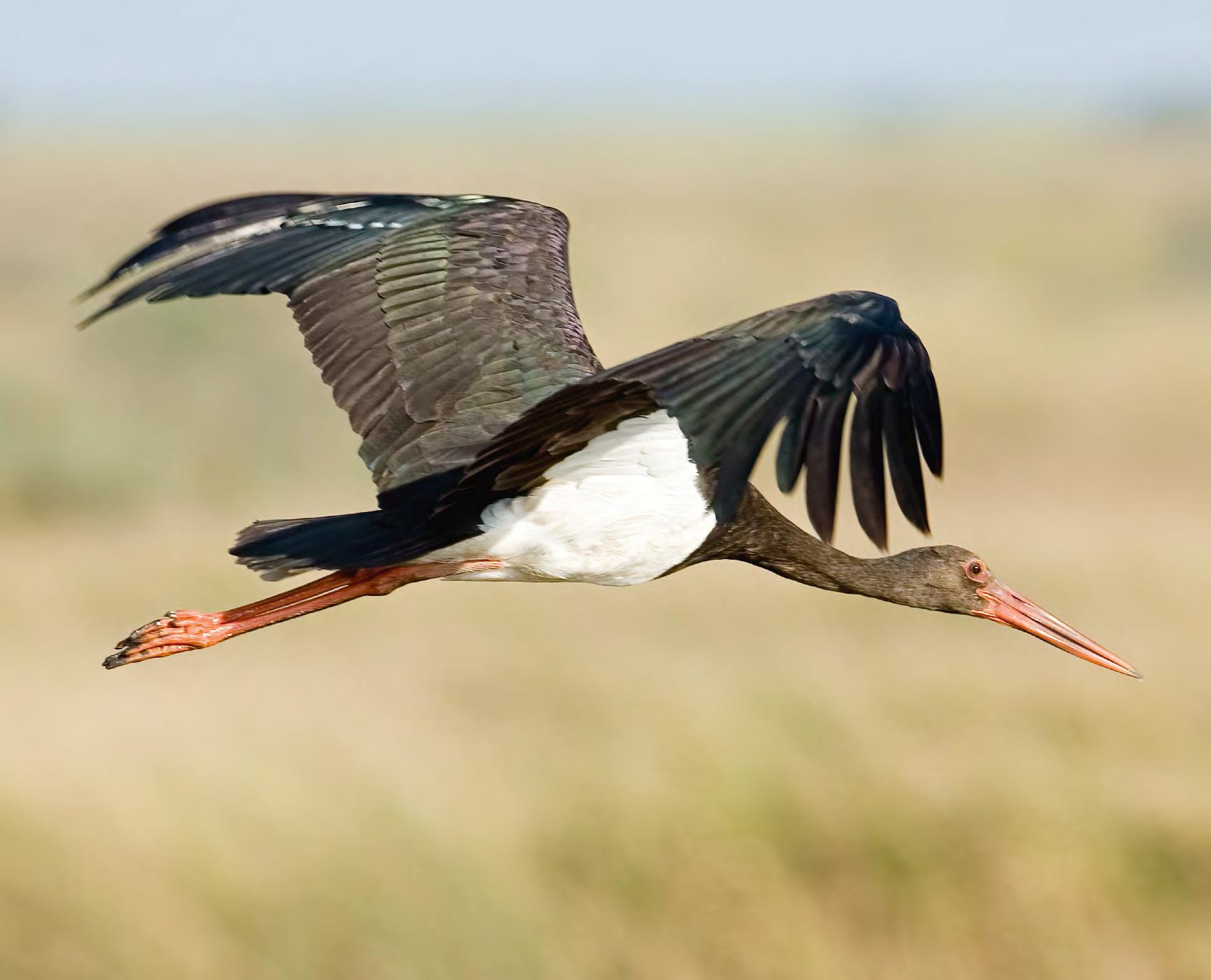
The recruitment of Holger Schmid in 2005 as an administrative and technical officer marked the birth of the MAVA secretariat and the first step towards true professionalisation. MAVA was still operating from Luc’s house in Montricher, Switzerland, as it would be for many more years, but the team – and therefore the scale of its actions – began to grow.
In a long-term relationship typical of MAVA’s staff, Holger remained with the foundation until 2022, managing both its Switzerland and Sustainable Economy programmes at the time of closure. Holger’s memories of MAVA in the early days are in stark contrast with the foundation’s endings. He remembers sharing an office with Luc, working through renovations with papers covered in dust and the milestone of installing the foundation’s very first official phone line, allowing him the opportunity to interact directly with partners.
During this phase, MAVA began to develop a sharper strategic plan as part of its efforts to strengthen its secretariat and governance. The strategy introduced a region-based approach, initially focusing on Mediterranean and West African wetlands alongside a presence across the Alpine Arc. The team began looking for credible partners already executing conservation programmes in these regions.
MAVA was becoming so well-known in the conservation world, not only in Europe but also beyond, that its team was soon inundated with funding requests – appropriate and otherwise. This was challenging because each request required a thorough review process, ending with funding decisions being voted on by board members. The introduction of MAVA’s increasingly targeted strategy
helped filter through requests so that staff and board members could focus on projects of interest to the foundation instead of rejecting proposals.
At this point the board decided to expand the team, hiring two additional programme managers, Thierry Renaud and Paule Gros. Holger, Thierry and Paule were each charged with managing the portfolio of projects for one priority region.
As MAVA went from strength to strength, discovering Luc’s plan to permanently close its doors in 2022 often surprised people. This end date was not wellknown or widely discussed throughout much of the foundation’s existence.
Luc’s intention had always been to finance the foundation’s spending through dividend payments from Roche in a 25-year arrangement. MAVA was designed as a vehicle for Luc’s passion and a tool to achieve his dreams. He wanted his family to pursue their own philanthropic interests without being forever tied to his.
A key milestone arrived in 2009 through the creation of the Banc d’Arguin and Coastal Marine Biodiversity Trust Fund (BACoMaB). As the first conservation trust fund in West Africa, BACoMaB was an innovative sustainable funding mechanism created to protect coastal and marine biodiversity in Mauritania.
MAVA’s partner FIBA played a vital role in the creation of BACoMaB, with FIBA’s Director General Sylvie Goyet particularly instrumental. A collaboration between MAVA, German KfW Development Bank, the Fonds Français pour l’Environnement Mondial (FFEM) and the Agence Française de Développement (AFD) provided funding to secure the long-term future of this jewel in West Africa’s conservation crown.
This was followed later by the establishment of other trust funds such as the Prespa Ohrid Nature Trust and BioGuinea Foundation.

A major turning point for the foundation was in 2010 when André Hoffmann took over from his father as MAVA’s President and Lynda Mansson was hired as Director General. Luc remained on the board, attending meetings until he passed away in 2016 at the age of 93. As André’s understanding of conservation evolved, he came into his own as a leader, shaping MAVA’s strategy around his own vision of effective philanthropy.
Rather than biology, André’s background was in business. The combination of his childhood in the Camargue with his corporate experience provided a unique perspective on conservation. His approach to the presidency naturally differed from his father’s, but his commitment was just as strong.
André’s vision was to contribute to the creation of a more sustainable global economic system by directly mitigating the root causes driving biodiversity loss; often human
André HoffmannIf you destroy nature to make a profit, then you are creating the problem that you then try to solve with philanthropy.
factors like lack of employment opportunities and poverty. He saw a huge role for the business community in creating this crucial change, rather than continuing to create problems that conservationists were left to solve. In André’s words, “If you destroy nature to make a profit, then you are creating the problem that you then try to solve with philanthropy. So, you need to be much better at sensibly making money, rather than making money at all costs.” He believed it was unacceptable to make a philanthropic donation to balance the scales after the damage was done; and devoted himself to changing the system.
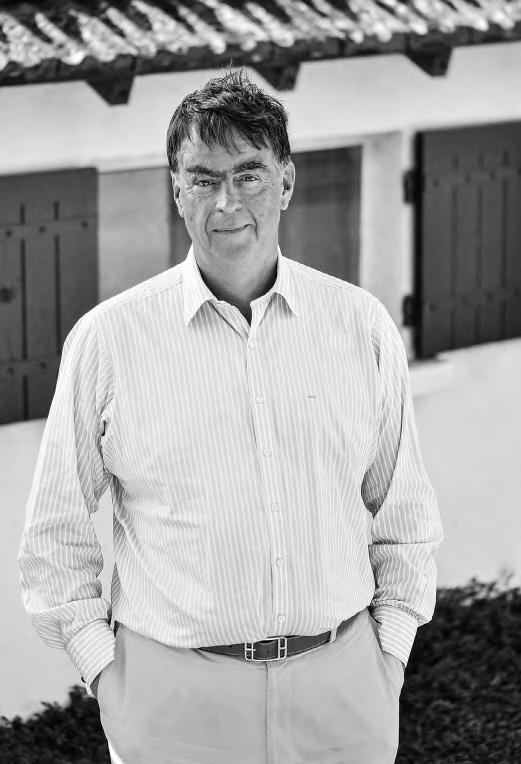
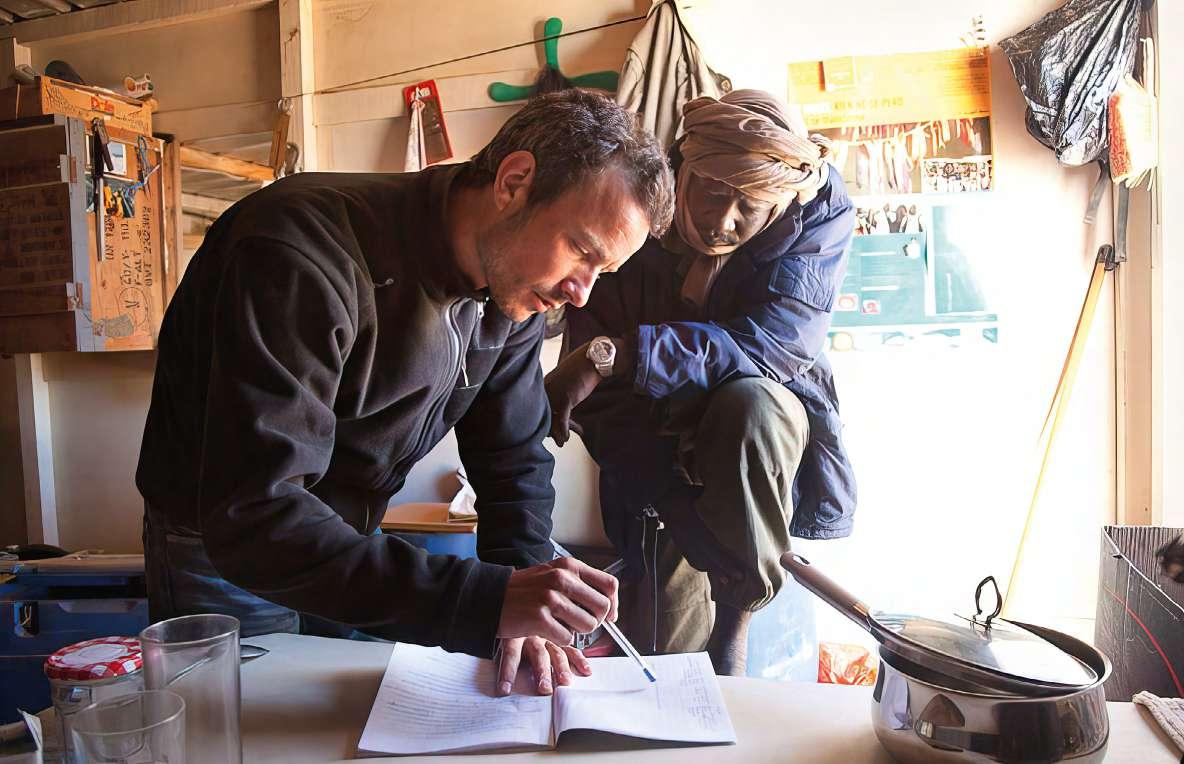
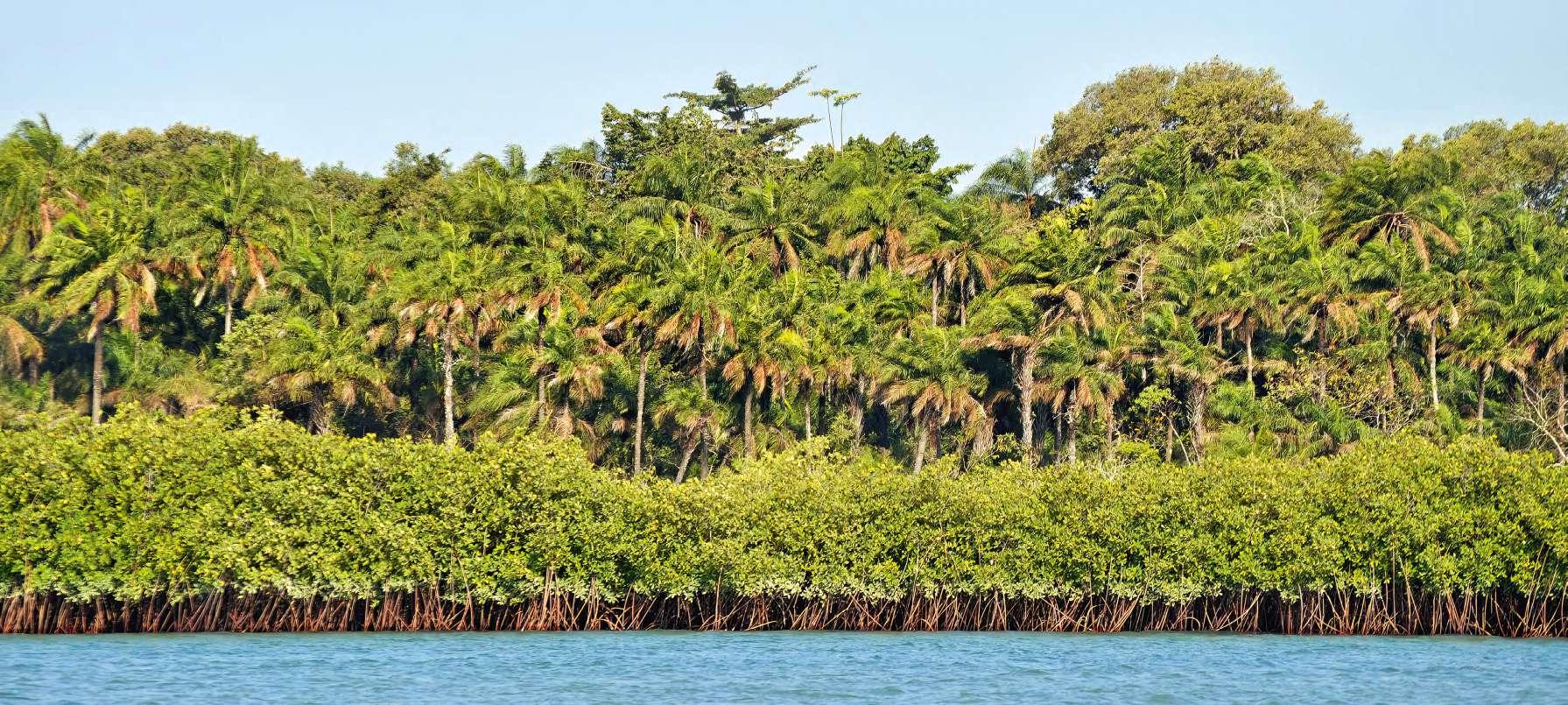
André and Lynda’s objective was to continue professionalising MAVA and focus its work in three specific areas: the conservation of biodiversity and ecosystem functions, the management and sustainable use of natural resources, and a strong and effective conservation community. They were supported by a refreshed cast of board members chosen for their relevant experience. The board’s role also changed from decision-making to strategic oversight.
Soon after her arrival, Lynda introduced many changes at MAVA, including more focused fiveyear strategies for each programme and changes in selection criteria and decision-making procedures within the team. She remembered being struck by the loose processes in place, but the challenge of improving them excited her. “It was like a startup, but you had the money and the reputation and the staff. It was a great situation for a new Director and fun to be able to shape it into a more structured and streamlined organisation,” she explained.
Lynda also transformed the role of MAVA’s staff, especially the programme team, which by this point had grown to eight people, whose skills and experience had developed far beyond the existing scope of their roles. Lynda utilised her experience in leadership development to prepare the programme managers to take on larger roles and become more autonomous. The level of decision-making capacity and empowerment she introduced to the team wasn’t commonplace in foundations like MAVA, but the benefits were significant, taking staff from strength to strength professionally while enabling MAVA to become more agile.
The programme team later described how this overhaul made their jobs more challenging, but also immensely more creative and rewarding. Paule Gros, who was hired in 2009 and became Director of the Mediterranean Basin Programme and later the Head of Strategic Partnerships, recounted, “We had to adapt and to develop new capacity, new attitudes, new approaches, all the time. I loved that challenge and finding myself equal to it.”
Thierry Renaud, Director of the Impact & Sustainability Unit, said of this period, “This transitional phase was conducted at full speed, with a resolute focus on the future and great enthusiasm. The confidence of the board and the empowerment of the team profoundly changed our roles, opening up professional perspectives that each of us still capitalises on today!”
This period was also transformative for MAVA’s administration, finance and communications staff. For example, when Rachel Sturm, MAVA’s Director of Administration and Finance, joined in 2010, she created, with the help of an intern, a sophisticated Excel sheet to collate all the information about MAVA’s grants for the first time. This developed into a custom-made project administration tool, created in collaboration with the company Aid Impact.
Alongside this profound growth and development, staying true to Luc’s original vision remained a priority. The board and staff resolved to precisely define MAVA’s values and settled on four: empowering, flexible, unifying and persevering. Paule described this as “trying to download Luc’s mind, whereas previously we did everything based on his vast knowledge and experience”.
As MAVA’s funding and influence increased, the foundation professionalised partly by design and partly by necessity. It had grown into one of the world’s largest grant-making environmental foundations. With a sizeable annual budget, rigour
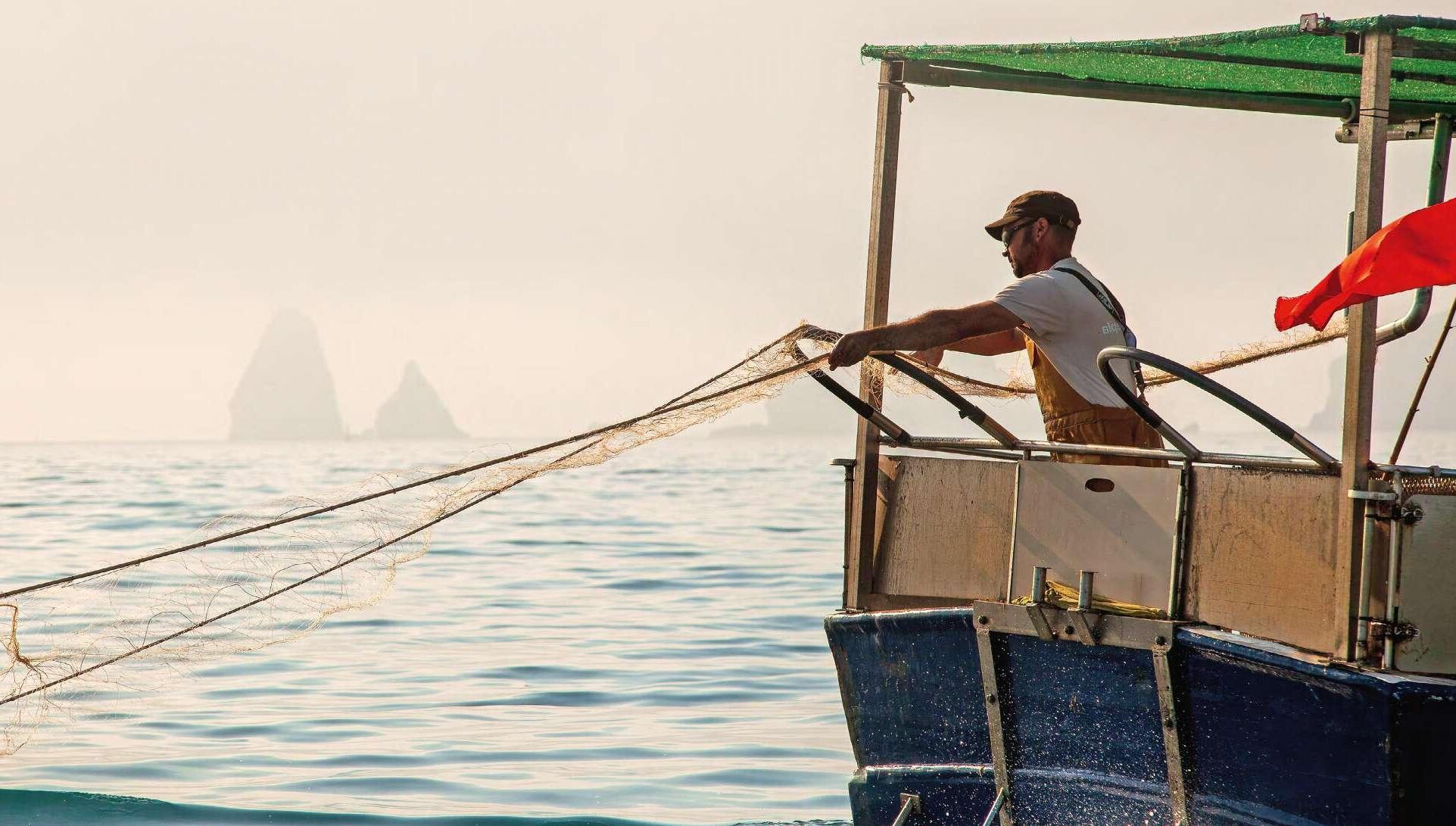
was necessary to make sure all the funding went to good use.
As such, MAVA’s regionspecific programme areas, the Mediterranean Basin, Coastal West Africa, Alpine Arc and Switzerland, were formalised in 2010, joined in 2014 by a cross-cutting Sustainable Economy Programme introduced by André.
We were trying to download Lucʼs mind, whereas previously we did everything based on his vast knowledge and experience.
Paule Gros
André and Lynda both had backgrounds in economics and business which lent a fresh perspective to MAVA’s
approach to conservation, including delving deeper into solving the root causes of conservation issues. André’s interest in the relationship between biodiversity loss and socio-economic issues like lack of sustainable job opportunities and exploitative business practices grew and he wanted to explore how MAVA could contribute. He summarised this realisation simply: “We will not protect nature if we don’t look at humanity first.”
The new programme area was a gradual transition that arose from a period of learning, testing and pilot projects. MAVA explored opportunities and gained knowledge on the subject before deciding to make Sustainable Economy an official pillar of its programme areas going forward, led by Holger.
The MAVA team also moved from Luc’s house to an office space in the IUCN building in Gland, Switzerland, surrounded by conservation organisations. In a radical culture shift, the foundation began communicating more transparently and actively about its priorities, criteria and actions, which also helped attract the right kind of partners and somewhat stemmed the flow of speculative applications.
Suzanne Amrein, MAVA’s Executive Assistant & Head of Communications, described, “When I started at MAVA in 2011, one of my first tasks was to create a brand new, inspiring and lively website that would answer the evolving need to communicate through the internet. I didn’t know anything about websites back then and didn’t have a clue how to start! From finding background information, powerful images, or interesting facts and figures – everything was new. The website ended up being a beautiful tool and it was the first time we communicated openly and transparently about MAVA’s activities. Although we had nothing to hide before, this was a big step forward for the foundation to show itself openly to the whole world.”
A period of adjustment was required for all stakeholders to adapt to MAVA’s rapid transformation. Staff needed to evolve with the many changes in processes and responsibilities. There was a need to gently align the differing visions of Luc and André on how best to achieve the mission, and partners needed to learn a new way of interacting with the foundation.
Holger, as MAVA’s longest-serving employee, reminisced about the jarring difference between sitting at Luc’s table at home allocating funding with a few friends, to being in an office surrounded by a team, while being personally responsible for a significantly larger budget in his programme area
than the entire foundation’s budget when he first began, describing it as “an explosion of resources and capability”.
In terms of experience, knowledge and administrative standards, the transition positioned MAVA as one of the leading conservation foundations. Naturally, this process required a considerable degree of adaptation to change from staff, board and partners.
This growth and structural adjustment necessitated recruiting a team of conservation experts as programme directors and managers. These new hires began assembling a coherent portfolio of projects to sit under the high-level objectives defined in the strategy. Staff continued making regular field visits
to forge and maintain close relationships with MAVA’s increasingly long list of partners, still an important component of how the foundation operated. Their internal relationships were close too; the office was a joyful place full of laughter with a team who enjoyed spending time together.
In 2015, MAVA merged with its West African partner, International Foundation of the Banc d’Arguin (FIBA), resulting in many FIBA staff joining MAVA. Lynda explained, “This was a big decision that ultimately made sense for both parties, especially because MAVA was starting to consider the reality of its sunset clause and what its legacy would be.”
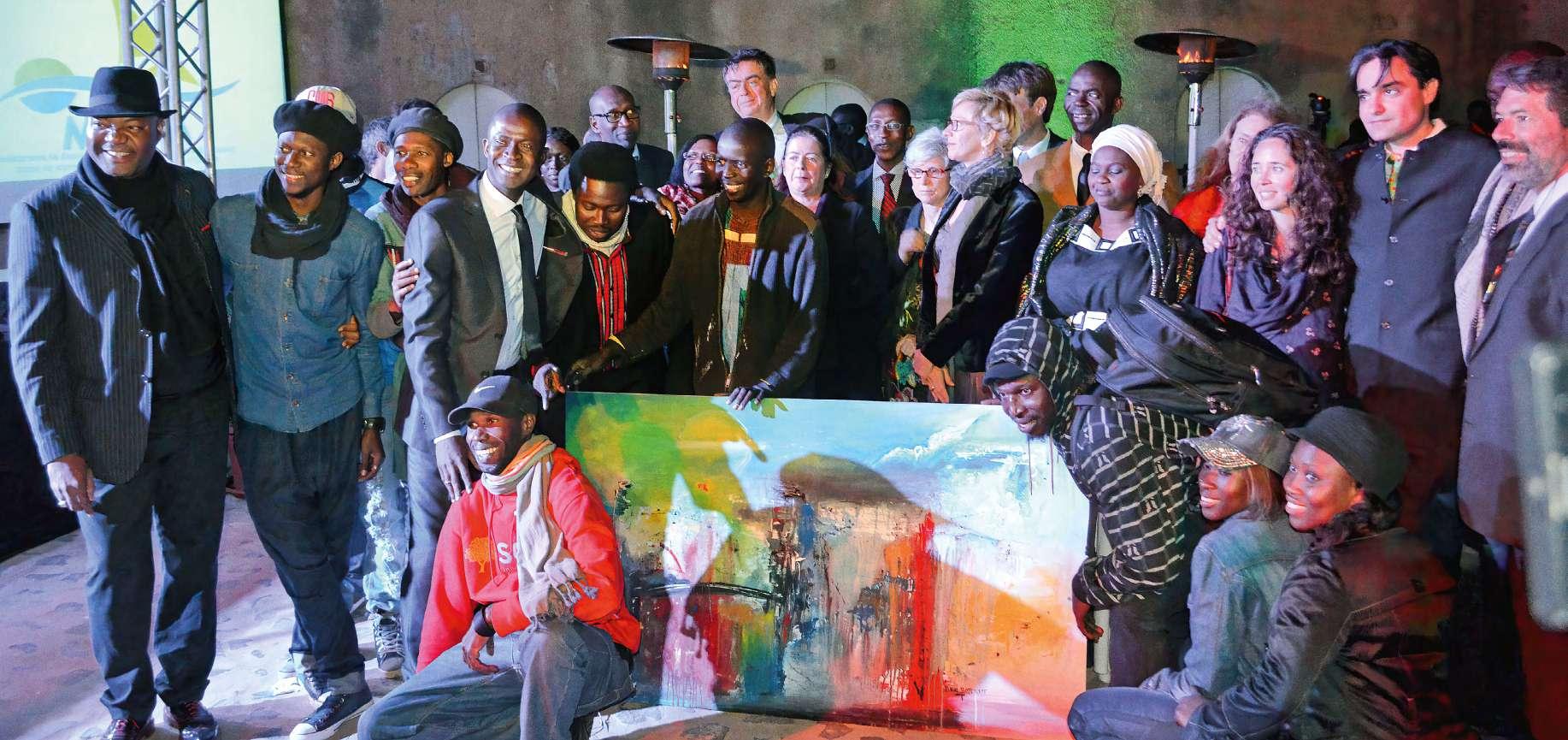
MAVA’s goal was to create a strong, resilient community of organisations to continue important conservation work in its focal regions, but the continuous and intensive engagement required for
its West African projects meant the small team in Switzerland was reaching its operational capacity. FIBA, on the other hand, was struggling to define its future. Aware that funding from MAVA would cease seven years later, it had nurtured a network capable of taking on much of its traditional work.
The merger united their respective strengths: FIBA’s well-honed capacity development, organisational strengthening skills, presence on the ground through its location in Dakar, and extensive experience in the region were a natural complement to MAVA’s expertise, convening power and financial resources.
Charlotte Karibuhoye, director of MAVA’s West Africa programme and later Head of Strategic Alliances, spent 10 years at FIBA before the merger. She recounts that “The biggest challenge for FIBA staff post-merger was learning to take a step back from hands-on work and act through partners. We used to be implementers, so we really had to learn to let other people ‘do’.”
Simon Mériaux, Impact & Sustainability Manager at MAVA, who was originally part of FIBA, concurred: “When I joined MAVA from FIBA, I passed from directly implementing projects to ‘wearing the donor’s hat’. At the same time, it was also an amazing opportunity to work with many more partners from different geographies.”
Nathalie Cadot, who worked alongside Simon as an Impact & Sustainability Manager and also moved across from FIBA, explained, “This merger option was also very positive for FIBA’s partners as it brought them closer to MAVA, which was already funding more than 90 per cent of FIBA’s projects.”
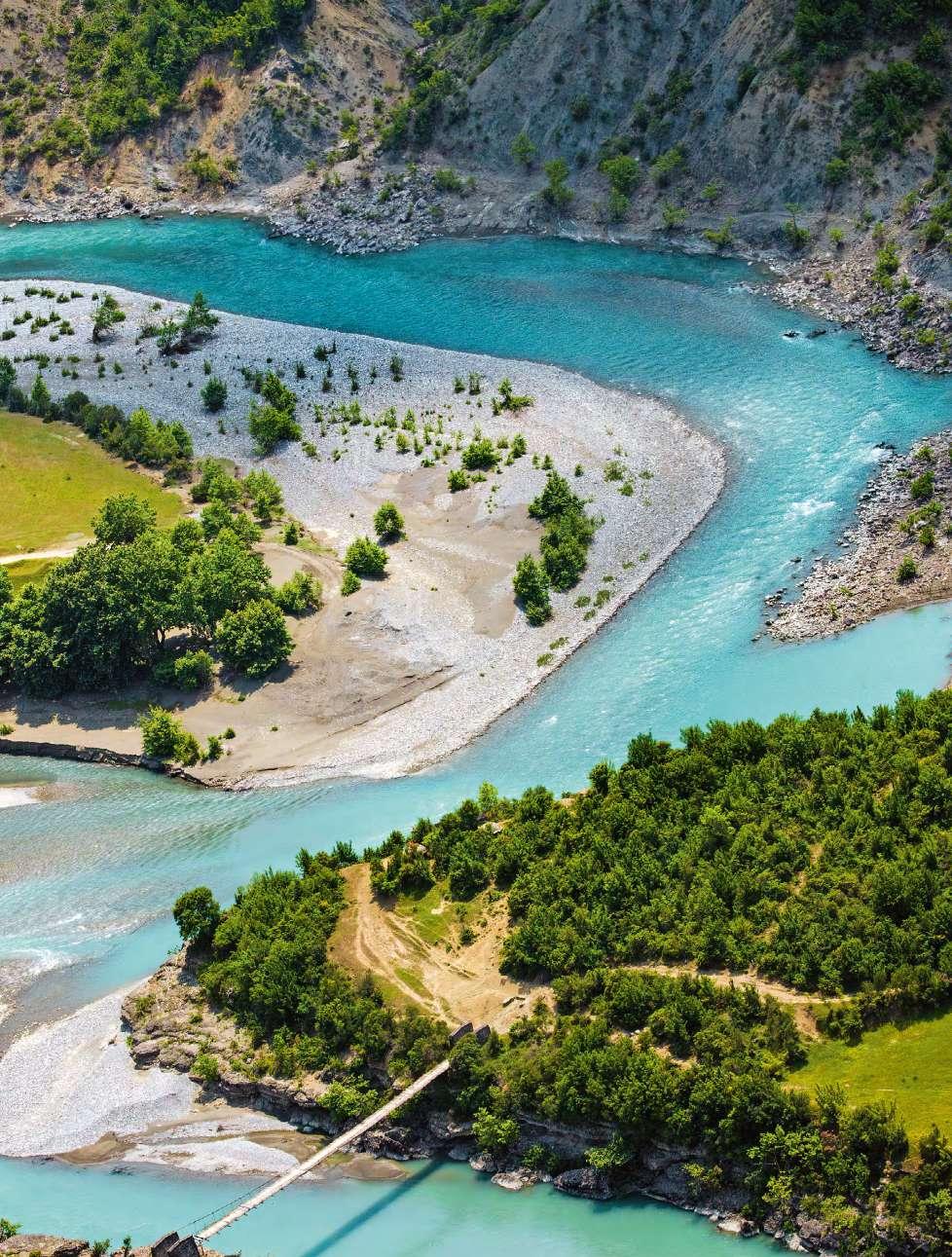
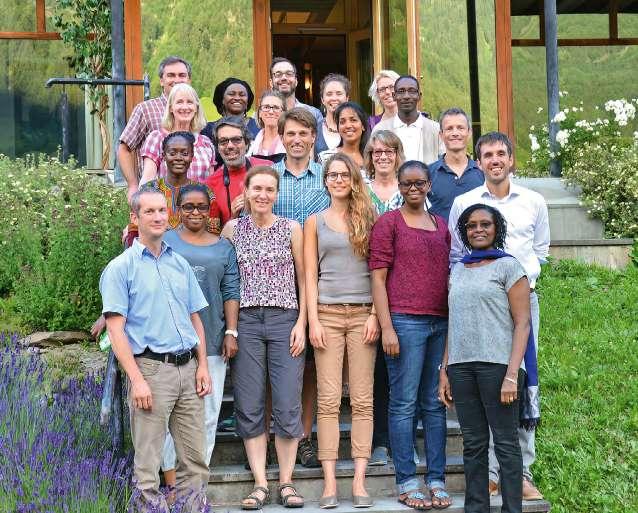
Following the merger’s completion, MAVA absorbed most of FIBA’s staff, expanding the team from nine to 21 people, with 11 based in Dakar, Senegal. The newly enlarged MAVA staff united for a series of discussions and workshops to co-create its future and plan how to consolidate the group, despite the distance between Switzerland and Senegal. Lynda said of this period, “We were creative and sometimes radical in rethinking how we worked. We designed an ideal way of interacting with each other across offices and thought of ways to reduce the workload of staff while accomplishing more. Overall, this created a sense of solidarity and involved everyone in shaping the future, laying the groundwork for a very high level of joint ownership within the foundation.”
During this period of change, the family board membership also saw some changes. In addition to André, Vera and Maja, André’s wife Rosalie joined in 2011 and their son Fred followed suit in 2015. Fred was in his early 20s when he became the first member of the third generation of Hoffmanns to join the MAVA board. He was a valuable new addition, bringing a fresh perspective to challenge established assumptions.

In 2016, a new strategy and the final phase of MAVA were locked into place. The strategy focused on meeting biodiversity challenges by achieving specific outcomes. In addition, more emphasis was placed on enabling MAVA partners to continue having an impact in conservation after its closure, while also providing an exemplary transition for partners and staff.
The knowledge that only six years remained of MAVA’s lifespan sharpened the team’s focus in a way that Paule described as “a great luxury”. They began a final push to make as much impact as possible and to prepare their partners, in the knowledge that a successful closure would secure partners’ past achievements and ensure their essential work could continue without MAVA. The foundation communicated broadly about its closure during this period, with partners reacting differently to the announcement and keen to understand what it would mean for them.
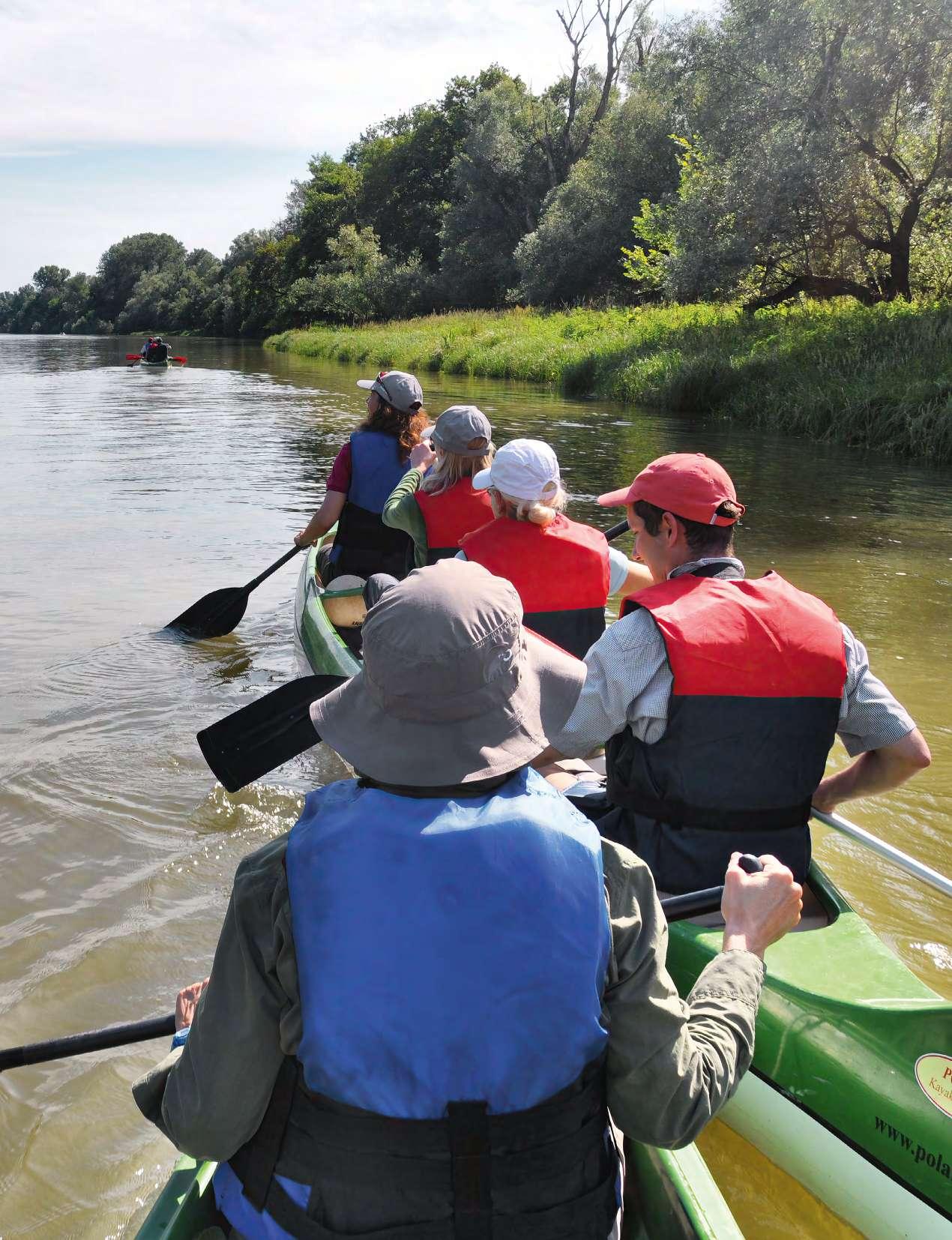
The extent to which securing lasting impact and financial sustainability for partners was the priority that shaped the foundation’s last few years cannot be overstated. To create a community of institutions that would continue collaborating post-MAVA, forging mutually beneficial relationships between partners became increasingly important. The creation of outcome action plans uniting partners in joint missions was one important element of the transition.
Lynda looked back on this with pride, saying at the point of closure, “We’re leaving behind an amazing community of people who are now bound together in ways that they were not before.”
MAVA created an Impact and Sustainability Unit led by Thierry Renaud to strengthen the conservation community. It looked beyond the wider philanthropic ecosystem and grants to consider the broader context of how partners were operating. The Unit aimed to support and improve their management, governance, human resources processes, fundraising, leadership and communication.
Tackling these considerations sparked the creation of the MAVA Leaders for Nature Academy, preparing the next generation of conservation leaders to take up the mantles of their predecessors, before taking on roles as mentors themselves. The innovative approach of combining senior and junior professionals was a powerful way to build intergenerational understanding. Participants greatly appreciated the opportunity to work on their personal leadership skills and reported sometimes life-altering personal development.
To nourish the fields of conservation and philanthropy, MAVA also invested significant time into producing and promoting a series of learning tools to distil the foundation’s knowledge and experience into resources for other donors and NGOs.
We re leaving behind an amazing community of people who are now bound together in ways that they were not before.
Lynda Mansson
The other pressing issue on MAVA’s plate was securing the financial future of its partners after funding ceased. The foundation approached this in several ways, creating donor collaboratives, promoting partners to other donors and providing fundraising courses.
However, MAVA’s ambitious goal wasn’t just to replace its funding one-to-one, but to create new self-sustaining mechanisms that went beyond simple donor-beneficiary models to provide more money. The team explored a variety of innovative sustainable financing mechanisms to secure and scale investment from public and private sectors to unlock additional funds, including trust funds, blue carbon and impact investing.
If the aim is sustainability, we cannot rely solely on people’s charity or philanthropy. Sustainable models must have a sustainable financing model. If we can create a system with recurrent cash flows, then we are more likely to be successful in the long-term than if we are just relying on one-off payments from time to time.
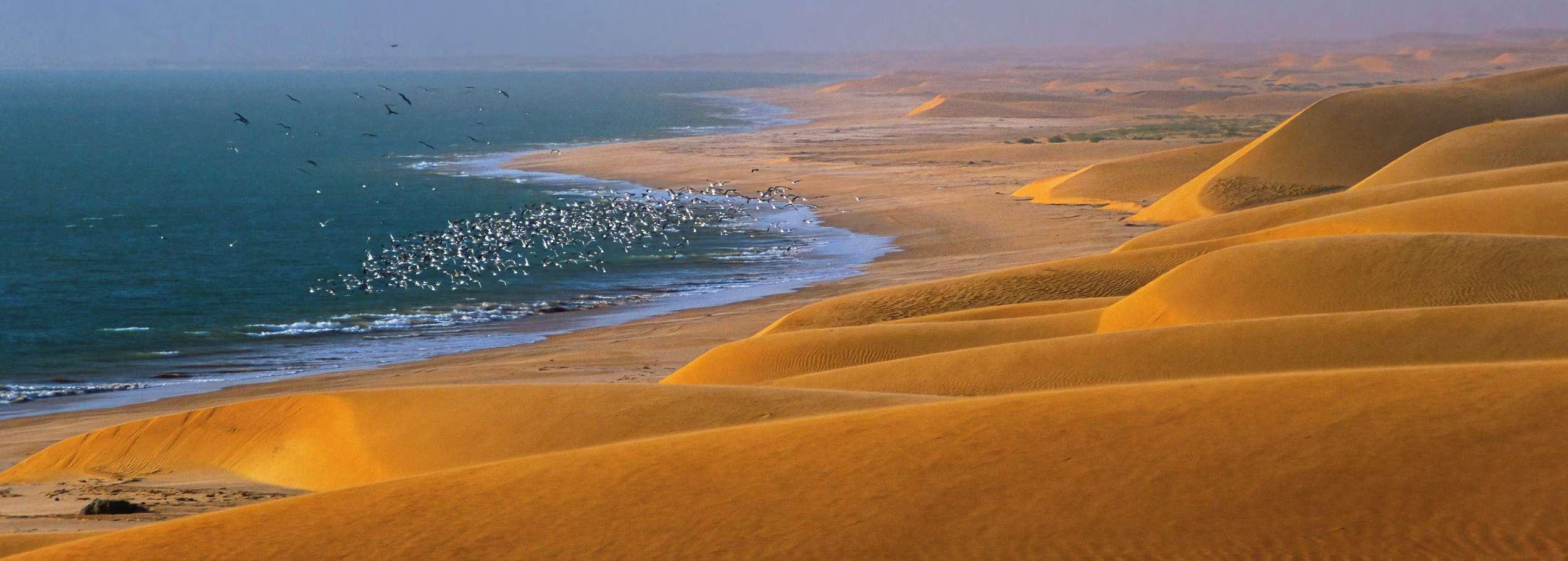 André Hoffmann
André Hoffmann
MAVA’s board and leadership team were just as preoccupied with the future of their 21 staff as that of their partners. In addition to generous financial severance packages, staff received support to make the transition easier, such as extra days off to plan their next career steps, budgets for customised training and new job titles that more accurately reflected their responsibilities. By treating staff with the respect, fairness and transparency they deserved, while helping them flourish in their careers post-MAVA, almost all staff members stayed until MAVA’s last day to address the needs of their partners.
Eve Cabo, who worked as Manager for MAVA’s West Africa Programme, expressed her gratitude for how the closure was managed. “Every story has an end, but in life, every end is a new beginning. 2022 was
a year full of challenges to which I was proud to contribute, but also an opportunity to recreate and project oneself positively towards the future thanks to MAVA’s constant support, ” she said.
As planned, MAVA ceased grant-making activity in 2022 and closed its doors for the last time in 2023.
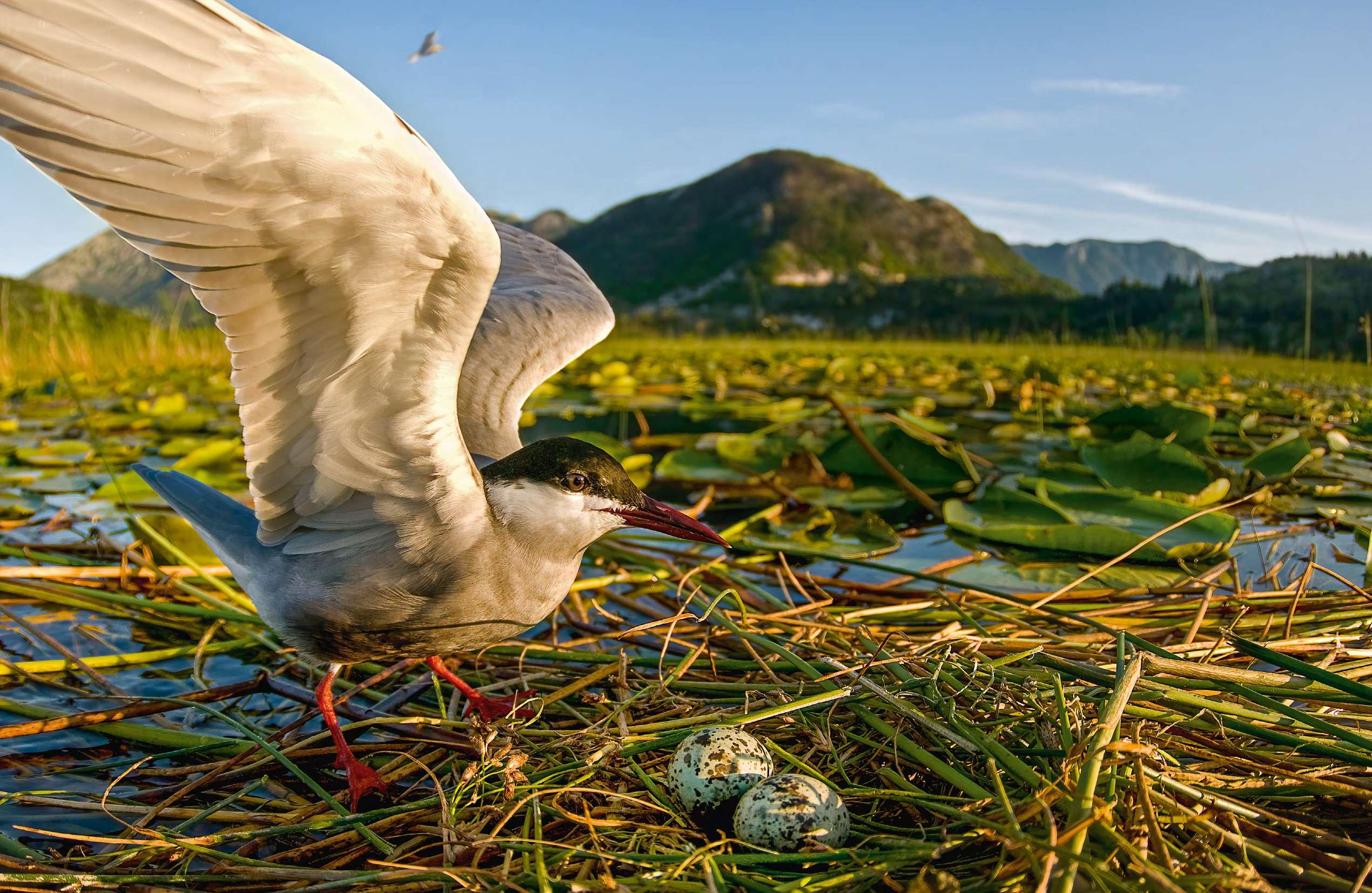
We were allies, not simply donors – we were not there just to fund the programme. We were also there to help partners with structure, ambition and development, and connect them with other people to create new networks.?
André HoffmannMAVA’s values of unifying, flexible, empowering and persevering flow from the founding family. After Luc stepped down as President, the foundation formalised these values to help ensure his spirit wasn’t lost.
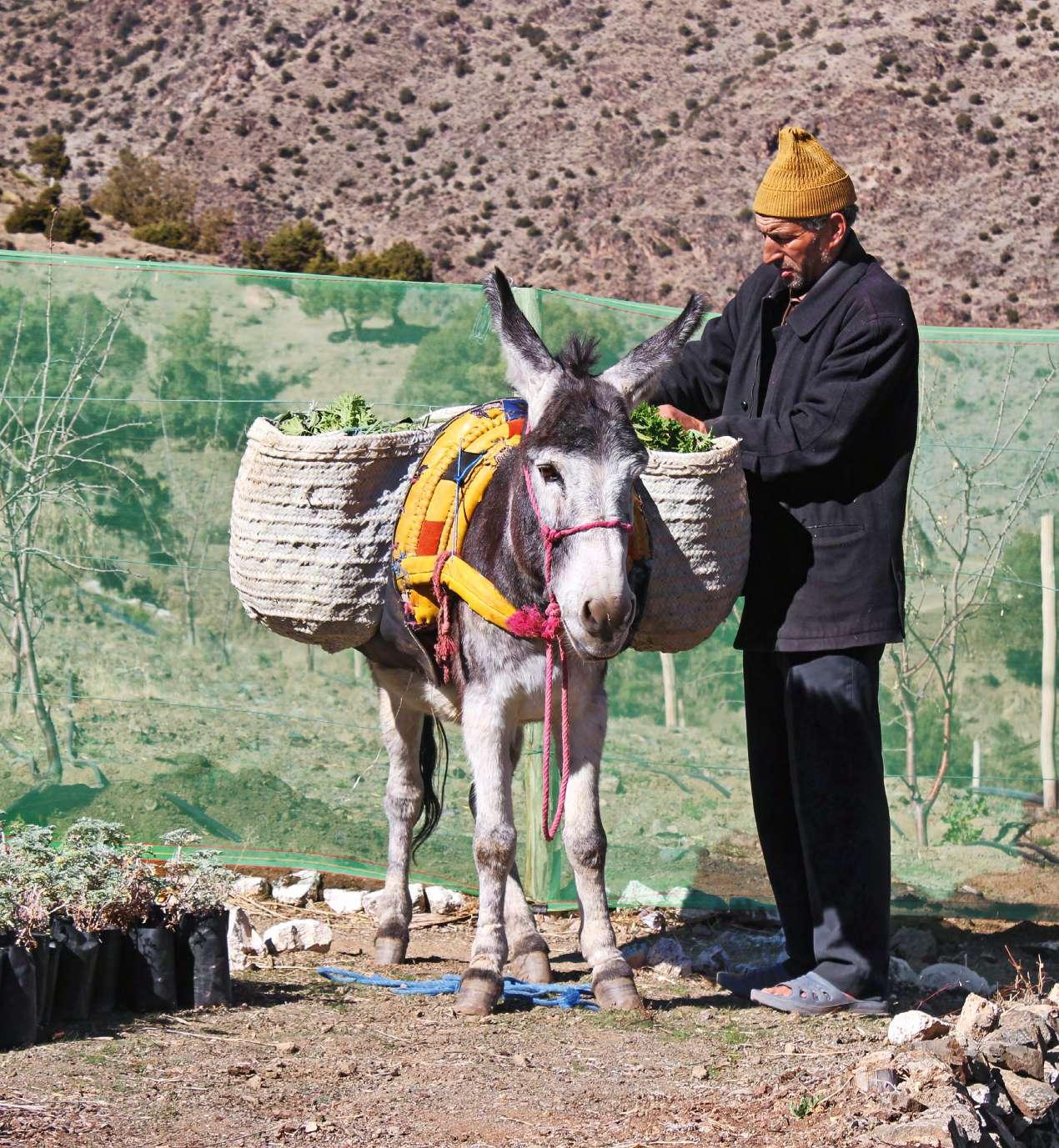
In MAVA’s early days, the foundation focused on iconic sites and protected areas. Despite growing significantly in size and scope across its lifetime, from a small gathering of friends in Luc’s home to a group of professionals based in offices across two continents, it stayed true to these roots.
Luc always put people at the heart of his conservation efforts and MAVA followed suit. From his support of young researchers to nurturing the early development of the Tour du Valat alumni, who now populate the conservation field, and the later creation of the MAVA Leaders for Nature Academy, MAVA invested in preparing the next generation of conservationists to follow in its footsteps.
Nature is an interaction between people and the planet. As well as building a strong, resilient and collaborative conservation community, MAVA always strove to engage local communities on nearby biodiversity issues. Luc had a special knack of turning sceptical or unwilling people, who saw limited benefit in protecting species or ecosystems, into conservation champions, and the foundation sought to replicate his success.
Reminiscing about his experiences leading MAVA, André describes how inspiring it was to be “surrounded by a community of people who are earnest, passionate and courageous, going over and above what they could be doing to make the world a better place and building a future in which humanity can live in harmony with nature.”
Conservation takes time, ambition and scale. Conservationists plan in decades, not years; MAVA worked with its partners over time to apply long-term solutions that would live on past its closure, rather than temporary fixes. The secure, steady stream of funding that Luc set up enabled the foundation to commit to ambitious long-term goals and work on a scale that was rare in the conservation world.
In addition to requiring long-term thinking, conservation issues are complex, with no single cause or solution. To achieve its goals, MAVA cultivated relationships with a variety of partners,
Left: Plant distribution as part of a Global Diversity Foundation project, High Atlas, Moroccoincluding local and international NGOs, individuals, universities and government officials, bringing them together to collaborate and build relationships that would remain after its own involvement ceased. To describe this holistic approach, working on different levels from fieldwork to policy, the outgoing MAVA team coined the term, “feet on the ground, hands in the system”.
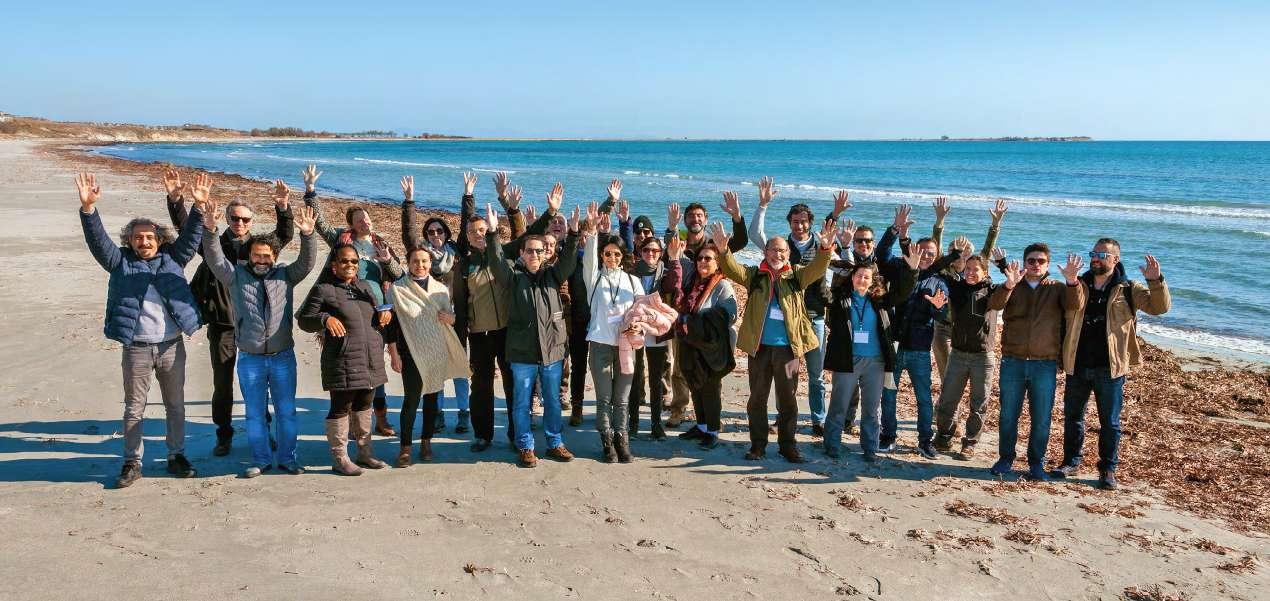
Forging authentic partnerships with the organisations and individuals MAVA funded, built on trust in a way that perhaps isn’t the norm in philanthropy, lay at the core of its work. These partnerships were possible because the foundation respected the conservation wisdom of its partners and committed to focusing its energy on supporting instead of directing wherever possible.
However, MAVA’s relationship with its partners wasn’t without challenges. The team tried to be as responsive and flexible as possible, but this attitude occasionally clashed with the need to implement major changes. For example, during its transition phase, MAVA created strategic ‘outcome action plans’ that brought its partners together to tackle a specific conservation challenge. Because it was a complex process to manage and a new way of working
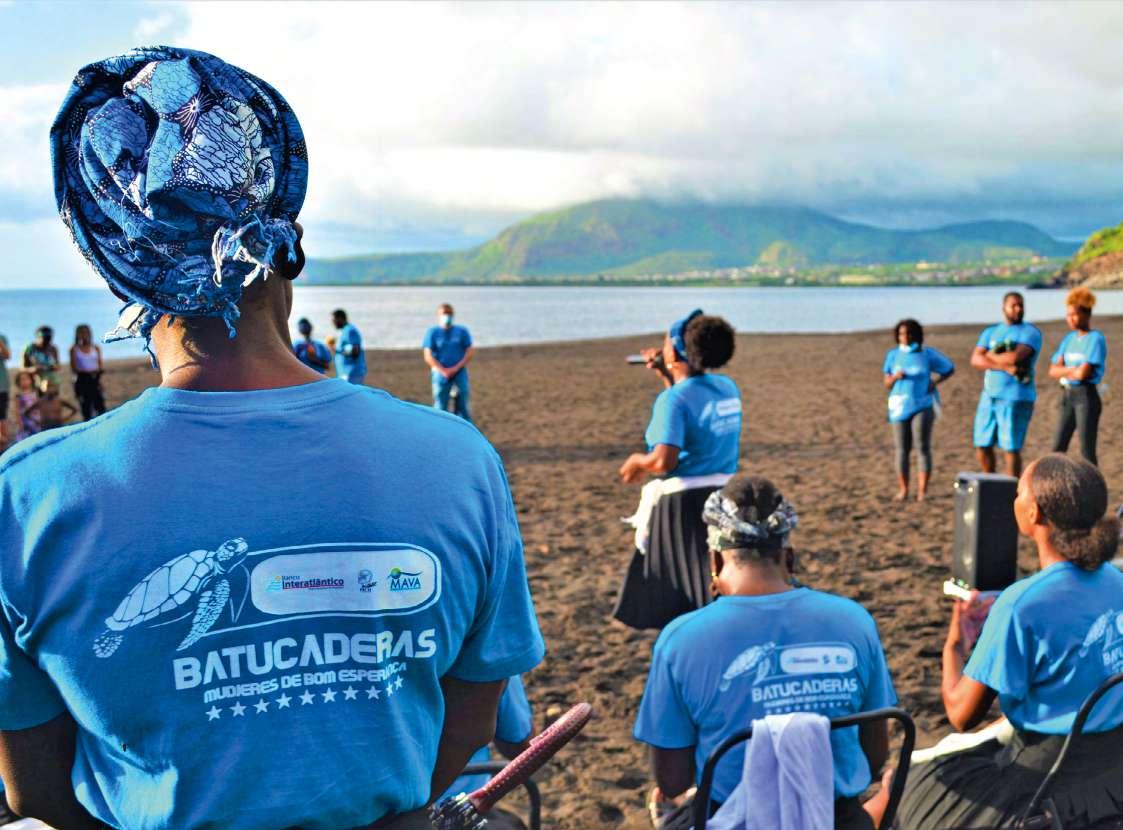
for everyone involved, the creation of these plans challenged the foundation’s wish to keep things simple. The results were worth the complexity, and the deep collaboration it catalysed formed a key part of MAVA’s legacy, but it was certainly a departure from its established best practice of keeping things simple and agile.
Another example of MAVA making exceptions to its internal rules was its commitment to flexibility, a pledge much praised by its partners. Such exceptions sometimes had operational consequences, but they also enabled conservation successes that wouldn’t have been possible with a more rigid mindset. Towards the end of the foundation’s lifespan, this flexibility also made the closing-down process trickier. Partners were conditioned to expect flexibility and exceptions as long as their reasons were valid, so MAVA’s need for firm adherence to its closure timelines sometimes came as a surprise.
Whenever there were opportunities for cooperation between partners, MAVA introduced them to each other. In its last phase, the foundation doubled down on this approach by catalysing deep collaboration between its partners that would continue after its closure.
For example, this approach was particularly impactful in West Africa, where traditional top-down project implementation from individual NGOs was standard for a long time. It was a long road, but the foundation encouraged NGOs of all sizes, government representatives, researchers and local community members to work together, particularly for marine and coastal preservation issues. At the point of MAVA’s closure, there were positive signs this amazing community would continue to thrive.
The willingness to create spaces where people could think outside the box and the freedom to fund ideas that emerged from such spaces were the characteristic features that I encountered in our cooperation with MAVA. You would maybe expect such features in an environment of future-oriented technology or economic development, but to connect a sense of entrepreneurship with nature conservation aims is something very unique about MAVA.?
Hiltrud Cordes, Turtle FoundationHaving friendly, transparent and understanding relationships with its partners helped catalyse many of MAVA’s conservation successes while rewarding staff on a personal level too. On the other hand, this closeness sometimes made it hard to make tough but necessary decisions.
The foundation’s support went far beyond just writing cheques, including leadership training, organisational development and network-building. MAVA’s 2021 publication Be an octopus – Reflections from an engaged donor explains in more detail how the foundation saw the donor’s role in the philanthropy system and how its relationship with partners evolved over its 28 years of grant-making.
their own way. We’re convinced that conservation projects will have lasting results only when they germinate and grow by their own strength. We do still actively help and are always ready to generate support among all stakeholders.?
Luc HoffmannAnother unique aspect of MAVA was the level of decision-making authority it delegated to individual members of staff. The foundation tended to employ staff on a long-term basis, enabling them to build a great deal of expertise and mutual trust, and had robust processes for vetting and designing projects.
This high level of autonomy allowed the foundation to reap many benefits. It could be agile and responsive with fewer layers of approval and far more decentralised decision-making compared to
most of its peers. This set-up also benefited partners, who worked hand-in-hand with the MAVA team to shape their collaboration.
The team’s understanding of conservation and how MAVA could have the most impact continued to develop over its three decades of funding. Calculated risks allowed the foundation to pioneer new ideas and experimental approaches, such as launching its Sustainable Economy programme and setting up the
first conservation trust fund in West Africa to protect areas of Mauritania.
Some risks involved navigating political unrest or civil war, but as long as the potential impact remained high, MAVA would try to make it work.
Cecilia Gas, who was an intern at MAVA, wrote for the foundation’s website about how politically or socially unstable countries receive little funding to support conservation. She explained, “Often donors are afraid of investing in them because they are wary of the situation, prefer surer bets, or do not realise that the projects can be impactful despite the difficult local
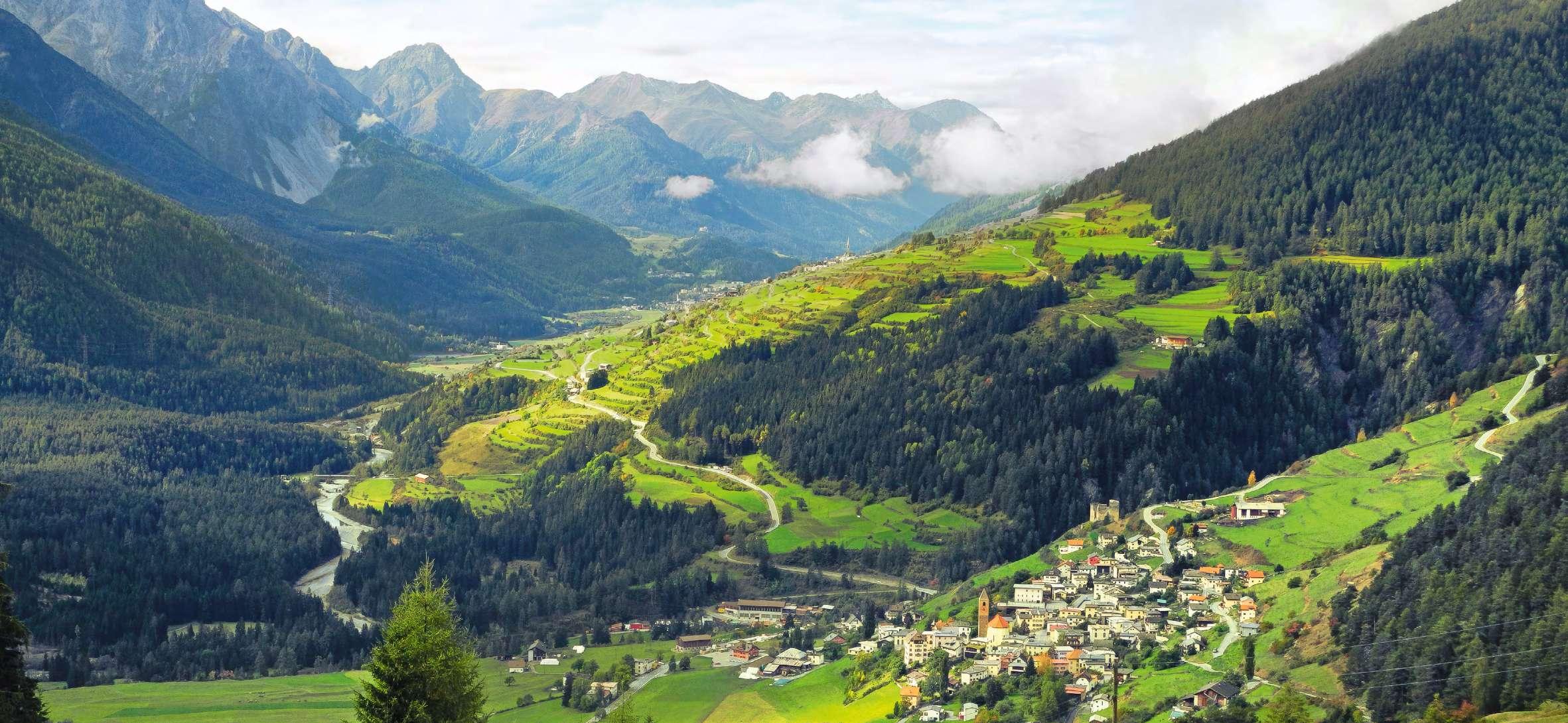
context. Supporting projects in these countries can lead to promising results and be a signal of hope for many of them.”
For example, MAVA supported a small NGO in Northern Cyprus called Society for the Protection of Turtles (SPOT) which protected sea turtle nesting sites. The region’s complex political situation contributed to funding being scarce, but their work
We don’t dictate to our partners what they should do, we try to help them find
There are no easy wins in conservation. Generating the necessary knowledge, building trust and relationships locally, establishing a common understanding and vision all require time, perseverance and patience. Luc Hoffmann and the MAVA Foundation understood this all too well.?
Demetres Karavellas, WWF Greece
was critical. Political instability and military unrest were frequent challenges in Guinea-Bissau while MAVA funded projects there, but against all odds, the foundation’s steady commitment contributed to preserving biodiversity in the Bijagós Islands. Today, the site is iconic and a core part of MAVA’s legacy.
Of course, taking risks sometimes resulted in failure, like the ill-fated Facebook game trialled by a MAVA partner as a fundraising tool in the early days of social media, but the team treated setbacks as learning experiences.
Particularly under André’s leadership, MAVA promoted a better understanding of the intrinsic and economic value of nature. The foundation recognised the huge potential of nature-based solutions, harnessing nature to address societal challenges while simultaneously providing benefits for both human wellbeing and biodiversity to accelerate the transition to a more sustainable global economic system.

The foundation’s Sustainable Economy programme included promoting nature-based solutions as a valid infrastructure alternative for project planners and investors. By encouraging the integration of natural capital into financial decision-making and national green economy planning, MAVA contributed to a slow shift in the finance community’s perspective on nature. Over the years, this community arrived at an understanding that healthy ecosystems underpin the health of our economy.
MAVA ended up as a leader in its field. It was committed to harvesting and sharing lessons that would improve practice both in the field and amongst fellow funders. In the final years before its closure, the foundation produced a range of guides and documents, including this book, to capture its unique experiences and pass on its learnings, many of which were hard-won through navigating tricky situations and making errors, making them all the more valuable to share.
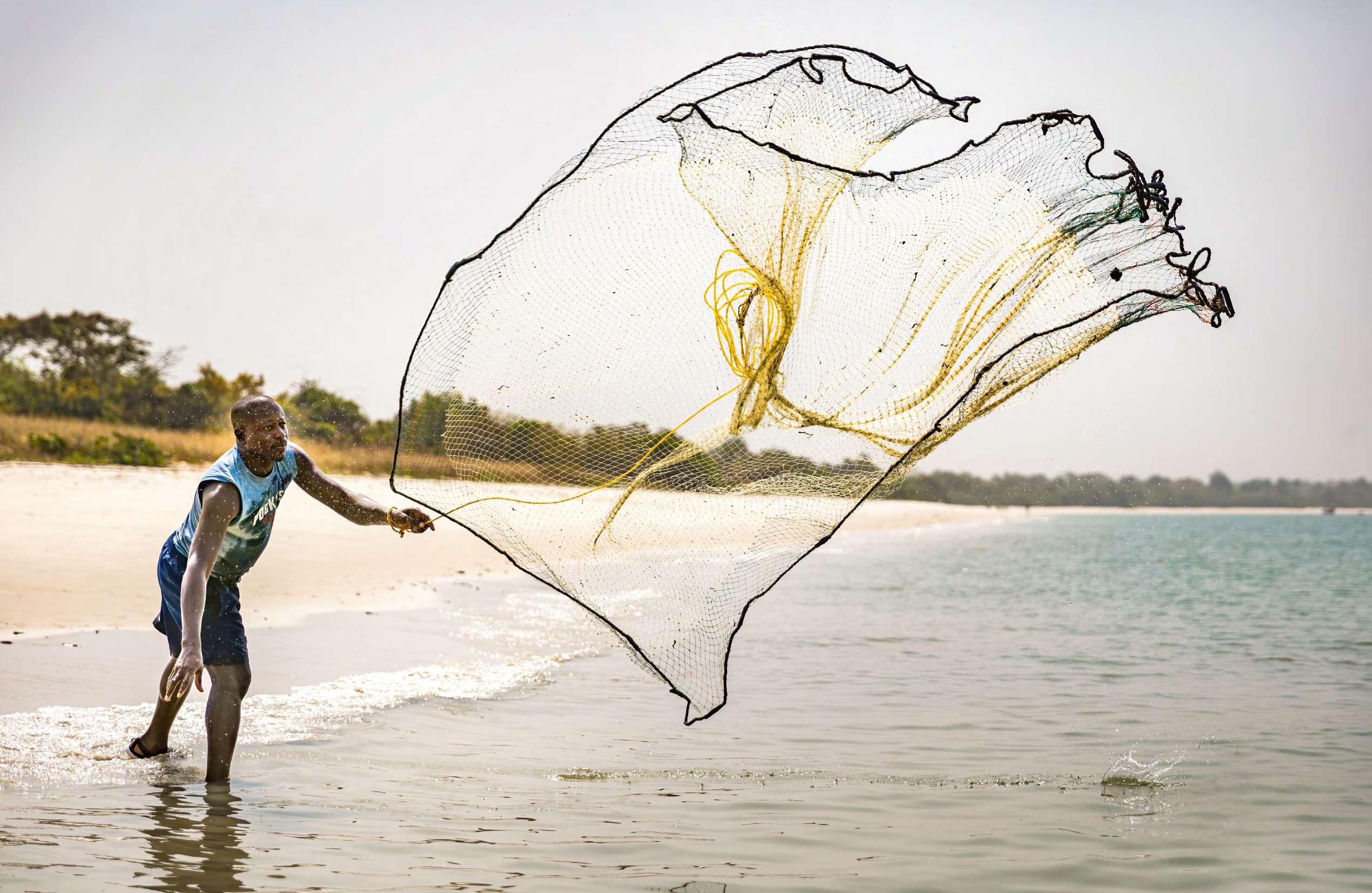
With over 500 partners and 1,500 projects supported over the years, it is impossible to capture all the successes the foundation contributed to.
This chapter tells 25 stories that represent the breadth of MAVA’s partners’ work, starting with its most iconic sites. The stories are categorised by which of MAVA’s four values – unifying, empowering, flexible and persevering – they best exemplify.
At the heart of MAVA’s inspiration were five key sites: the Camargue, Doñana, the Banc d’Arguin, the Prespa Lakes and the Bijagós archipelago. This first collection of stories describes the foundation’s long history with these diverse wetland environments and how they were protected and preserved over the years.
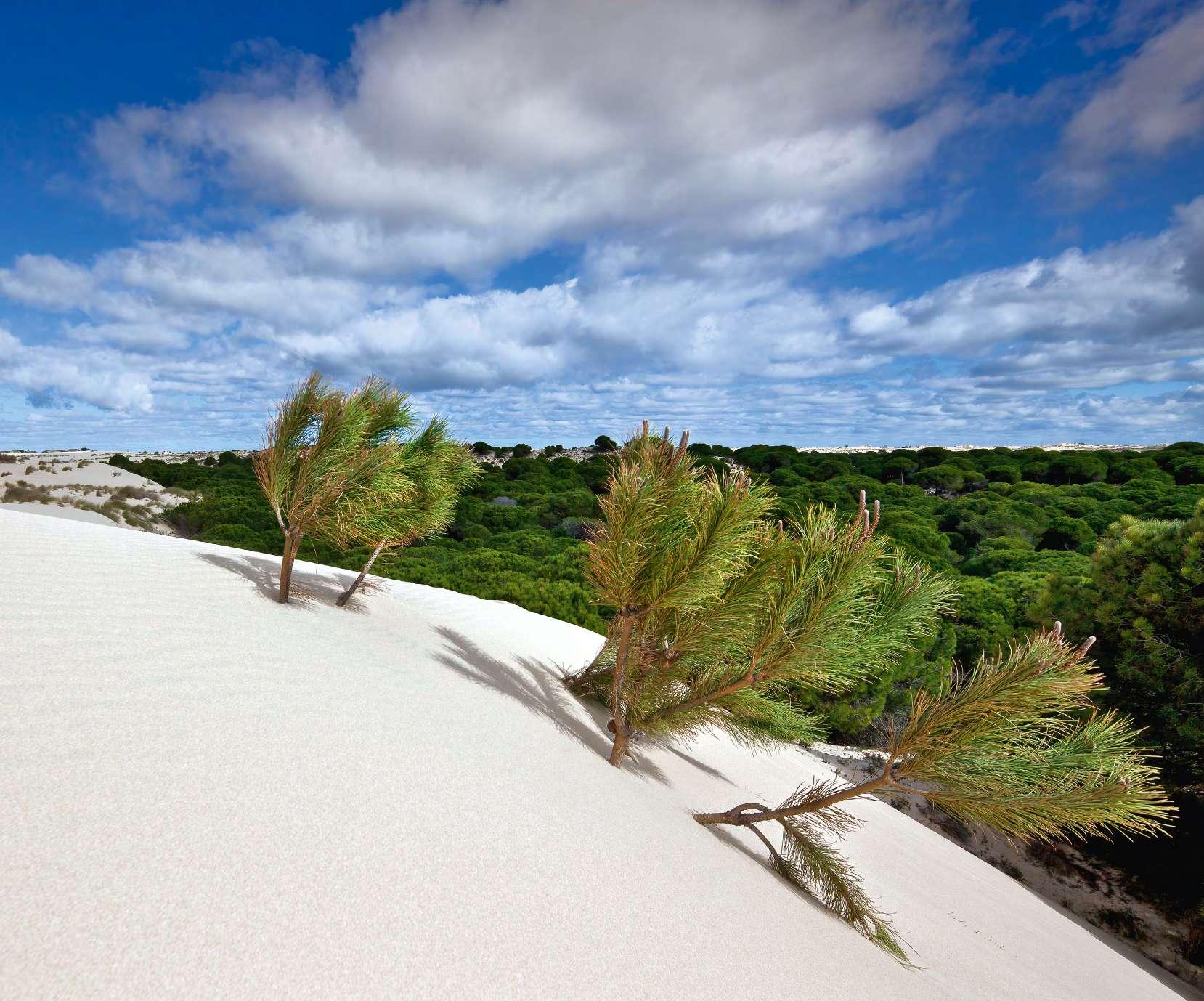
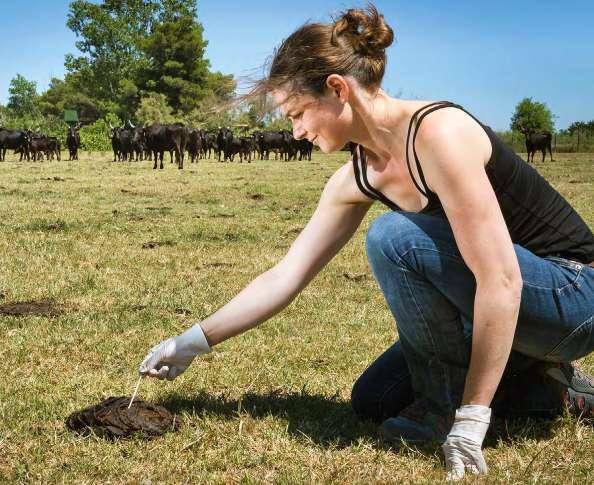
The Tour du Valat was MAVA’s longest-running partnership and arguably its most special site. Luc’s, and later MAVA’s, involvement in conserving its wetlands and engaging its communities has not only shaped the Camargue’s future, but also served as a model for wetlands all over the world.
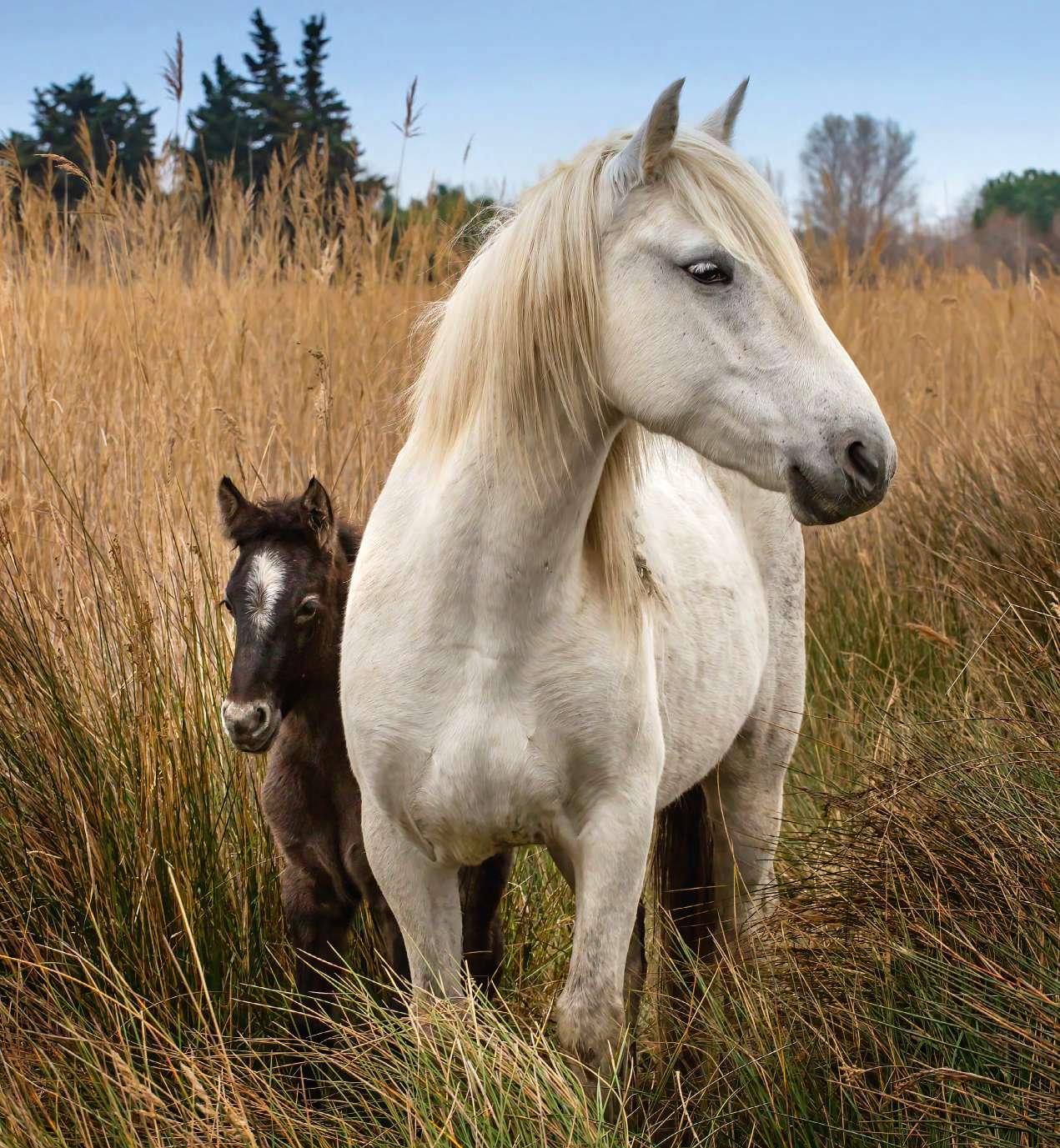
For MAVA, the Tour du Valat was where it all began. When Luc purchased the estate in 1948, captivated by its vast marshes and the countless bird species that called it home, the events leading to MAVA’s birth were set in motion.
Luc was one of the few people who could see how fragile and endangered this land was, with threats including drainage, farming and urban development circling. The creation of the Tour du Valat Biological Station in 1954 turned the sprawling wetland into an open-air laboratory unlike anywhere else in the world. Its seven decades of applied, practical and longterm research, covering diverse topics from wetland salination to antibiotic resistance, form an invaluable gift to today’s conservationists, public authorities and research institutes.
Over time, Luc and his team demonstrated the value of the wetlands and the Tour du Valat’s remarkable biodiversity, not just for its own sake, but for the benefits it provided to local communities. Its rice farmers took some persuading that flamingos were a blessing rather than a pest eating their crops, but the estate settled into a harmonious relationship between people and nature.
Today, the Tour du Valat’s impact stretches far beyond its borders. It was instrumental in creating global and regional initiatives such as MedWet, a Ramsar Regional Initiative focused on wetland management that unites 27 Mediterranean and Mediterraneanbordering countries. It also helped to launch the
Mediterranean Alliance for Wetlands, which brings together 18 international NGOs and six research organisations to increase the visibility of wetlands in Mediterranean society, plus national, regional and international policies. Its own Mediterranean Wetlands Observatory continues
to guide public policy through the dissemination of papers and reports on the region’s wetlands and their socio-economic value. Its researchers have also attended the Ramsar Convention as part of the French government’s delegation.
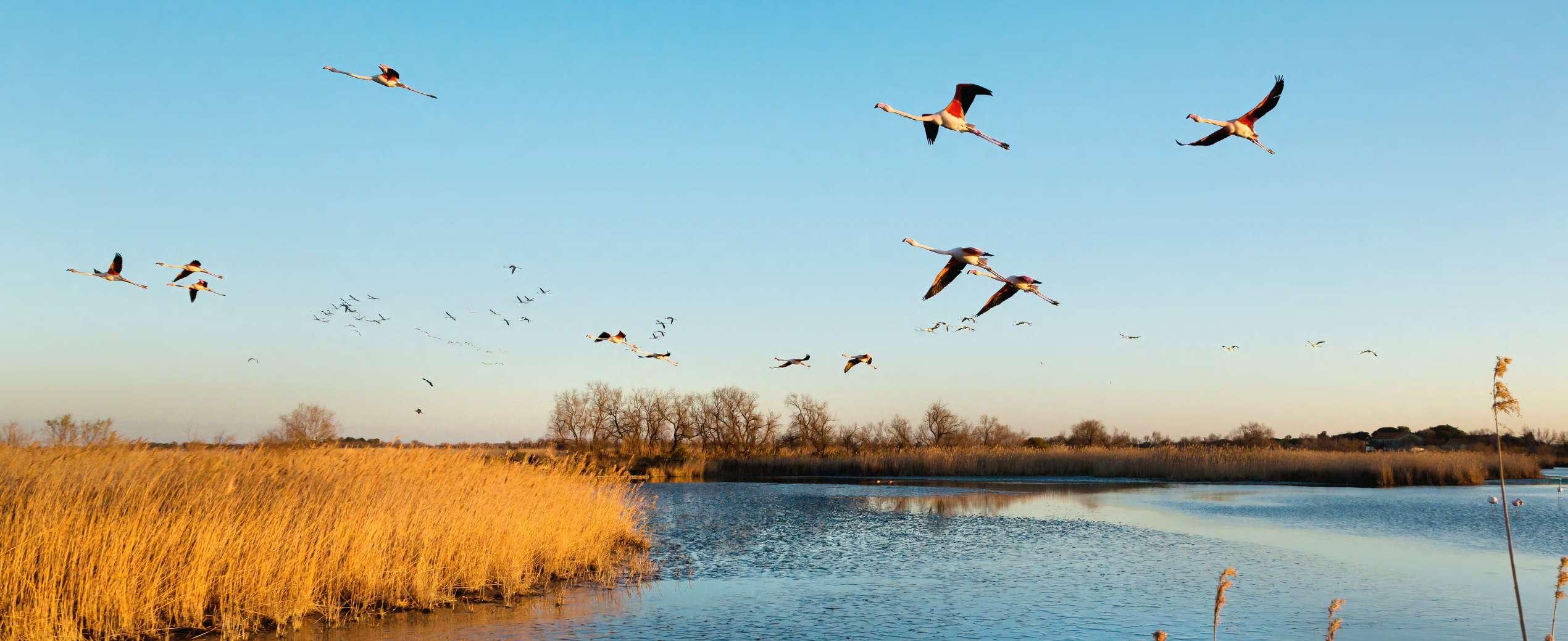
The research station has played a substantial role in changing worldwide perception of wetlands and safeguarding their future, but its smaller-scale achievements merit mention too. In a poignant addition to Luc’s legacy, the Tour du Valat’s researchers successfully encouraged his favourite bird, the collared pratincole wader, to use the estate as a breeding ground. Jean Jalbert, Director General of the research institute since 2004, described watching

the waders feeding over the marshes in the evening as “a very moving spectacle”.
Alongside the many other inspiring people who have worked at the Tour du Valat over the years, Jean Jalbert deserves a special mention for his passionate wetlands advocacy, which has shaped the future of these unique places for the better.
Another figure inseparable from the Tour du Valat was Jean-Paul Taris, a long-time collaborator of Luc’s who also led MAVA from 2005-2010. A keen ornithologist, Jean-Paul started as a field assistant at the research station before becoming the Director General then President of Tour du Valat and making an enormous impact on its development during his time there.
An extraordinary human adventure! An immense generosity in the service of reconciliation between humans and nature. An unfailing commitment driven by passion and aiming for impact. This is what comes to mind when I think of the history of the MAVA Foundation. I had the privilege of arriving at the Tour du Valat in 1994, the year the MAVA Foundation was created. Since then I have worked closely with Luc and André Hoffmann, the two successive presidents of the MAVA Foundation – and of the Tour du Valat – and more broadly with the Hoffmann family, as well as those who have made the MAVA Foundation what it is today: Lynda, Paule, Thierry, Luis and many others.? Jean Jalbert, Tour du Valat
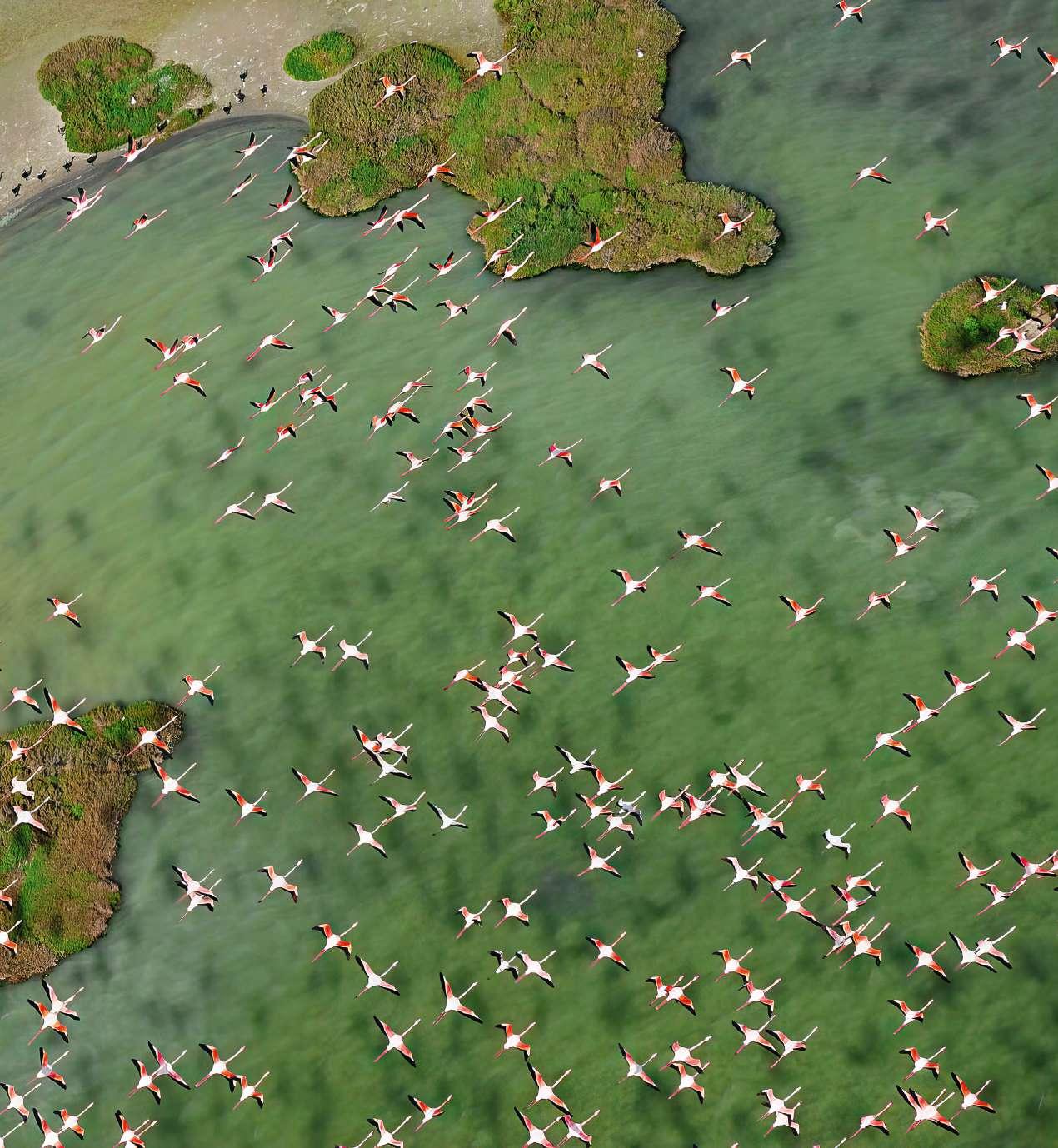
Doñana’s story is a common tale of a wetland struggling to survive against threats like drainage, intensive agriculture and infrastructure development around the marshes. With MAVA’s support, WWF Spain has spent decades defending Doñana’s unique ecosystem.
Doñana National Park is a dramatic expanse of land in southern Spain. Its endless coastal marshes and beaches make it the largest wetland in Europe protected as a national park. Before the park was established, it was a forgotten corner of the continent that provided sanctuary to millions of migratory birds.
In the 1960s, Luc joined forces with scientist José Antonio Valverde, Doñana’s greatest protector, to amplify José Antonio’s existing campaign to protect the site from threats like drainage and monoculture farming.
Luc, who was already well-known in the conservation field, lent his reputation, network of contacts and diplomacy skills to the cause. After the pivotal 1957 ‘Doñana Expedition’ gathered some of the best-known ornithologists, photographers and documentarists to capture the stunning natural wealth of the site, attention on the wetland began to grow.
Francisco Franco’s Spanish dictatorship and the country’s ensuing international isolation made the wetlands’ protection politically challenging. Despite the interest of the scientific community, renewed by Luc and José Antonio’s presentations at highprofile scientific congresses on the importance of the marshes to bird migration, development plans continued to nibble at Doñana’s borders.
José Antonio announced a fundraising effort in 1959 to purchase the heart of Doñana’s land and protect it, but larger-scale action was required. In 1961, several members of the Doñana Expedition, along with Luc and José Antonio, launched the World Wildlife Fund, which later became the World Wide Fund for Nature (WWF). Their broad objective was to raise funds to defend threatened nature around the world, but their first task was to save Doñana.
Through a pioneering international communication campaign and the first crowdfunding effort in the history of nature conservation, resulting in thousands
Doñana is undoubtedly one of the greatest legacies that MAVA leaves us, not only to WWF but to all humanity. MAVA has continuously supported WWF for more than two decades to ensure the conservation of one of the world’s most important wetlands, providing resources and supporting WWF to combat countless environmental problems which have threatened and continue to threaten relentlessly. Through the Doñana Defence Fund, MAVA will continue protecting Doñana for a long time and defend this paradise to preserve it for future generations, leaving committed leaders, prepared and empowered to fight for the conservation of this unique biodiversity refuge and preserve its universal values with the same passion and intensity for wetlands as Luc Hoffmann showed during all his life.?
Teresa Gil, WWF Spainof donations from bird-lovers, sufficient money was raised to purchase 6,671 hectares of Doñana’s most precious forests and marshes to create a national park. Activating WWF’s newly created subsidiaries in different European countries helped spread the message further, increasing the pressure on the Spanish government which eventually provided a large contribution. Behind the scenes, Luc arranged a loan from his family company Roche’s Spanish subsidiary to ease the sale.
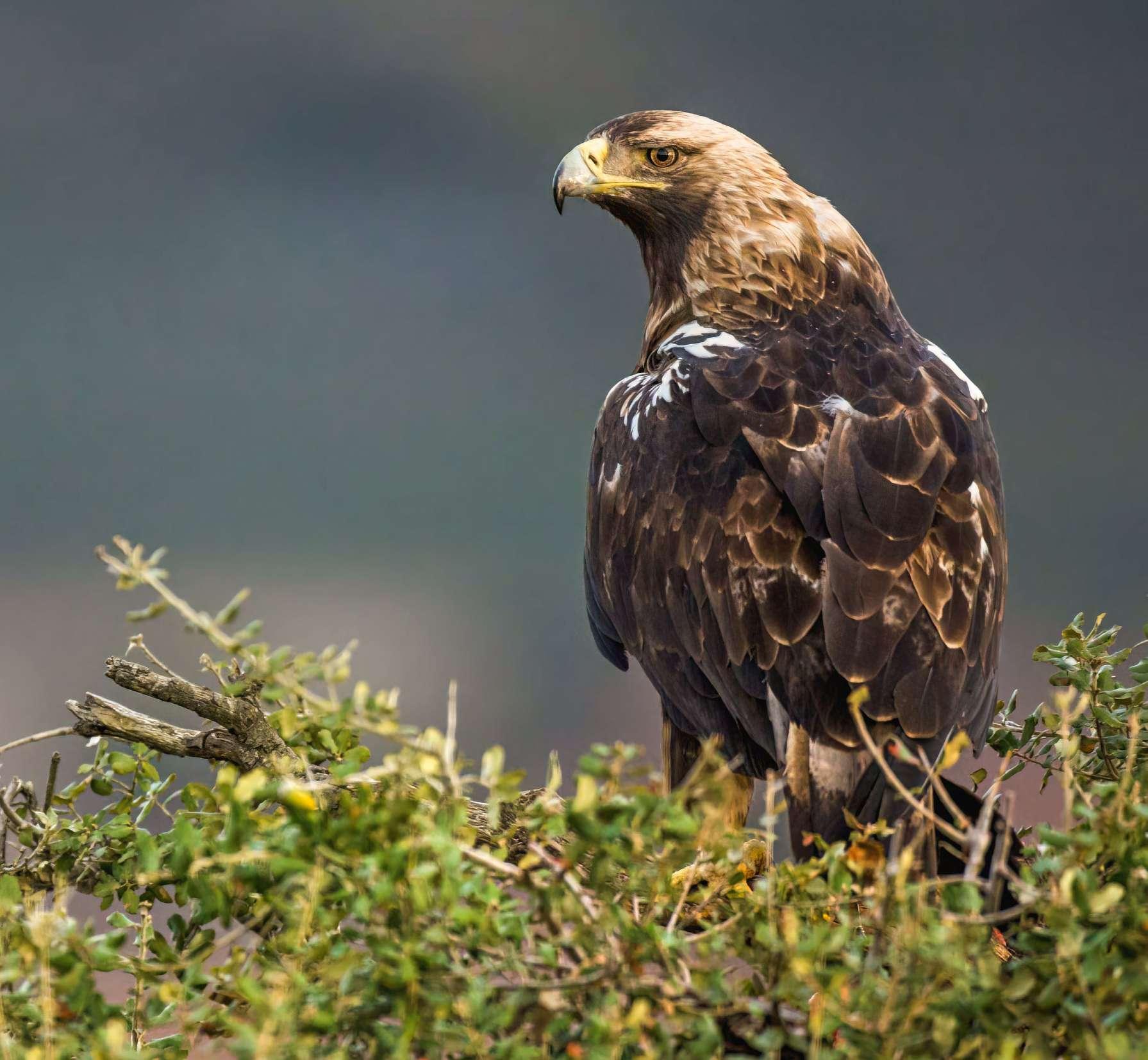
Therefore, Doñana, WWF and MAVA’s histories are all closely intertwined. From the outset, MAVA was one of Doñana’s staunchest defenders through its support of WWF Spain. Juan Carlos del Olmo, Secretary-General of WWF Spain and a champion of the wetlands since the 1990s, was an indispensable ally in the two organisations’ collaboration. Protecting Doñana’s water from the demands of tourism and agriculture comprised the core of WWF’s work. The EU Water Framework Directive was a useful tool but it was not fully implemented by the authorities responsible for the protection of Doñana.
Water loss due to drainage, growth of intensive agriculture for strawberry cultivation and the increase in illegal water use, worsened by the reduction in rainfall resulting from climate change, remains the park’s biggest threat today and the battle to halt illegal irrigation continues. Solutions, such as innovative drip irrigation to reduce water consumption, will be key to securing Doñana’s future and helping its rich natural resources serve people and nature equally. WWF Spain will continue holding the Spanish government accountable and its efforts are supported by MAVA’s significant contribution to the Doñana Defence Fund. This conservation finance mechanism will provide sustainable funding for WWF’s guardianship of the park for many years to come.
In Doñana are our roots. We have a responsibility to care for and honour the work of pioneers like Luc and José Antonio Valverde, and to protect this natural heritage for the conservation of a large part of Europeʼs birdlife and wildlife. Our commitment is firm and thanks to MAVAʼs support and enormous legacy we will continue to care for Doñana for decades to come.?
Juan Carlos del Olmo, WWF Spain
The preservation of the Banc d’Arguin serves as a beautiful example of how people and nature can help each other thrive. Thanks to the enduring dedication of its local stewards over four decades, the park was researched, restored and protected against threats.
The Banc d’Arguin National Park (PNBA) was created in 1976 as an initial measure to protect this vast coastal wetland, teeming with life and its millions of bird inhabitants. MAVA’s involvement with the Mauritanian site began when Luc first visited in 1982. He was immediately struck by the area’s magic and committed himself to its protection. The park’s designation as a Wetland of International Importance in 1982 and a natural World Heritage Site in 1989 helped safeguard it, but didn’t directly counter the explosion in the number of industrial fishing fleets plundering the park’s rich waters.
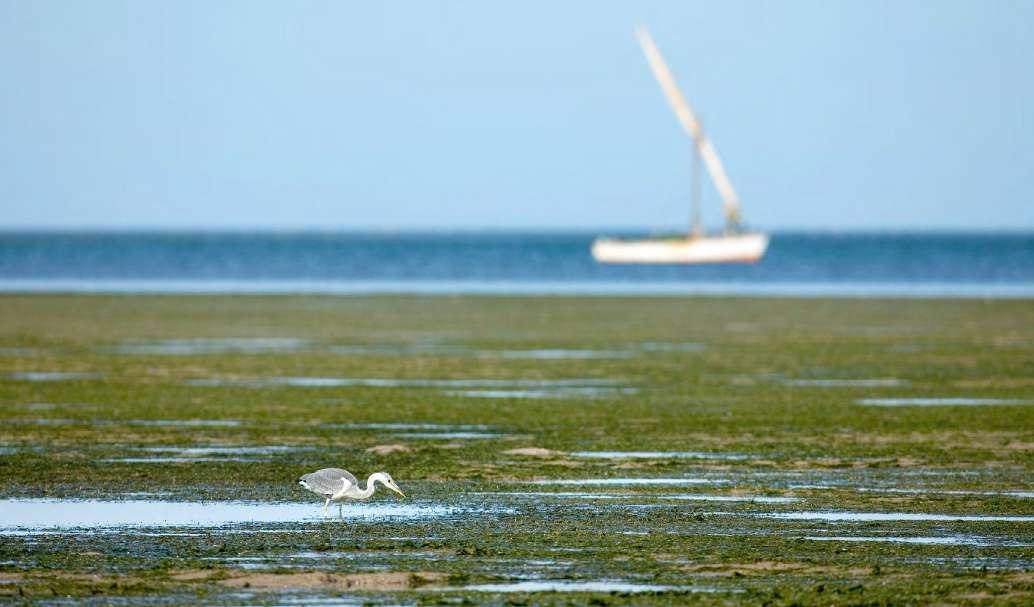
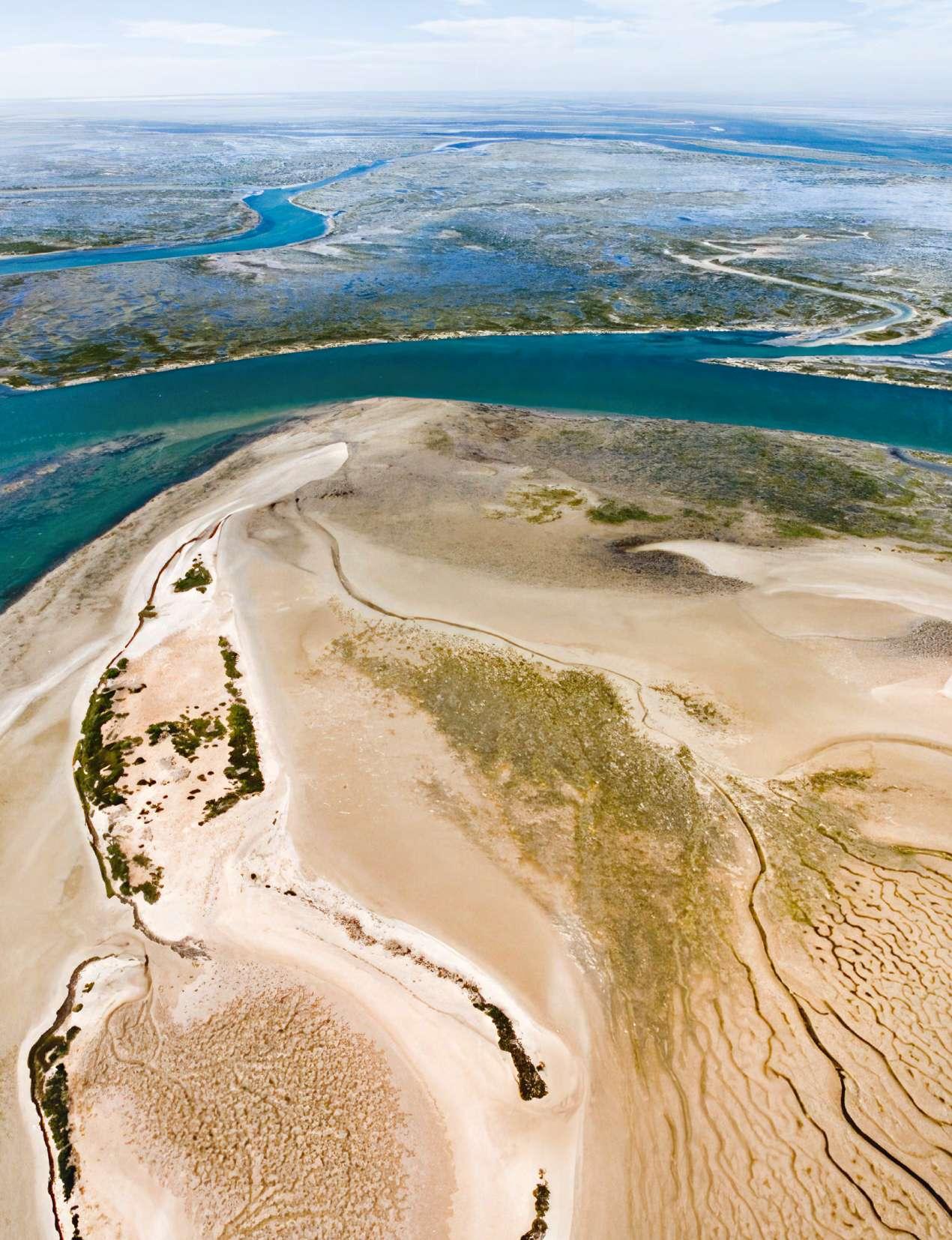
Working closely with the PNBA and other Mauritanian authorities, Luc helped establish the International Foundation of the Banc d’Arguin (FIBA) – which eventually merged with the MAVA Foundation in 2015 – to co-manage the park in close collaboration with the Imraguen communities who had lived there for thousands of years.
The PNBA and FIBA supported the Imraguen to manage, fish and patrol the park’s waters, becoming its stewards and receiving exclusive fishing rights in return, as long as they committed to using their traditional, non-motorised crafts or wading.
I personally followed the establishment of BACoMaB with interest and satisfaction. This wellaccomplished task finally crowns all the efforts that Luc Hoffmann and his son André made through FIBA and MAVA. Today, these two institutions will disappear from the Mauritanian environmental landscape, but the essential part will remain. The Mauritanian and international ecological world will be grateful to them for this.
Gabriel Hatti, former Director of the Banc dʼArguin National Park and former Advisor to the Presidency of the Islamic Republic of MauritaniaThoughtful additions, such as opening a boatyard with boatbuilders recruited from Brittany to enhance local knowledge, empowered and motivated the Imraguen in their role as custodians. The two organisations collaborated to tackle illegal shark and ray fishing and other risk factors that threatened the the park’s biodiversity and its ecosystem’s delicate balance.
The park’s management involves continuous scientific research to thoroughly understand its diverse environment. No one has been more dedicated to uncovering its secrets than PNBA’s Sidi Cheikh, who has dedicated years to mapping seagrass cover. Like any natural environment, the park still faces challenges, such as the pressures of climate change
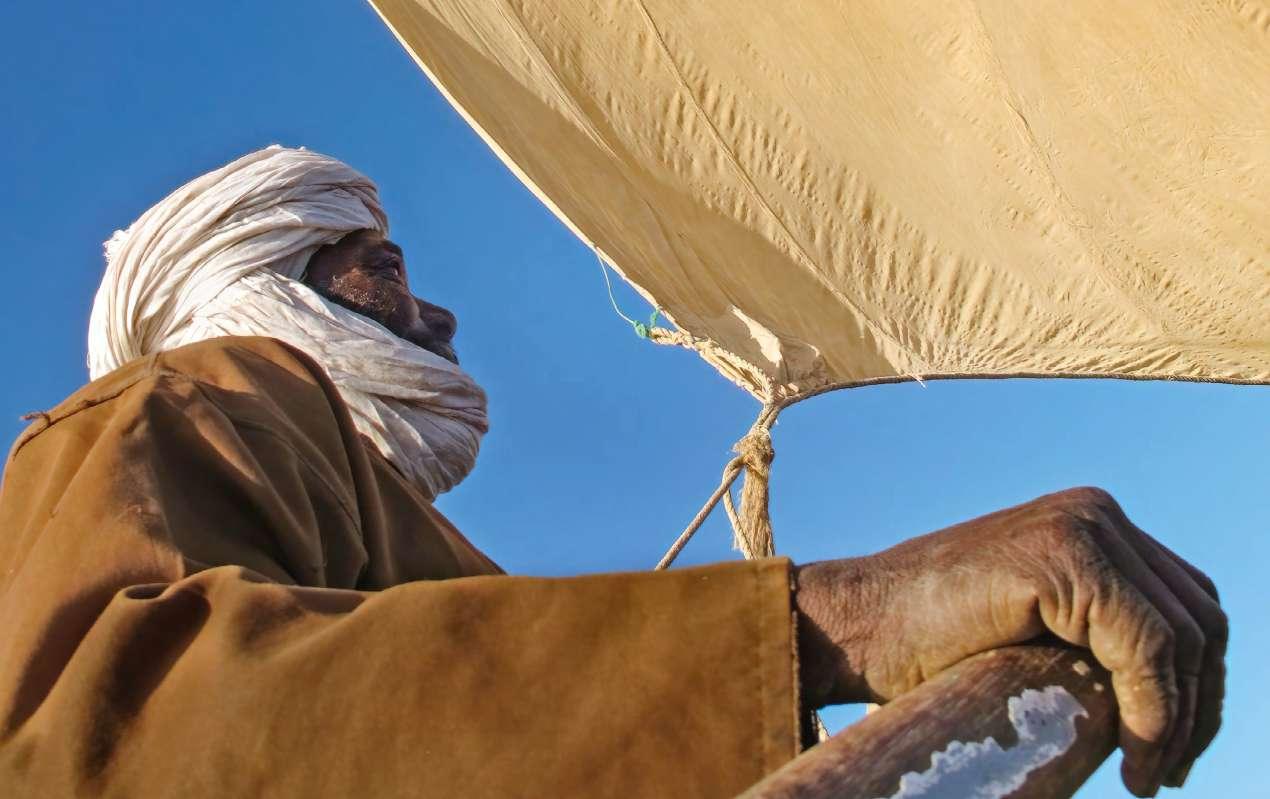
and commercial fishing, but its people and nature are undoubtedly vastly better off for the protection Luc helped implement in the 1980s.
The PNBA’s work will continue after MAVA’s closure. Its funding is secure, thanks to MAVA and a coalition of partners establishing and endowing a sustainable funding mechanism called the Banc d’Arguin and Coastal and Marine Biodiversity Trust Fund (BACoMaB), which will indefinitely support the park’s conservation and management work. This fund was the first of its kind in West Africa, but conservation finance has since become widespread; with BACoMaB serving as inspiration, more organisations, banks, governments, entrepreneurs, donors and private investors have entered the space.
MAVAʼs commitment, at various levels of responsibility, has been decisive in the creation of the Banc dʼArguin and Coastal and Marine Biodiversity Trust Fund, its development and the credibility it has enjoyed with the authorities and technical and financial partners. The quality of the dialogue made it possible to successfully complete the process of creating BACoMaB, its establishment and regular operation through targeted and effective support and active participation in its governance.
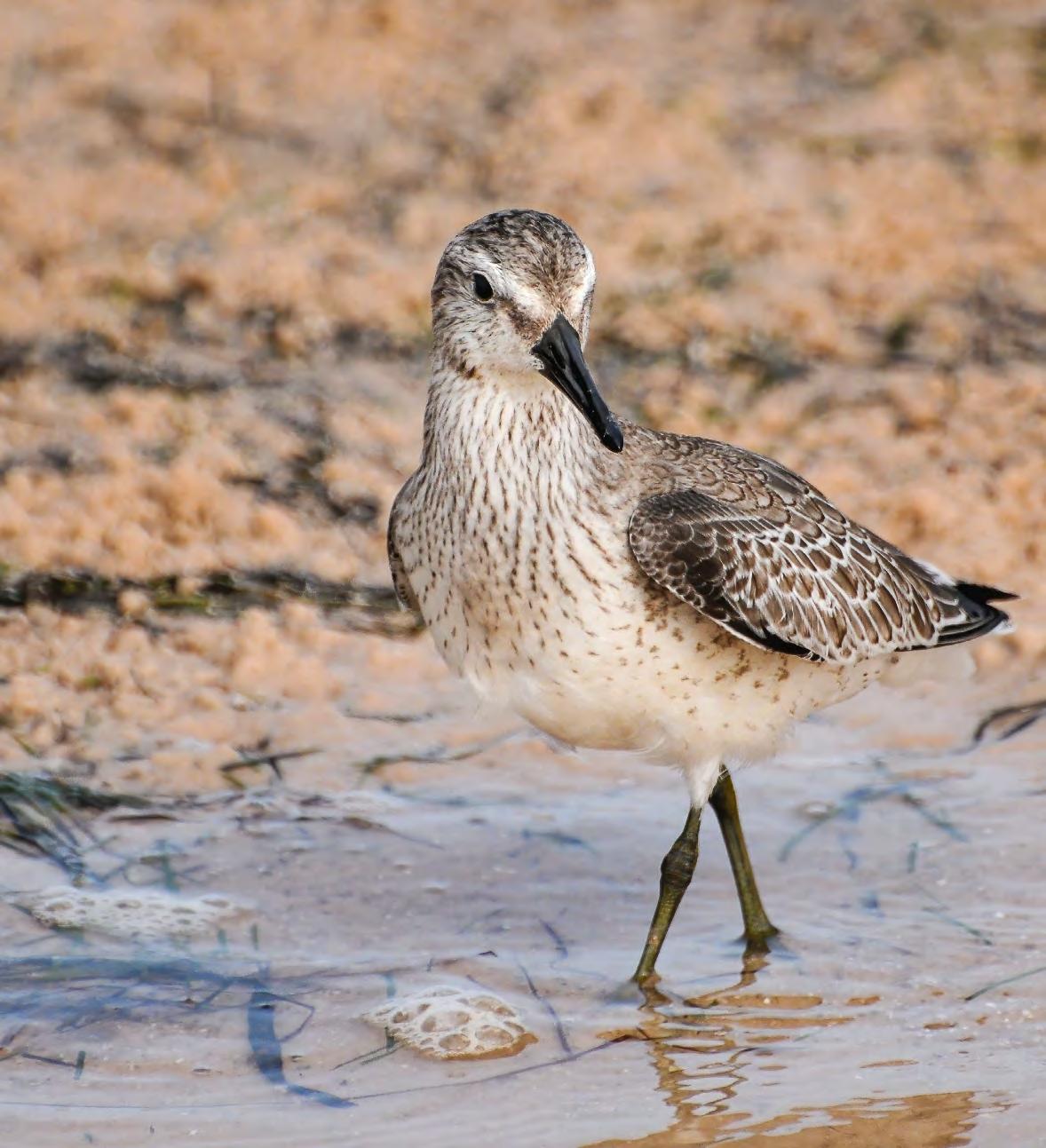 Ahmed Lefghih, BaCoMaB
Ahmed Lefghih, BaCoMaB
Over decades of dedication, the Society for the Protection of Prespa transformed this exceptional site from a no-man’s-land eyed by developers into a groundbreaking transboundary park.
Prespa is a diverse conservation site stretching around a magical pair of alpine lakes high in the mountains of Albania, Greece and the Republic of North Macedonia. Turquoise waters, vibrant meadows, deepgreen forests and snow-capped mountains make it a tranquil corner of Europe and a haven for birds that is truly special for conservationists. Its ecosystems are home to countless species, including more than 50 not found anywhere else.
When Luc first visited Prespa in the early 1970s, he was instantly enchanted, particularly by the opportunity to see Europe’s last breeding pairs of Dalmatian pelicans, but realised the area was under threat from local development plans. He persuaded the Greek military dictatorship that the area was worth protecting and, to the surprise of everyone involved, it agreed. Plans to exploit its natural resources were halted and the Greek part of the site was placed under national forest protection.
played a significant role in conservation being a low priority for its diverse communities. New development plans in the 1980s for the Greek section put the entire Prespa site at risk once more.

Luc realised that the only way to succeed was to have a serious presence on the ground. That’s why we established SPP – to engage local people and gain their support, and bring conservationists together!?
Thymio Papayannis, Co-founder of the Society for the Protection of PrespaCelebrated conservationist Thymio Papayannis visited Prespa in 1985 and immediately became concerned about its future. Luc and Thymio, who went on to become longtime close friends and collaborators, launched a campaign to protect Prespa. They set up WWF Greece and joined forces with biologist Giorgos Catsadorakis to found the Society for the Protection of Prespa (SPP), a small environmental organisation supported by a wider network of larger organisations including WWF and the Tour du Valat, which helped gain the international recognition necessary to ensure Prespa’s safety.
However, this designation was only a partial solution. Prespa’s position on the border of three different countries with a historically turbulent relationship
Demetres Karavellas, CEO of WWF Greece, recalled a dinner attended by himself, Luc, Thymio, Giorgos and Managing Director of the SPP Myrsini Malakou that proved pivotal for Prespa. He recounted, “We shared with Luc and Thymio a crazy idea – to propose the creation of the first transboundary protected area in the Balkans, in the Prespa Lakes region, involving all three
MAVA’s legacy is evident in so many ways in Prespa, in its vitally important biodiversity and ecosystems and across the whole lakes basin, which is shared by Greece, North Macedonia and Albania. The area suffered intensely from wars, from the translocation of people and from environmental degradation during the 20th century, but now, and precisely because of the incredible contribution and support from MAVA, after an era of conflict and turbulent changes in the wider environment, the area is stable and thriving.?
Myrsini Malakou, Society for the Protection of Prespa
countries. This was no easy or obvious proposition. Political tensions, limited capacity of environmental actors on the ground and conflicting priorities made it a very far-fetched idea. Luc listened carefully to the idea and our very basic plan of how we might proceed. He smiled in that warm, almost mischievous way and said ‘Yes, let’s try it!’”
On the auspicious date of World Wetlands Day in 2000, the prime ministers of Albania, Greece and North Macedonia agreed to create the Prespa Transboundary Park – a triumph for both the people and nature of Prespa. Demetres described, “We could hardly believe that the three prime ministers had come together in the tiny village of Agios Germanos to jointly agree on a more sustainable future for the region. At the same time, we all knew this was just the beginning of a process. Time, hard work and resources would be needed in order to turn this political declaration into real action that could benefit the people and nature in the region.”
Engagement with local people was key to driving protection efforts. The SPP made significant efforts to hear the concerns of Prespa’s people and guide them towards living in peaceful cooperation with nature. For example, Prespa’s Dalmatian pelicans had historically been a source of annoyance for fishermen, as the birds ate their catch. The forest service had even offered bounties for every egg or dead pelican brought to them.
“This picture is a view of Prespa Lake from the Greek side. It was taken during a hiking tour with our partners from Albania and Greece. It always reminds me that nature doesn’t know borders and that if we want to make a real change we have to work together.”
 Daniela Zaec, Macedonian Ecological Society
Daniela Zaec, Macedonian Ecological Society
One of the SPP’s first victories was persuading fishermen that the pelicans were worth more to their community alive than dead. The issue was forced to a head when a drought left the birds with nowhere to nest except on top of the fishermen’s traps, destroying them in the process. Myrsini described the moment the tide turned: “We told the fishermen that whether or not their grandchildren would see this bird alive on Earth was in their hands. Watching the boats go out at dawn the next morning, we held our breath –but as they approached the traps, they stopped their engines and rowed quietly by.” These same fishermen went on to become fierce protectors of the pelicans, whose numbers swelled to over 1,000.
SPP won numerous awards, including one of the first Ramsar Wetland Conservation Awards in 1999, for its work with local communities, reintroducing traditional agricultural practices like wet meadows and promoting organic farming.
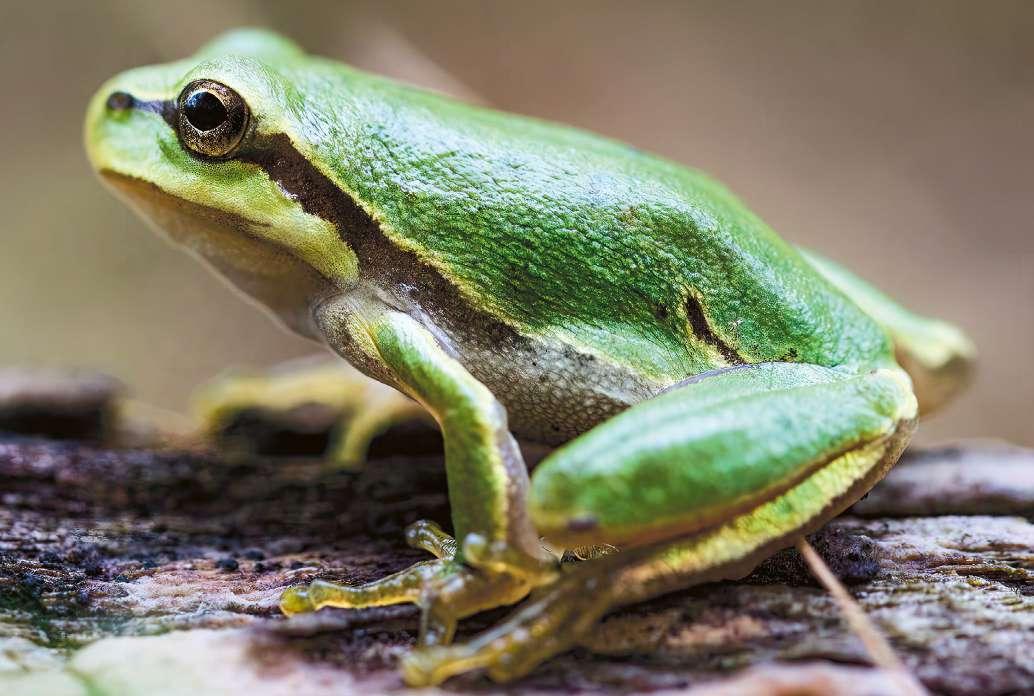
However, Prespa’s remote location and complex needs make it an expensive place to operate. With the SPP’s future funding needs in mind and a desire to preserve the future of this beloved site, MAVA needed a different approach. The foundation’s chosen solution was the Prespa Ohrid Nature Trust (PONT), a transboundary conservation trust fund created using an initial tranche of funding from MAVA and the German Ministry for Economic Cooperation and Development through KfW Development Bank, along with the technical support of WWF Greece and the Frankfurt Zoological Society. Modelled on other successful nature trusts, this innovative sustainable funding mechanism offers security for SPP and other NGOs and national parks working nearby. Lynda Mansson explained, “The creation of the Prespa Ohrid Nature Trust led to significant resources being made available for support to conservation actions in perpetuity in this important region.”
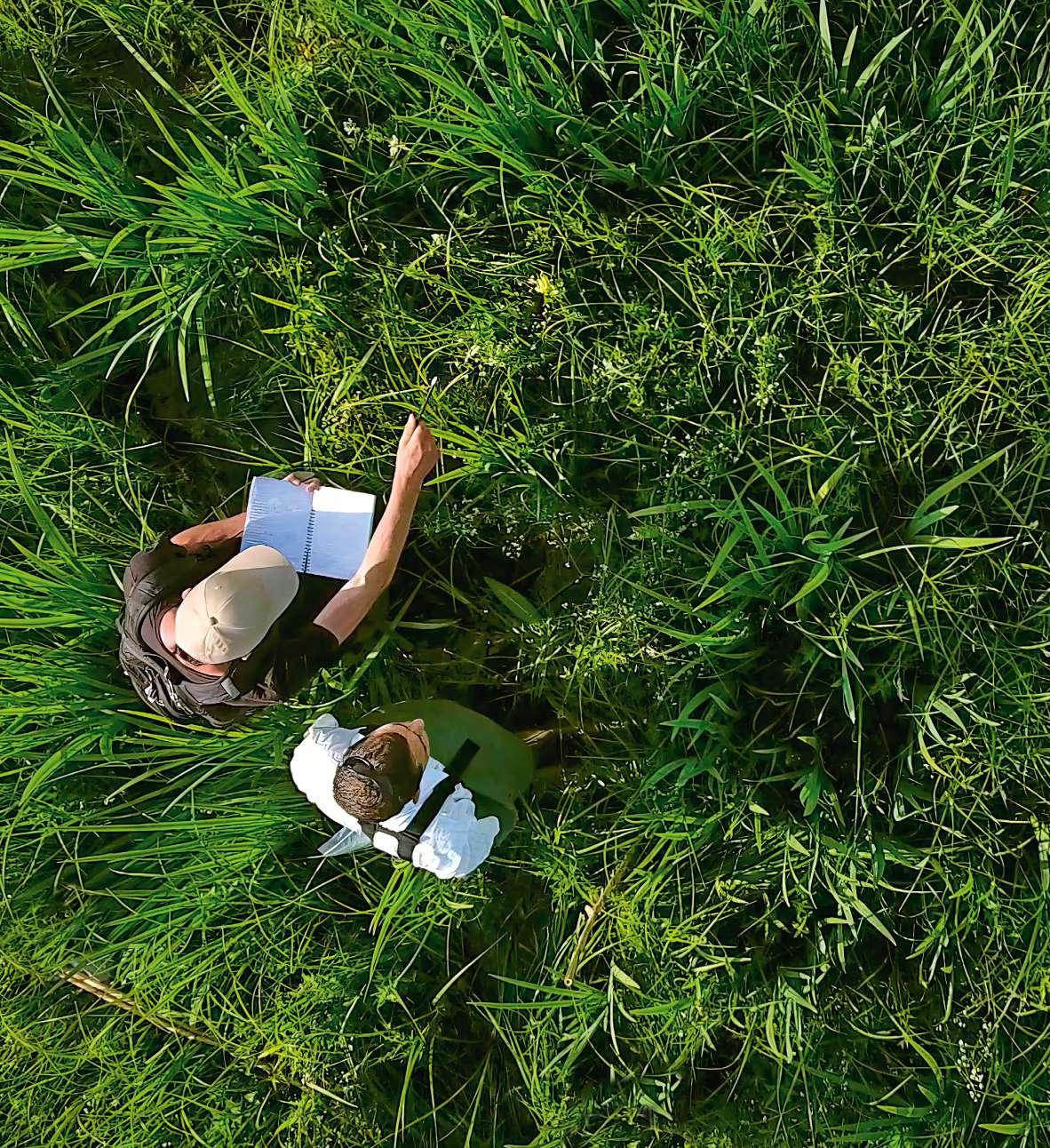
Ultimately what MAVA and the SPP began, and the three states and local communities have subsequently created together, could be seen as a living memory, a collaboration rooted in these past decades yet reaching towards the future – one that is renewed through each new circumstance and situation in which we find ourselves. In these times of conflict and uncertainty, this sense of hope has never been more important.?
Julia Henderson, Society for the Protection of Prespa
Tiniguena and IBAP’s protection of the Bijagós Islands served the archipelago’s people and nature, with their approach to conserving its natural splendour characterised by strong community engagement and involvement.
Tiniguena and the Institute for Biodiversity and Protected Areas (IBAP) were MAVA’s long-term partners in the protection of the lush Bijagós Islands in Guinea-Bissau, an 88-strong archipelago of tropical forests, turquoise waters, pristine beaches and countless rare species.
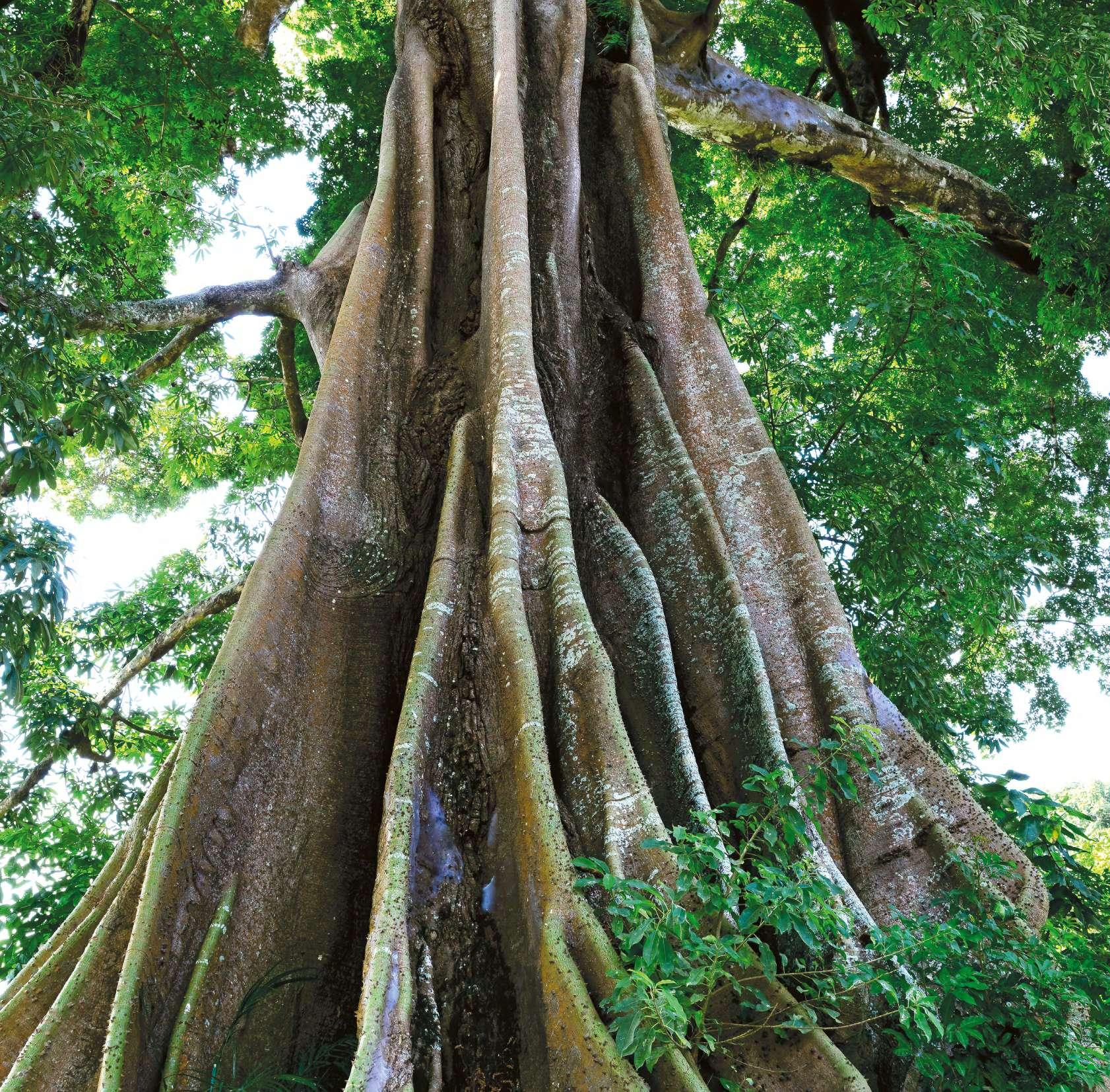
Tiniguena is a small environmental NGO founded by visionary activist Augusta Henrique in the early 1990s. Its name means ‘this land is ours’ in the local Cassanga language, a fitting tribute to the organisation’s leading role in Bissau-Guinean conservation. In 2012, she passed the NGO’s leadership on to its current director Miguel de Barros. Miguel fell in love with the archipelago’s rich natural resources and sacred waterways when he visited as a child on a learning exchange programme run by Tiniguena.
Miguel enhanced Tiniguena’s reputation as a formidable defender of the islands while simultaneously developing his own as a respected environmental advocate, Indigenous rights champion and equality campaigner. Although he was from the nation’s capital Bissau, Miguel was accepted by the Indigineous Bijagó as one of their own after he was stung by a stingray and saved by an elderly fisherman using traditional medicine – an unorthodox rite of passage that created unbreakable mutual trust.
MAVAʼs technical, financial and institutional intervention in the Bijagós Archipelago in Guinea-Bissau, West Africa has left important legacies and results – both locally and worldwide – regarding the process of integration between the conservation of species, habitats and ecosystems, and the need for the participative and sustainable development of local communities.?
Justino Biai, IBAPIBAP was set up by Guinea-Bissau’s government in 2004 to manage the country’s network of protected areas. Together, Tiniguena and IBAP form a dynamic duo, working to empower local communities, include women and enrich traditional culture as the keys to their success.
As Charlotte Karibuhoye, MAVA’s West Africa Programme Director, explained: “We cannot conserve biodiversity if we do not value local people, cultures, traditions and spiritual identity.”
Their proudest joint achievement is the creation of Guinea-Bissau’s first community-based marine protected area in the Urok islands. The area is co-managed through a unique governance system that pools the strengths of Bijagó communities, IBAP officials and Tiniguena’s staff.
Miguel de Barros, TiniguenaLocal people, including women and young people, lead on decisions regarding ecosystem management and community development, while local fishermen enforce regulations via patrols.
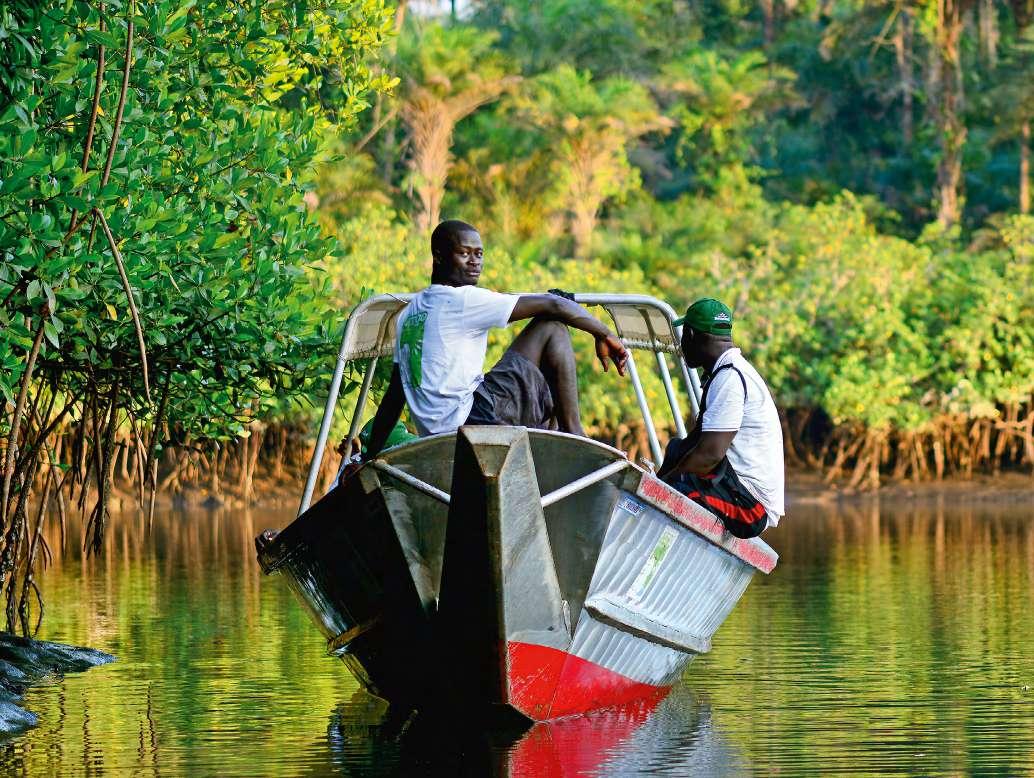
This special participatory model received global recognition and has been replicated elsewhere as a best-practice example of community-based conservation. The attention has helped attract other donors to the Bijagós Islands to sustain and develop Tiniguena and IBAP’s work post-MAVA.
The establishment of Fondation Bioguiné, a conservation trust fund designed as a sustainable financing instrument for the conservation of biodiversity in Guinea-Bissau, further secures this exceptional archipelago’s future.

In Guinea-Bissau, nature and culture are inseparable. Protected areas cover a quarter of the country, and it’s no surprise that the most beautiful areas with the most biodiversity are also the most holy.?
These stories describe how the foundation acted as a unifier to forge partnerships between grantees, develop strong networks of like-minded conservationists, convene stakeholders across borders in a common goal and rally people around promising new initiatives.
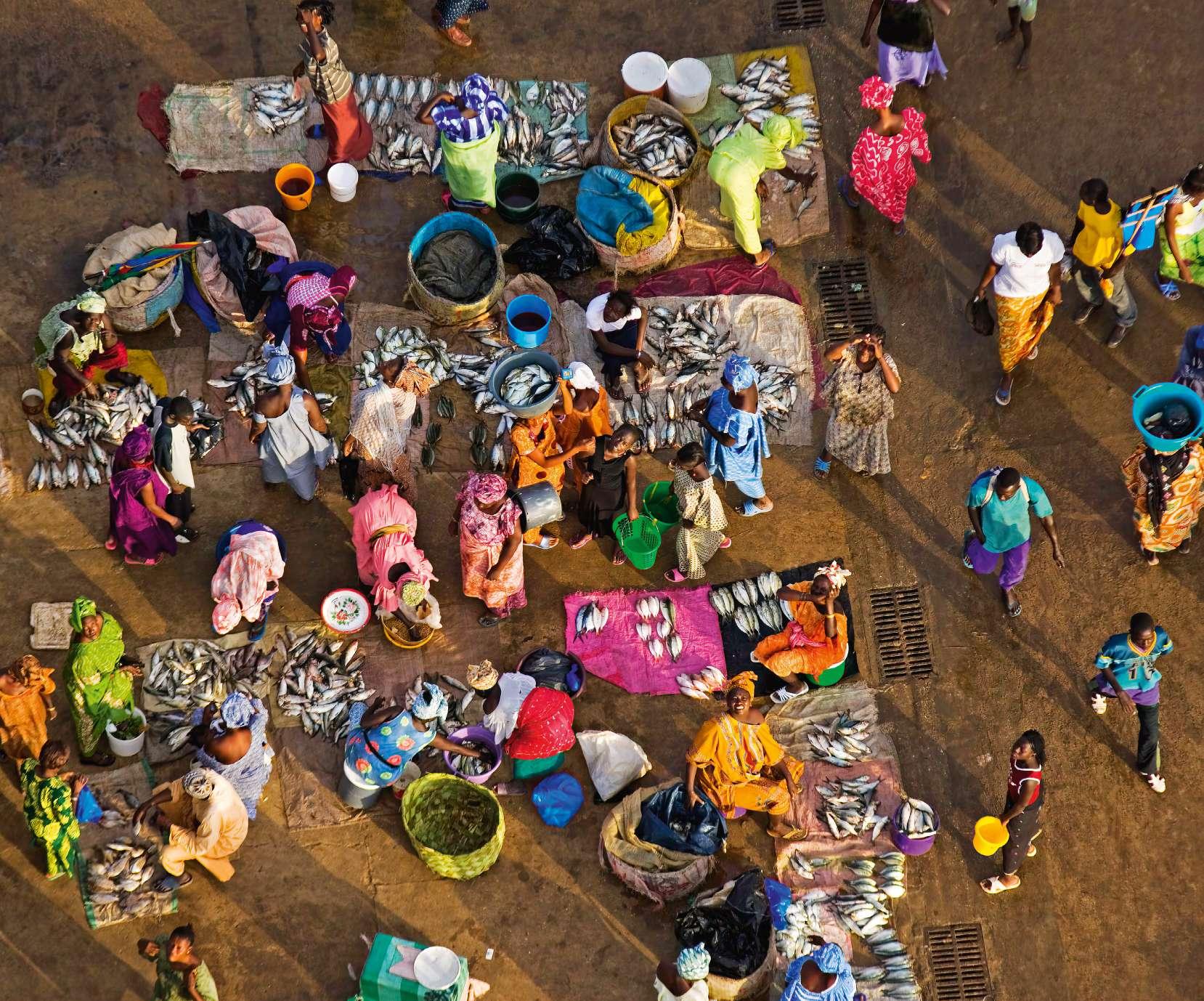
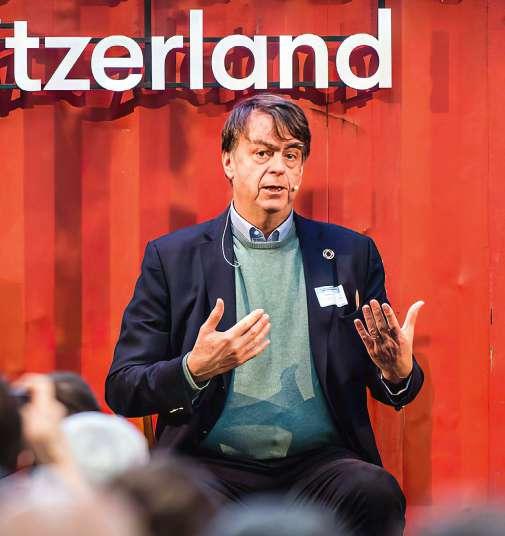
The foundation’s reputation and unifying power helped launch a powerful circular economy movement in its home country.

The foundation was able to move quickly from concept to catalyst, convening a network of interested parties including the Migros Engagement Fund and the Swiss Economic Forum. MAVA’s philanthropic reputation and André’s stature as a businessman supplied authority to the pursuit, and Circular Economy Switzerland (CES) quickly developed its own identity as a respected coordination and advocacy platform.
The CES network soon became empowered to drive forward without MAVA’s direct involvement, although the foundation continued to fund it. It worked on three levels: engaging business leaders and entrepreneurs to promote innovation, engaging authorities to promote relevant policy, and engaging consumers to influence their behaviour and consumption decisions. Today, CES has an unmistakable influence on city planning and politics while travelling down the road towards financial security.
In 2018, MAVA’s Sustainable Economy programme considered how it could promote the concept of a circular economy in Switzerland. The country is heavily dependent on raw material imports and its per capita consumption of resources is high. However, it also has a high per capita income and world-leading waste management and recycling policies. Combined with a positive initial reception to several existing small-scale circular economy projects, these conditions laid a strong foundation to build upon.
Many people contributed to the endeavour’s success. The network was expertly coordinated by circular economy campaigner Nicolai Diamant, whose experience running an open access design and repair workshop in Basel provided real-world circular economy experience that bolstered CES’ knowledge.
Together, we will achieve much more than we can alone.?
Nicolai Diamant, Circular Economy Switzerland
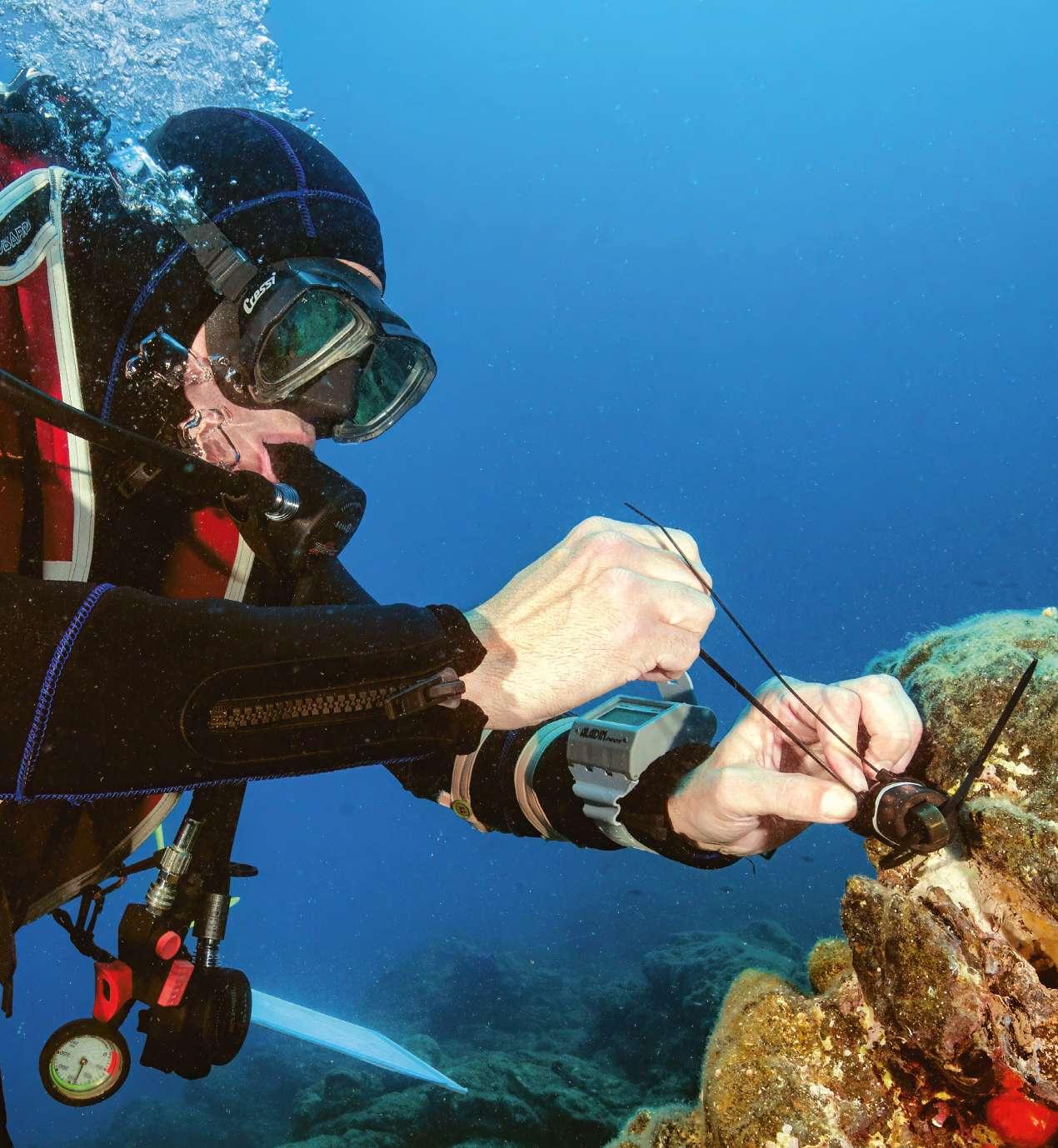
MedPAN built a strong network of Marine Protected Area (MPA) managers in the Mediterranean to promote exchange, collaboration and amplification of results.
Without MedPAN, MPA managers in the Mediterranean would be left to fight their daily battles in isolation, unaware of possible sources of inspiration, technical support and funding. They would also experience difficulties dealing with issues that stretch beyond their MPA borders, such as the conservation of mobile species like marine turtles. The network’s formation means its public institution and NGO members can collaborate and share best practices. It organises exchange visits, workshops and training sessions, amongst other activities. The network engages other key conservation players in the region, such as WWF and IUCN, to align on priorities and a unified approach, while also collaborating with other networks outside the region to amplify its impact.
MedPAN has over 130 members, who manage more than 191 MPAs throughout 21 Mediterranean countries. These contributors either have direct responsibility for managing existing MPAs, or participate in the management or development of new MPAs in the Mediterranean region. Members have a significant role in developing the network, with the MedPAN board being mostly composed of MPA managers.
There was a time when the network’s success seemed unlikely, but MAVA’s faith in its mission was justified. When MedPAN’s future looked uncertain in 2011 and it needed an extra push to fully occupy the niche it had identified, the foundation provided a tranche of unrestricted funding.
MAVA believed in us from the very beginning and was a key support to developing and sustaining the network. When MAVA began supporting us, MedPAN was small and not well recognised. That was just the beginning of the adventure!?
Marie Romani, MedPANThanks to the technical and organisational support MAVA provided alongside its grants, and excellent collaboration between the foundation’s team and MedPAN, the risk paid off. Organisational development focused on strengthening MedPAN’s fundraising capacity and building financial risk reserves to help face unpredictable events in the future. MedPAN now benefits from the support of new public and private donors, with good prospects for the sustainability of this support.
The strength of this network would not have been possible without Purificació Canals, Chair of MedPAN and Marie Romani, its Executive Secretary, who worked tirelessly to strengthen the movement and promote marine conservation, as well as the dedication and commitment of the MedPAN board and secretariat team.
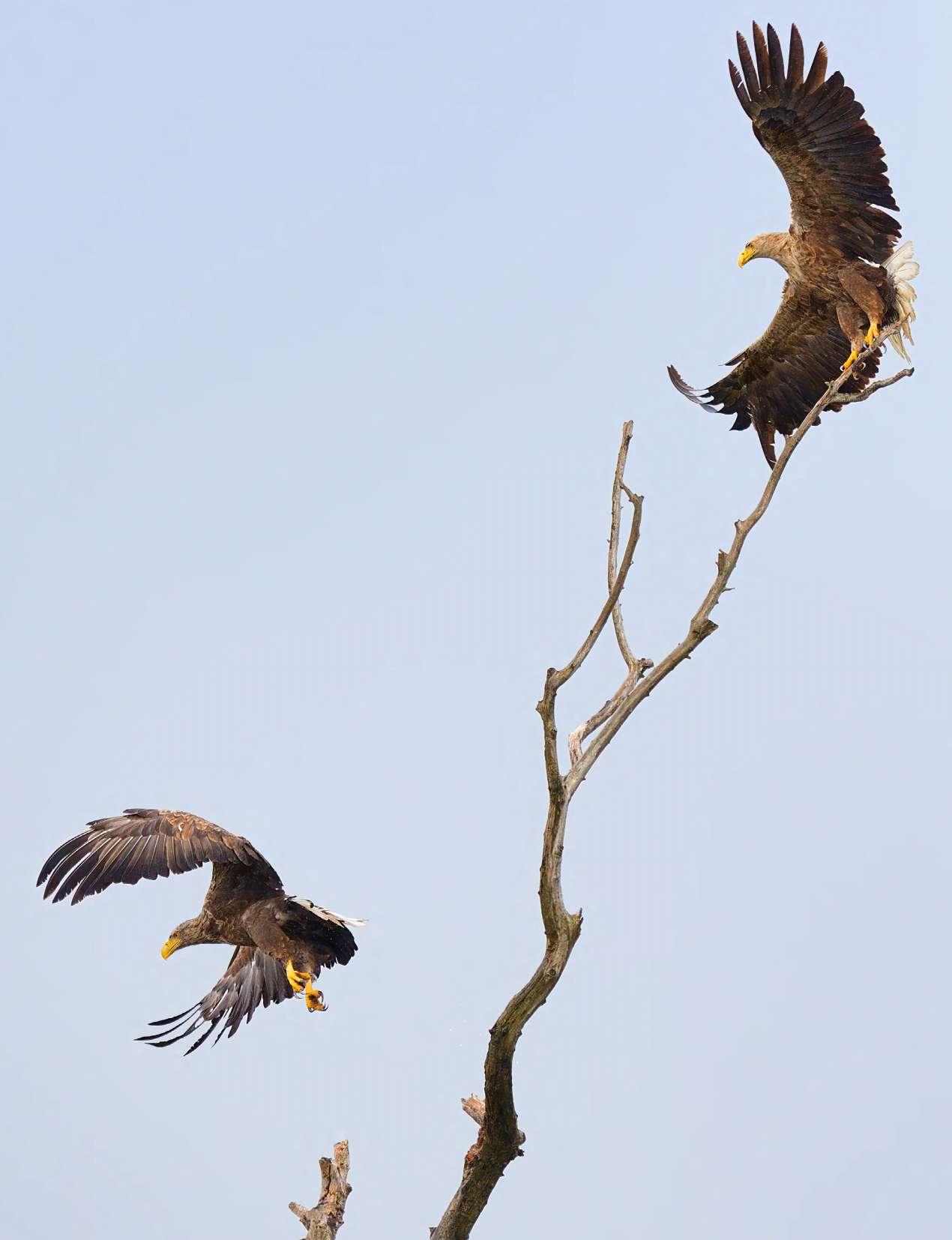
WWF Austria considerably accelerated progress to convince five countries –Austria, Hungary, Slovenia, Croatia and Serbia – to protect almost one million hectares of riverine habitat along the Mura, Drava and Danube rivers.

The Mura, Drava and Danube rivers stretch along a 700-kilometre green belt full of unmatched biodiversity. As well as hosting many endangered species, more than 250,000 migratory waterfowls use the rivers to rest and feed. Additionally, the largest population density of white-tailed eagles in Europe uses the floodplains to breed. Luc had a strong interest in the region’s waterways, so contributing to its preservation was a natural fit for MAVA.
This success story is a tale of one influential and effective man, Arno Mohl, who spearheaded the project. Arno had developed a deep love for the natural world during his childhood spent playing on the verdant banks of the Drava in Carinthia, Austria. When a dam was constructed, he witnessed the area’s destruction, cementing his determination to see this river system protected.
His perseverance and ambitious vision, supported by his companions and partners in public institutions and NGOs across the five countries, allowed the biosphere protection campaign to become a reality over 30 years of dreaming and hard work. This was achieved despite significant setbacks, including historical intercountry tensions and border disputes.
In 2021, with the cooperation of all five countries, UNESCO officially designated the Mura-DravaDanube region a Transboundary Biosphere Reserve, for the benefit of both its people and nature. As well as protecting species and ecosystems, the creation of the reserve safeguards recreational spaces for
Although the development of the biosphere reserve has a 30-year history, the partnership with MAVA made all the difference. With Holger as an advocate and benevolent supporter, the initiative delivered the essential results. If these rivers are allowed to keep flowing freely, and thus can continue to sustain the unique nature and life of local communities that depend on them, the biosphere reserve will truly go down in history as a European model of success. ?
local people, lowers the risk of floods by protecting floodplains and boosts sustainable tourism. The area is not completely protected and pressure must be maintained against the temptations of river channelling, but Arno and his international team of WWF Austria, WWF Adria and WWF Hungary remain committed to the cause.
Holger Schmid, who worked closely with Arno on the project, explained, “When the Biosphere Reserve was declared, it marked the end of a journey that has been with me almost my entire time at MAVA in different forms. It started with an outrageously ambitious goal, and we allowed ourselves to be part of this dream.”
MAVA created a powerful partnership of organisations across three West African countries to tackle sea turtle conservation, which succeeded in boosting nest numbers year after year.
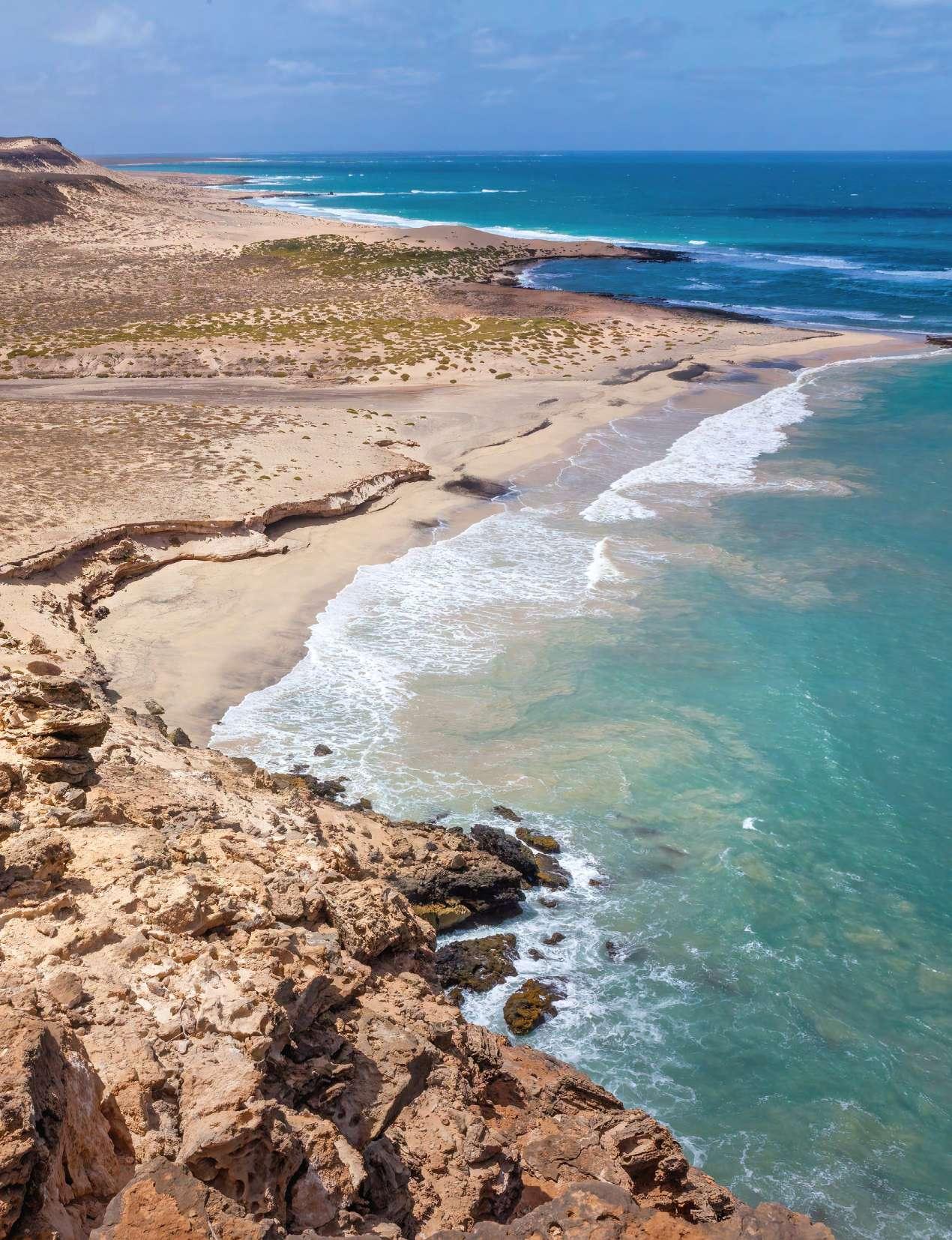
Conservation of sea turtles requires an international approach and collaboration between a broad range of stakeholders.
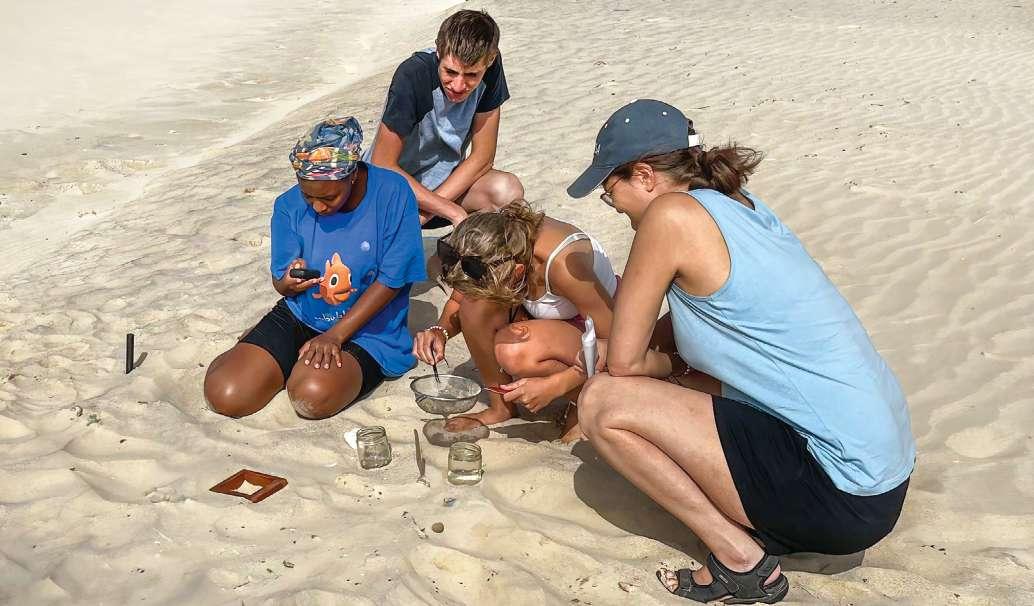
MAVA worked with Fundação Maio Biodiversidade (FMB), Fundação Tartaruga, the Turtle Foundation, the Institute for Biodiversity and Protected Areas (IBAP) and the Parc National du Banc d’Arguin (PNBA) across West Africa. This enabled a reduction in poaching, increased awareness among local communities and different national actors of the importance of conserving migratory species, protecting nesting sites, and strengthened the expertise of local implementing partners. As a result, the number of female turtles nesting across three
West African countries (Mauritania, Cape Verde and Guinea-Bissau) increased.
The foundation’s history with sea turtle conservation dates back to 2000. Its first turtle project occurred in the João Vieira e Poilão National Marine Park in the Bijagós archipelago of Guinea-Bissau, home to one of the largest green turtle populations in the world.
Talking to people living in small communities, I realised effective biodiversity conservation is essential for tackling poverty. They are two sides of the same coin.?
Aissa Regalla, IBAP
The first stone used in the construction of the park’s headquarters was laid by Luc in December 2001.
It soon became evident that the turtles also required protection when they travelled to other islands in the Bijagós, and other waters, beaches and channels in West Africa like the Banc d’Arguin.
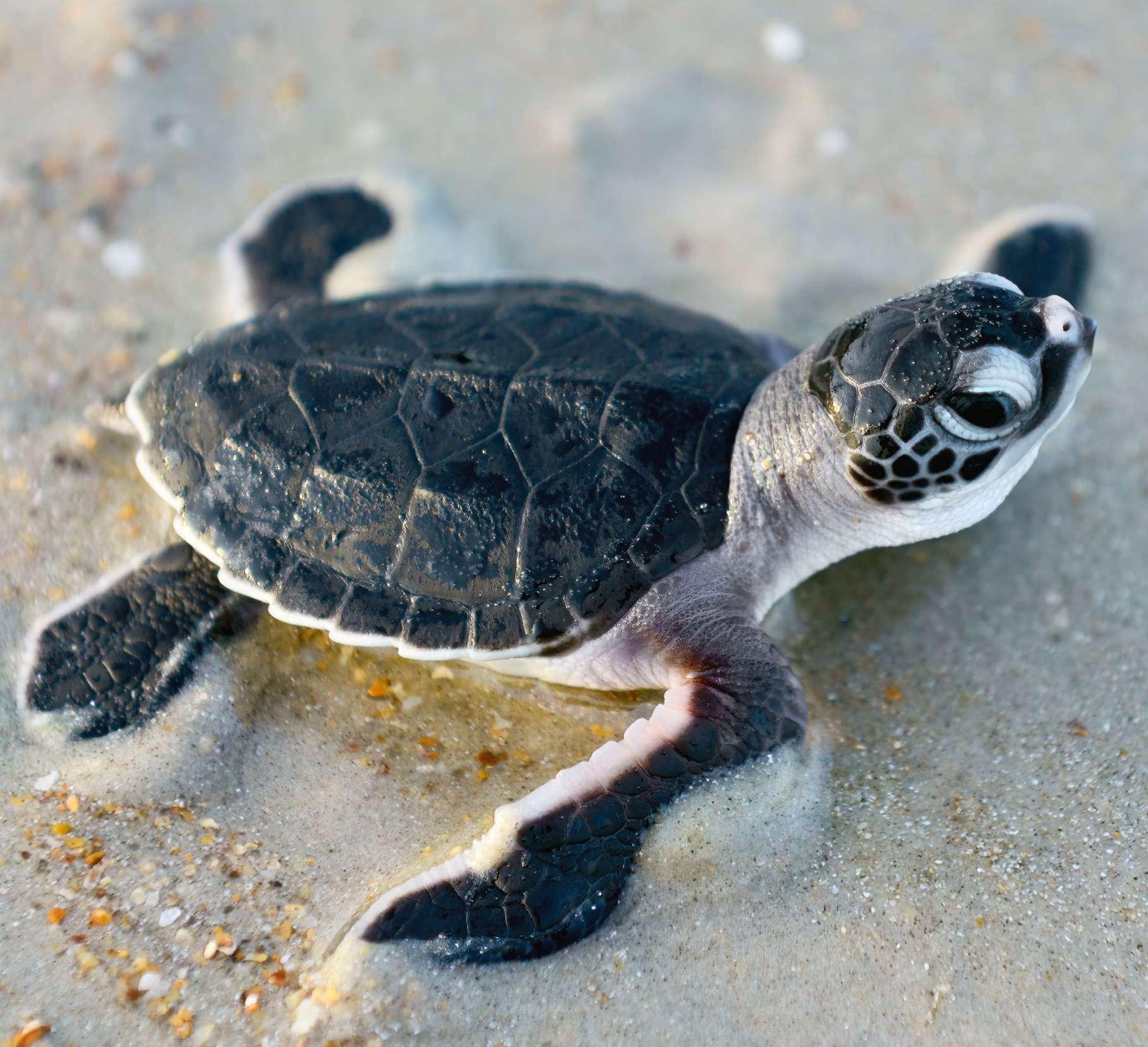
MAVA looked further afield to important nesting sites for loggerhead sea turtles, such as Boa Vista island in Cape Verde. Its team engaged with local organisations, including Fundaçào Tartaruga and its German sister Turtle Foundation, providing organisational development support and funding to help these smaller partners scale their impact.
A relationship with Fundação Maio Biodiversidade on nearby Maio island, Cape Verde, came next, extending the partnership’s protective reach further across the region. This was followed by a third phase of expansion, bringing the PNBA into the fold to protect turtles in feeding grounds across Mauritania.
Empowering local organisations was key to this conservation success. MAVA always believed that conservation is about people just as much as nature, and tackling turtle poaching requires engaging with local communities to understand and mitigate the socio-economic issues behind it as much as it needs trained rangers and protected nesting sites.
Many individuals made inspirational contributions to this cause over the years. To mention only a few: Ukie Resende from Fundação Tartaruga, who tirelessly worked to combat illegal turtle poaching in Cape Verde; Aissa Regalla, who devoted herself to engaging communities to protect threatened species for IBAP; and Rocío Moreno, whose visionary leadership at FMB made its award-winning achievements possible.
My life has changed, as has my way of looking at nature, and I’ve grown more and more passionate about turtles. As a Cape Verdean, I’m proud to be contributing to my country.?
Ukie Resende, Fundação Tartaruga
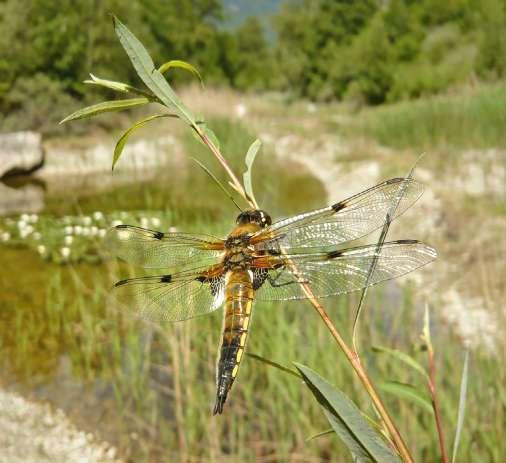
MAVA helped assemble a network of actors in the Swiss canton of Vaud to save its diverse natural heritage.
Vaud is home to many sensitive habitats, such as wetlands and meadows. Its natural heritage is stunning, including the Jura mountains, lowland Plateau and Prealps. However, MAVA recognised that impending development plans risked the health of these ecosystems and the myriad species they supported.
The existing Swiss Biodiversity Strategy was encouraging, but Vaud lacked the resources to implement it. Although other actors, such as local NGOs, research institutions and municipalities, were already working independently to preserve the canton’s biodiversity, MAVA identified the inefficiency of this siloed approach.

MAVA utilised its convening strength to unite a community of Vaudois stakeholders for the first time, including the Direction Générale de l’Environnement of the Canton of Vaud, creating the Plateforme Nature Vaudoise. It immediately became apparent that the group’s first mission had to be unlocking more federal money, which would be critical for sustainable success.
The coordination and facilitation skills of Jérôme Pellet, manager of MAVA’s Switzerland programme, were key to leveraging this large tranche of funding from the Swiss Confederation. He explained, “It takes a strong convener like MAVA to bring a group like this together, but it’s vital. We all need to sing from the same hymn sheet.” The support of board member Hubert du Plessix, who was also the president of a wetland conservation organisation in Vaud, proved
invaluable, as was MAVA’s decision (after some deliberation) to take the unusual step of funding the canton directly.
Plateforme Nature Vaudoise remains a strong committee with a unified voice, shaping the canton’s biodiversity strategy while driving bigger projects, thanks to increased cantonal funding. Part of its strength lies in the participation of several committee members in the MAVA Leaders for Nature Academy. This capacity-building ensured they could make tremendous contributions to Plateforme Nature Vaudoise’s successes.
The creation of the Plateforme Nature Vaudoise, driven by MAVA, created a new dimension to our work by integrating us within a cantonal network for the first time. The resulting strategic discussions and opportunities for consultation and self-reflection have proved essential to achieving our common mission of preserving biodiversity and the ecological infrastructure of our region.
MAVA aimed to deliver sustainable change in the projects it supported, in order to achieve long-term conservation successes. This kind of conservation work often takes a long time to achieve the desired results, making patience and perseverance necessary qualities for both conservationists and funders. Some of these stories describe years of commitment paying off, while others describe testing challenges overcome by persistence and tenacity.
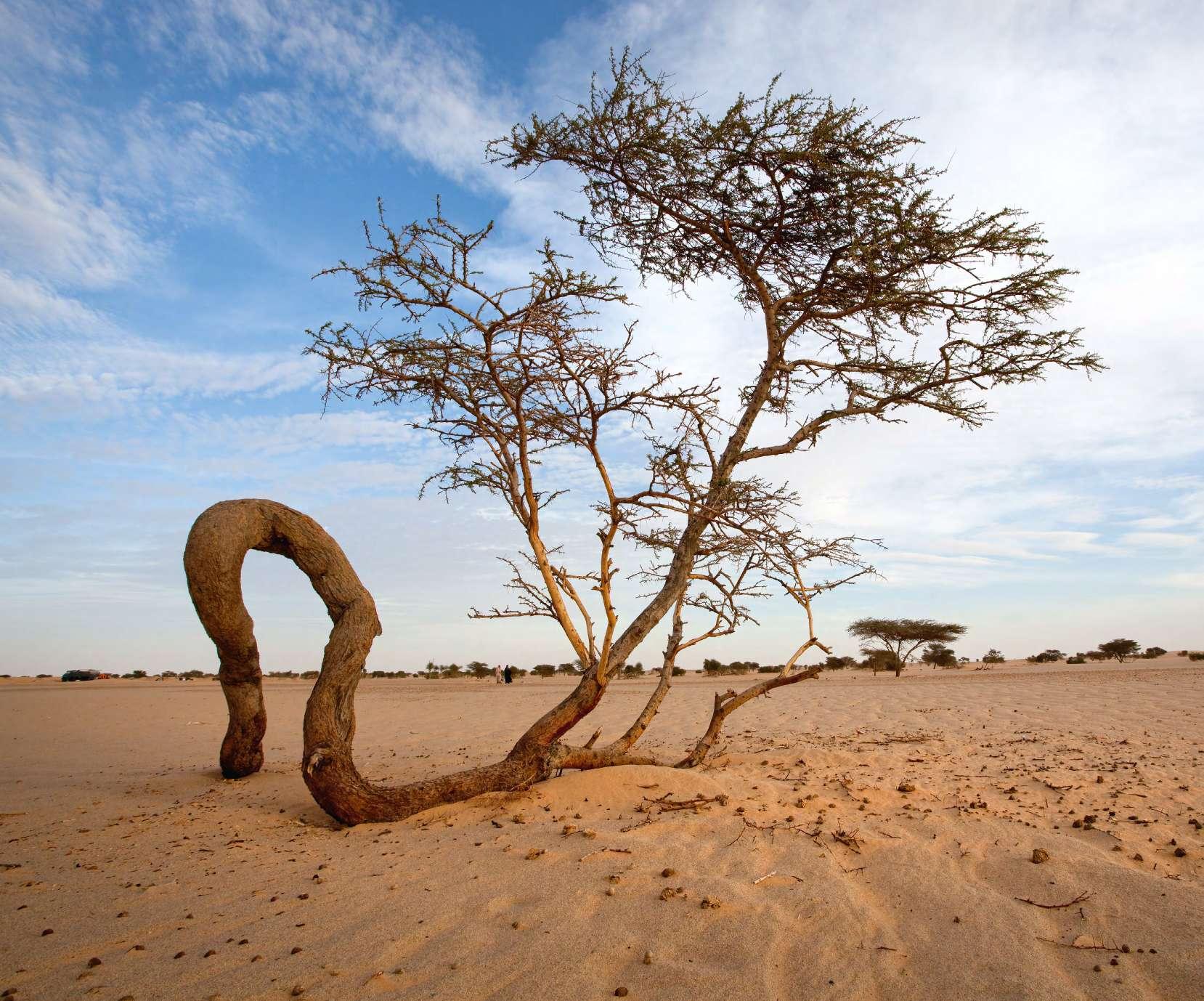
EuroNatur harnessed the charismatic endangered Balkan lynx to protect swathes of the region, with support from its local partners and MAVA.
With fewer than 50 individuals remaining, the Balkan lynx, a subspecies of the European lynx, is critically endangered. Scattered along the Balkan Green Belt, primarily in the border region between Albania, North Macedonia and Kosovo, the lynx is threatened by poaching, unsustainable hunting resulting in a potential lack of prey, the destruction of its habitat due to deforestation, and habitat fragmentation because of infrastructure development. But the lynx is a beautiful, photogenic wildcat. This was harnessed to boost public engagement in its conservation while helping draw awareness to broader Balkan conservation issues.
Unlike many large conservation NGOs, EuroNatur puts its national partners in the driver’s seat, empowering small organisations and enabling their actions. To save the Balkan lynx, EuroNatur partnered with KORA, an organisation specialising in carnivore ecology and wildlife management, combining its communitybuilding and conservation skills with KORA’s scientific and monitoring expertise. The project was initiated by celebrated lynx ecologists Christine BreitenmoserWürsten and Urs Breitenmoser, experienced conservationist Annette Spangenberg and the support and passion of many others.
With the Balkan lynx as the flagship species for the forests and mountains of the Balkan region, the profile of its conservation issues was raised. Several protected areas were created and the lynx was officially added to the IUCN Red List as a critically endangered subspecies. Educational programmes in schools were an effective community engagement
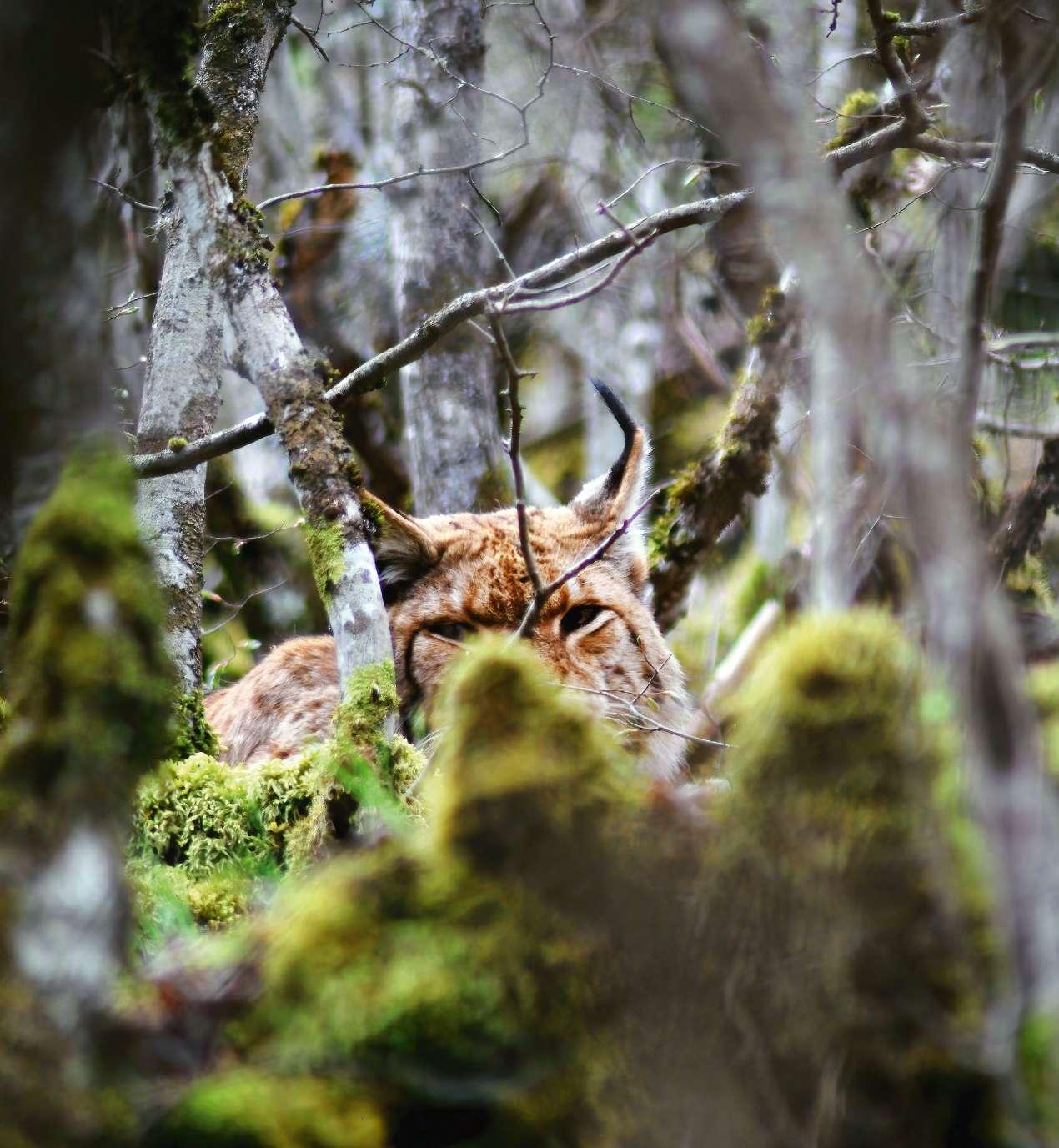
tactic, reaching thousands of children. Camera traps helped increase understanding of where to direct conservation efforts and funds by providing deeper insight into lynx behaviour.
The Balkan Lynx Recovery Programme contributed to transboundary cooperation. Today, conservationists from North Macedonia, Albania, Kosovo and Montenegro work together across cultural and political boundaries and engage in lively exchange. I am grateful to be part of this great initiative!
Annette Spangenberg, EuroNatur
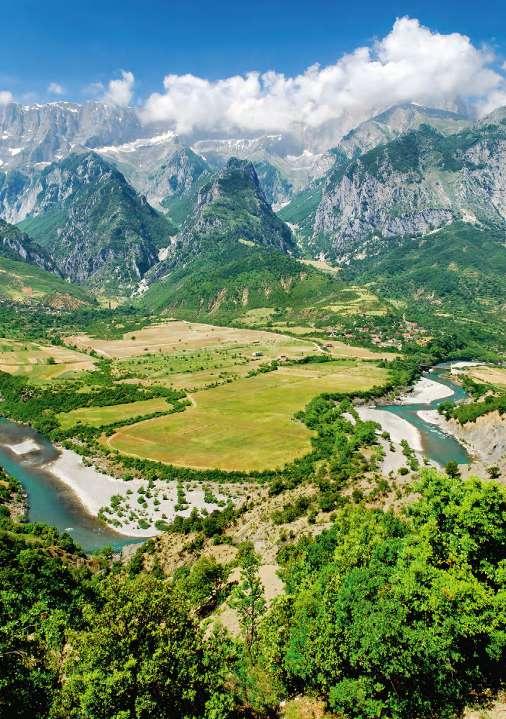
Aleksandar Pavlov of the Macedonian Ecological Society said of the project, “My biggest takeaway from MAVA’s involvement with the Balkan Lynx Recovery Programme, on a personal level, is the tremendous opportunity to work on the conservation of this rare animal, which helped me grow into a wildlife researcher. However, on a wider scale, my biggest satisfaction is how our concerted conservation efforts have helped transform the Balkan lynx from a nearly mythological forest dweller to an actual flesh-andbone animal people take pride in. It warms my heart to see more of them getting onboard to ensure this critter a fighting chance in the wild! Thank you, MAVA, for spurring this noble work!”
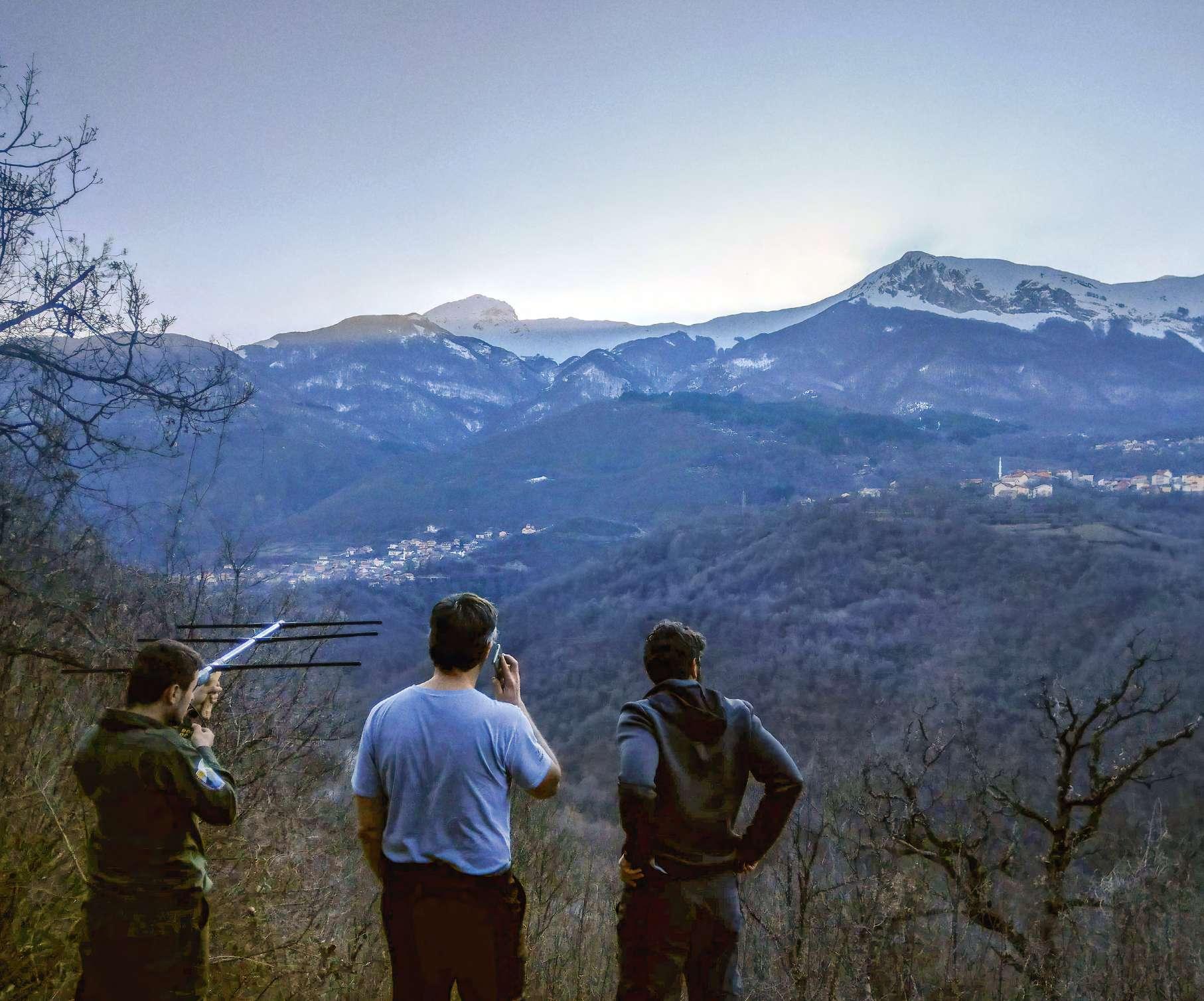
EuroNatur was MAVA’s eighth largest grantee. The foundation’s long-term support and sizeable funding meant it could patiently progress towards obtaining the support of local authorities and build the capacity of national NGOs, which eventually turned this short-term project into a long-term programme.
“It is extremely difficult to see a lynx in the wild. Most of the time we only find tracks, photos on camera traps or a sign of life, like a signal from a GPS collar, and it is exciting to know in that moment that the lynx is somewhere there, in the vastness of the Mavrovo National Park, in his original habitat, where he is supposed to be. Thanks to the support of MAVA over the last 15 years, much has been done for the protection of lynx in North Macedonia, Albania and Kosovo with the scientific support of KORA and many locals. The work will continue.”
Lisa Leschinski, EuroNatur
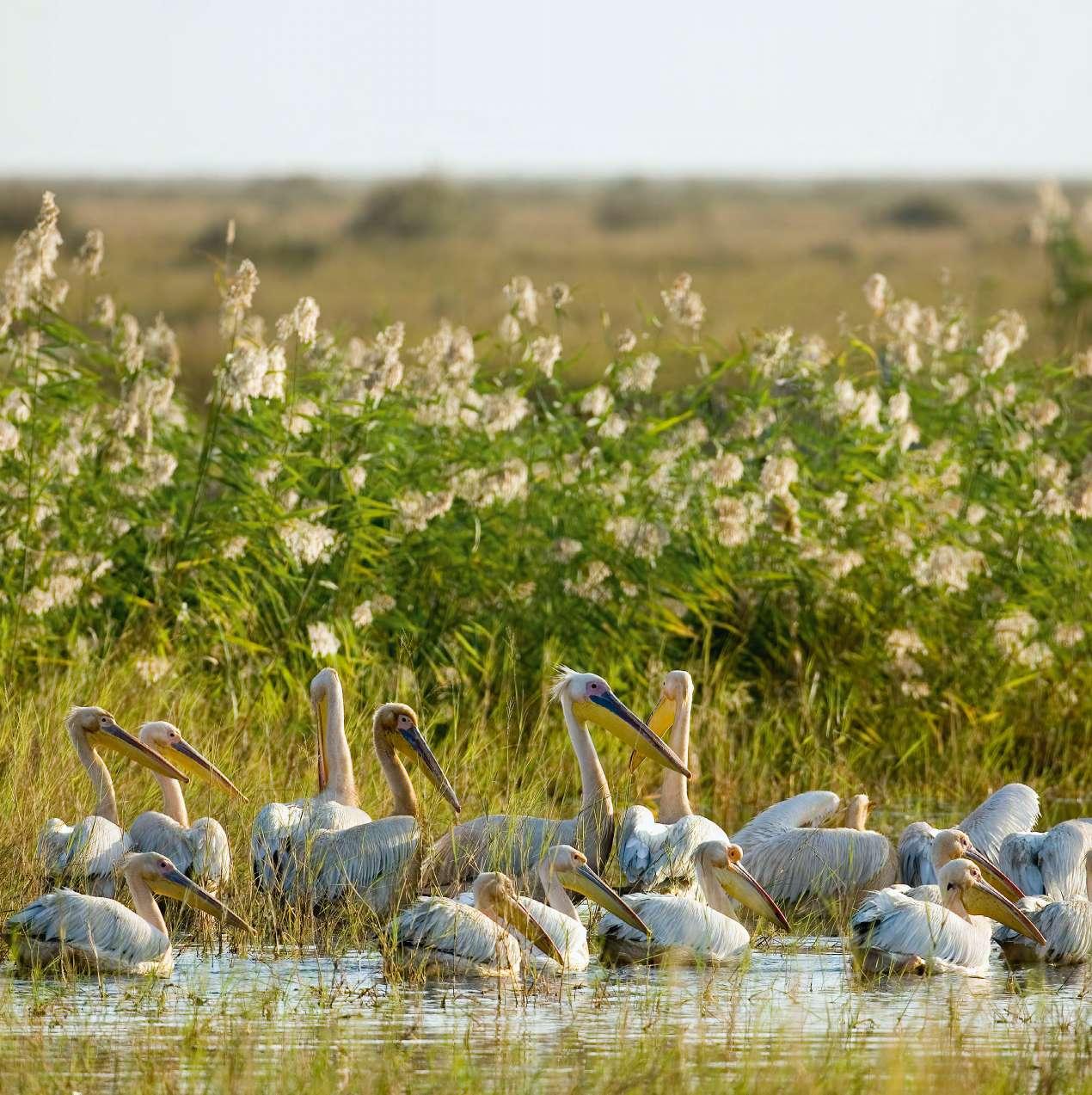
Despite a rocky beginning, the Regional Partnership for Coastal and Marine Conservation developed into a powerful coalition of over 80 national and international organisations, orchestrating coastal conservation across seven countries in West Africa.

The Regional Partnership for Coastal and Marine Conservation, better known by its French initials PRCM, was born out of Luc’s determination to spur closer collaboration between big international non-government organisations (BINGOs), particularly in West Africa. He recognised the inefficiency of working separately and thereby competing for funding, rather than pooling their resources and expertise.
There was no clear candidate to manage this regional-level, multi-country and multi-stakeholder collaboration. MAVA therefore designed PRCM
to fill this gap, forming a coalition to encourage a streamlined approach between BINGOs working on West African conservation.
Whilst the idea was simple, the execution was not. PRCM went through many iterations and refocusing exercises, with its future seriously in danger at its lowest point. But throughout the difficulties, MAVA remained by its side, providing core support and strategic orientation. Eventually, MAVA and PRCM found a winning formula, catalysing collaboration between a broad range of over 80 conservation actors and creating a dynamic movement for change.
I remember attending a MAVA board meeting in Switzerland where PRCM’s future was in the balance. When Luc Hoffmann said it was a pioneering initiative that could serve as a model for other parts of the world, it encouraged and inspired me enormously –knowing people wanted to help us, and that we should do the same for ourselves here in West Africa.
Ahmed Senhoury, Regional Partnership for Coastal and Marine ConservationPRCM became an NGO in its own right, developing a reputation as the key player in West Africa for donors, other NGOs and decision-makers to engage with.
This success is largely down to the consummate leadership of Ahmed Senhoury, PRCM’s Executive Director. Praised for his diplomacy and patience, Ahmed is a passionate conservationist who has taken PRCM from strength to strength in recent years. His small team approaches conservation from many angles: mobilising funds, delivering training, working with local communities to protect vulnerable species, influencing national, regional and international policies and shaping protocols.
In addition to becoming a capable partner for MAVA in West Africa, PRCM was also recognised and funded by other donors. These donor relationships and fundraising success gradually reduced PRCM’s dependence on MAVA. Many conservation challenges remain, but PRCM is well-equipped to face them.
Under the enlightened leadership of Ahmed Senhoury, PRCM has reached an exemplary stage of maturity, with many partners and accumulated successes. Today, it represents an essential point of convergence around which most of the coastal and marine conservation initiatives in the region revolve and, as such, benefits from diversified support. The PRCM is thus facing the numerous and complex challenges of the future with all the necessary assets. In this respect, it can be said that FIBA, and later MAVA, have played a major role in accompanying the development of PRCM from its creation to its adulthood, a magnificent example of cooperation and resilience.
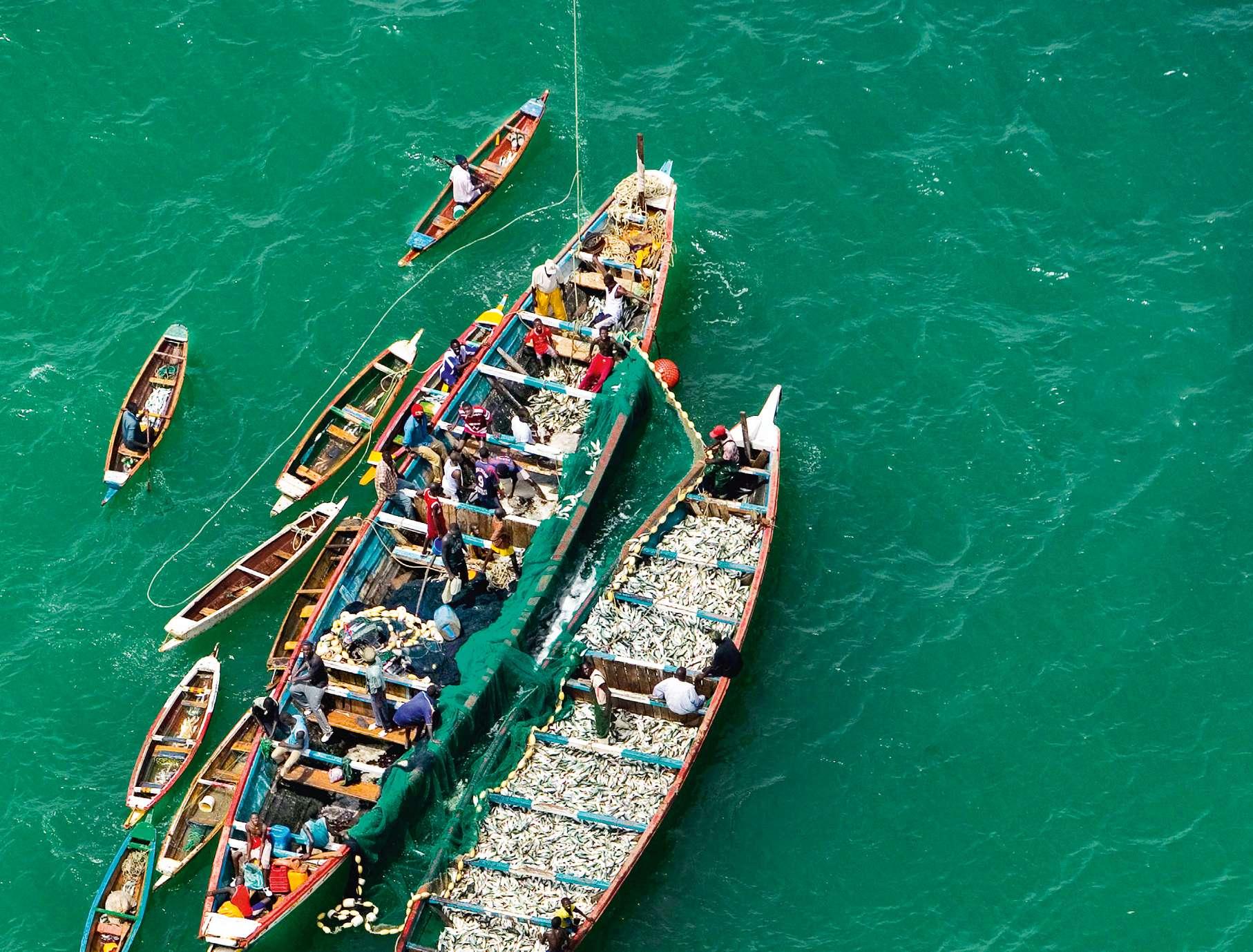 Pierre Campredon
Pierre Campredon
MAVA observed that Swiss agriculture was going in the wrong direction for both people and nature, with farmers struggling financially and biodiversity a low priority. With no other actors engaged in this issue, MAVA supported the creation of an ambitious think tank that succeeded in changing the country’s constitution.


Vision Landwirtschaft (VL) is a Swiss agricultural think tank independent from government funding. It’s a small, nimble organisation that punches well above its weight on agriculture reform, collaborating with over 30 partners, including political parties, to create a movement for change in farming. MAVA helped establish VL and remained its main funder for many years.
The Swiss Constitution contains a 1996 article on agriculture, enshrining specific commitments – to agriculture that’s diverse and healthy, produces food and value for society, and for which farmers are fairly paid – but no one was holding the industry or
government accountable to these promises. Through practices like widespread use of harmful pesticides and agriculture’s dependence on billions of francs in state subsidies, the situation was leading to economic disaster. VL was the only body suggesting alternative ideas for agriculture and, eventually, the right people started to listen.
Thanks to tireless campaigning from VL, parliament ruled in 2014 to increase the proportion of Switzerland’s CHF 4 billion annual agricultural subsidy that directly supported sustainability –including crop diversification, animal welfare and healthy ecosystems – from 20 to 50 per cent. There is more work to do and VL’s mission continues, but this ruling made an enormous difference.
VL’s successes wouldn’t have been possible without many years of cooperation between committed, experienced and knowledgeable people, alongside the dedication of its founder, Andreas Bosshard. With a background in organic farming and seed producing, and a passion for sustainable agriculture, Andreas was perfectly positioned to drive change, and MAVA provided him with the funding to do so. After the departure of Andreas from the project, VL’s future is less certain than other entities or projects featured in this section of the book. However, VL has secured project funding and continues to seek core funding.
As a small organisation, at first we didn’t really believe we could make a difference but we’ve realised, yes, we can!
Andreas Bosshard, Vision Landwirtschaft
With support from the Hoffmann family and later from MAVA, Association TAKH and Khomyn Talyn Takhi ran one of three Mongolian reintroduction projects that helped take the Przewalski horse from a few survivors in zoos to a 900-strong herd in their natural habitat of the Mongol steppe. The project now appears on the list of success stories managed by IUCN partner Reverse the Red.
This is a beautiful conservation story with a clear leader – Claudia Feh, a Tour du Valat alumni who dedicated her life to reintroducing the Przewalski horse into the wild. Over several decades, TAKH and its partners used some of the few remaining members of the species in zoos to build an established population in Mongolia. The idea seemed crazy, but eventually became a reality thanks to the drive and passion of everyone involved. Before Claudia’s mission began in 1990, the last recorded sighting of a Przewalski horse in Mongolia was in 1969, at the edge of the arid Gobi desert.
To rebuild the population, TAKH started by gathering 11 individual Przewalski horses from zoos and releasing them at Le Villaret on the Causse Méjean, part of the Cévennes National Park in France, to create a semi-wild herd. The horses learned to adapt to new physical conditions and, most importantly, to a natural social environment before the truly ambitious stage of Claudia’s plan began in 2002 – transferring the horses to their ancestral home in Asia.
For speed and border-crossing practicality, TAKH transported the horses by plane. They were accompanied by Luc Hoffmann and Jean-Paul Taris, along with the TAKH team. The horses eventually reached Khar Us Nuur National Park in the Khomyn Tal community of western Mongolia.
In collaboration with local herders, TAKH protects a 14,000-hectare, partly fenced enclosure in this
region, with the goal of ultimately removing the fence to allow the Przewalski horse population to roam freely. In 2020, the Mongolian government created the Khomyn Tal National Park to further support the conservation of this emblematic horse population.
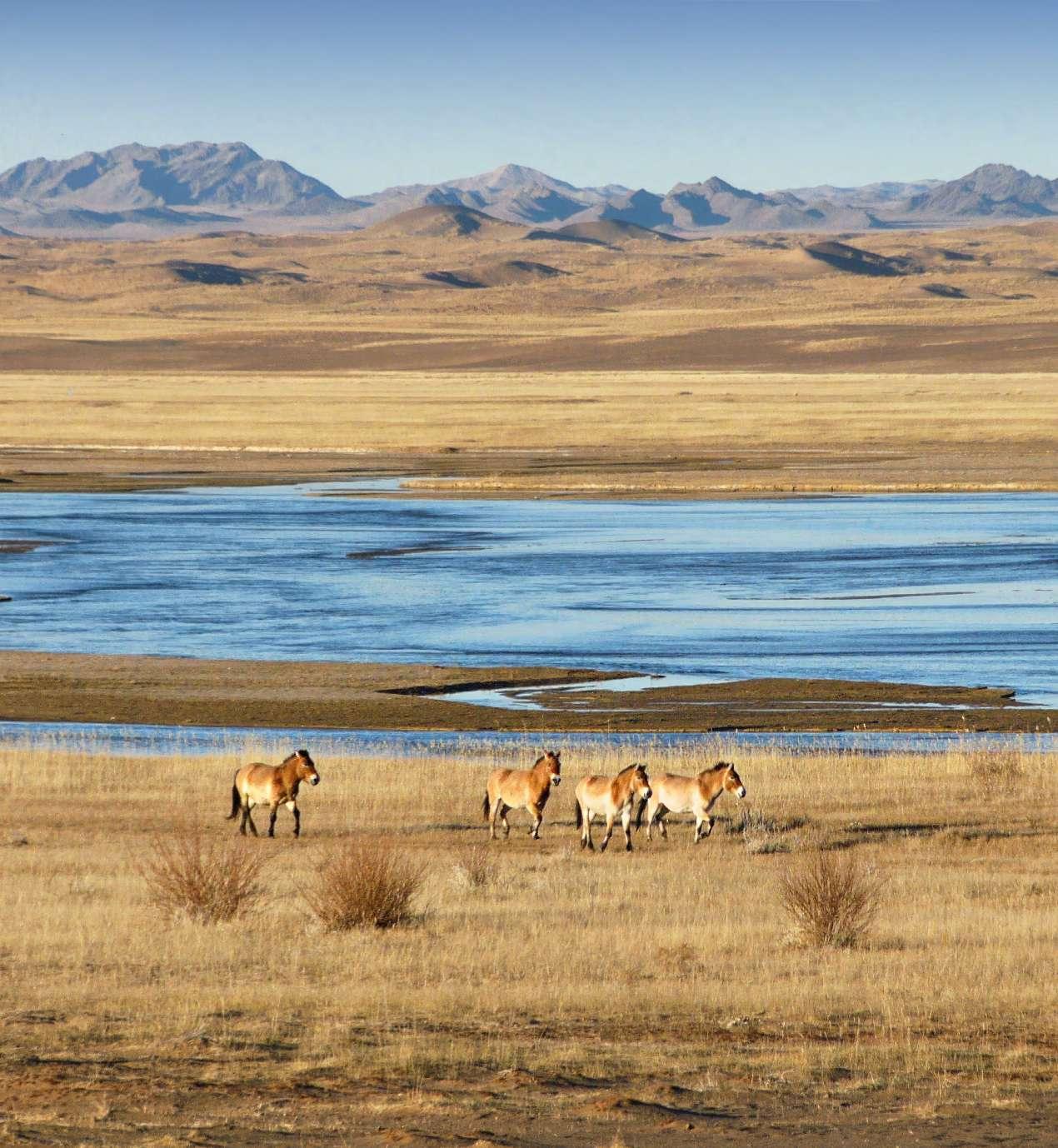
TAKH helped establish Khomyn Talyn Takhi (KTT), a Mongolian NGO, to operate there. KTT worked with local communities to develop new income-generating activities outside of their traditional breeding of sheep, goats and camels, with the goal of reducing the risk of hybridisation with domestic horses.
Today, TAKH is developing Le Villaret into a scientific ecotourism centre, increasing its financial security while promoting the habitat of Causse Méjean and Przewalski horse conservation. In collaboration with local authorities, KTT will take over responsibility of the new Khomyn Tal National Park. Fundraising is likely to remain a challenge, but the Przewalski horse population in Mongolia continues to grow.
TAKH’s Sally Zalewski and Jean-Louis Perrin concluded, “There have been many people involved in this project since its inception, but it is thanks to the vision and the persistence of Luc and Maja Hoffmann, who keenly followed and supported the project throughout, that the Przewalski horse is now repopulating the Mongolian steppe. What a unique and extraordinary achievement to enable the reintroduction of a species that has become extinct in the wild. A true legacy to the natural world.”
Bringing back a species from ‘extinct in the wild’ to some populations numbering several hundreds of individuals living a free life is not an easy task, especially for a slowly reproducing large mammal. Affinity between living beings is essential to succeed, ethologists would say. But somehow it was easy. All we needed was a bunch of happily wild, crazy people (conservationists) and not yet quite happy, wild, crazy horses (to be conserved) around the world, disagreeing all the time but gathering together like one herd against outside threats.
CBD-Habitat conserves some of the most iconic endangered species in the world. With MAVA’s funding and organisational development support, the organisation helped the Mediterranean monk seal progress from near-extinction to an established, protected colony.
The Mediterranean monk seal is one of the most endangered marine mammals on Earth. Their numbers dwindled due to habitat loss from urban development, entanglement in fishing nets and natural causes. For the first few months of their lives, monk seals are defenceless against rough seas and stormy weather, leading to high infant mortality. These creatures were close to Luc’s heart and he personally encouraged CBD-Habitat to help them.
Their main colony lies between Mauritania and the territorially disputed Western Sahara, an overlooked region that receives little attention from conservation funders, near the fast-growing city of Nouadhibou.
Conservation issues are usually complex and this was no different. Firstly, the colony’s rest and breeding area required protecting so the birth rate could increase. In 2001, CBD-Habitat and the local authorities created the Costa de las Focas Reserve in Cabo Blanco to protect the breeding caves and their surroundings.
The next issue was survival rate. The seals required safeguarding from fishermen, so CBD-Habitat had to understand how to avoid accidental entanglement and why fishermen might illegally entrap or persecute them in the first place. In another example of people and nature’s interdependence, a programme
to improve the living and working conditions of fishermen and an environmental outreach scheme in schools helped encourage community engagement in the seals’ plight.
After two decades of hard work, the annual number of births in the colony almost quadrupled and its size reached over 350 individuals. Through technologybased monitoring, each member of the colony was catalogued and tracked. CBD-Habitat has gained a reputation as the leader in monk seal conservation which will help to ensure its financial sustainability.
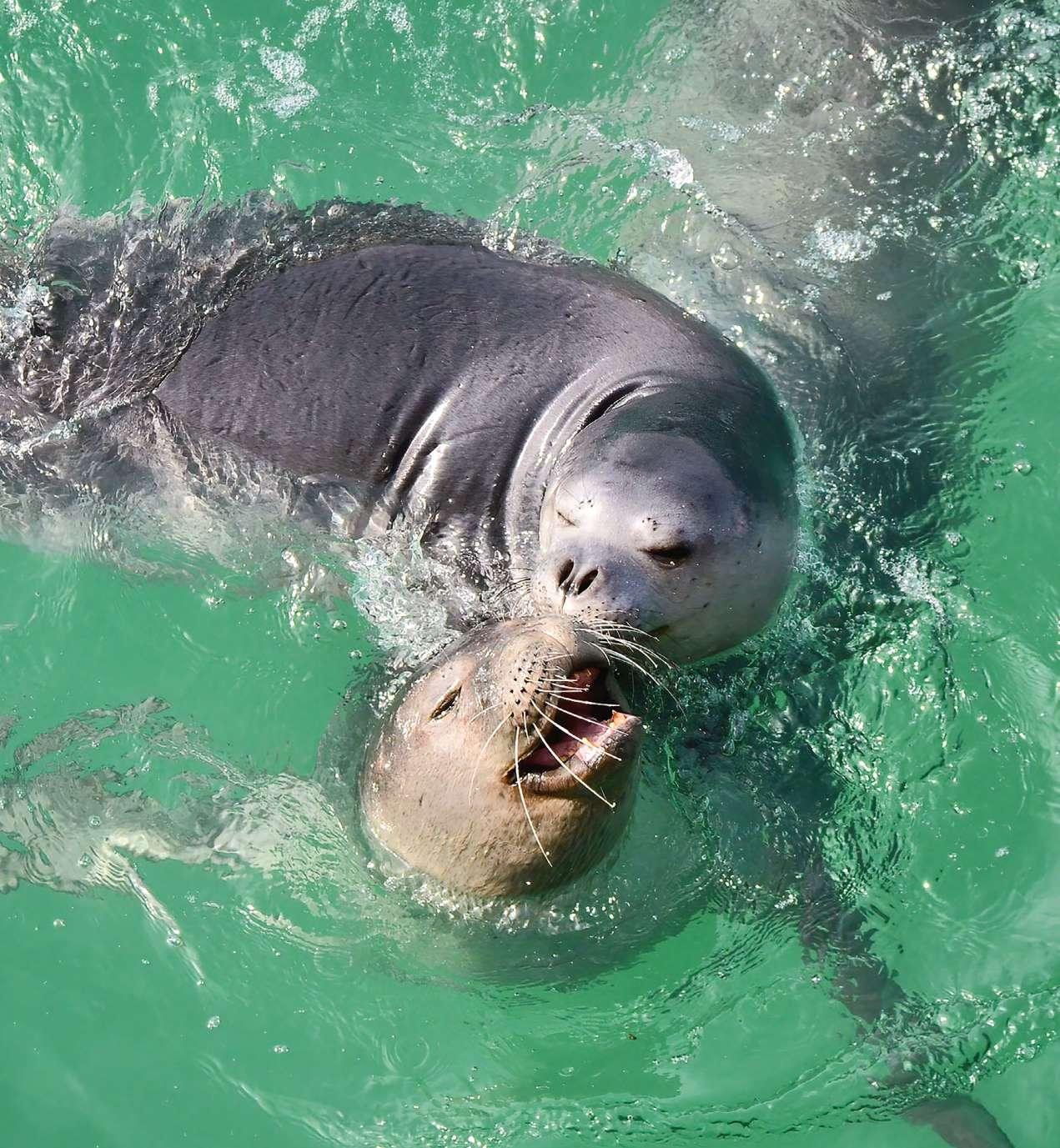
CBD-Habitat also empowered its local sister agency, Annajah. The two organisations work together in Mauritania; their combined efforts in the Costa de las Focas Reserve turn the spotlight towards the seals and encourage the creation of other protective bodies.
In recognition of the need for broader collaboration between the various actors investing in monk seal conservation, MAVA helped form the Monk Seal Alliance in 2019 with four other foundations. As one of the Monk Seal Alliance’s many beneficiaries, CBD-Habitat will receive funding for its ambitious plans. This will include translocating the seals to their traditional habitat of the Mediterranean region’s beaches, where their vulnerable young have a better chance of survival.
From nurturing emerging talent in the conservation field to building the capability and ambition of fledgling NGOs, these stories encapsulate MAVA’s commitment to building the capacity of people and organisations, ensuring they, in turn, are at the vanguard of tackling today’s most pressing social and environmental challenges.
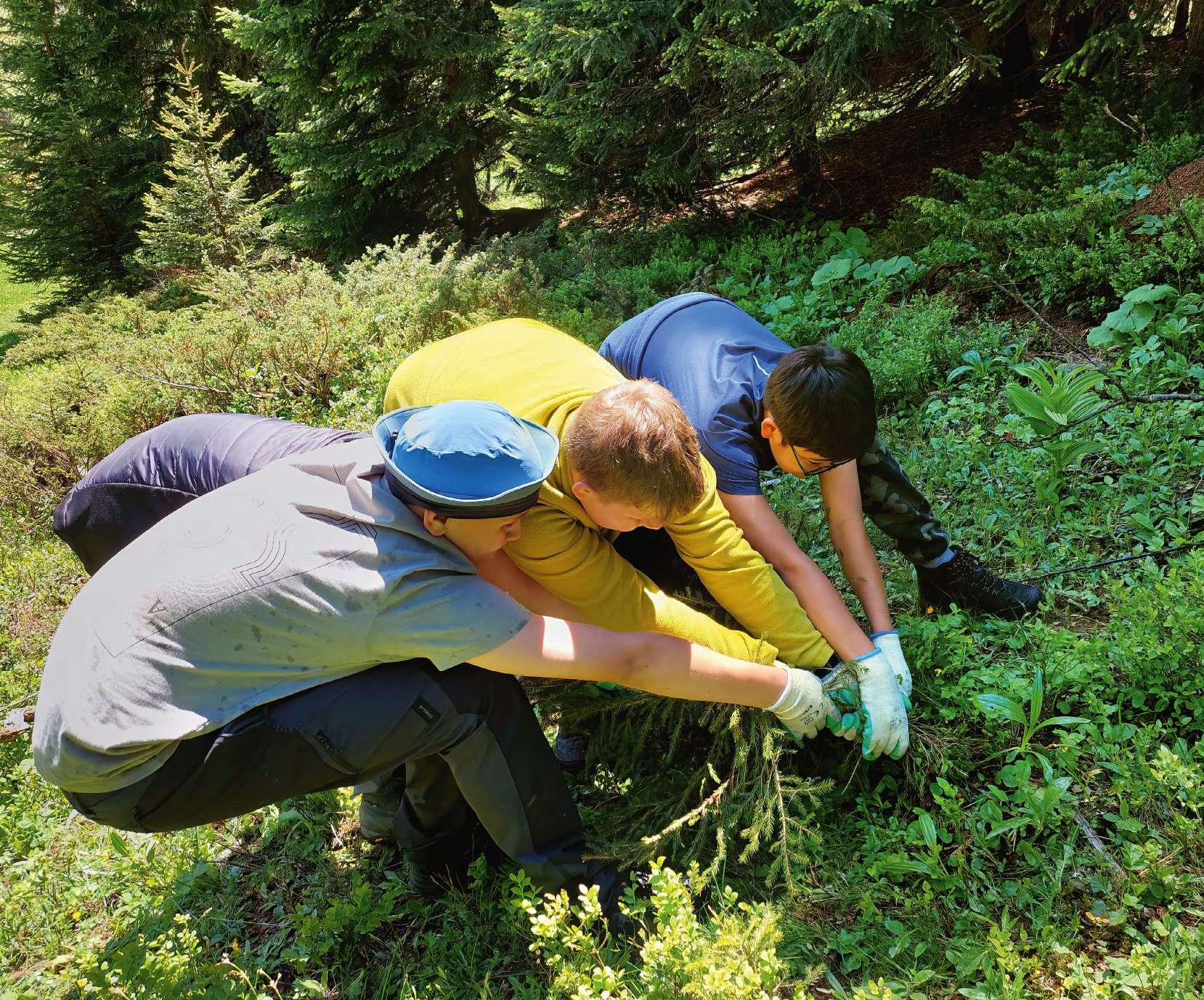
Mowgli Mentoring and Common Purpose were instrumental to the success of the MAVA Leaders for Nature Academy. The Academy’s audacious and unique approach, based around intergenerational collaboration, resulted in transformational impact beyond the individual level. It helped 176 partners to enhance their leadership skills and build personal and organisational resilience, alongside reinforcing connections between teams and partners and ultimately strengthening the environmental sector.
From 2016, MAVA’s focus was ensuring its partners would continue thriving after its closure in 2022. Building a stronger conservation community was vital, but it wasn’t immediately clear how this could be achieved. The foundation identified several gaps relating to leadership development, including talent development and reinforcing connections between its partners.

MAVA learned through experience that many people enter the conservation world with a passion for the natural world and the potential to lead, but lack access to high-quality leadership development as their careers unfold, which hinders their ability to deliver change. This was because either their organisations were unfamiliar with its benefits or they lacked funding to support it. This lack of investment in people, combined with the demanding nature of conservation work, increases the risk of burnout.
Nathalie Cadot, Manager of the Impact and Sustainability Unit, who led the development and implementation of MAVA’s leadership support to its partners emphasised, “Conservation and sustainable economy actions represent much more than technical knowledge and processes; it’s about people and human relationships. The Academy’s training was much-needed, first by giving time and space so leaders who are constantly busy could reflect.
Secondly, by giving them tools and approaches to test and find their own leadership style. Finally, by allowing partners to balance the focus on results with recognition of the value of people and relationships.”
MAVA promoted the opportunity for different generations to learn from and grow with one another as a core aspect of nurturing good leadership. This doesn’t only promote inclusion of voices, but develops participants’ self-awareness, self-confidence and their networks. Unable to find a programme delivering this intergenerational aspect, the foundation embarked on developing its own.
After a tender process to find organisations that would help realise its vision, MAVA set up the MAVA Leaders for Nature Academy in partnership with Common Purpose and Mowgli Mentoring. This innovative intergenerational leadership programme was designed to strengthen the ability of experienced and emerging leaders to support each other and collaborate on devising solutions to environmental challenges. In addition to traditional topics like taking responsibility and making decisions, participants also worked on their personal growth, soft skills like active listening and compassion, confidence, emotional intelligence and networking. Kathleen Bury from Mowgli Mentoring shared, “The innovation in this was also to integrate the respective skills around
The MAVA Academy gave us a new mindset and tools to work more effectively. This is MAVA’s most important project for the future of conservation. The results of the MAVA Academy will be seen in 10 to 30 years… It is creating a movement and changing the generation who are, and will be, leading conservation efforts.
Jovan Andevski, Programmes Manager at Vulture Conservation Foundation and Academy participantmentoring and leadership, mentoring being the best way to put leadership into action.”
The leadership philosophy of the Academy is ‘Leading Beyond Authority’, which involves influencing peers, partners and players beyond one’s direct circle of control in order to deliver change. “The approach is especially important in the conservation sector, which often relies on persuasion, advocacy, networking and collaboration,” said Alison Coburn from Common Purpose. “We need leaders who can cross boundaries of all kinds, whether geographical, economic or political.”
The foundation originally planned four cohorts of 30 participants, but after the success of and demand for the first cohorts, it managed to squeeze in six, alongside a condensed French-language alternative called the MAVA Leaders for Nature Programme. In total, 201 people took part from 26 countries.
The year-long programme strengthened the capabilities of individuals, but also solidified the resilience, cooperation and results of the organisations they worked at. Additionally, it raised awareness of the need to invest in leadership development and nurture talent, with particular focus on the next generation of changemakers who will be fighting for nature and humanity’s survival.
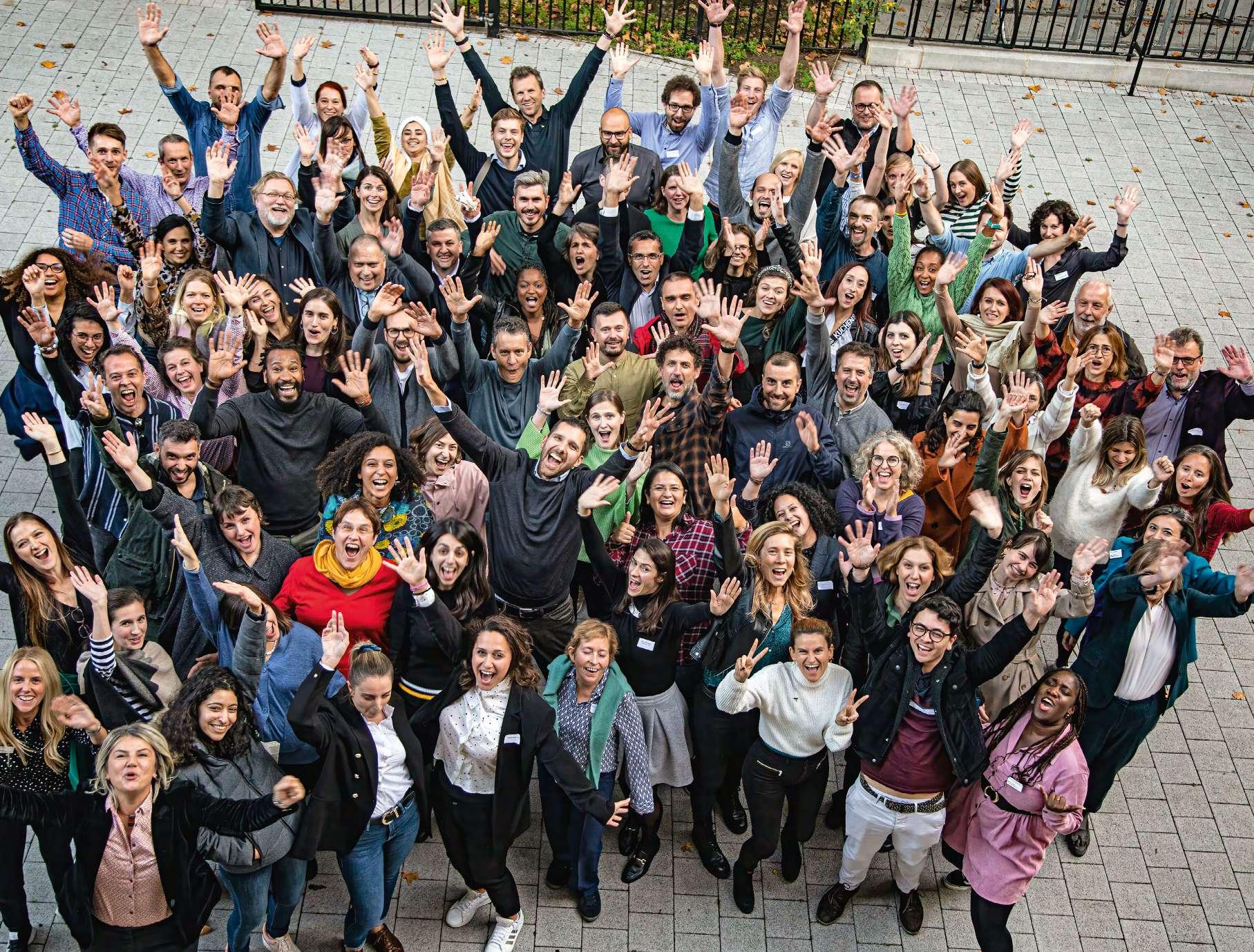
Sometimes, as senior professionals, we think we know because we have more experience. The intergenerational mentoring programme reminded us that it is important to feed from new ideas. We have to recognise that we sometimes forget humility.
Blandine Melis, former Executive Director at Biosfera NGO and Academy participant
“The Academy, for me, was one of those special moments that showed the power of people coming together – from different countries, cultures and backgrounds – for the collective good. To witness the dedication of these environmental leaders – both the participants and the Academy team – to people and the environment, and see them affect change within their unique spheres of influence was an immense privilege. I have no doubt the impact of this investment in people and nature will be seen for years to come.”
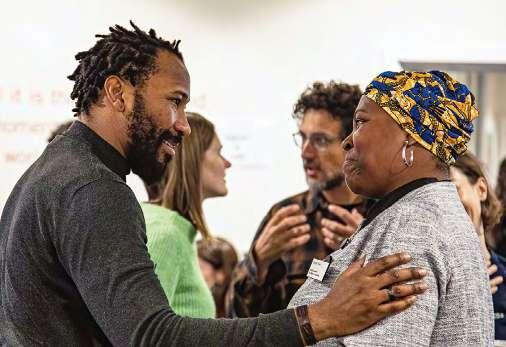
Claire Grayson, Mowgli Mentoring
“The MAVA Leaders for Nature Academy provided a safe space for me, allowing me to remain resilient and persevere in the face of multi-faceted uncertainty.”
“I discovered a brand new world, full of empathy, trust and understanding, aiming to deal with and overcome internal and external interferences. I can still see the vital changes that happened in me, making me a better person and, of course, a better and more efficient professional. Thank you MAVA for this amazing opportunity.”
“I’m very grateful for and proud of the chance I got to connect with peers from Europe and Africa thanks to the MAVA Leadership Academy. It gave me a strong feeling of having been seen and appreciated for the work I’m doing, and strengthened my capabilities in areas I had little understanding of beforehand.”
“When I look at my colleagues who went through the MAVA Leaders for Nature Academy, their leadership skills and the way they now approach challenges –for me, their transformation was a real little miracle which inspired me to apply for the Academy too.”

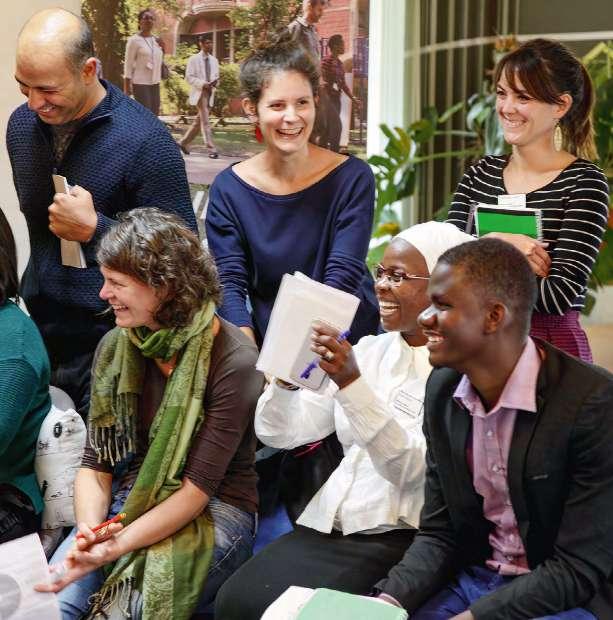
“I am very grateful to MAVA for these investments in the development of humans who work for the conservation of nature. Its exchange spaces were a great help and incredible support for isolated people during the pandemic. MAVA’s investment in the Academy was incredible – it will shape the future of conservation in the Mediterranean.”
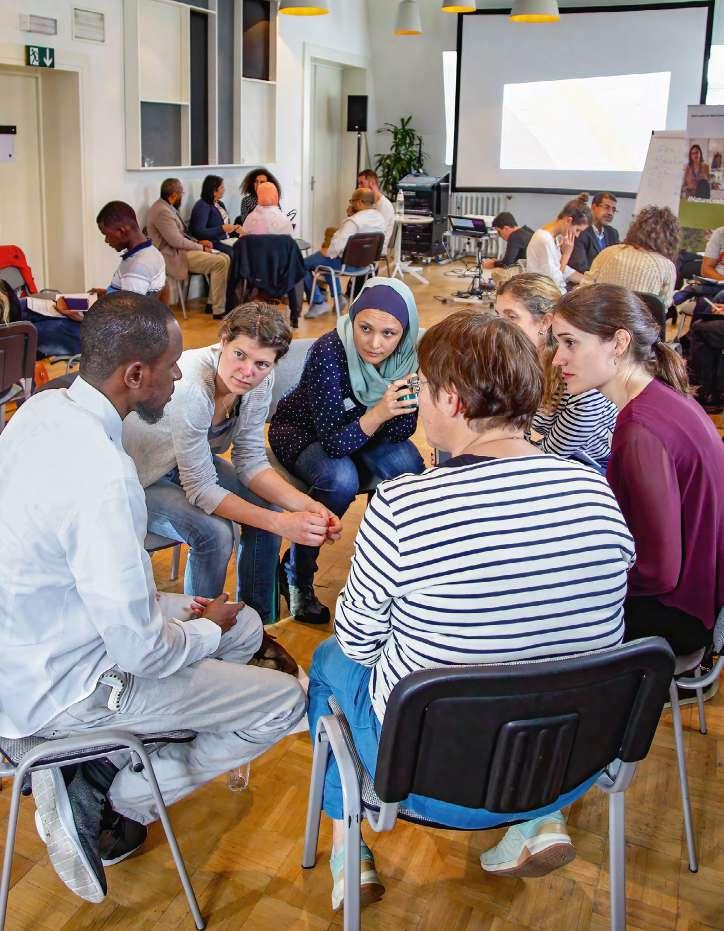 Felix Staehli, Co-founder of Impact Hub Geneva-Lausanne and Academy participant
Tomislav Hudina, Office Manager at Association BIOM and Academy participant
Panagiota Theodorou, Conservation Coordinator at ARCHELON and Academy participant
Jessica Villat, Head of Communication at the Luc Hoffmann Institute and Academy participant
Felix Staehli, Co-founder of Impact Hub Geneva-Lausanne and Academy participant
Tomislav Hudina, Office Manager at Association BIOM and Academy participant
Panagiota Theodorou, Conservation Coordinator at ARCHELON and Academy participant
Jessica Villat, Head of Communication at the Luc Hoffmann Institute and Academy participant
With support and funding from MAVA, Vulture Conservation Foundation (VCF) successfully reintroduced bearded vultures to the Alps and beyond.
VCF is an international NGO committed to the conservation of European vultures. With their European population reduced to only 20 breeding pairs living in the Pyrenees, the future of bearded vultures was looking bleak in the early 1980s. Engaging the public was challenging, with people put off by the birds’ carrion-feeding nature and less-than-cuddly appearance, meaning their vital role in ecosystems was disregarded.
VCF began reintroducing bearded vultures to the Alps in 1986 and the birds are now settled in the mountains. Captive breeding, reintroduction and restocking of vultures, and successfully rebuilding the species’ presence necessitates protecting and conserving vultures and their natural habitats. For example, some veterinary drugs like diclofenac are poisonous to vultures. In India, the population of vultures slumped by nearly 95 per cent between the early 1980s and 2017, with widespread diclofenac use in livestock believed to be a significant factor. In 2014, VCF partnered with other relevant organisations on a campaign to ban using the drug for European livestock.
José Tavares, Director of VCF, and Dr Alex Llopis Dell, Captive Breeding Vultures Manager, deserve special recognition for their heroic roles in VCF’s successes and growth. José has grown and established VCF as the go-to organisation for vulture conservation, while Alex diligently collaborates with over 40 zoos,
specialised breeding centres, recovery centres and private centres which house bearded vultures to ensure the best possible breeding results.
An emblematic conservation success, this partnership is an example of MAVA’s broad engagement beyond funding. The foundation identified the limitations of VCF’s impact, which were driven by governance challenges and interpersonal conflict. It committed to hands-on intervention to mediate these issues and build a solid operational framework for VCF’s conservation activities. With this base firmly established, MAVA provided organisational development support and funding for VCF’s core activities.
Every year, VCF and its partners release over 20 young, captive-bred bearded vultures across different European regions to reintroduce and restock the species’ population in the wild. Another donor has stepped up to replace MAVA’s funding of VCF, helping secure the future of this misjudged species.
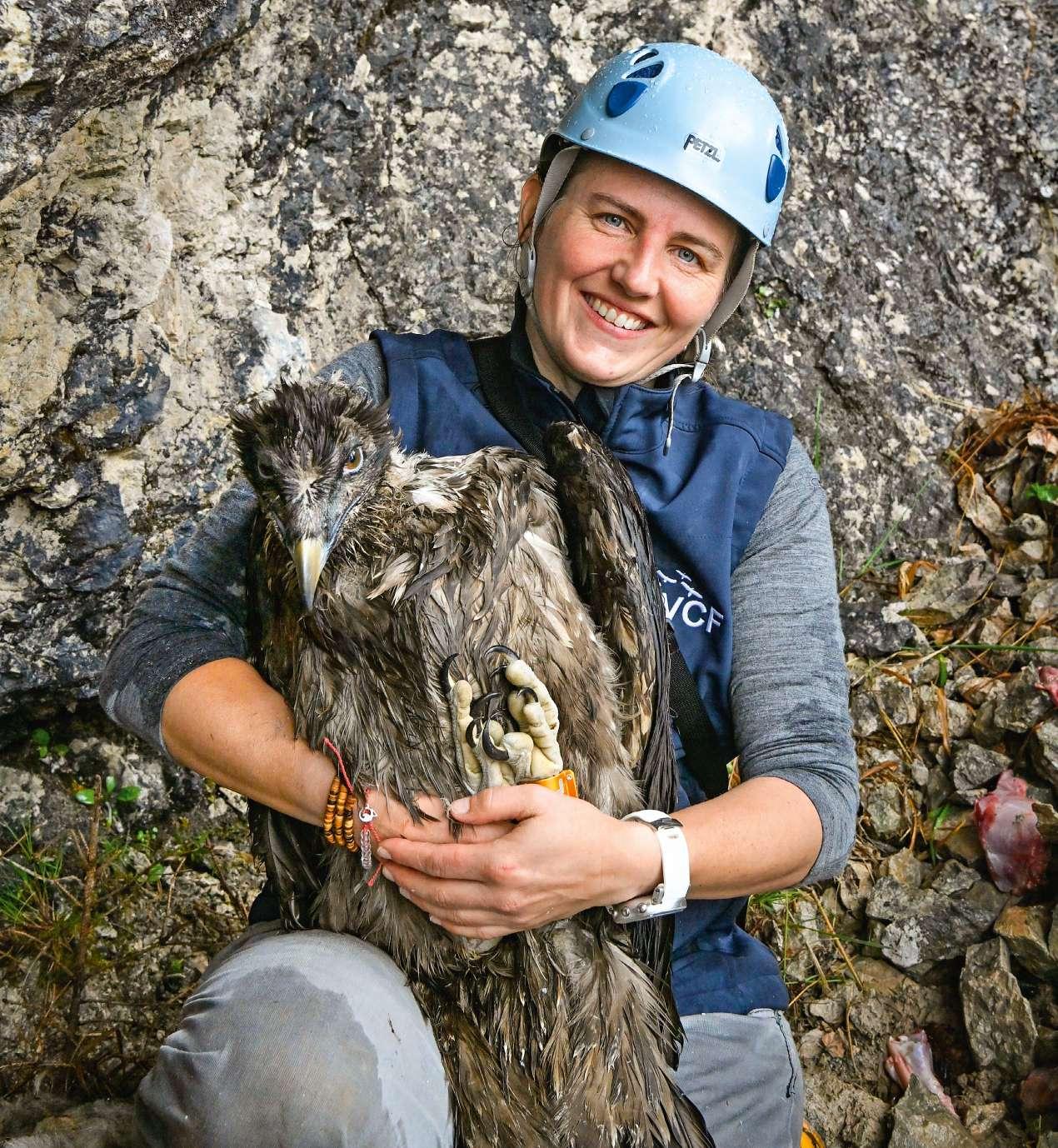
Ours is a wonderful story in a world where hope is almost as rare as some of the animals we’re trying to save!
José Tavares, Vulture Conservation Foundation
In partnership with IUCN Centre for Mediterranean Cooperation and Fonds Français pour l’Environnement Mondial (FFEM), MAVA supported PPI OSCAN to empower budding organisations in North Africa working on conservation, sustainable resource use and climate mitigation.
Ever since its creation, MAVA has supported individuals and organisations to grow and develop their conservation impact. Inspired by FFEM’s existing small initiatives programme in SubSaharan Africa, the foundation worked with FFEM to roll out a similar solution in the North African Mediterranean, focusing on Algeria, Libya, Morocco and Tunisia.

Following this decision, PPI OSCAN was born in 2014. It offered small grants of up to 30,000 euros to finance small projects related to conservation, and support throughout the project lifecycle to build the capacity of local teams in a ‘learn through doing’ approach. Grantees were reinforced by a national or regional coordination team that provided advice, resources and the opportunity to collaborate with one another in a group dynamic.
organisations in each of the target countries was a top priority. Through the PPI OSCAN programme, MAVA harnessed the energy, enthusiasm and motivation of 80 grantees, strengthening their capabilities, network and legitimacy to match their passion.
Helping people in remote rural Morocco or unstable parts of Libya is a privilege. Having never had the opportunity to shape their future before, their will to succeed against the odds is tremendous.
Maher Mahjoub, IUCNMaher Mahjoub, the PPI OSCAN coordinator for the IUCN, is one of this story’s many heroes. His previous role at Tunisia’s Ministry of the Environment was a springboard for extraordinary success, championing these emerging conservationists and nurturing North Africa’s burgeoning civil society.
MAVA always believed that vibrant civil society is a prerequisite for effective conservation, so building a community of engaged and effective civil society
At the time of MAVA’s closure, a third phase of PPI OSCAN was ongoing with a new funder onboard. This phase had a greater focus on pairing established NGOs with their newer peers so they could learn from one another. PPI OSCAN’s capacity-building efforts provided greater legitimacy to the region’s small-scale conservation groups, attracting more donors and securing their future for decades to come.
Economics for Nature significantly contributed to integrating natural capital into the green economy narrative. It started conversations about the economic value of nature in finance ministries and boardrooms around the world. As of 2022, its tracker shows that 98 per cent of countries have adopted natural capital policies.
Green Economy Coalition (GEC), led by visionary changemaker Oliver Greenfield, was one of MAVA’s first Sustainable Economy programme partners. With the foundation’s support, GEC went from strength to strength, becoming the European Union’s preferred partner for its green economy work.
But whilst green economy work blossomed and gained mainstream attention, it overlooked the vital role that natural capital plays in sustaining countries, companies and communities to focus solely on
climate and renewable energy. GEC analysed national green economy plans and found that only 25 per cent mentioned natural capital. This spurred the coalition to form Economics for Nature (E4N), with MAVA’s convening support and funding.
E4N is a global partnership of business, civil society and international policy institutions working to create system-wide change that restores nature while implementing natural capital at the heart of economies. It has successfully changed the green economy narrative and broadened its reach to all corners of the world, including Africa, which had historically been neglected from the movement.
This project exemplifies how MAVA’s vision of conservation evolved with André’s leadership to include direct contributions towards the creation of a more sustainable global economic system.

The E4N project was originally planned to last six years but its mission has not been fully realised, so it will continue to evolve without MAVA. Its future plans include a social contract for green deals and continued collaboration with the European Commission.

A life with purpose is a life well lived. Mine is taking on the failings of our economic system, manifest in a deeply unfair society and a severely degraded environment.
Oliver Greenfield, Economics for Nature
MAVA’s commitment to being flexible and agile was in its DNA. Its partners spoke with great appreciation of the foundation’s willingness to trial unusual approaches, fund pioneering initiatives and make decisions rapidly.

Established to support MAVA’s projects in the Mediterranean, BlueSeeds started as a side project. It quickly grew into an independent organisation spearheading innovative new sustainable funding mechanisms for marine environments and fisheries.
BlueSeeds was set up with a simple aim: to diversify marine conservation financing. Shocked by the calculation of a €700 million yearly funding gap for marine protected areas in the Mediterranean, entrepreneur Thomas Binet realised a new approach to funding was urgently required. Having previously founded Vertigo Lab, the MAVA partner that had conducted the study, Thomas developed BlueSeeds in 2018 as an off-shoot project to meet this need.
BlueSeeds developed and piloted a range of entrepreneurial solutions designed to boost the efficiency and sustainability of marine conservation financing. Thanks to MAVA’s funding and new partnerships with a diverse range of private and public conservation stakeholders, these solutions rolled out at 10 pilot sites around the Mediterranean.
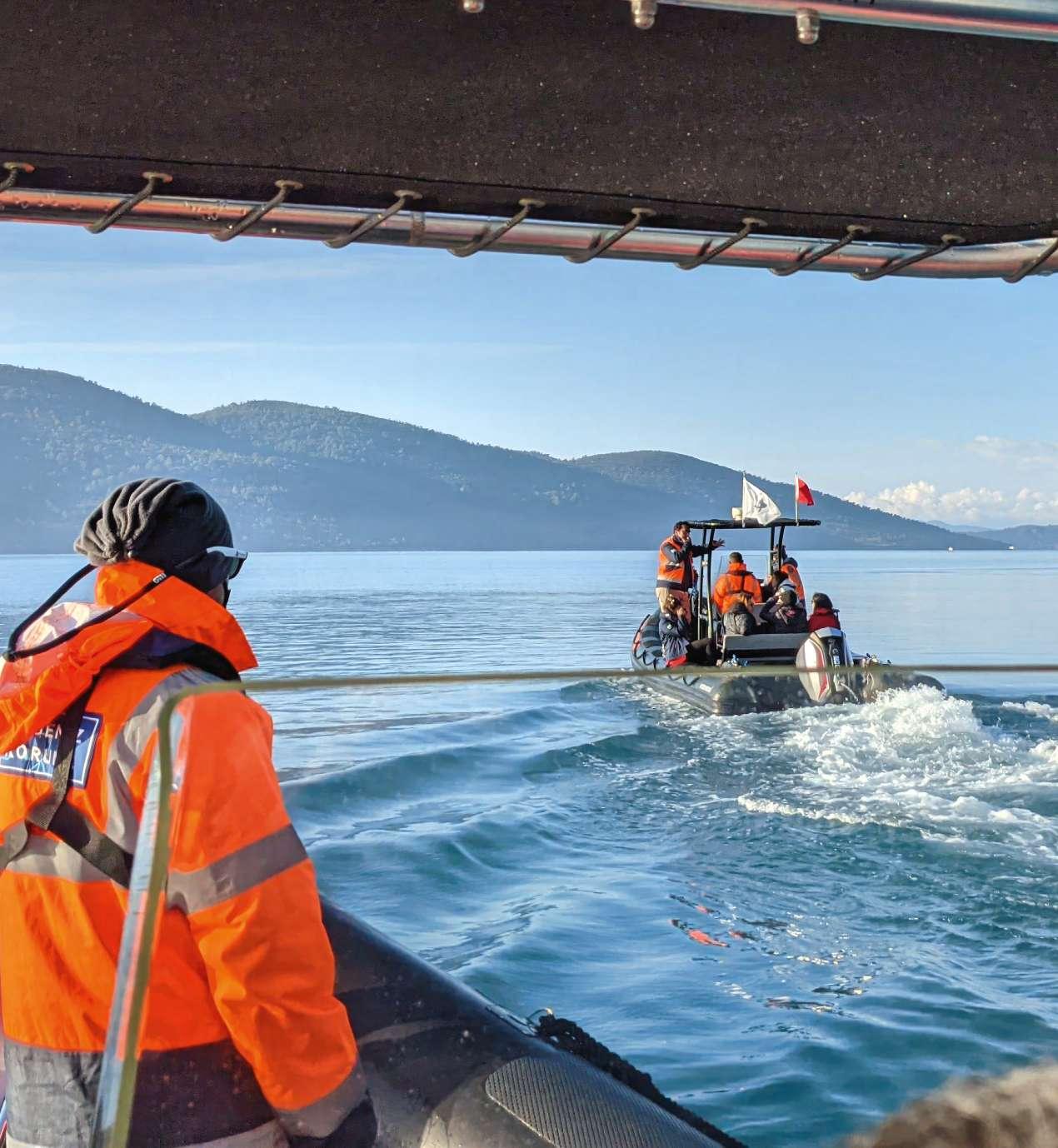
BlueSeeds’ young team soon earned a reputation for creativity and innovative thinking and it became an independent organisation.
The organisation’s solutions are based around blue economy principles, which involve sustainable use of ocean resources for economic growth and improved livelihoods and jobs, while preserving the health of the ocean ecosystem. In Croatia, this involved stimulating microentrepreneurship related to marine conservation through an incubator. Reducing costs and increasing funding are equally important parts of BlueSeeds’ approach. For example, its web-based Blue Mooring project enables boaters to book mooring online, increasing efficiency for park managers and creating an income stream for the park. At the time of MAVA’s closure, BlueSeeds’ services were in demand, making the organisation’s future look bright.
We can’t meet the challenges we face if we keep doing the same things. We’re creating a new way of doing conservation that’s anchored in social enterprise.
Thomas Binet, BlueSeeds
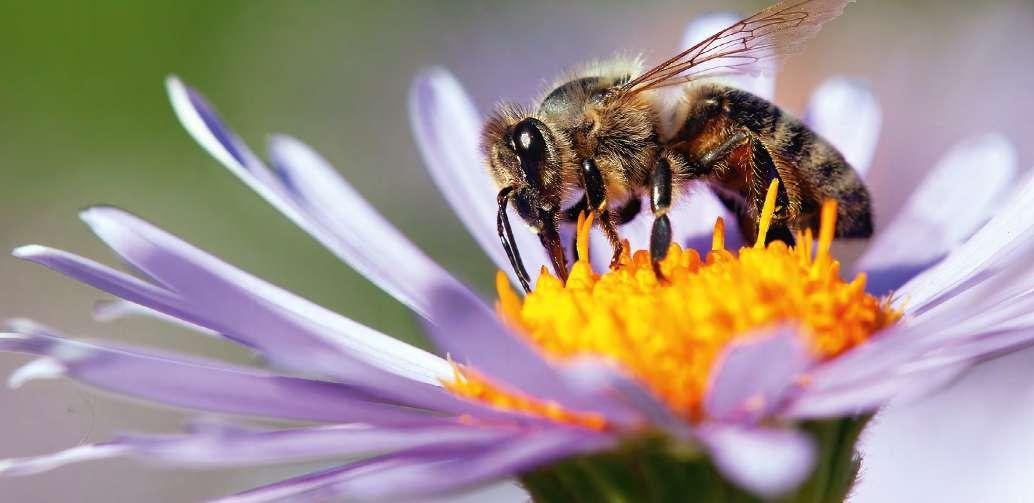
Finance for Biodiversity influenced early thinking on nature- and biodiversity-related risk, quickly becoming a leading voice on the topic.
Rather than an organisation or non-profit, Finance for Biodiversity (F4B) is an initiative designed to bring together financial and conservation experts working towards a simple mission: increasing the materiality of biodiversity in financial decision-making, thereby aligning global finance with nature conservation and restoration.
As F4B’s reputation and reach grew, it created separate work streams and initiatives to focus its impact. One such initiative was the Taskforce on Nature Markets, assembling experts to ensure that emerging nature markets were fit for purpose. Voluntary carbon markets are the most well-known example, but they have limitations. F4B wanted to shape markets that could harness entrepreneurism in ways that deliver nature-positive and equitable outcomes.
MAVA was immediately attracted to the idea, with André Hoffmann firmly believing in F4B’s mission and approving a framework grant for F4B to draw from. The embedding of MAVA’s Sustainable Economy team members within F4B’s leadership allowed the foundation to stay up to speed with developments while providing quick approvals and grants, helping F4B to remain agile. This close relationship built a high level of trust, which was necessary for the success of the regranting component that allowed the initiative to build its network rapidly.
In 2022, F4B evolved to its next phase of impact and ambition to align global finance with nature-positive and equitable outcomes. It was established in Geneva, operating under a new name – NatureFinance.
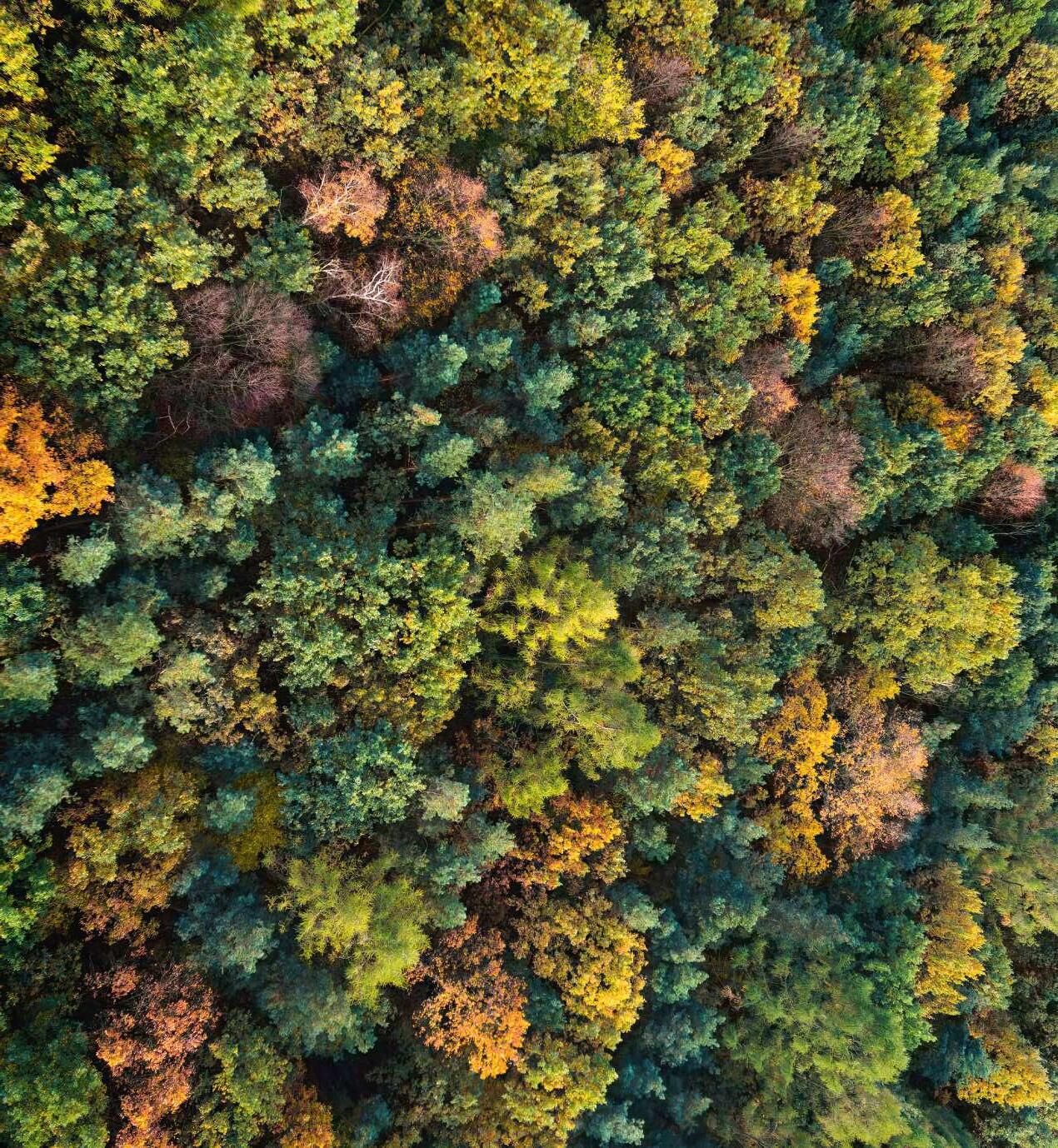
F4B’s technical and policy papers, alongside deep engagement with key sovereign debt market actors, have achieved significant impact and laid the foundations to continue delivering greater, long-lasting impact. F4B’s call to action has been answered by a growing swell of stakeholder voices and opinions aligning with the view that radical innovation in the debt market is the key to unlocking a greener future for all.
Ceandra Faria, Finance for BiodiversityMAVA and BirdLife International’s work to empower local NGOs and create a clear regional plan to conserve seabirds in the Cape Verde archipelago was a victory that exemplified their shared global-to-local approach.
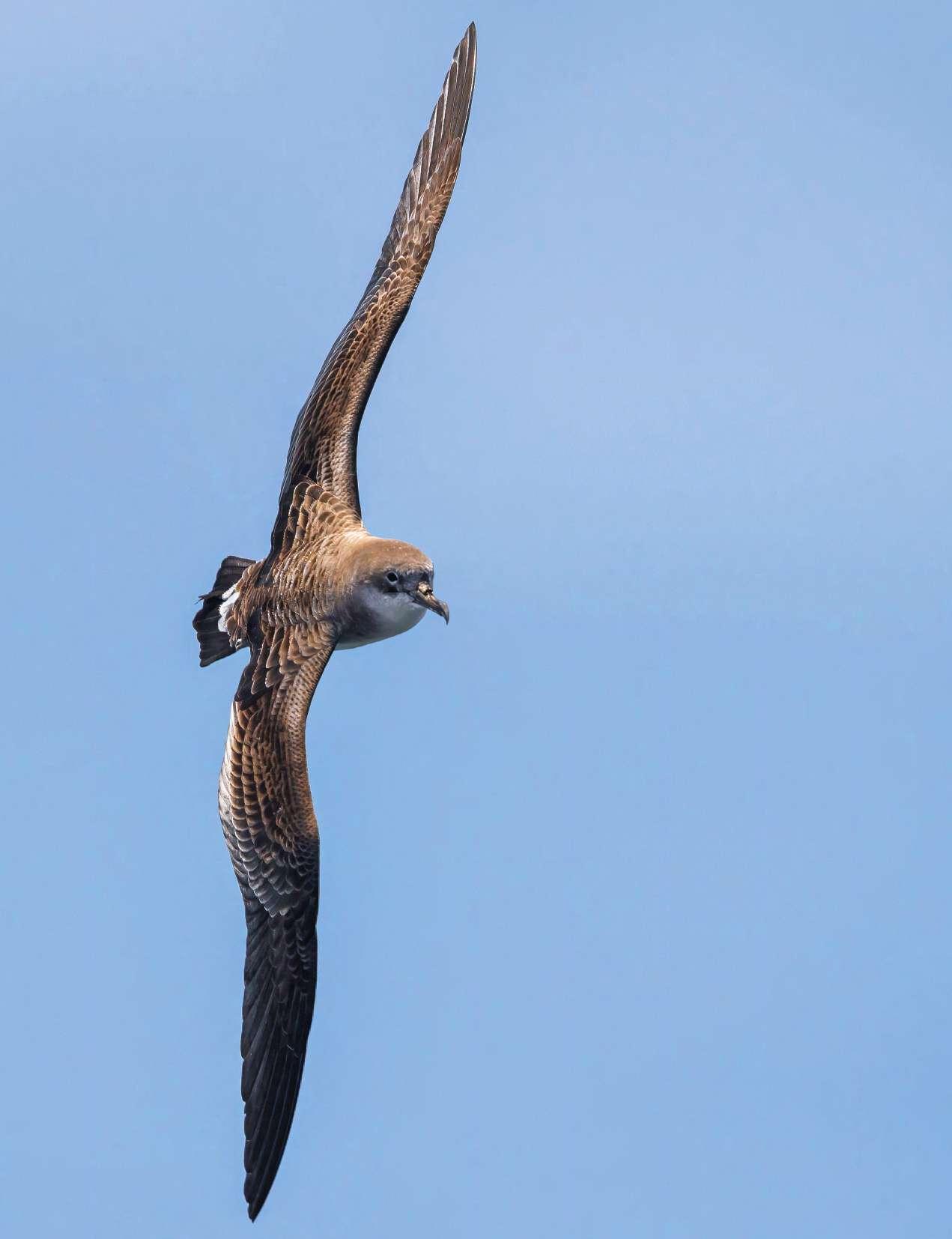
BirdLife International is a global family of over 115 national partners with a simple but bold mission: saving bird species, nature and the planet. Established in 1922, the partnership celebrated its centenary only months before MAVA ceased grant-making. With a network of over 2.5 million birders, scientists and local volunteers, BirdLife can track and analyse every bird species in the world. As seabirds are important indicators of marine and coastal ecosystem health, studying them is a key weapon in the fight against climate change.
Despite its international status, BirdLife’s approach to conservation is deeply local. It empowers small organisations, which have an invaluable understanding of their respective regions and the issues affecting them, working towards common goals in an integrated yet autonomous manner. This aligned it closely with MAVA’s own approach, making the two organisations ideal partners to collaborate on many aspects of MAVA’s strategy and action plans.
Simon Mériaux, who was Organisational Development manager in the Impact and Sustainability programme at MAVA, explained what made BirdLife a unique ally amongst the foundation’s partners. “Usually, MAVA provides organisational development support for partners through external consultancy. What makes BirdLife’s approach special is that it can provide support from within its own network. This means it’s a relationship of equals, peers from the same world speaking the same language of conservation and NGOs, and sharing a passion
for birds, irrespective of whether they’re working together on governance, bookkeeping or bird-tracking.”
One of BirdLife and MAVA’s most significant collaborations was the conservation of seabirds in Cape Verde, working with local NGOs including Biosfera and Projeto Vitó as implementing partners. Cape Verde is a seabird hotspot, home to several fascinating endemic bird species, a breeding ground for many others and a migratory stop-off for even more.
MAVA and BirdLife created an action plan based on funding research, monitoring, site protection and awareness-raising, designed to pull disconnected conservation efforts across the archipelago into a coherent plan. The foundation invested in the organisational development of local NGOs to help raise their game and work on a bigger scale. As explained by Marie Madeleine Gomez of MAVA’s West Africa Programme, “The implementation of the Cape Verde bird conservation action plan has led to the development of a national conservation plan for the birds of Cape Verde, but also to the bringing together of actors from the different islands of the archipelago involved in the conservation of these species.”
MAVA also directly funded BirdLife to help it work on a regional level rather than national, as seabirds’ migratory cycle mean conservationists must work across unusually large distances. Thanks to these efforts, the need to protect seabirds in Cape Verde and across West Africa is more competently understood.
We work with and invest in local organisations that can become conservation leaders. It may be difficult and expensive, but in the long run, it’s sustainable. It means we have a unique global network that is locally anchored.
Patricia Zurita, Chief Executive of BirdLife International
Lower Delta raised the profile of these remarkable coastal wetlands and engaged their communities on conservation.
The Saloum Delta and the Senegal Lower Delta are two interlinked and interdependent wetland complexes on Senegal’s coast. As well as providing livelihoods for many local communities, the wetlands are of international importance for many bird species and designated as biosphere reserves. However, their astounding biodiversity faces multiple threats, including overfishing, poor infrastructure planning, pollution and climate change.
MAVA’s support contributed to improved wetland management and bird conservation at both sites. The foundation convened a coalition of stakeholders, including researchers, site managers, state institutions, local communities, multi-stakeholder platforms, NGOs, and civil society organisations. These stakeholders pooled their skills and resources on activities including ecological monitoring, site governance and management, technical capacitybuilding of staff, and community engagement. Additional research into the deltas’ delicate ecosystem and raising wider awareness of their needs helped mobilise significant further funding to consolidate their sustainable management.
MAVA programmes supported people, leading to them supporting nature in turn. This work in Senegal
was no different. One scheme in the Saloum Delta reduced deforestation of trees and mangroves by empowering budding female entrepreneurs to open biogas shops, providing new livelihood opportunities while protecting biodiversity. Other programmes support fishermen and farmers to embed conservation into their everyday work in ways that will also improve their catches and harvests.
At MAVA’s closure, new funding had been secured to restore their wetlands and strengthen the Senegalese protected area network, while new projects were under development by several different partners, which MAVA hoped would have far-reaching benefits for wetlands and coastal birds beyond Senegal’s borders. The wetlands’ custodians were determined to continue protecting the land they love, with Ibrahima Gueye and Jean Malack deserving particular kudos for their passion.
Making sure local people participate in conservation is the only way we’ll succeed. More than half the work we do relies on volunteers, so it’s vital they benefit.
Ibrahima Gueye, Senegal National Parks Authority
MAVA was the first funder to support developing the theory and methodology of the new Red List of Ecosystems categories and criteria.
The IUCN Red List of Ecosystems is a global standard for assessing risks to ecosystems and understanding whether they are safe or on the path to collapse. It identifies common symptoms like habitat quality and species population levels to understand the level of risk an ecosystem is facing.
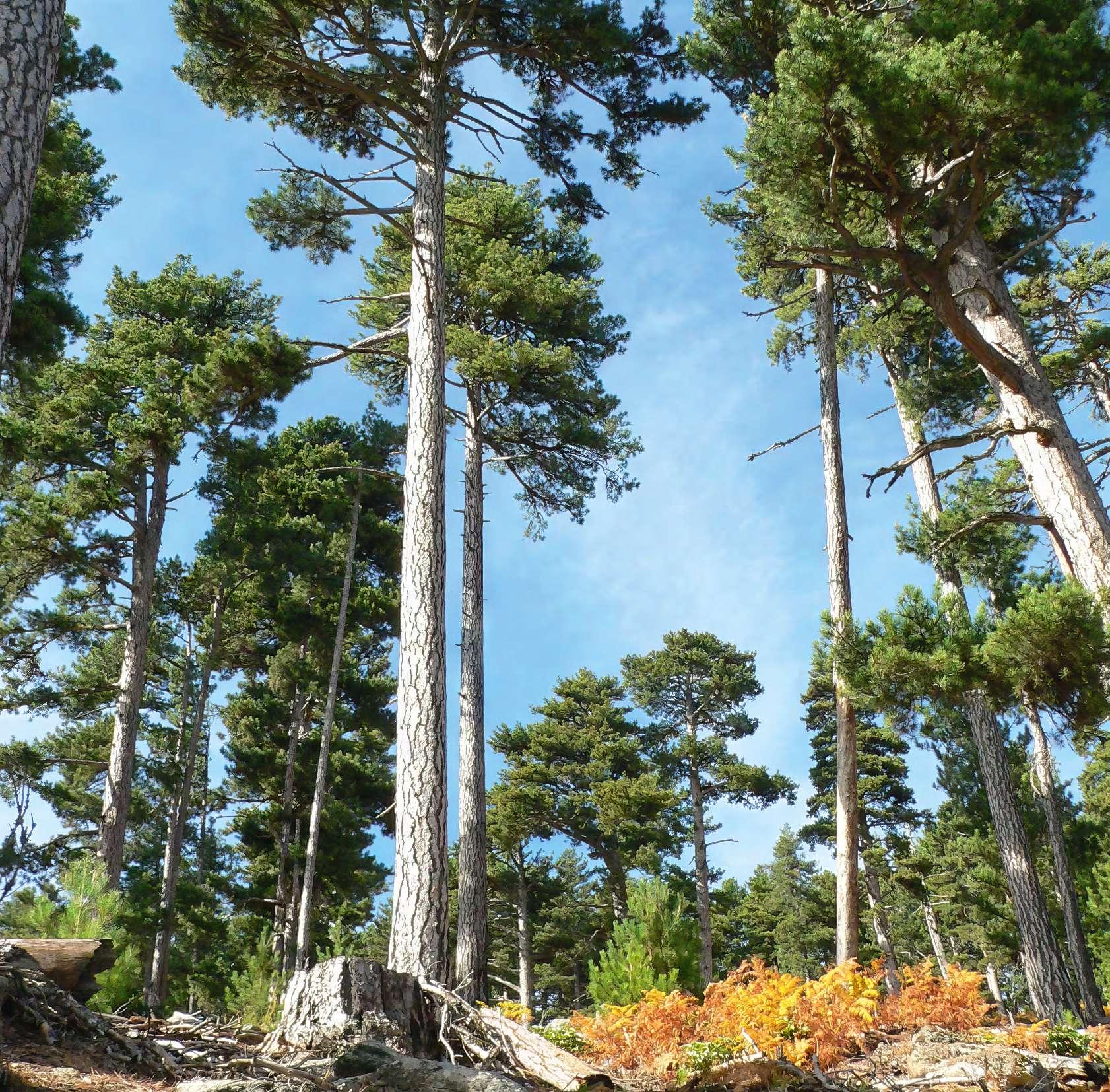
MAVA recognised that the early iteration of the Red List of Threatened Species had become insufficient as a measurement tool. The outside world’s understanding of the importance of natural capital and ecosystem services had developed, so the list required updating to match. A decade of testing helped shape the list into a robust and reliable tool applied in more than 100 countries to guide policy, structure international agreements, educate the public and provide data for scientific research.
Collaboration between the IUCN, scientists, conservation actors and MAVA was critical in developing the Red List from its pilot phase in 2011 to its status as the accepted global standard today. As other actors stepped up, the foundation gradually phased out its support. Special credit goes to Jon Paul Rodríguez, Chair of the IUCN Species Survival Commission, whose role in developing the red list was invaluable.
MAVA jump-started the Red List of Ecosystems process over a decade ago and the work continues today. In 2020, IUCN published the Global Ecosystem Typology, a hierarchical classification of all freshwater, marine, subterranean and terrestrial ecosystem types. The next step is to assess the health of all ecosystem types globally. Making these data points freely available will transform species and ecosystem policy-making worldwide.
Jon PaulMAVA’s collaboration with MedINA, a small but influential non-profit, helped the foundation put cultural landscapes – places where human activity fosters biodiversity – on the map.
MedINA is the tale of a small Greek organisation with a wide impact throughout the Mediterranean region, established in 2003 as a non-profit based in Athens by Thymio Papayannis, a leading figure in environmental and cultural heritage conservation. Thymio met Luc in the 1980s because of their joint interest in protecting the Prespa Lakes and helped create the Society for the Protection of Prespa, which Luc initially presided over before passing the baton to Thymio.
MedINA’s original focus areas were the integrated management of nature and culture in wetlands, landscapes and sacred natural sites. As an early
champion of the vital link between nature and culture, the organisation worked at local, national and international levels to promote understanding of the interplay between the natural environment and human culture. This is closely aligned with MAVA’s own advocacy of harmony between people and nature.
Whilst the organisation’s scope broadened over its lifespan to simply ‘nature, culture and communities’, its contribution to international wetland conservation was one of its biggest victories. MedINA was responsible for introducing cultural aspects of wetlands in the global work of the Ramsar Convention, including its guidance on recognising the rights of Indigenous peoples and local communities.
MedINA was also instrumental in developing the Alliance for Mediterranean Nature and Culture, a regional movement strongly promoted by MAVA that focuses on issues of cultural landscapes in connection with food systems and the rights of local communities.
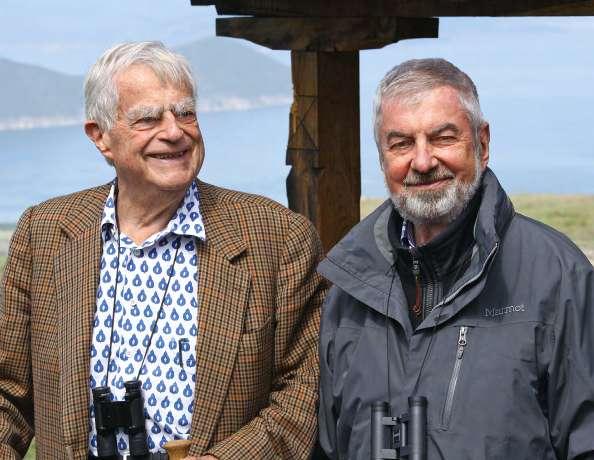

MAVA funded MedINA on a long-term basis but also provided support beyond funding, including organisational development assistance. MedINA developed into a promising organisation, well equipped to build a brighter future for cultural landscapes.
Thymio founded MedINA to respond to critical issues of environmental protection. By bringing together experts from different fields and local communities, MedINA empowered a holistic approach towards the preservation of intangible heritage and the development of a sustainable future.
Deeply convinced that nature and culture are inextricably linked,
Ivi Nanopoulou, MedINA
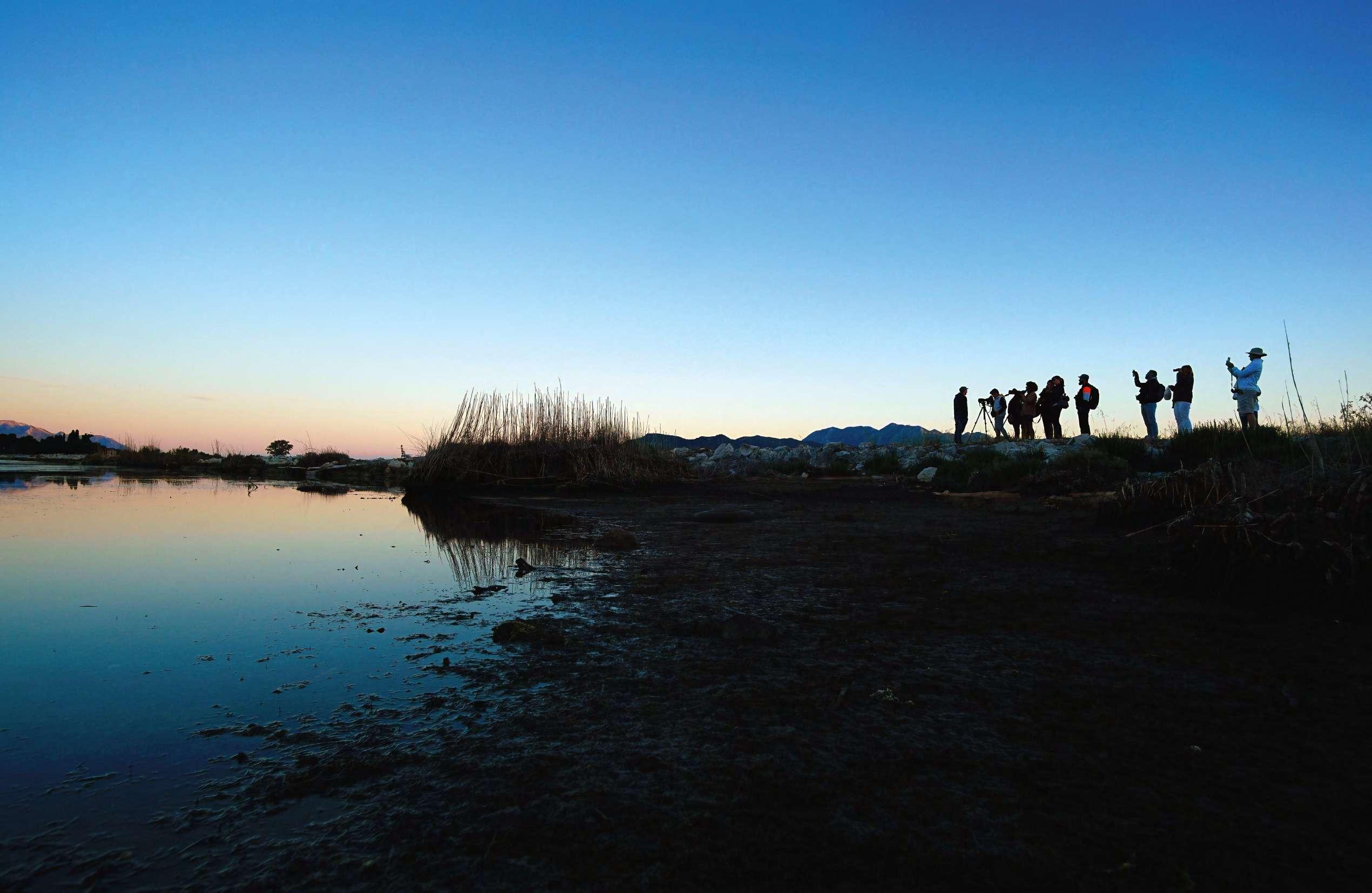
In the final year before its closure, MAVA asked its partners and fellow funders to submit stories about their collaboration as part of a project called MAVA Memories. An organisation called Voices That Count guided MAVA in the process and developed the tools to facilitate the story collection.
Over the first half of 2022, partners shared personal stories, amusing anecdotes, expressions of gratitude and photographs. A small selection of these stories and images appear in this chapter to paint a picture of how partners perceive MAVA’s legacy and its far-reaching impact, filling in the finer details of the larger-scale impact described in the previous chapter’s success stories.
These memories are divided into six categories according to their prevalent theme. We start with stories describing times MAVA’s involvement dramatically overhauled the trajectory of a project, followed by stories about the foundation’s willingness to take risks. The next group covers MAVA’s commitment to strengthening the conservation community, then come accounts of its efforts to raise awareness and deepen knowledge. We next find stories of the foundation’s work to empower individuals and, finally, a selection of memories from MAVA’s peer funders describing their experiences together.
These stories from MAVA partners form a powerful statement of the impact the foundation has had and the legacy it leaves behind.
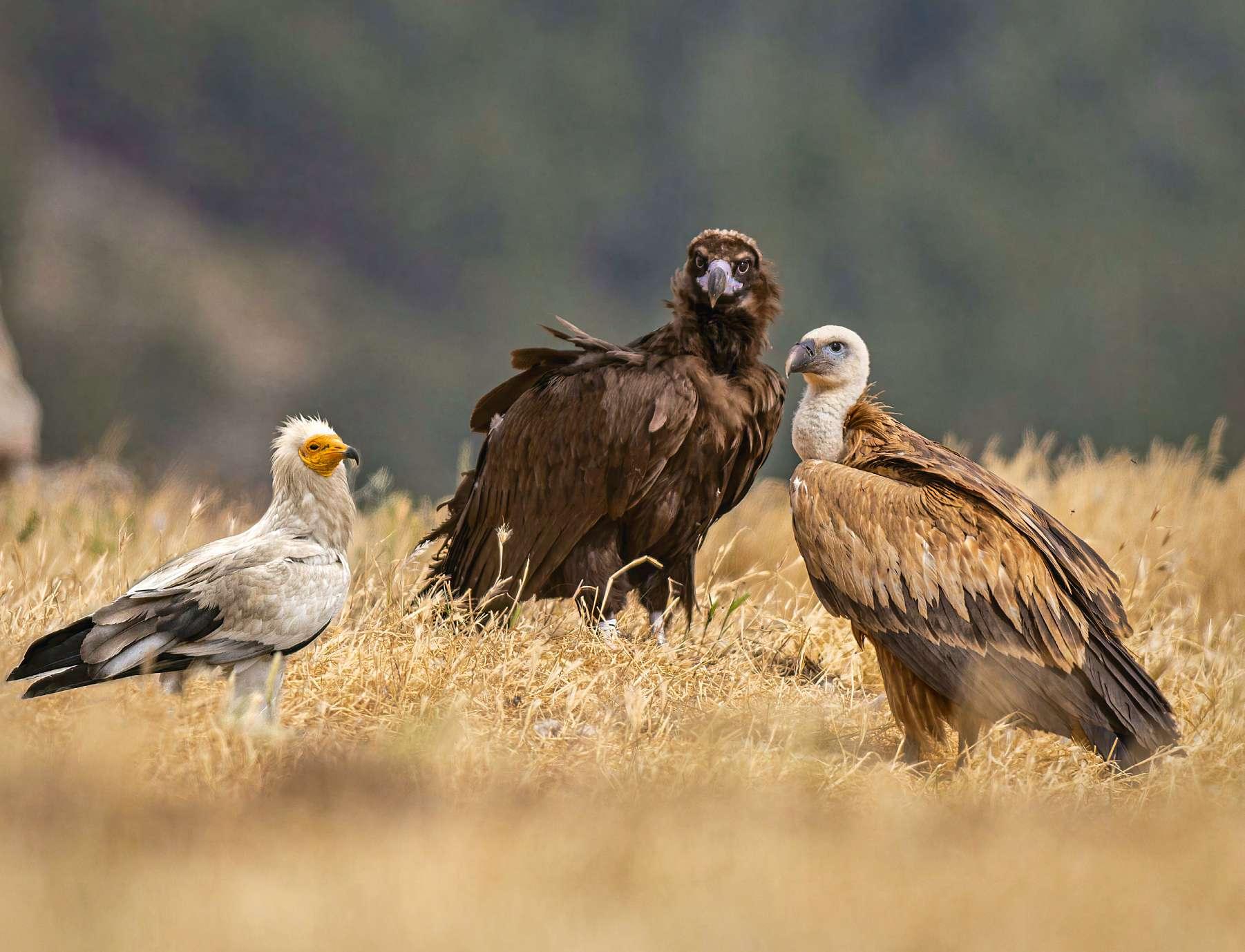
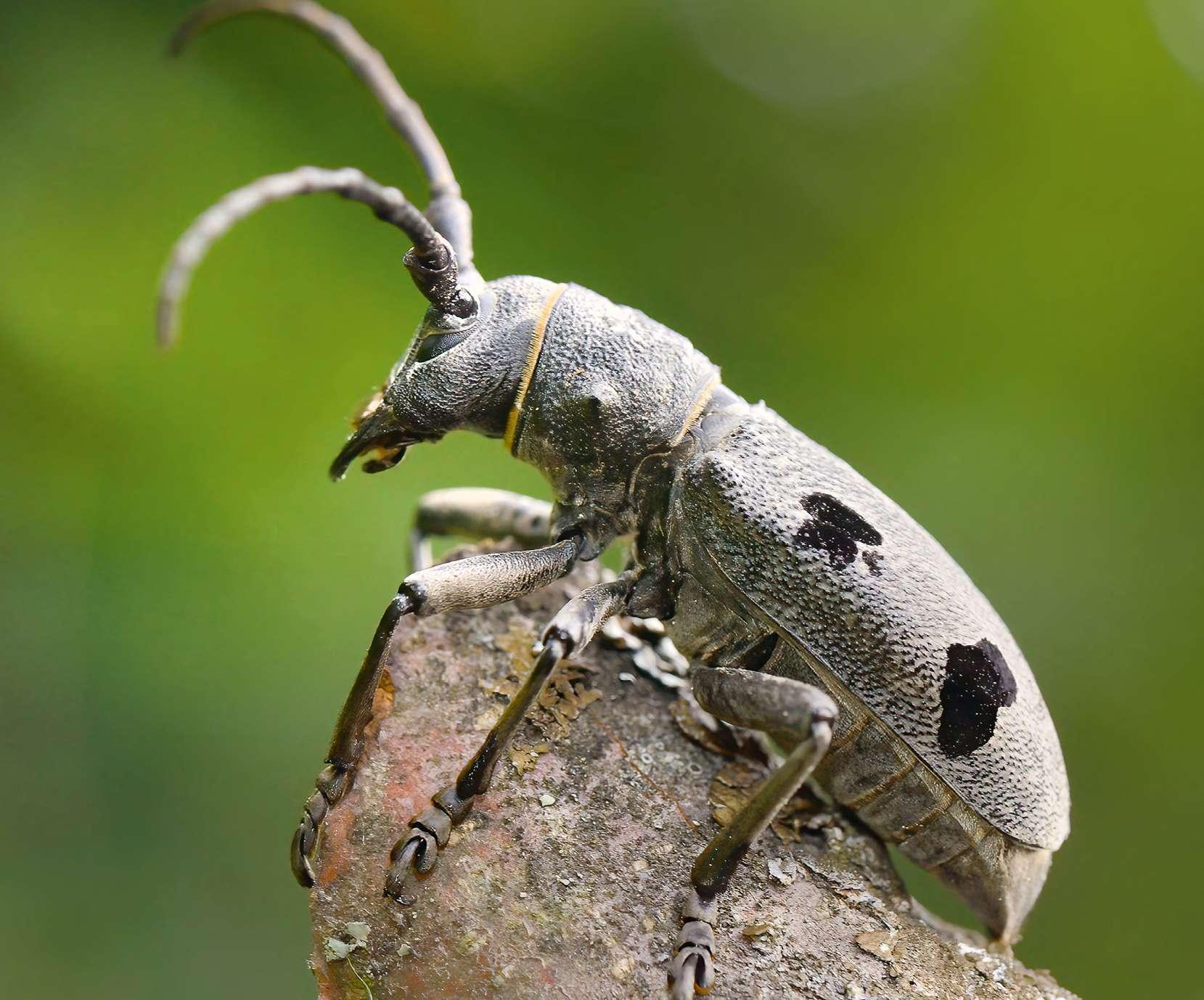
The transformative impact of MAVA’s funding on particular species, protected areas or ecosystems was a frequent theme of the stories, with a predictable focus on freshwater habitats and wetlands – the field of conservation where the foundation’s legacy is strongest. Many of the stories in this section illustrate the foundation’s commitment to helping its partners engage local communities and integrate traditional cultural practices in their conservation activities.
From weasels to monk seals, Montenegro to Morocco, the breadth of creatures and places included in this small snapshot show how the foundation championed overlooked species and locations alongside emblematic animals and its iconic sites, becoming known for funding lesser-known causes.
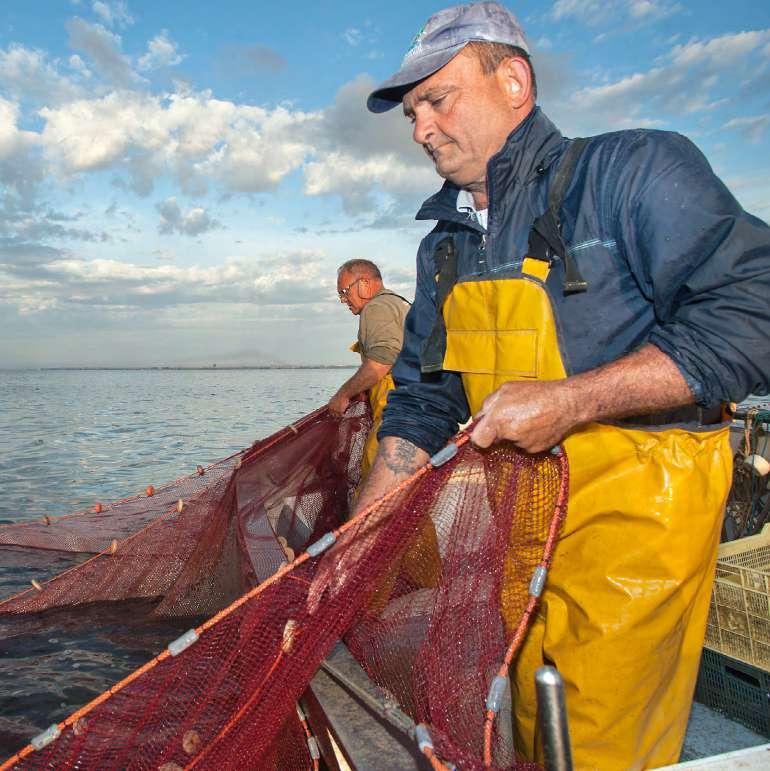
In November 2002, the M-100 fuel oil transported by the Prestige sank off the coast of Galicia. It was the beginning of an enormous tragedy, an oil slick that would close the fishing grounds for a year, kill marine life and mobilise society as a whole. A team from WWF Spain immediately set up an office on the ground. The fishing sector, especially the artisanal sector, saw an external threat materialise in the form of tar, destroying the habitats exploited
increasing minimum sizes, reducing quotas and extending closed seasons, and surveillance and monitoring were reinforced. This worked, fishing resources improved spectacularly, poaching fell and commercialisation improved; more than 90% of the users were satisfied. A silent revolution in artisanal fishing was beginning that would reach the whole country. We wanted to support those fishermen willing to undertake their own ecological transition: participation as an engine of change.
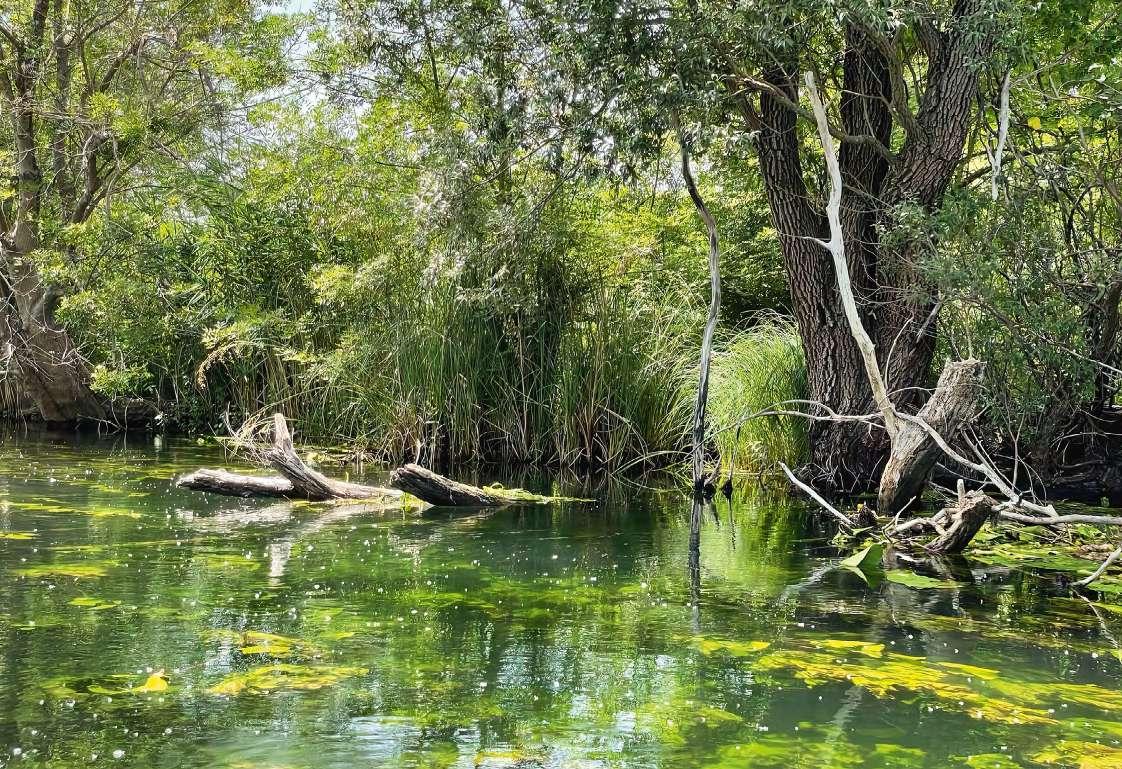
It was 2006. For a number of years, Hutovo Blato Nature Park in Bosnia and Herzegovina had been collapsing. The Nature Park authorities could not afford ranger services, poaching was drastically increasing, the wetlands were drying away because of water diversion for hydropower, there were no visitors, and everybody was giving up. I resignedly explained the situation to people that I had just met from
the WWF Mediterranean Programme Office. They told me about MAVA, and that they can secure funds to save Hutovo Blato. I thought that was just another polite person with empty promises. But we have made it. We saved Hutovo Blato and MAVA made it happen. Only MAVA had the courage to support us in opposing mighty energy companies; only MAVA had the patience to support us in endless negotiations with the governments; and only MAVA believed in us when promising that Hutovo Blato could become
self-sustainable by investing in the capacity-building of the Park authorities. Today, we have multi-million euro investments in sustainable tourism, as well as in the wetlands restoration coming from EU funds. There is no poaching and local people recognise and support the Park authorities. What seemed impossible 15 years ago, we now have in place.
Thank you, MAVA!
Zoran Mateljak, WWF Adriaby their ancestors and the local fishing market. We understood the fragility of the ocean and the need to protect and restore it.
Some fishermen, such as those from the village of Lira, turned their concerns and deliberations into action, promoting the comanaged Marine Reserve of Fishing Interest of Os Miñarzos (2007). They sought the support of science and civil society, inviting WWF Spain among others to participate. Two integral reserves were created, more restrictive measures were established,
But who would bet on such an ambitious and complex initiative? Well, MAVA, who else? Its support since 2012 has enabled us to bring in other relevant partners, to train 100 fishermen, researchers and managers, to support local initiatives for change by cofinancing dozens of projects, and to weave a network of initiatives towards sustainability throughout the territory. Hundreds of fishermen from dozens of countries have learned and been inspired by visiting Spanish ports, or participating in virtual meetings, in many cases launching similar initiatives.
Changing the legislative framework from below, counting on people and science, taking co-responsibility for the common good. Therein lies the legacy of MAVA, instrumental and alive, benefiting millions of people through the conservation of nature and the implementation of sustainability models.
Raúl García Rodríguez, WWF Spain
Who said that mangroves were one of the ecosystems where man had the least chance of survival? Perhaps this person did not know the mangrove system of West Africa, which borders the rivers of the south with its long, protective and generous green sheet! Especially since in West Africa it is the mangrove that has suffered from human activity during the 20th century, as well as the species and economies that depend on it.
In 2022, we now look forward to seeing West Africa’s mangroves
restored, providing a haven for life and an adaptation tool for coastal communities.
What has MAVA achieved in this regard? In my successive vigils at the organisations FIBA, PRCM, IUCN and RAMPAO, I saw MAVA relentlessly support West African actors to activate the multiple levers of change: regional policies, public policies, scientific research, training of researchers and technicians, creation and management of marine protected areas, involvement of civil society, exchange of experiences and mutual learning, environmental education... An emblematic figure of good news in marine conservation, the mangrove
illustrates the patient support work carried out by the foundation, embroidered with empathy and high standards, guided by a constant desire to share, and a regularly updated strategic reflection. The West African coastal actors who are directly or indirectly heirs to the work of MAVA are truly numerous, better prepared for future challenges, more united within the PRCM, and supported by new partners. From the bottom of my heart, bravo and thank you.
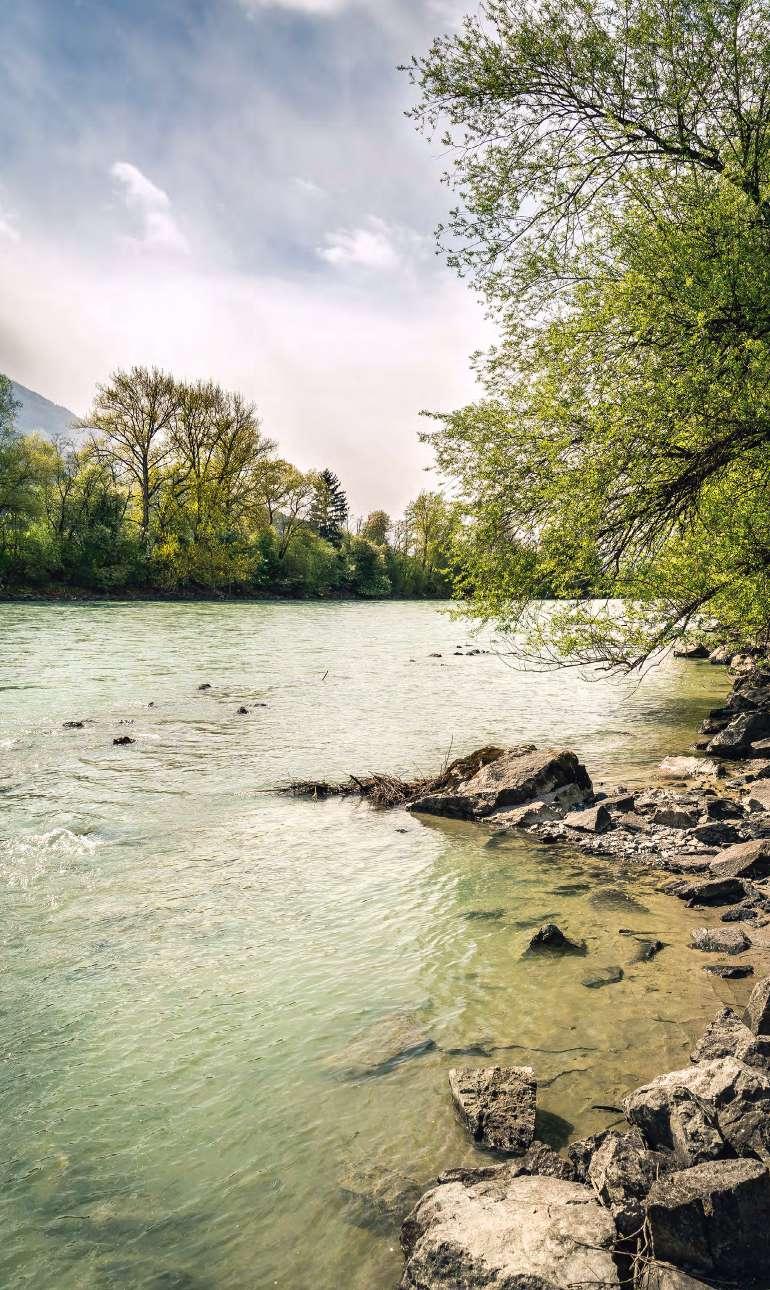
If the MAVA Foundation had not existed, many Alpine rivers would undoubtedly be in a poorer condition. For 10 years, WWF Austria and its partner organisations were able to implement a comprehensive programme for the protection and conservation of torrents, rivers and floodplains in the Alpine region. Rivers like the Inn, the Ötztaler Ache and the Lech were saved from harmful interventions such as constructions of destructive hydroelectric power plants. In addition, obstructed river stretches were revitalised. Environmental education and wide-ranging PR activities also achieved remarkable results.
We succeeded in raising awareness of the importance of rivers as lifelines among the population and decision-makers, and to fight for large-scale river protection areas. Holger Schmid, our professional and benevolent advisor, did not only make the generous support possible, but contributed also on a technical and strategic level. With every drop of free-flowing water that runs naturally and undammed downstream, the priceless river habitats of the Alps are preserved for nature and society. The Alpine waters thank the MAVA Foundation team for making this possible!
Christoph Walder, WWF Austria Mathieu Ducrocq, Réseau Régional d’Aires Marines Protégées en Afrique de l’Ouest (RAMPAO)In 1992, we initiated an ambitious project to recover the transhumance of livestock walking between the south and north of Spain along cattle trails that had been abandoned for almost a century. It was also an adaptation to climate change and to ensure the sustainability of ecosystems. Since October 1994, the passage of one of our herds every autumn through the centre of Madrid has made the importance of pastoral, nomadic and transhumant cultures visible worldwide. The approval by the Spanish Parliament in March 1995 of the new Law on Livestock Trails, which upheld the protection of a 125,000 km network of drovers’ roads created in the 13th century, allowed many families to resume walking between the north and south of the peninsula, with many environmental, social and economic benefits.
Dr Luc Hoffmann supported this initiative from the beginning, and in 1999 he made a generous
donation for the purchase of 1,200 transhumant sheep and goats. This flock grazed during the winter in the pastures of the Biosphere Reserve of Monfragüe, then travelled 500km over a month to the National Park of Picos de Europa to graze during the summer in the mountains of León, bordering Asturias and Cantabria.
During the last 30 years, we have supported a total of 50 livestock families who wished to recover transhumance with their herds, travelling with them
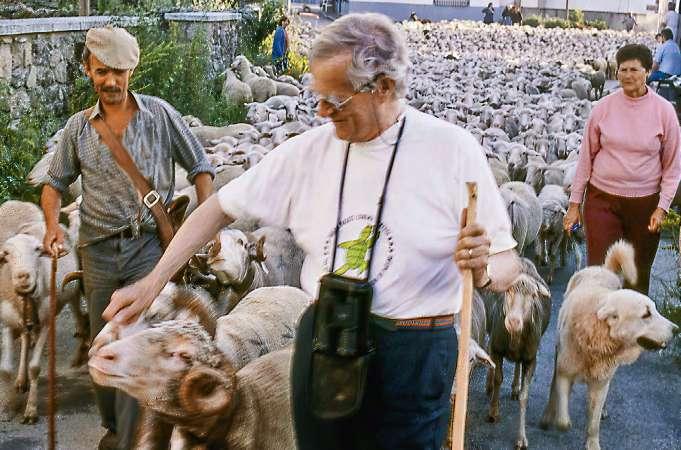
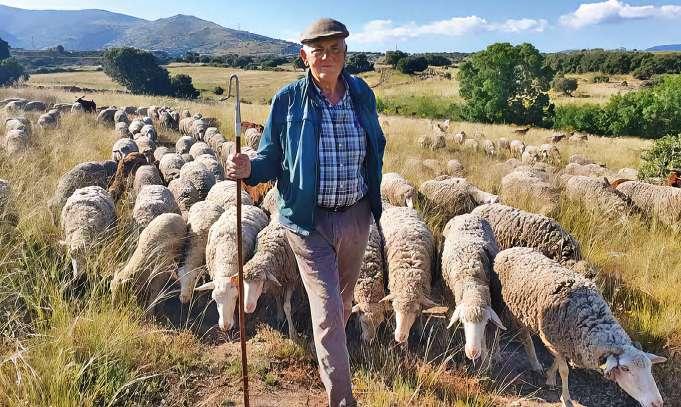
some 130,000km of cattle trails with more than half a million sheep, goats, cows and horses. The support of Dr Luc Hoffmann and his foundation MAVA in the conservation of nature and traditional cultures in Spain and the Mediterranean Basin is a worldwide example of generous philanthropy whose promising results will hopefully endure in the future of our planet.
Jesús Garzón, Associação Transumância e Natureza (ATN)
We have been working for the protection of Ulcinj Salina, Montenegro, for more than 15 years, all the way and time supported by MAVA. We have achieved our main goal of the site’s formal legal protection but it still lacks proper management and concrete action on its restoration. Each year, during this battle against a massive construction project (planned hotels, golf terrains and marina) we had witnessed flamingos creating their nests and unfortunately failing at it (due to poor water management and destroyed infrastructure). Seeing them building their nests again and again so effortlessly, not giving up against all odds just gave us so much hope: never to give up, to constantly dust ourselves off and try again.
Our story began in 2018 with the creation of our office, thanks to the unfailing support of the MAVA Foundation. Our team was brought together by the love of nature and by the commitment to the protection and restoration of the natural ecosystems of our country. Together, we have overcome many challenges. We conquered the field. We learned by doing. MAVA allowed us with benevolence and patience to try, fail, try again, find the right solutions adapted to our context, and finally succeed.
A few years ago, we were four people standing in the middle of the dry lake Dayet Aoua,
Flamingos are still not successfully nesting but we ensured sanctuary for many endangered bird species. Today Salina is one of the closing benchmarks of Montenegro’s EU accession process and it is formally protected

and safe from construction. The rest is still to come!
Jovana Janjušević, Center for Protection and Research of Birds (CZIP), Montenegroaccompanied by the local population and surrounded by a desolate landscape. We dreamed that we would one day be able to change things and bring this iconic wetland in Morocco back to life. At that time, it was almost impossible to openly discuss the real causes of this situation and to bring together public institutions and the local population around a common project to restore Lake Dayet Aoua. Our small team didn’t look like much and we heard the phrase “too ambitious” several times.
After four years of effort, we succeeded in classifying this lake as a Ramsar site and in bringing together and mobilising all the stakeholders in a participatory approach. The
government, NGOs and local population worked together to debate, share knowledge and produce the lake Dayet Aoua restoration plan.
The MAVA Foundation has changed our lives, as well as those of thousands of beneficiaries in the harsh mountains of the Middle Atlas, and breathed a wind of hope that will continue to green the hard years ahead.
We will be the guardians of this promise, we will be the legacy of MAVA.
Yousra Madani, Living Planet MoroccoThe small carnivores were one of the very few animal groups which had no “lobby” in Switzerland until 2007 and whose conservation and systematic promotion was not an issue. For this reason, following the initiative of some wildlife biologists and thanks to the financial support of the MAVA Foundation, the organisation WIN Wieselnetz, or WIN Weasel Network, was created, which was transformed into the legal form of a foundation in 2012.
From 2012 to 2017, WIN Wieselnetz carried out the large-scale project Weasel Landscape Switzerland, which was co-financed by the MAVA Foundation. Within this framework, the cultural landscape
The Fundación Naturaleza y Hombre is developing a conservation programme for the whole of the western Iberian Peninsula through the creation of different biological reserves and the signing of land stewardship agreements. Perhaps the most emblematic area is the Campanarios de Azaba Biological Reserve, in the valley of Azaba, Salamanca, Spain. We met MAVA when all this was just a dream and now, thanks to them, it has become a sanctuary for wildlife.
It was around 2008 when I was at the IUCN World Conservation Congress in Barcelona, being at that time the President of the Spanish Committee, with a portfolio full of youth, enthusiasm, dreams and projects to be fulfilled.
of over-exploited agricultural land into a Noah’s Ark for biodiversity.
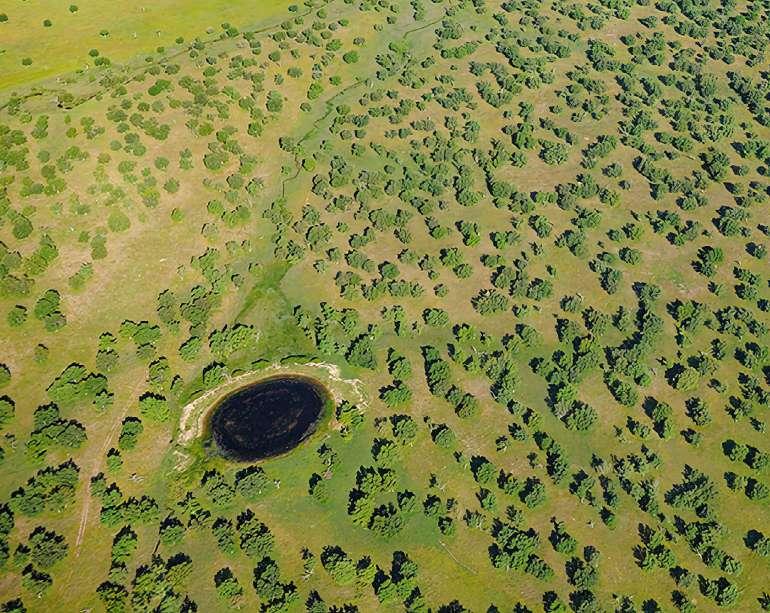
From there we started working with MAVA, whose team I regard as very special because of the way they relate to the entities they collaborate with. Someone to call when a problem arises, always ready to offer the best advice, building trust, listening, helping... and also to meet André and the Hoffmann family, with whom I had the pleasure of spending several days at the Reserve. I remember with special affection the evenings of get-togethers and music, always marked by the joy shared with our work teams.
Thanks to MAVA, the Campanarios de Azaba Biological Reserve has come to life. Almost 15 years
have passed since that meeting which marked my personal and professional life.
Together, we have brought nature back to life in all its splendour: a veritable Noah’s Ark for the Iberian Mediterranean fauna. European pond turtles have grown from 100 to 200, ponds and lagoons are now clear and home to more than 25 species of dragonflies and odonates, as well as a rich community of amphibians. The flora of the forests, pastures and ponds have increased; the soils are not ploughed and reptiles and beetles are now also abundant and can fulfil their invaluable function of enriching the soil.
Carlos Sánchez Martínez, Fundación Naturaleza y Hombrewas enhanced and a network created with 12 regional meadow promotion projects, which were located in a series from the east to the west of Switzerland.
Today, nature conservation organisations, cantonal agencies for nature and landscape conservation, foresters, agricultural schools, agricultural advisors, farmers and airfield and golf course wardens contact WIN Wieselnetz for expert advice on the conservation and promotion of weasels and other small mammals.
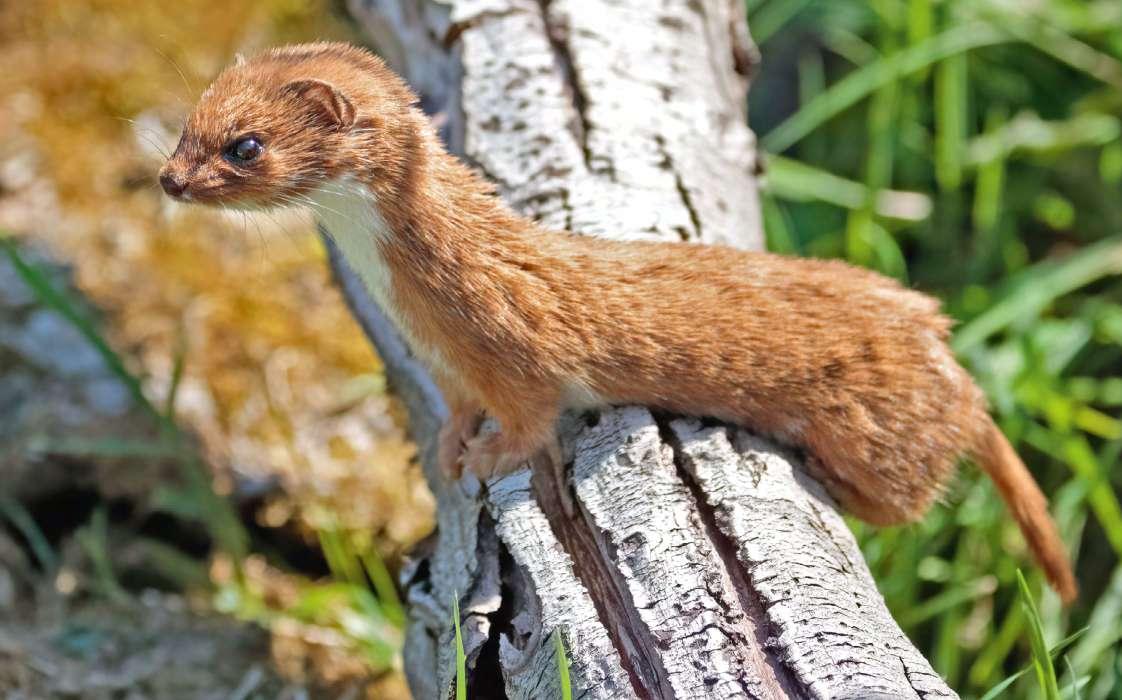 Cristina Boschi, WIN Wieselnetz
Cristina Boschi, WIN Wieselnetz
I had been told that Luc Hoffmann had attended the Congress. I was startled, it was my chance to meet one of the people I have most admired. After his speech, I approached his director and dear friend Jean-Paul Taris who facilitated our meeting at his hotel. Our meeting was supposed to last 20 minutes, but it lasted more than an hour and a half, during which we shared the dream of transforming a 600-hectare area

Another recurring topic in the stories was MAVA’s willingness to take risks on innovative new concepts or projects where it saw potential. In practice, this ranged from funding new ideas or out-of-the-box approaches for individual organisations to scaling promising pilots and forging fresh coalitions, for example with the private sector. Its readiness to think big and bold with funding and scale of action helped to multiply partners’ impact.
The foundation was often the first funder to come on board for new initiatives and its involvement tended to be seen as a mark of approval that eventually attracted other funders. It’s clear from the stories in this section that this early support laid the groundwork for many of MAVA’s partners to grow into credible, strong and sustainable organisations.
Thanks to MAVA Foundation for supporting the work of the European Environmental Bureau (EEB) on Circular Economy for all these years. There are many stories we could share, but let’s focus on Right to Repair.
We started by advocating to get material efficiency requirements under a specific policy called Ecodesign and targeting electric and electronic equipment. The policy focused nearly exclusively on energy efficiency, neglecting material savings. MAVA Foundation supported us from 2014 onward to make the case for material resource savings together with energy saving, notably as embodied energy and emissions in materials were becoming
The MAVA Foundation was absolutely instrumental when the Marine Stewardship Council was trying to launch our new Ocean Stewardship Fund in 2020/21. They had already helped us pilot a project in western Africa to look at alternative financing for smallscale fisheries that typically have problems accessing traditional financing. With help from our partner in the project, Clarmondial, we decided to use our Ocean Stewardship Fund (OSF) to solve this problem.
more significant as energy use was optimised. After four years of perseverant advocacy with our partners from NGO and consumer organisations, we got repair requirements in several Ecodesign regulations and the start of the development of a repair scoring index.
We created a campaign called the Right to Repair EU, getting inspiration from our US friends. In 2020, a Circular Economy Action Plan was released highlighting the development of a specific Right to Repair policy, while at the same time the repair provisions continued to be implemented through Ecodesign policy for more product groups. In the meantime, the Right to Repair campaign gained many new members and was awarded the Good Lobby Award.
Today, there are discussions about creating a repair label for energy products, exploring repair in other sectors like furniture and textiles, and making repair part of the necessary information on products placed on the market through Digital Product Passport. We cannot imagine that this would have ever happened without MAVA’s support, but we are confident we have now matured the campaign to get recognition and support from other donors, active members and sponsors. We are now considering how to expand beyond the EU and US towards the global level.
When we speak of MAVA, we speak of being supportive, we speak of dedication and devotion, a devotion to saving the world’s conservation sector.
MAVA also contributed to many changes in my community. An important change that definitely influenced the community of Boa Vista and Cape Verde at a national level was when MAVA explored new methods of beach protection, including night vision drones and conservation dogs, to keep poachers away from nesting turtles. About 70 night missions and about 400 single drone flights per nesting season were carried out.
About half of these missions were accompanied by policemen who were ready to intervene and arrest perpetrators in case poaching activity was detected. The number of recorded poaching cases dropped from 235 in 2017 to 70 in 2018 and further to 19 in 2019.
The conservation dog project started when we purchased two Labrador puppies in Switzerland in 2017. We named the two dogs (male and female) in reference to the scientific names of the two species of turtles found mainly in Cape Verde: Karetta (Caretta caretta, the loggerhead turtle) and Kelo (Chelonia mydas, the green turtle).
The two puppies received their basic training, as did the Cape Verdean rangers who would handle
them. In June 2019, Karetta and Kelo came to Boa Vista. The dogs’ main task is to track down parts of poached turtles, which will later be expanded to detect turtle meat, for example at airports, ports, and on boats.
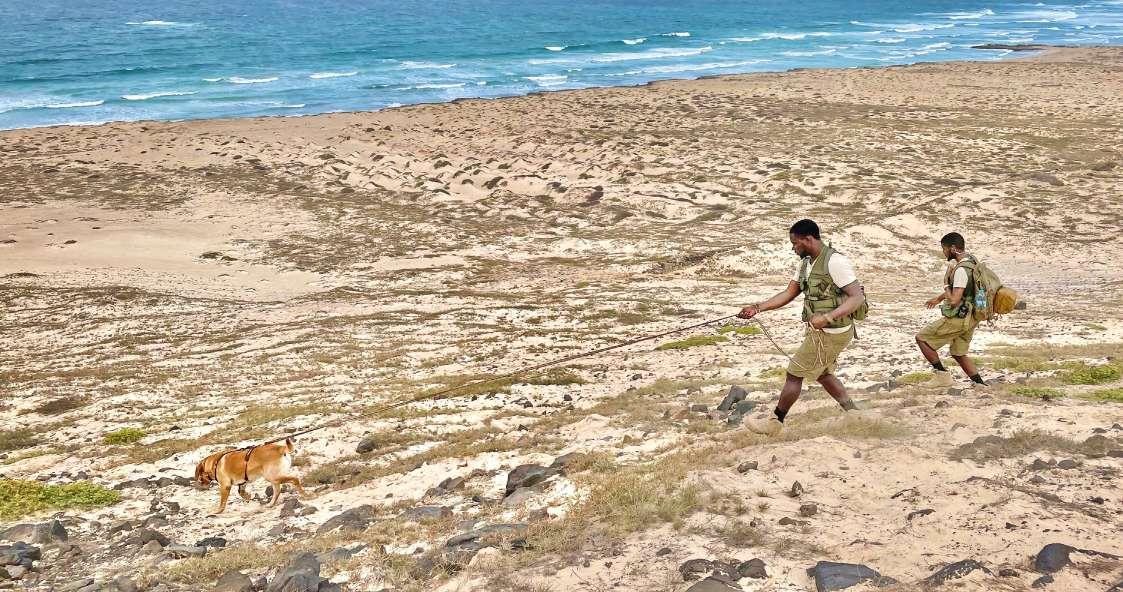
I think the hope this story brings for future conservation workers is that thinking outside the box and always trying to find new solutions for problems will lead to success.
MAVA was completely supportive of the idea and then even became the first major funder other than ourselves. Now we’re able to support small-scale fisheries, NGOs and research institutions across the Mediterranean and western Africa that otherwise wouldn’t be able to do their work protecting the biodiversity of these areas – and the impact will be transformative for years to come. And thanks to their support, we’ve been able to leverage significant additional outside financial support for the OSF to complement our own annual contributions –thus ensuring that support for
this work will be sustainable in the long-term. We’re both proud and grateful for all that MAVA has done for our work and for the sustainability of our oceans!
Paul Houseman, Ukie Resende, Fundação Tartaruga Marine Stewardship Council Stéphane Arditi and Jean-Pierre Schweitzer, European Environmental BureauWhile we were busy building WWF Mediterranean, thanks to MAVA’s flexible programmatic funding we could launch into innovative, audacious and even risky new conservation strategies. We targeted the powerful hydropower industry in the Balkans; we stepped into the offices of North Africa governments’ water departments to promote the unheard-of concept of ecosystembased river basin management; we shook the power structures around fisheries by promoting comanagement and bringing smallscale fisherpeople and coastal communities into the spotlight;
we changed the governments’ and communities’ perception of wetlands from wastelands to assets. None of this we did alone: MAVA’s support helped us build larger and more powerful alliances, coalitions and partnerships.
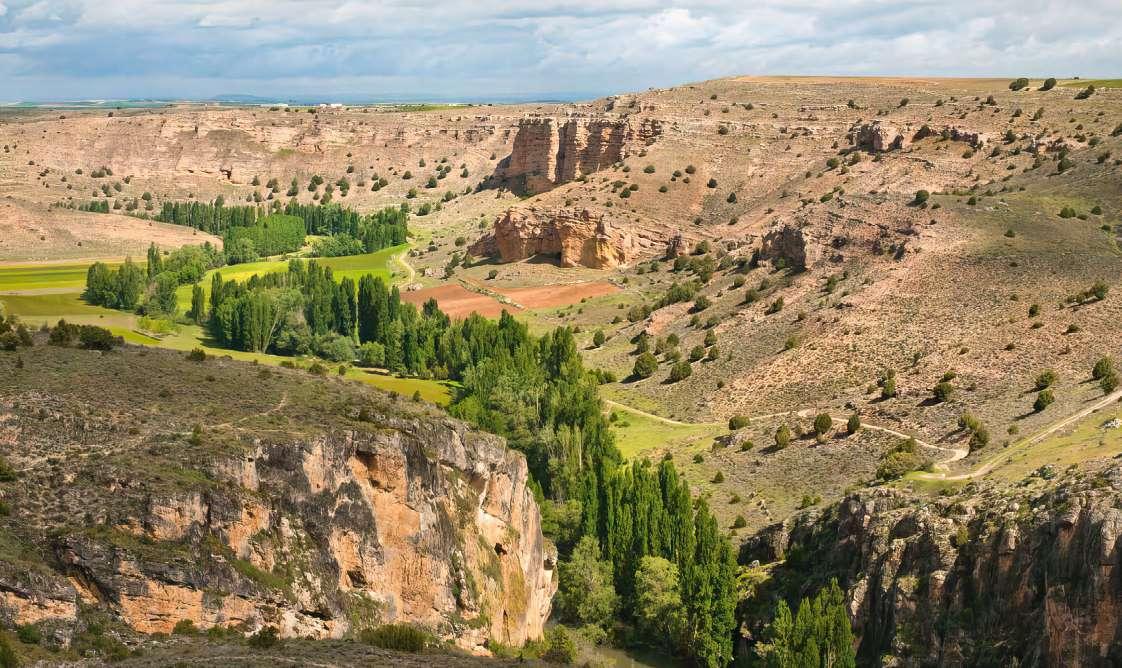
Now that I am approaching retirement age, I can see that MAVA was a companion for a large part of my journey. It wasn’t all plain sailing! As should be expected from a donor that contributed so much to WWF Mediterranean’s strategy, MAVA was often challenging, sometimes critical. Most of the time it was very flexible on strategy changes and budget reallocations; sometimes very demanding about aligning
with MAVA’s strategic objectives, joining in large partnerships and demonstrating impact. I am not sure whether WWF lived up to all MAVA’s expectations. I know that we did our best to meet them. As we did we do our best to prepare for the post-MAVA era.
WWF Mediterranean, WWF Adria, WWF North Africa and Associação Natureza Portugal (ANP)/WWF are all part of MAVA’s legacy. These are organisations that we could build thanks to MAVA’s support and that will continue carrying the conservation torch that MAVA lit and powered for a long time.
At Zero Waste Europe we have been playing with the idea of a network of European zero waste municipalities for almost 15 years. We knew we could create significant change if we managed to develop the right tools and train local groups to follow up with their local authorities to commit to changing their resource management.
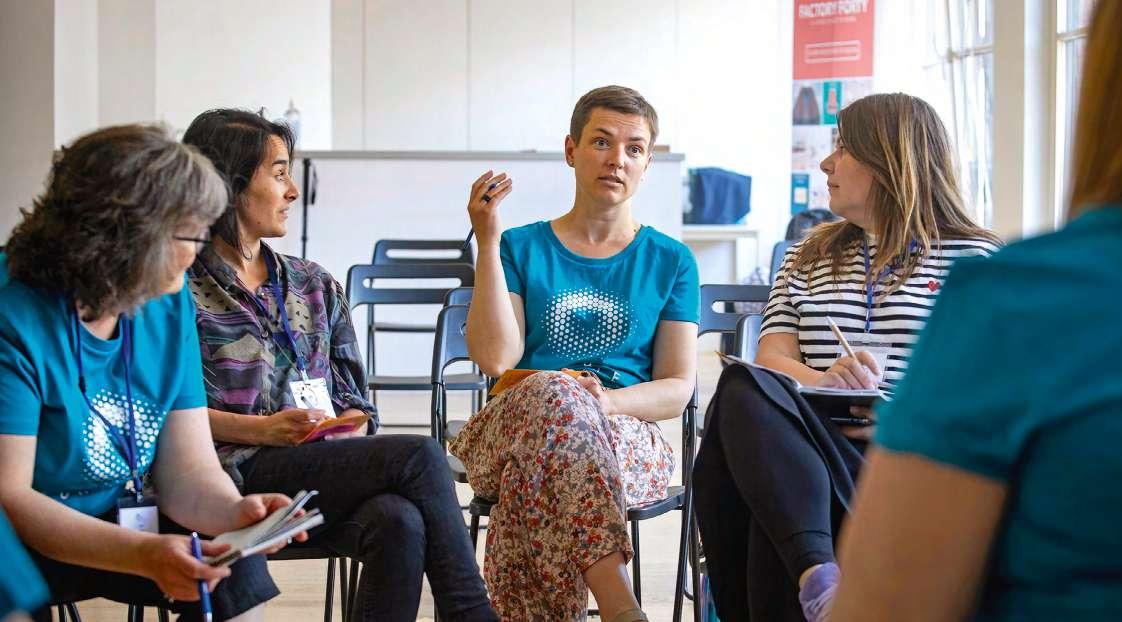
After lots of work from many people in our network, we managed to put together a proposal that interested MAVA, and since then the work has taken off big time. MAVA didn’t only finance part of this project but also brought other funders to help cover what was needed. In total, local groups in 13 European countries started working to turn municipalities zero waste.
Three years later, we have managed to develop the most robust zero waste certification system for cities on the planet and the project is so successful that we struggle to keep up with the interest from new cities from across the continent. From Riga to Barcelona and from Ljubljana to Brussels, almost 500 municipalities of all sizes and geographies have embarked on the journey to reduce waste and preserve resources for future generations.
This would not have been possible if MAVA hadn’t believed that, despite our crazy ambition, we had a plan to make it happen –and we did.
This is only one piece of support that MAVA provided to our organisation. Another key one has been the MAVA Leaders for Nature Academy, in which eight people
from our team have participated. For all this, the MAVA legacy is enshrined in the history and hopefully the DNA of Zero Waste Europe. Thanks MAVA for believing in us!
Paolo Lombardi, WWF Mediterranean Joan Marc Simon, Zero Waste Europe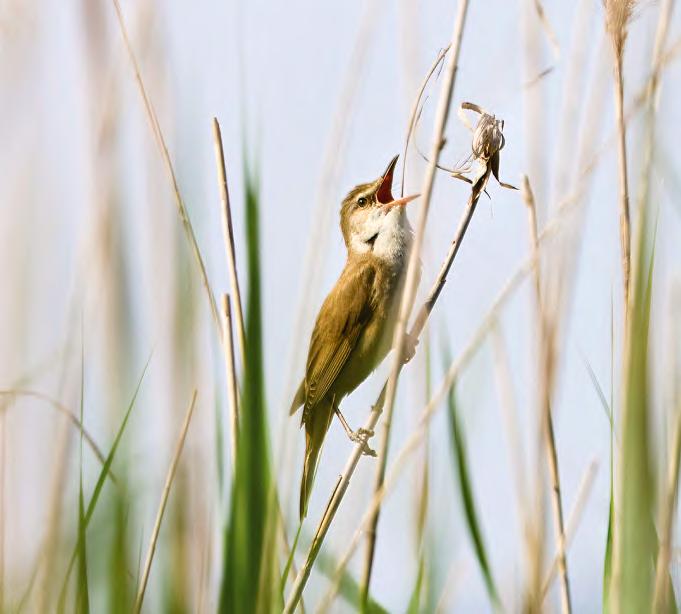
My first contact with the MAVA Foundation was in 2009, when I met the late Dr. Martin SchneiderJacoby from EuroNatur (Germany) for the first time. He introduced me to the work of the MAVA Foundation and their willingness to support projects in Bosnia and Herzegovina.
Over the past decade and a half, our Ornithological Dociety has had the support of MAVA for numerous projects in Bosnia and Herzegovina, mainly focused on fighting the illegal killing of birds, systematic surveys of karst poljes, and raising awareness about the importance of protection of birds and their habitats, as well as strengthening the capacities of our organisation through various workshops and training.
I personally had the most significant experience as a national coordinator for work on the second European Breeding Bird Atlas (EBBA2). The inclusion of our country in the EBBA2 project was of special importance because we had the opportunity for the first
time to collect data on breeding birds in Bosnia and Herzegovina. The complexities of working in the field, numerous gatherings and cooperation with colleagues from all over Europe presented a special challenge, and the support we received from the MAVA Foundation greatly strengthened our capacities.
For a small country like Bosnia and Herzegovina, MAVA was more than supportive – it was the ink to the fountain pen that wrote significant dates for ornithology in Bosnia and Herzegovina.
Dražen Kotrošan, Ornithological Society ptice”
MAVA has been a risk-taker and a first-mover, allowing for the creation of new avenues to impacts. MAVA was the first supporter of the Green Digital Finance Alliance (GDFA), a notfor-profit with the mandate to scale green finance with fintech and digital technologies. Digital technologies hold the potential to innovate the financial system in ways that empower every citizen to become green asset owners, something which is all too often only accessible to larger institutional investors. A transformation which will not happen automatically, but only
A couple of years ago, we started a new workstream to develop tools and methods to make the case for investment in sustainable and nature-based infrastructure. This led to the development of the Sustainable Asset Valuation (SAVi) methodology. MAVA believed in
if it is guided. MAVA enabled the GDFA to become a market catalyst to unlock the change.
I had the experience of heading up the GDFA during its first years of operation. During these initial years, regulators, policy makers and financial service institutions were sceptical towards our mandate of leveraging digital technologies to green the financial system. We worked to document how it is possible to guide digital technologies to green the financial system in inclusive ways. After years of mapping innovations and proving potentials, now policymakers, regulators and financial institutions are themselves beginning to
experiment with green digital approaches to a greener and more inclusive financial system.
GDFA is now perceived as the go-to platform on insights and approaches to green digital finance. It is no longer a side story, but a respected market catalyst. Now more donors support the mission and vision of the GDFA, but to begin with MAVA was the only philanthropic funder who was willing to take risk in order to create new types of impacts.
Marianne Haahr, Green Digital Finance Allianceus to make that happen, but also asked us really difficult questions. It’s thanks to that approach that we managed to deliver a very impactful tool and were able to roll it out in many countries and on many infrastructure projects.
MAVA kept believing in our work, in the innovation we wanted to bring into the sustainable infrastructure
space, and empowered us to make that happen. Not only did MAVA seed the funding for this new workstream at IISD, it also pushed for impact and scale, provided leadership training to our team through the Leaders for Nature Academy, and connected us to other MAVA grantees such as Wetlands International Africa, EcoAlbania, and WWF Greece, with whom we’ve been working since on applying SAVi to advocate for more sustainable and naturebased infrastructure. MAVA truly operated as a catalyst for our work, and helped us set up and prepare to be able to deliver impact for the years to come.
Liesbeth Casier, International Institute for Sustainable Development (IISD)
“NašeIn the early 2010s, we launched an ambitious capacity-building programme for protected area managers in West Africa, then Central Africa and from 2015 onwards, for the whole of Africa. Combining face-to-face and online training, this programme has been built step by step, as our understanding of the needs, targets, usable resources and partners has progressed. Several donors helped us, but for all this to work we needed flexibility to keep our capacity to adapt and reorient over time. This is what MAVA offered us, through three projects between 2011 and 2021. The first one allowed us to establish on-site training; the following ones consolidated it and opened the immense field of

We had a meeting with MAVA in 2017 to share our ambition to start a circular economy programme in China. Our approach to circular economy is about systems change, entering through the lens of global material flows, and we knew that China as the world’s largest manufacturing nation was a massive actor in this system. So we felt convinced of the need to work there. But it would be a huge project requiring substantial resources, and there was a healthy level of risk attached as we would be the first NGO to try and work on circular economy in China. Our meeting ended up being quite short and hugely catalytic. There was an amazing moment when MAVA said to us: “Yes, we think you are right, we don’t know how you are going to do it but we believe you are the right partner to try.”
online courses. Today, the Master’s degree (seven classes) and the university diploma (19 classes) have become institutions (thanks to a solid partnership with Senghor University) and the Massive Open Online Courses (MOOCs) have reached nearly 100,000 learners, 85 per cent of whom are in Africa. The mooc-conservation.org platform continues to grow slowly to become the natural portal for online conservation training in Africa.
None of this would have been possible without MAVA’s intelligent, scalable, adapted and flexible support, which has been able to evolve each of its projects according to new co-funding opportunities or, on the contrary, gaps to be filled. An example? In 2019 and 2020, we found funding
to cover university diplomas in West Africa, which freed up MAVA’s commitment to this topic. We were then able to reallocate the budget to a nascent initiative for children, youth-conservation.org. A new chapter in an exciting new adventure!
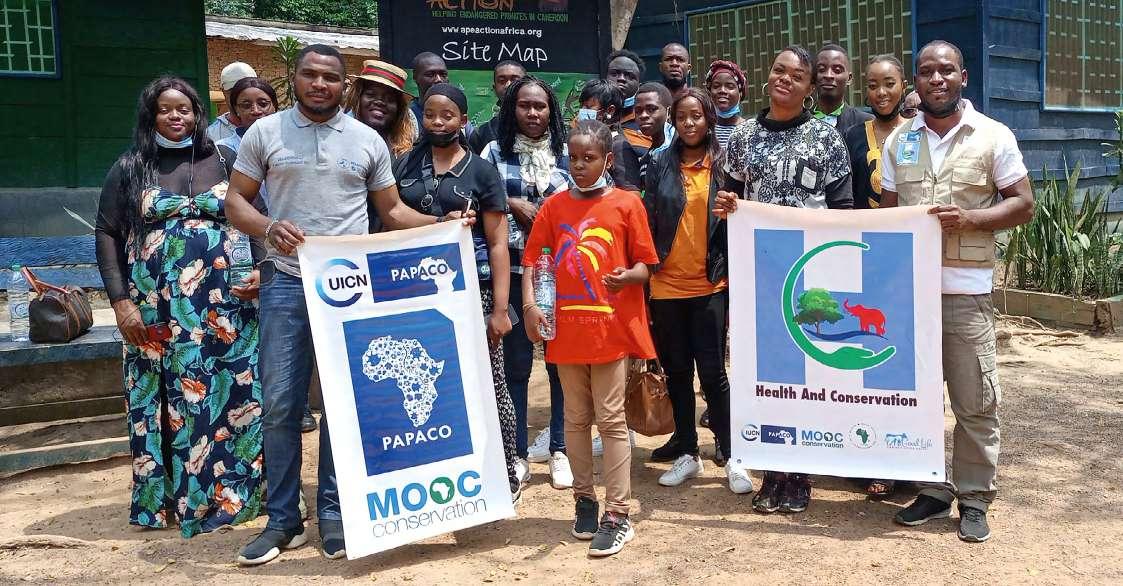 Geoffroy Mauvais, IUCN-Papaco
Geoffroy Mauvais, IUCN-Papaco
It was a moment that made me realise MAVA truly understood our approach to systems change, and also that they trusted us to make an impact and were willing to put forward the essential seed funding to let us begin. This was a realisation of true partnership and we were blown away by that and the opportunity it created.
MAVA’s collaboration meant for me the possibility to act creatively towards achieving the goals of our organisation. Everything started when I had the opportunity to reflect about the impact of the actions we were doing in the Land Stewardship Programme and how they were contributing towards achieving our mission. It was an interesting process that led us to discuss new ways of getting closer to it.
MAVA’s approach to grant making allows organisations to be flexible and adapt to new realities. It also allows us to follow a learning process and improve the way we
I remember the deep personal interest of both Luc Hoffmann and André Hoffmann in the topic we had battled with: If we (as WWF or the conservation movement or humanity) truly want to save biodiversity around the world (and keep the biosphere healthy for life), should we not systematically track the underlying drivers that are eroding that health? Should we not monitor if overall we are making progress, and whether our interventions have impact? Given that human demand on ecosystems must stay within the ecosystems’ means to avoid
depletion, would it not be useful to track how the world, countries, cities, companies, individuals are doing?

This common passion led to long-standing collaborations with MAVA Foundation, with surprising openness and mutual engagement. Having the funders be engaged with that level of curiosity and honesty has been inspiring. It allowed us to share successes and failures, and learn together. It was a true joining of passion and purpose, not just something nice and noble on the side, but the collaboration turned into a joint expression of the world
we wanted to build together. I loved the honest conversations and our common causes of inspiration. This also allowed for much more experimentation, because we all knew how much innovation and trying it would take to shift all of our brothers’ and sisters’ attention to recognising the significance of intact nature as the foundational force (and “capital”) for everything else, the truly ultimate means enabling anything else.
work. In my personal case that meant that I was able to propose new activities, which we were able to test and, in fact, confirm that were truly impactful. Thanks to them we started organising two new lines of action. The first was training for farmers that included individual advice to accompany them in their process of adopting new sustainable practices. We realised that this individual advising was key to bridging the gap between theory and practice. It was the element that made the difference.
The second was a new way of product and farm promotion. We started organising public excursions to farms, which finished with a tasting of their products.
At the end of each excursion a list was opened for everyone interested in receiving direct information from the farmers about their products. This little detail made a big difference for them because it allowed them to significantly increase their pool of clients. Getting to know the farmer and the farm personally truly impacted the visitors and they became loyal clients.
For me, personally, being able to be creative and try new activities was really fulfilling and made me feel that I could contribute towards a real change in my surroundings.
Jara Febrer, GOB Menorca Mathis Wackernagel, Global Footprint Network
Mathis Wackernagel, Global Footprint Network
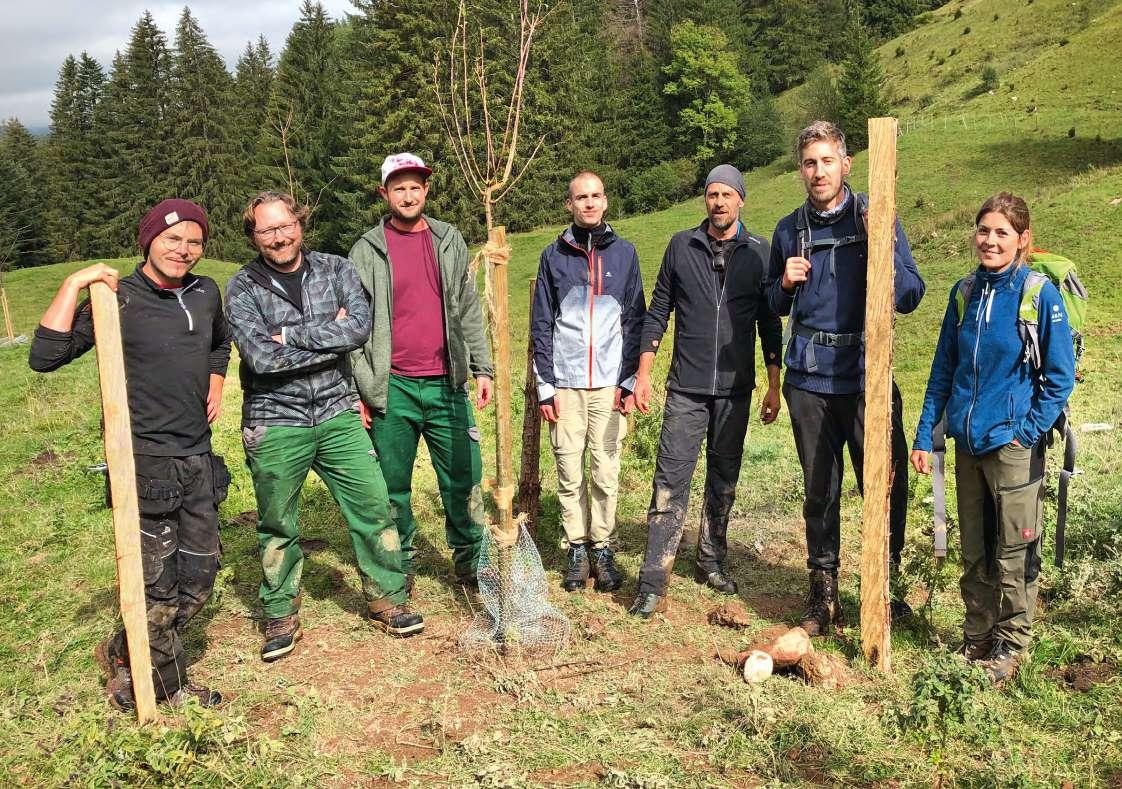
As part of the implementation of the Swiss strategy, the Federal Council decided on 18 May 2016 to allocate additional funding to the cantons, subject to a financial contribution from them or from third parties ranging from 35 to 50 per cent, for the implementation of urgent measures for the restoration and regeneration of biotopes of national importance.
At that time, the canton of Vaud did not yet have a biodiversity action plan and the cantonal funds available did not allow it to apply for additional federal
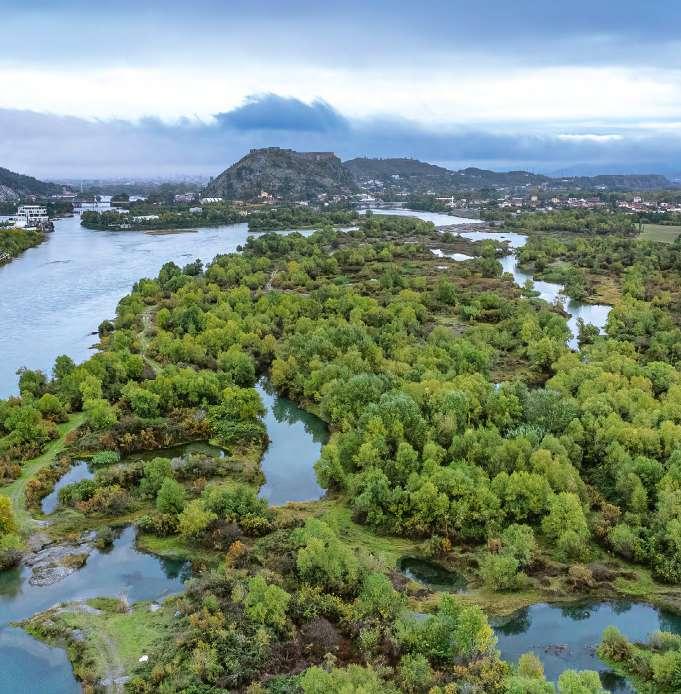
funding. The announcement of MAVA’s increased commitment to concrete measures in favour of biodiversity in the canton made it possible to benefit from federal subsidies. Above all, it made it possible to mobilise the cantonal authorities and politicians on the needs of the canton, the path to be followed to preserve biodiversity, the relevance of private-public partnerships, and finally the importance of pooling forces and exploiting synergies between actors.
MAVA thus played a key role in the canton on two levels: on the one hand, it served as financial leverage by making it public that this temporary aid would eventually be provided by the
canton and that in this context, the state had a major responsibility; on the other hand, in the form of added value of sharing common values and of a long-term commitment to work together (NGOs, civil society, managers, and canton).
Catherine Strehler Perrin, CantonWhen we started the Council on Economic Policies (CEP) in 2012, our aim to build an international economic policy think tank for sustainability did not really fit into the world of grantmaking for environmental and social causes. The usual approach of foundations back then was to support capacity-building and engagement in relation to a particular environmental or social objective. Our focus was on fiscal, monetary and trade policy, and their vital role for the sustainability agenda as a whole was somewhat at odds with that.
policy and that of core allies. In 2018, MAVA provided additional support for us to broaden our activities on the governance of finance and thus the often hidden but crucial role of central banks and financial supervisors for sustainable prosperity. And in 2020, a grant from MAVA for our organisational development was instrumental in moving CEP to the next phase.
It was the openness and pioneering spirit of a few funders that enabled us to press ahead. MAVA was one of them and has been at our side ever since. In 2014, its Collaborate4Impact initiative not only provided a platform to move economic policies up the sustainability agenda, but also put a strong spotlight on the opportunity for collaborative engagements in the space.
Shortly thereafter, MAVA and Future Foundations co-launched Partners for a New Economy (P4NE) as their own collaborative initiative in the field. Through P4NE, MAVA became a key funder of our own work on monetary
Without MAVA, CEP would not be where we are today. Not even close. And without MAVA, the recognition of the crucial role of economic policy for sustainability would not be where it currently stands. Many things have already changed over the last few years. Central banks have started engaging on climate risks as well as on the distributional effects of their policies. Financial supervisors have brought environmental objectives onto their agenda. Tax policymakers and other stakeholders are putting a greater spotlight on the sustainability effects of the trillions in dollars that governments forgo in tax expenditures each year. And the environmental and social impacts of global trade are continuously moving up policy agendas. The community pursuing these changes has come a long way. It has also built a strong foundation for many further engagements in the years to come. MAVA was critical for that. Thank you!
Alexander Barkawi, Council on Economic Policies de Vaud, SwitzerlandThese stories describe the community of actors MAVA built and the methods it used to solidify their collaboration, whether through establishing initial connections between like-minded players, nurturing networks transcending the boundaries of organisations or borders, deepening existing relationships between conservationists or helping to fund the creation of physical convening spaces, research centres and infrastructure. Conservation faces many challenges in the coming decades and the foundation saw that a united front would be essential to tackling the work ahead, helping individuals to believe in their work and ability to drive change.
In its final years, MAVA invested even more of its resources and energy into preparing its partners for a future without its funding. One of its most powerful tools to achieve this was the creation of the outcome action plans that convened related partners in joint missions, catalysing collaboration between organisations more accustomed to competing for funding, which is described in several memories shared in this section.
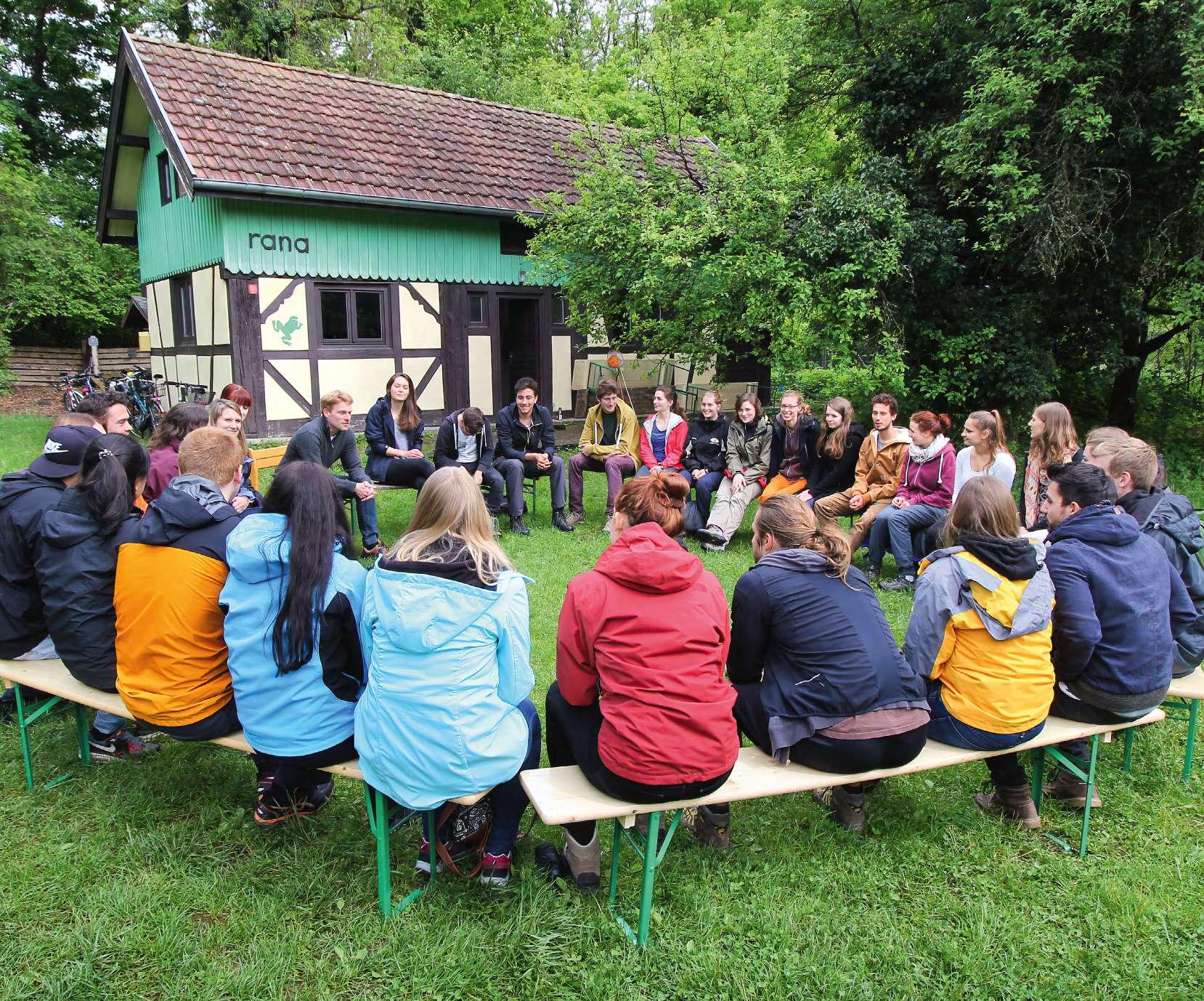 Left: Training future conservationists at the University of Basel. Photo taken on 12 May 2017 at the research station Petite Camargue Alsacienne.
Left: Training future conservationists at the University of Basel. Photo taken on 12 May 2017 at the research station Petite Camargue Alsacienne.
The governance activity within the Maristanis project was to me the most exciting and difficult part, with ups and downs and definitely big learnings for the future.
What particularly interested me was to put together 11 municipalities, 11 different realities that for centuries have not collaborated together and have planned in their territory
The management of a MAVA scheme, and the MedBycatch project in particular, was an immense pleasure, especially seeing the achievement of objectives that initially seemed so difficult. With this project, we didn’t just create a team, but a real family around the same theme.
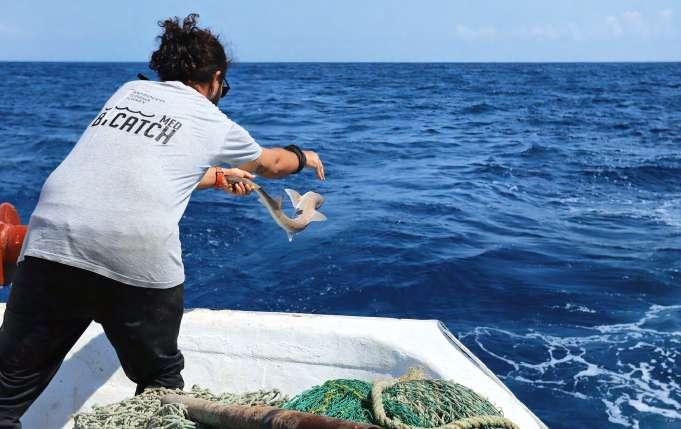
We were able to be creative and innovate, to adapt, improve and support each other, to use each other’s strengths and minimise each other’s weaknesses, to complement each other, and to become indispensable to one another. We created what is most difficult: a climate of trust between scientist and fisherman, between decision-maker and scientist, between fisherman and decisionmaker and much more. We hear people around us say, I’m proud to belong to the MedBycatch family!
From this point, we can only achieve excellent results with both
in a non-homogeneous way, often even without consulting with each other, especially on environmental issues. Starting the process of training and sharing environmental data has been a historic moment not only for the Oristanese, but for the whole of Sardinia.
In general, there has always been an unwillingness to work together, but in the Maristanis programme it was possible to bring together these municipalities and other key players from different fields such as agriculture, fishing and tourism.
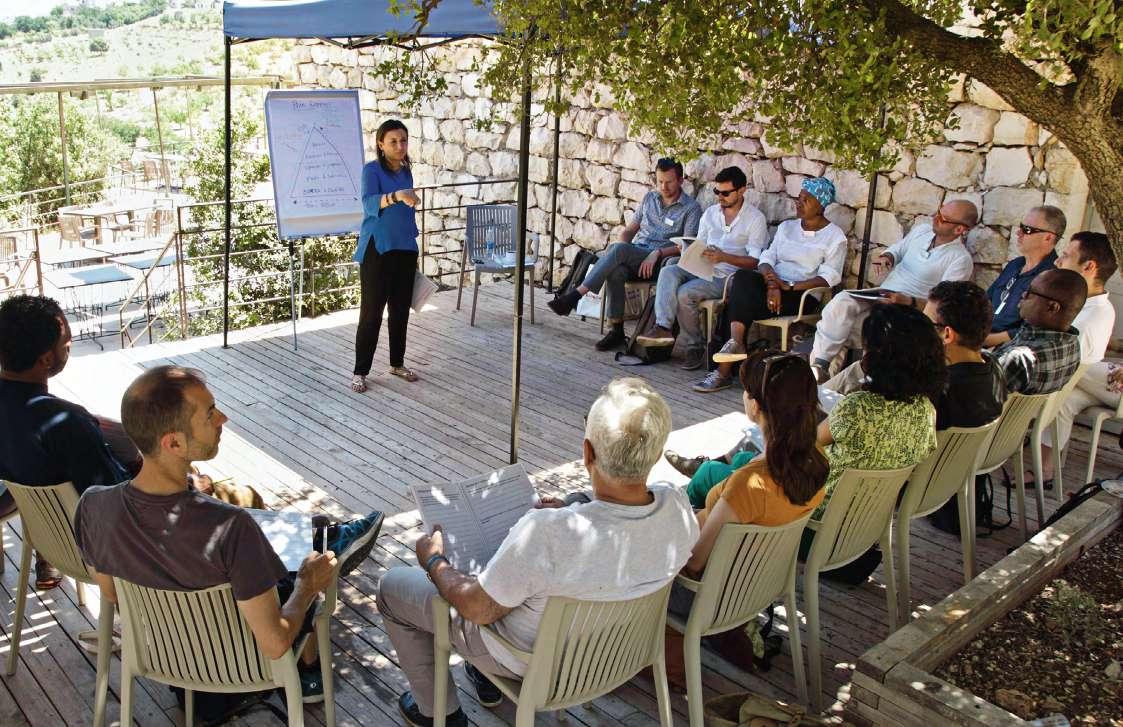
There was resistance, but we were able to move forward thanks to the continuity of MAVA and Maristanis. Often, short-term projects do not allow the opportunity to overcome obstacles in the same way, but thanks to Maristanis’ five-year duration and the security that MAVA gave us, we were capable of overcoming the initial difficulties.
Alessio Satta, MEDSEA FoundationWhen I heard for the first time that MAVA would close in 2022, I had mixed feelings and one question: why? Why close such a successful organisation? Our experience with MAVA has been so exceptional and we were aware of the differences MAVA had made through its funding programme, not only for us but for the sector.
flexibility which allowed us to follow our priorities. I learned about the opportunities of the Leaders for Nature Academy and the big impact of its work on me and on our organisation. And I learned about the intention to shift our sector from a group of competing organisations to a real community in which members understand the benefits of collaboration.
grow further – even without MAVA as facilitator and funder. It is in our hands and I trust that we will be able to maintain and develop MAVA’s legacy: a strong community of nature conservation organisations working in the Mediterranean Basin for nature and people.
the pride of having contributed to it, the awareness that it is a joint task for the group, and above all that it is our union that has created our strength and which will be our strength for the future. Finally, I can say that MAVA has made it possible to bring out what is most human in each of us and made this the best tool for implementing
concrete and effective actions for the conservation of biodiversity. There are many indicators of this success that we can proudly present to the world while loudly proclaiming that change is possible.
Anis Zarrouk, UNEP/MAP-SPA/RACOver time, I learned more and more about the different strategies of MAVA to help not only us, but the entire community, to develop and to grow. My doubts became smaller and smaller. I learned about the transformational impact of programmatic partnership and the related
At the beginning, I was still very sceptical and thought to myself: once the funding ends, this community will fall apart and most likely we will go back to the mode of competition. Now, some years later, I am much more optimistic.
I am convinced we can nurture our community further and can
Gabriel Schwaderer, EuroNaturFor me, the Circular Cities Switzerland initiative was the beginning of the joint journey –at a time when circular economy was not even a buzzword. Together with Circle Economy from the Netherlands, we were able to sensitise the five largest cities in Switzerland and their
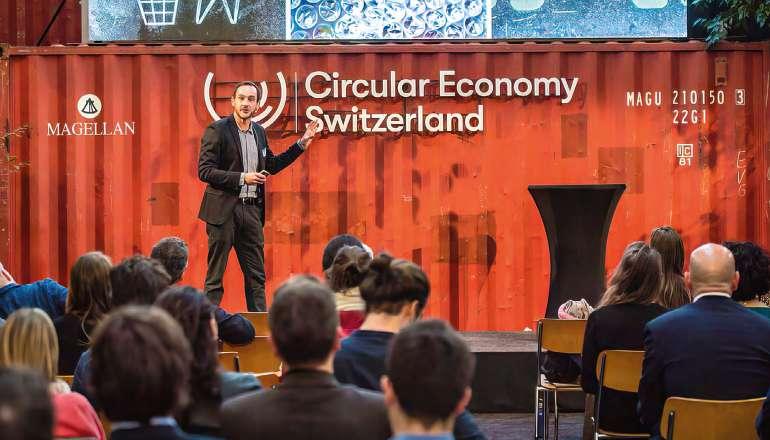
Although the Alliance for Mediterranean Nature and Culture, of which the Yolda Initiative is both the co-founder and the coordinator, seems to have been formally established in 2021, the adventure of this regional partnership of 13 organisations actually started back in 2012 –thanks to MAVA.
Under the leadership, initiative and hosting of MAVA, experienced people and organisations working in the field of nature and culture came together in Switzerland in 2012. Our focus was on the current state of traditional production forms and cultural practices, which have positive outcomes in terms of nature conservation,
now drafting an implementation oriented circular economy master plan.
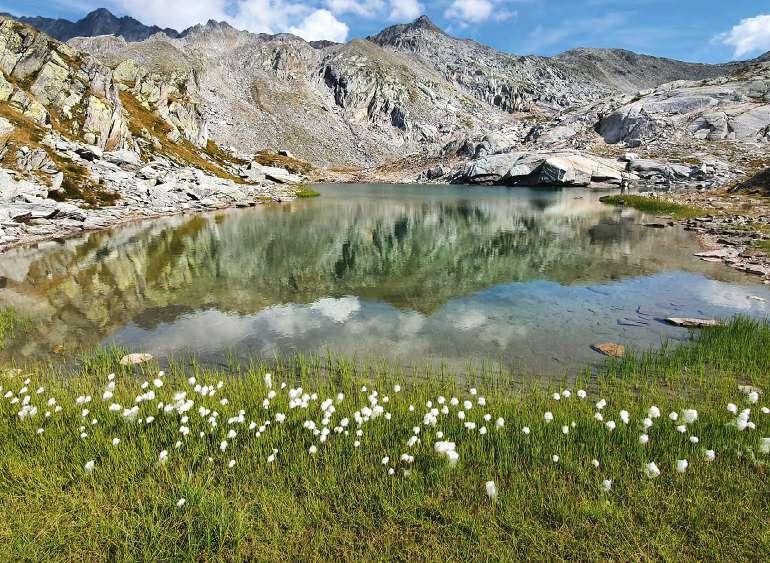
stakeholders, develop strategies and help shape concrete projects.
This road was not without obstacles and not always a straight line, but thanks to MAVA’s flexibility, the basic idea has been successfully implanted and concrete projects have been implemented. It is also directly attributable to the initiative that the capital of Switzerland is
Above all, it is also thanks to MAVA’s persistence, that a national movement called Circular Economy Switzerland has emerged from a series of individual projects.For me, a consistent and long-term picture of the foundation has emerged over the years. It hurts and I will miss MAVA and its people. At the same time, thanks to the wise setup of the projects, MAVA’s ideas and initiatives will continue to flourish and have a long-term impact.
Thank you MAVA!
Marco Grossmann, ecosNegotiations for a 10-year Global Biodiversity Framework – an action plan for nature through the United Nations Convention on Biological Diversity – were going slowly in Geneva in March 2022, with no agreement on the mission or direction, and insufficient leadership from governments to drive towards an ambitious outcome. This was at odds with the societal expectation for action on nature which has grown significantly in the past few years.
but that network does not always communicate and align itself internally and tap more of its potential. By providing support to WWF International for strategy development, coordination, communications and technical expertise, MAVA was pivotal in aligning the WWF network around a common strategy, engaging heads of government and their ministries, UN institutions, business leaders, the finance sector and civil society.
by governments. It should soon be endorsed when the whole framework is agreed in Kunming, China, setting a clear direction for all nature conservation efforts for the rest of the decade, to help ensure there is more nature in 2030 than at the beginning of the decade.
and what can be done to protect these threatened practices and communities, and therefore biodiversity.
One of the most important outcomes of this small meeting was the decision to develop cooperation at the regional level to scale up our collective impact. This cooperation, initiated by the people and organisations at that meeting under the leadership of MAVA, has turned into a huge partnership that has a real impact on a national, regional and global scale, again with the support of MAVA. MAVA became one of the most important architects of this process with its leadership and facilitation.
MAVA has provided all kinds of support to ensure the financial
and organisational sustainability of this partnership in order to continue its strong existence after 2022. Being a part of that critical meeting that took place in Gland 10 years ago, witnessing the impact of the decisions taken there 10 years later and taking part in this process from the very beginning is one of the success stories that I have enjoyed and been proud of in all my years in the field of nature protection.
We needed to act, to help get negotiations back on track. So a number of organisations came together and discussed a way to ensure that all 190+ countries present for the negotiations would understand the global expectation on them. We created a series of placards, each one succinctly capturing the overwhelming support for nature: “1,000 companies calling to reverse nature loss”, “89 financial institutions calling to reverse nature loss”, “94 heads of state calling to reverse nature loss”, and “330 civil society organisations calling for a nature-positive world”.
24 hours later in Geneva, a naturepositive mission for the Global Biodiversity Framework was tabled in the formal negotiations by the government of Zambia, quickly enjoying support among many governments present. The unifying message had been delivered by an empowered and diverse coalition of voices, and heard and heeded
The support and partnership of MAVA has not only had a lasting impact in moving nature much higher up the global agenda. It has also helped the WWF network develop and implement an ambitious strategy, grow its advocacy muscle, and also helped build new and enduring relationships with key influencers. This is exactly the kind of partnership that WWF cherishes.
Gavin Edwards, WWF International and CultureThe placards themselves summed up perfectly the growing movement for nature which has been building. Much of this growth can be traced back to initiatives by various organisational partnerships, with one partner particularly ubiquitous – MAVA. WWF has many different kinds of partners and partnerships across its network of offices worldwide,
Engin Yılmaz, Yolda Initiative & Alliance for Mediterranean Naturesome wooden trunks and old chairs around it. We sat together around the fire and talked about our shared ambition to protect and restore nature, and shared other stories. We were one group enjoying nature and each other’s company. At that moment, we felt that the friendship with MAVA, which had begun 12 years earlier, was renewed. In the period of 2012 to 2016, we have been able to develop Faia Brava more or less to its present shape, and we were able to join several LIFE projects, something that before was not yet possible.
MAVA stayed by our side when in 2018 ATN suffered a difficult financial situation, and MAVA gave support to further professionalise the organisation in the period of 2018 to 2020. We consequently changed a lot of things internally to be best prepared for the future. MAVA was present with a critical view on the one hand and a caring heart on the other hand.
In June 2022, Faia Brava ATN celebrated 22 years of building the Reserva da Faia Brava, Portugal. Today, the reserve has reached a size of more than 1,000 hectares, along a 7km stretch of the Côa river. We are now able to protect the main habitats for cliff breeders, and in addition, Faia Brava offers a habitat for countless species. Private nature conservationists have stepped in and bought more than 300 hectares next to Faia Brava to create an ecological unit. To a large extent, these
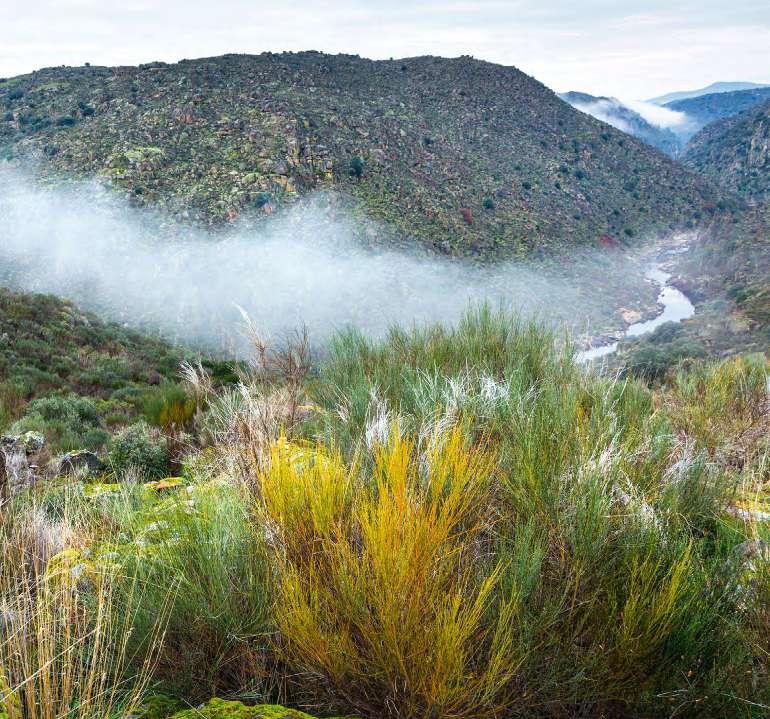
For me, one of the most important legacies of MAVA will be the message that if we work together, we can achieve real impacts that contribute to preserving our natural resources for future generations.
MAVA as an institution is a clear example of how one family from
the private sector has contributed to generate a collective vision of power to drive real changes that have helped to protect nature. This example should be an inspiration for other private institutions. The networks of conservation organisations that it has helped to consolidate are alive and best placed to follow MAVA’s vision and aims. Being part of these networks of experts and institutions is an
added value and special in my personal and professional experience.
developments were made possible by the MAVA Foundation, and we are happy to share the story.

In 2000, the Associação Transumância e Natureza (ATN) was founded in the presence of Dr Luc Hoffmann who made the acquisition of the first key habitats. In 2009, the Portuguese government stepped in, providing the new Reserva da Faia Brava with the formal status of Private Protected Area.
An extraordinary moment for us was MAVA’s visit to Faia Brava in May 2012. It was rainy and cold, so we made a campfire and put
Today we can say that Faia Brava has grown to a nature jewel in the Côa Valley, with a reputation far beyond the Portuguese borders. And our organisation – today called Faia Brava ATN – has become a regional nature NGO, well embedded in Portuguese society.
This would not have been possible without the long-term support of MAVA. Thank you so much, dear Hoffmann family and MAVA team!
Henk Smit, Ana Berliner and Antonio Monteiro, Associação Transumância e Natureza
This story begins in 2007. The CBDHabitat Foundation, accompanied by Luc Hoffmann and Jean-Paul Taris, visits Guinea-Bissau for the first time, more precisely the Bijagós archipelago, an African natural paradise. Its ancestral and animist culture brought us into this new challenge: to develop a project
compatible with the conservation of biodiversity and the Bijagó culture. But most important to us are the memories of times like this: our heroes together, those people who fought for conservation, some of whom are no longer with us, but who were an important part of our lives.
Lourdes Lázaro-Marín, IUCN Centre for Mediterranean Cooperation Above: Luc Hoffmann, Francisco Conduto de Pina (Secretary of State for Tourism, Guinea-Bissau), Nelson Gomes Dias (IUCN), Nuria El Khadir (CBD-Habitat), Pierre Campredon (IUCN International Consultant) and Alfredo Simão Da Silva (Director of IBAP).
It was a moment of happiness and celebration at Morro beach after a tough but successful loggerhead turtle nesting season in 2015, with very low nesting numbers and scarce resources to protect them. For me, this image beautifully visualises the approach to conservation we developed –
supporting local communities to be the stewards of their resources. Simply put, it shows people and nature, which is what conservation should be about.
In this image, we can see a sea turtle made of over 100 people committed to their conservation and the sustainable development of an island, Maio in Cape Verde, including rangers, fishermen,
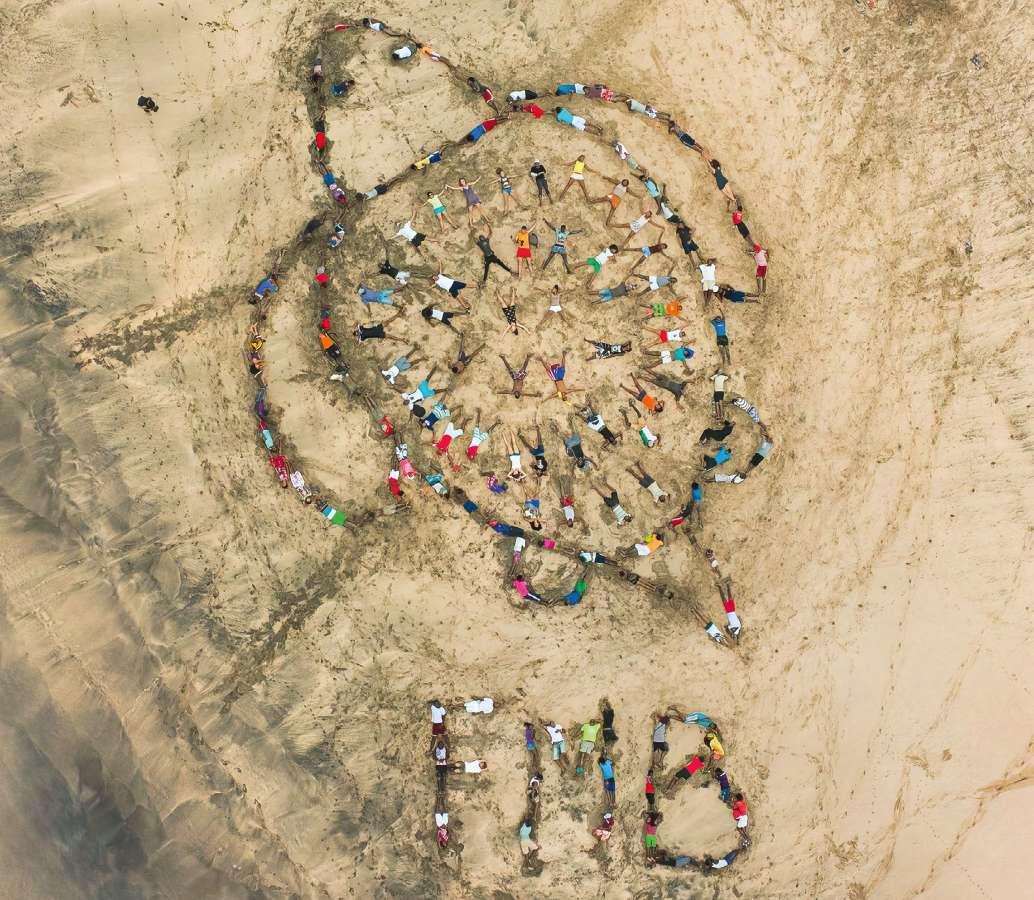
women hosting the turtle team at their homes, and many local, national and international volunteers, community members and authorities, as well as the Fundação Maio Biodiversidade team.
One of the most remarkable things about MAVA and its team is the real and genuine will to help not only nature and communities, but also the partners that work in the field. This spirit and vision of generosity, support and positive and constructive contribution spreads towards the partners that in turn adopt it for themselves.
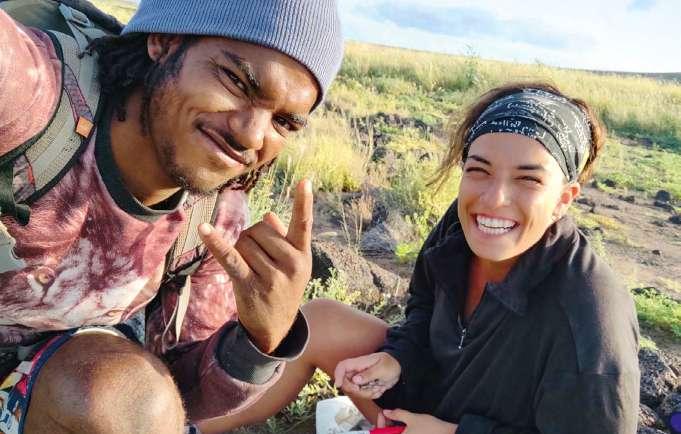
I believe that this has led to the creation of a huge nature conservation community and even family in West Africa which will be one of the greatest and most solid legacies of MAVA. The creation of organisational development programmes for partners to guide them to become better and more effective organisations is the greatest example of this spirit of genuine support and care for partners.
a better future
the endangered
Pablo Fernandez de Larrinoa, CBD-Habitat Arnau Teixidor, Fundação Maio Biodiversidade Above: CBD-Habitat deploying a GPS ankle bracelet prototype for the first time, technology that would finally show them the foraging areas of Mediterranean monk seals within the Cabo Blanco population. This photo [left] shows Biosfera 1 and SPEA working together for for raso lark. The future is in our hands!Some partners recounted anecdotes about MAVA’s role in raising awareness of conservation issues, including engaging new audiences. Many of these stories call to mind Luc’s motto of protecting nature “with man, not against him”. Through supporting its partner organisations to raise the profile of local conservation issues and help communities understand the importance of protecting their natural heritage, the foundation inspired many people to take action for nature.
In these memories, we also hear about research funded by MAVA that made a significant difference to the understanding and knowledge of not just individual practitioners or partners but also the wider conservation sector, and which will have a far-reaching legacy.
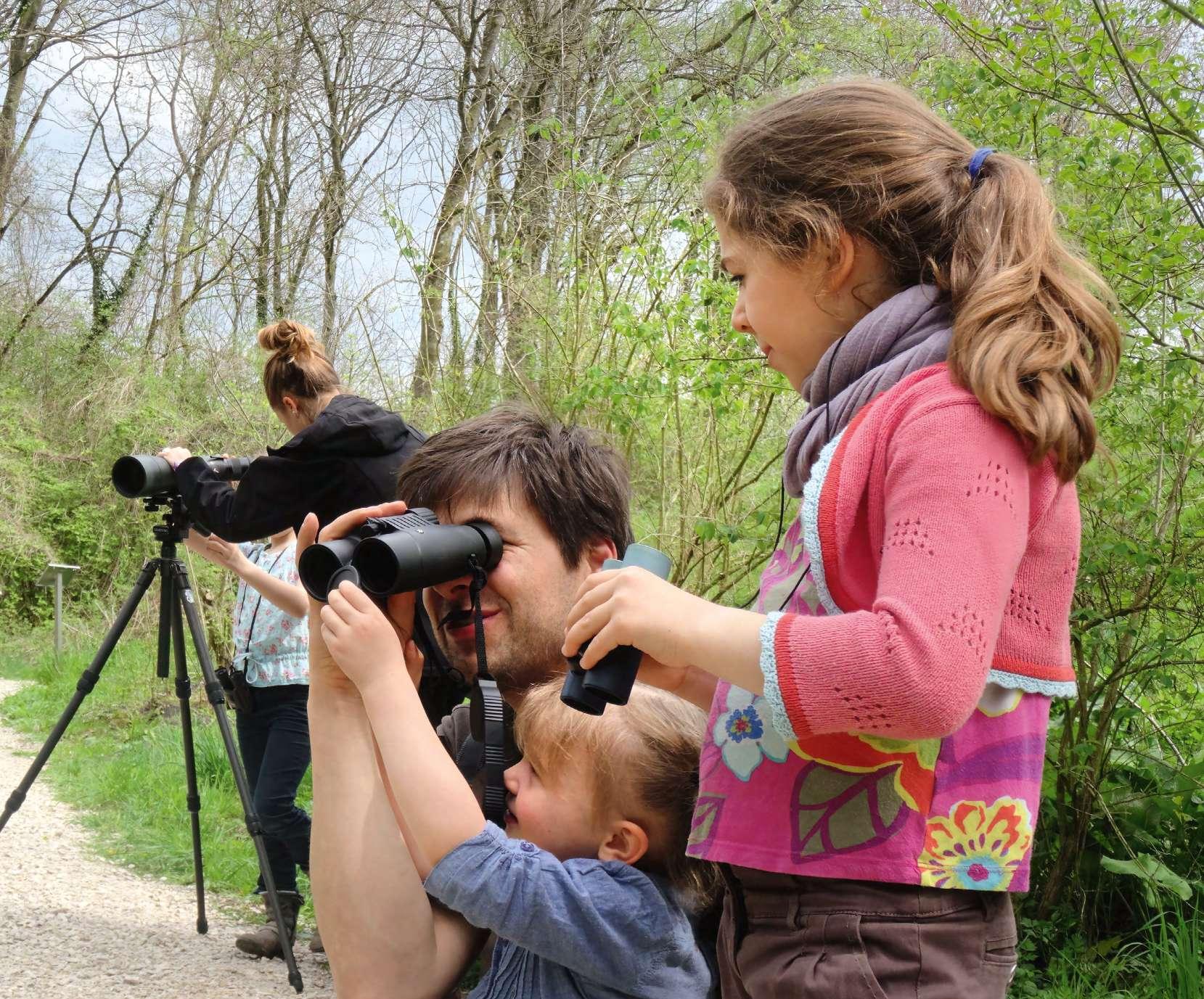
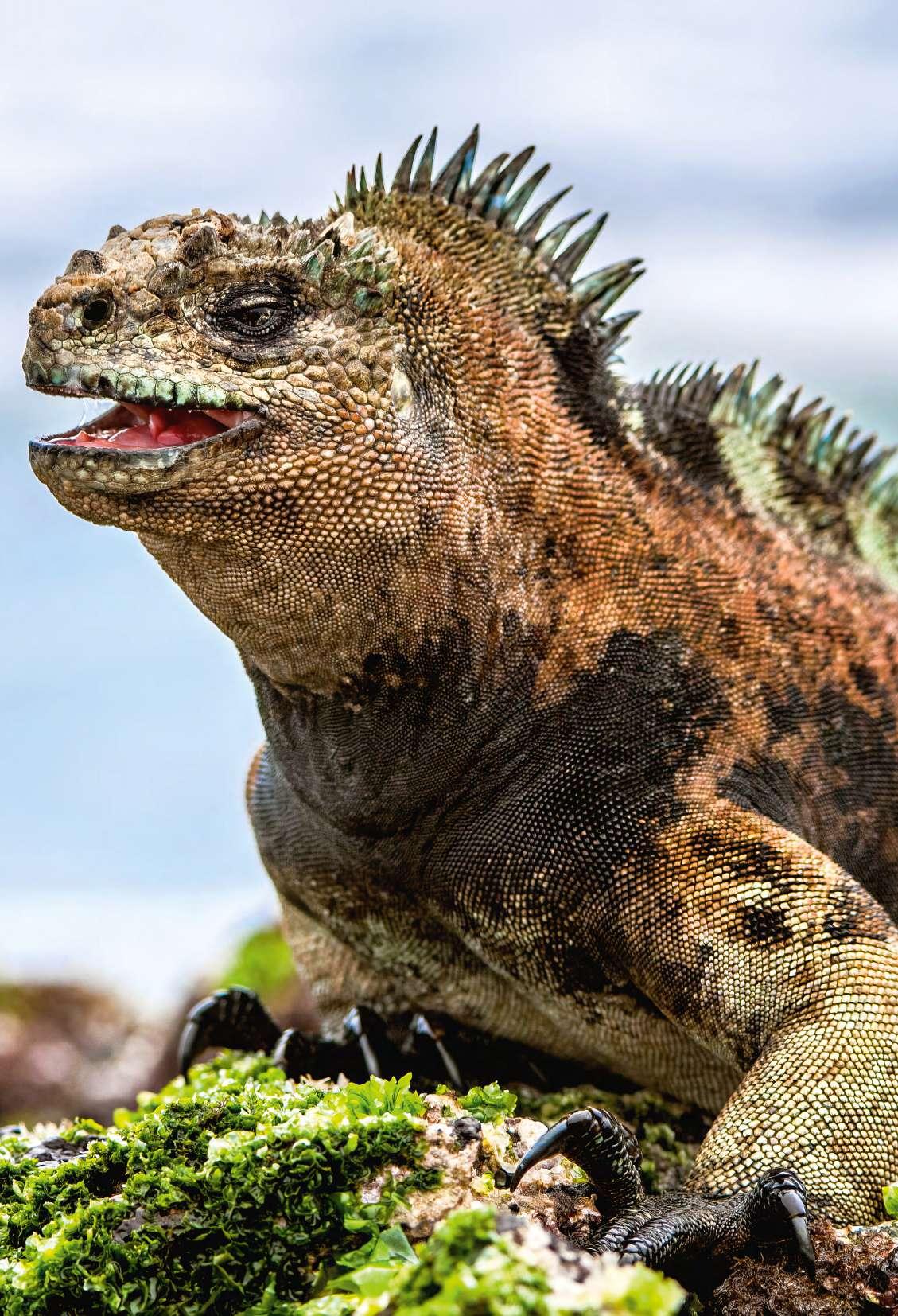
The Charles Darwin Foundation for the Galápagos Islands approached MAVA for support in 2010, knowing that it was a funding organisation that understood that lasting conservation needs to be based in solid science. We also knew that MAVA was not interested in quick results, but understood that lasting conservation needs engaged people and sustained organisational structures.
I had experienced all that personally and firsthand when volunteering for Luc Hoffmann’s Tour du Valat 60 years ago. He was a shining light for all of us conservationists who met him, not so much as a writer or speaker, but as a presence, a credible scientist and an inspirational human being. He and his organisation MAVA understood that, while being involved in the nitty-gritty of onthe-ground conservation, we must work on the ‘bigger picture’.
MAVA’s multi-year support of the Charles Darwin Foundation was absolutely critical for that organisation and for the conservation of the Galápagos. I am in regular contact with the work on the Galápagos and was on the Islands recently. I can report that, on the whole, things are looking good there, thanks to MAVA’s support during hard times.
Peter Kramer, Charles Darwin Foundation for the Galápagos Islands
A colleague who I’ll call S, from another NGO that my organisation collaborates with, called me and asked for an introduction to a contact at the European Commission. S was concerned that one of the strategies the Commission was currently working on, the EU Chemicals Strategy for Sustainability (CSS), was not going to be as strong as necessary with regards to preventing chemical contamination in the circular economy. And since my contact was playing a critical role at the Commission in developing the CSS, S wanted to speak with them.
So, I reached out to my Commission contact by email, suggesting an introductory meeting so they could meet S and discuss the CSS. Their reply came swiftly: Yes, indeed, the CSS was an issue and it was time to hear the voice of science. My Commission contact invited me to hold a webinar giving the scientific perspective for colleagues at the Commission working on CSS. We had five days to organise it! My NGO colleague S briefed me on what aspects were most critical, and together with two of our organisation’s board members, who are both academic scientists and distinguished experts on chemicals and environmental impacts, we planned the webinar. One of the board members even interrupted his summer vacation for this!
In the end, we delivered three concise, to the point presentations about hazardous chemicals and chemical risk assessment,
and mixture toxicity and food contact materials as sources of hazardous chemicals. The webinar participants, all members of the European Commission from different cabinets and directorates general, asked a few questions –and then the show was over.
We were very pleased with the possibility to provide input at such a high level – this would not have happened without the request from S and our MAVAfunded collaboration on the clean circular economy. The CSS was then published a couple of months later and the rest is history: the EU Chemicals Strategy for Sustainability is an ambitious document that is based on current scientific understanding. And I like to think that our high-level intervention played a part in this. Thank you MAVA for enabling this success!
Jane Muncke, Food Packaging Forum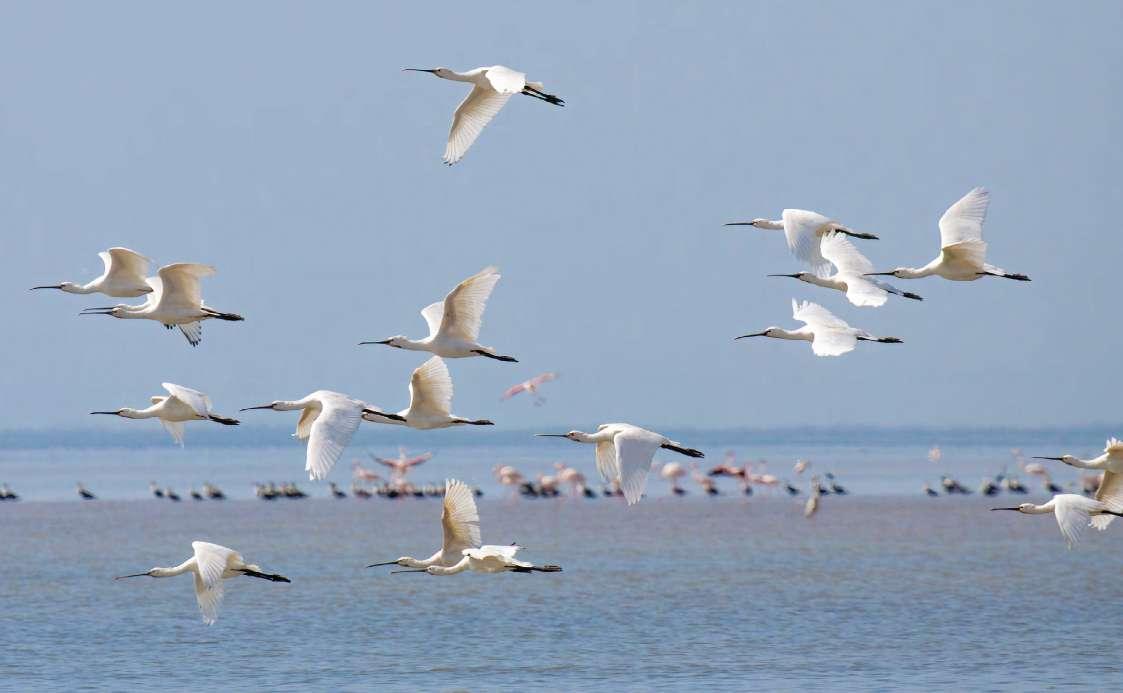
A decade ago, MAVA supported coastal migratory birds through their West Africa programme. This BirdLife-led project set out to improve the conservation of migratory birds in key coastal wetlands from Mauritania to Sierra Leone and Cape Verde. One of the work areas was monitoring migratory birds. While the geographic scope of the project was impressive, it was nothing compared to what migratory shorebirds do. They don’t restrict themselves to a few countries in West Africa; their home is from
the Arctic tundra in Russia and Greenland all the way to southern Africa. They make impressive, twice-yearly journeys of up to 10,000km. To really be able to say something about how bird populations are doing and what sites are most important, you need to count all the birds at the same time throughout the flyway. That is something that can’t be done by any organisation on its own. In this project, we brought together all the organisations involved in counting birds. We had a hard look at the different objectives and approaches, and came up with a standard methodology that all were willing to use. And it worked!
The counts are now running, and as a result the capacity of people and organisations to conserve migratory birds is growing. I feel proud every time a new report with the results of a count is published. It makes me think back to the days when so many organisations were working in isolation and regular counts of coastal wetlands of the whole of the East Atlantic Flyway was still a very far-fetched idea. Being able to invest, work together and adapt plans as needed was the key to success. A success that can be traced back to the support and approach of MAVA. Thank you!
Barend van Gemerden, BirdLife InternationalThis is a story about the book. The first bird atlas in the history of Ukrainian ornithology, and probably the last one for many years, including the most accurate maps and data.
This is a story about people. Cooperation of more than 100 ornithologists in Ukraine, working together to collect the data, putting them all together and checking the maps in order to make it the best book about bird distribution in Ukraine.
This is a story about rare birds and their conservation. The opportunity to examine the most far-away corners, with the help of MAVA’s funding, and to clarify the distribution, status and abundance of all breeding rare species in Ukraine.

And, of course, this is a story about friendship, collaboration and cooperation – between many institutions in Europe to help Ukraine to make it happen. MAVA made it happen. Only with its support was it possible to
It was a training workshop for fisheries observers on protocols for collecting data about bycatch birds and sea turtles at sea. During the last day of the workshop, an observer took the floor to give a testimony which really marked me:
“I have been in the field of fishing for 20 to 25 years. I am almost 50 years old and for the first time I have heard about and understand
involve so many ornithologists, to collect the field data, to verify them, and – as a result – to publish a book.
Tatianathe importance of species like birds and turtles in the ocean. Before, we killed them because we saw them more as an annoyance than anything. Thank you for this new knowledge, we will now pay more attention to these species because the survival of our families depends heavily on it.”
A few words that may seem innocuous but so heavy with meaning. That’s why we love
this work, the passion for sharing and to make people understand the importance of nature is the best legacy that can be left in West Africa.
Kuzmenko, Swiss Ornithological Institute and Ukrainian Society for the Protection of BirdsIn 2016, I was invited by WWF Greece to participate as a scientific expert in a co-management committee for establishing a new marine protected area (MPA) in the Aegean Sea. After two years and a series of lengthy meetings with local stakeholders, we came to an agreement and Gyaros island became the most recent MPA in the Mediterranean Sea.
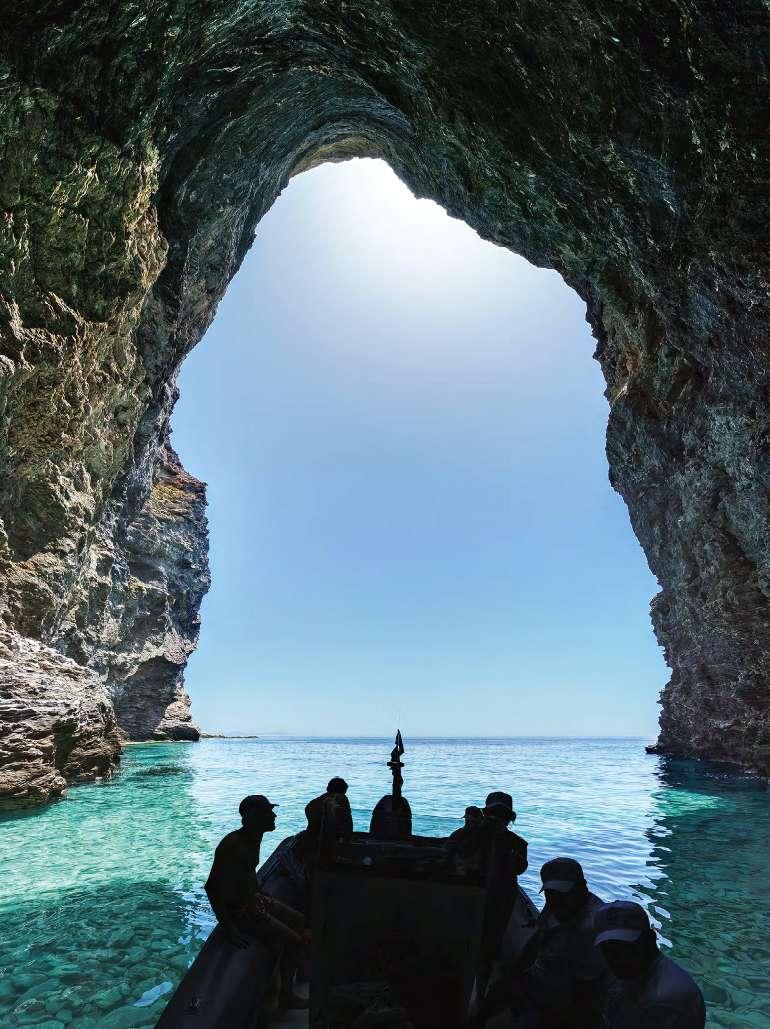
last five years have changed the mindset of all parties involved in this endeavour, from scientists to administrators and fishers.
Finally, I would like to thank MAVA for its flexibility and understanding
Since its creation in December 2014, EcoAlbania has been the local partner for Albania in the MAVAfunded campaign Save the Blue Heart of Europe. The campaign aims to protect the most valuable rivers in southeast Europe from destruction by uncontrolled hydropower projects. It also worked on a project titled “Saving Europe’s last free flowing wild river – Vjosa/Aoos” which aims to raise public awareness about the Vjosa River, its ecological value and vulnerability, and the work being done to protect the river from hydropower plant plans.
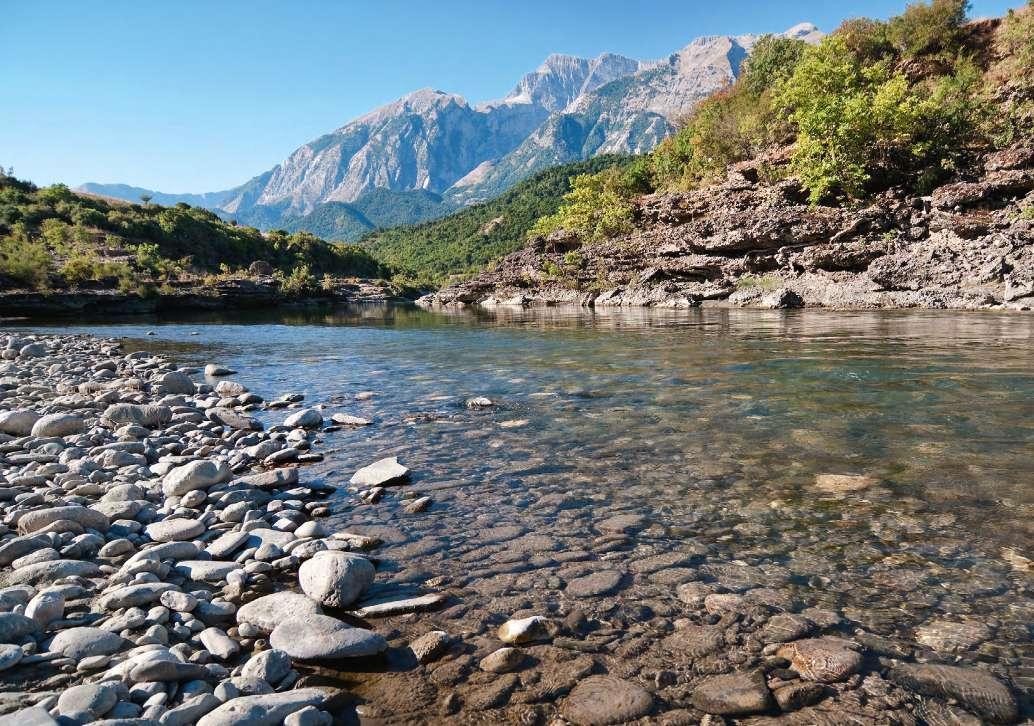
This eight-year journey of EcoAlbania has thrilled us with its ups and downs, its successes and disappointments. We have worked very hard to protect the last wild river in Europe and will
keep doing it. The Vjosa campaign reached its peak when we won the litigation case for the hydropower of Poçem. Three years after the start of the campaign, in December 2016, EcoAlbania took the matter to the court, making it the first environmental case appealed in court. In the beginning, it was hard and didn’t look very promising, because there were no precedent cases and the interest of the government in the Poçem hydropower development was significant.
On 2 May 2017, the first instance of the administration court decided to declare the cancellation of the concession contract, signed between the Ministry of Energy and Industry and the Turkish company Kovlu Energji, as a result of a series of violations of procedural law. The partners of Vjosa Campaign cheered this decision and this was the moment
that Vjosa became an inspirational story for all the organisations in Albania focused on environmental issues. After this, many other NGOs have brought environmental cases to court. Only then did we understood the success that this campaign meant. We would never have won this battle without the help of all the partners and the support from MAVA.
This first victory gave us the motivation to further influence the governmental decision to declare Vjosa River a national park, giving the waterway the right protection that it deserves.
Besjana Guri, EcoAlbaniaHowever, all past MPAs in Greece lacked any information on their status before the establishment of a protected status (some even lack information on their current status). MAVA provided the means to launch a baseline knowledge survey. This enabled me and the Hellenic Centre for Marine Research (HCMR) scientific team to embark on a unique journey. A series of experimental surveys (fishing, underwater visual census, hydro-acoustic and ichthyoplankton) allowed the sketching of a multifaceted picture of the MPA status at its beginnings and monitoring its evolution during its first five years. Not only have we documented the rapid response and recovery of the marine biota in just a few years, but we were allowed to reason on how different constituents of the ecosystem reacted to the absence of anthropogenic activities.
Moreover, engagement in the co-management process revealed how local communities, and specifically fishers, may object to MPAs due to being misinformed or unaware of potential benefits to the fishing income as well. We are absolutely confident that the
during the realisation of our tasks – which is not the norm for such projects.
Dimitrios Damalas, Hellenic Centre for Marine ResearchThe support from the MAVA Foundation to the European Breeding Bird Atlas 2 (EBBA2) was absolutely irreplaceable –this helped us to motivate, train and support our colleagues in southern and eastern Europe to actively participate in EBBA2.
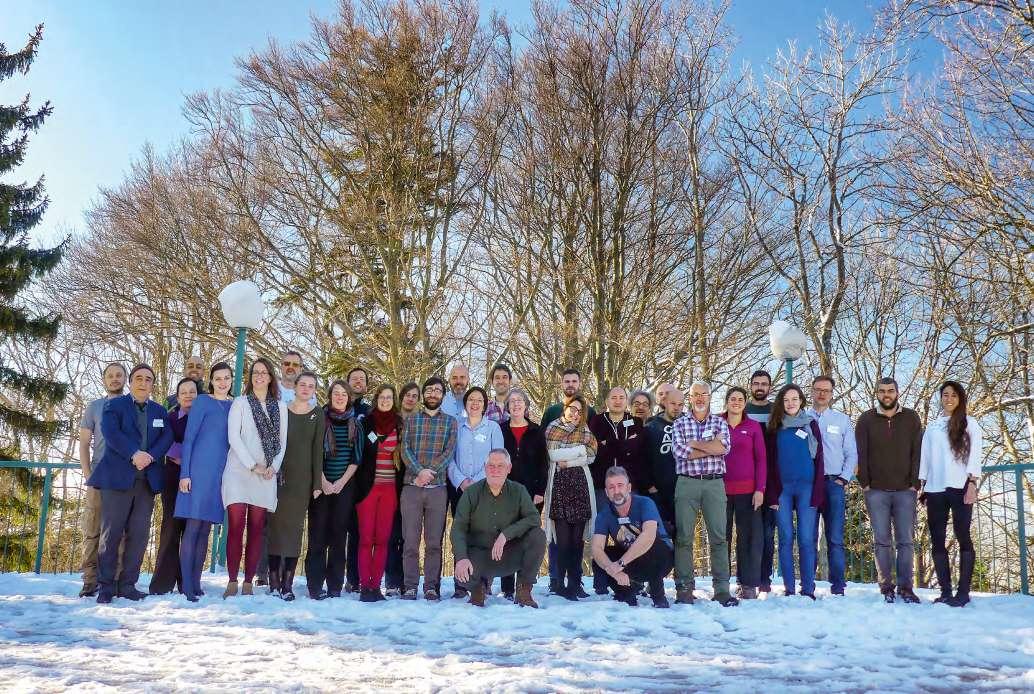
Due to many difficulties (lack of volunteer birdwatchers, difficult access to some areas and lack of equipment), running the breeding bird atlas in these countries was a challenge. But with the support from the MAVA Foundation,
we, together with the national coordinators and their colleagues, were able to collect the data needed for the atlas. Simple, small grants for individual countries proved to be a good way forward. Without MAVA Foundation’s contribution, the maps of bird distribution in EBBA2 would have many more gaps.
However, it’s not only the data on bird distribution and abundance which we were able to collect and make available to nature conservationists at an international scale that count. Equally valuable are the lessons which the national coordinators learned from us and we learned from them.
The lessons have been used in our further effort to monitor birds in Europe.
Among other activities supported by the MAVA Foundation within EBBA2, we organised training events in several eastern European countries. International experts from the European Bird Census Council (EBCC) came to the countries where they met local colleagues. The methodology was explained and discussed and we did fieldwork together.
A while ago, we received an article for review from an Indian colleague, who stated in this mail: “We were applying the SCALP Criteria – if you know what this is.” Indeed we knew, because we had developed these criteria long ago ourselves.
This is the story of a MAVAsupported project that never reached its original goal, but nevertheless had an impact around the globe. The project Status and Conservation of the Alpine Lynx Population (SCALP) aimed to coordinate lynx conservation and management across the Alps to allow lynx to spread across the Alpine Arc. It was prompted by a field study of Petra Kaczensky and Thomas Huber in Carinthia, Austria, where they demonstrated that the vast majority of officially reported lynx observations were incorrect. After a pan-Alpine
review of the situation of the lynx in Engelberg, Switzerland in 1995, it was concluded that monitoring across the Alps needed to be standardised and conservation efforts between the Alpine countries coordinated.
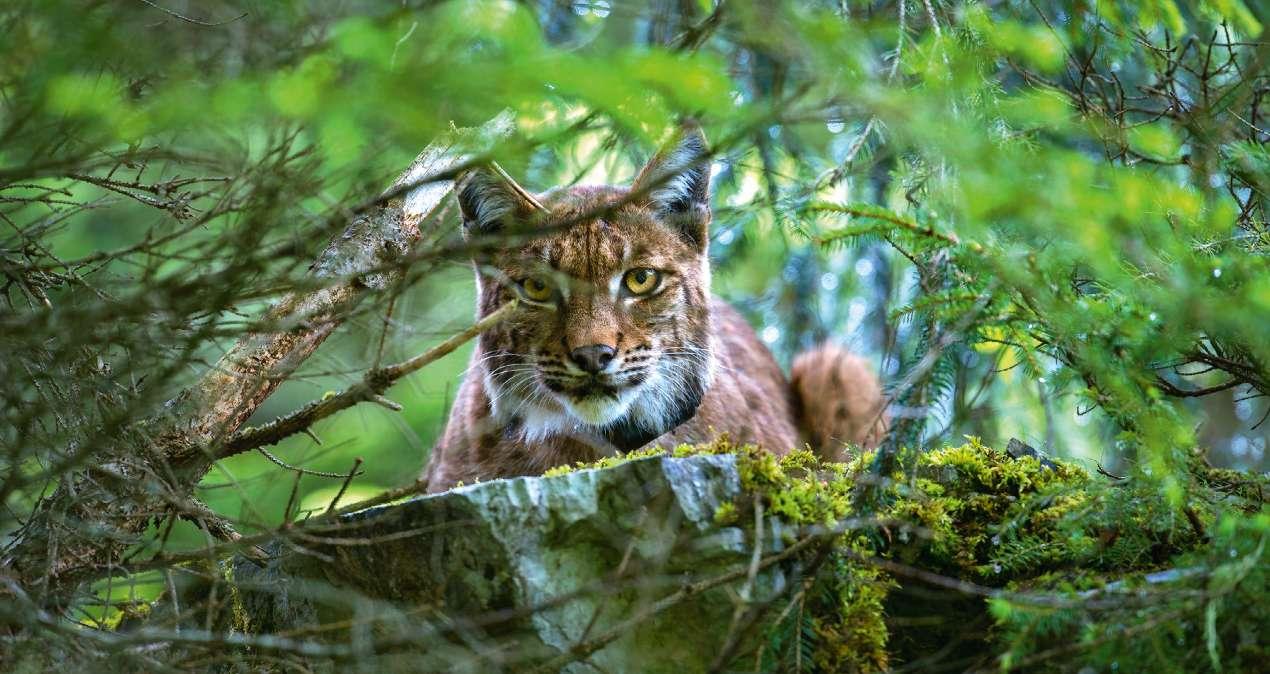
The work on a common monitoring scheme resulted – among other standardised approaches – in the introduction of the SCALP Criteria, a very simple system to differentiate the consistency of reported observations. The SCALP principles are not only continuously applied in the Alps, and indeed in most of the lynx populations in Europe, they have also spread across the world and have become a standard – with variations – for the presentation of chance observations compiled for monitoring purposes, especially for large carnivores.
However, the expectations of the SCALP Expert Group that the monitoring tasks would
soon be taken over or at least financially supported by the wildlife authorities of all Alpine countries did not come true. France and Switzerland established state-supported monitoring soon after the presentation of the SCALP approach, but some Alpine countries lack such a system even today. Providentially, MAVA continued to support the SCALP coordination bureau and the work of the expert group until the foundation terminated its Alpine programme, recognising that such tedious work is important for the long-term conservation of the lynx in the Alps. The progress is slow but consistent; the spread of the lynx population across the Alpine Arc takes much longer than anyone would have expected.
Anja Molinari-Jobin, KORA-SCALPMany members of the MAVA team and board describe MAVA’s human legacy as their greatest source of pride. The foundation touched many lives, with impacts both big and small. This is reflected in the following memories, which share feelings of inspiration, refreshed energy, motivation and a stronger sense of purpose related to interactions with MAVA, many of which ended up being turning points in the storyteller’s life or career.
As well as positive emotions, the anecdotes also recount experiences of improving their technical skills and knowledge. One of the foundation’s biggest contributions to personal development was undoubtedly the MAVA Leaders for Nature Academy and Programme, which several of these stories describe. The foundation recognised that strengthening individual members of the community benefits the whole, and that participants’ employers will prosper from their upskilling for years to come.
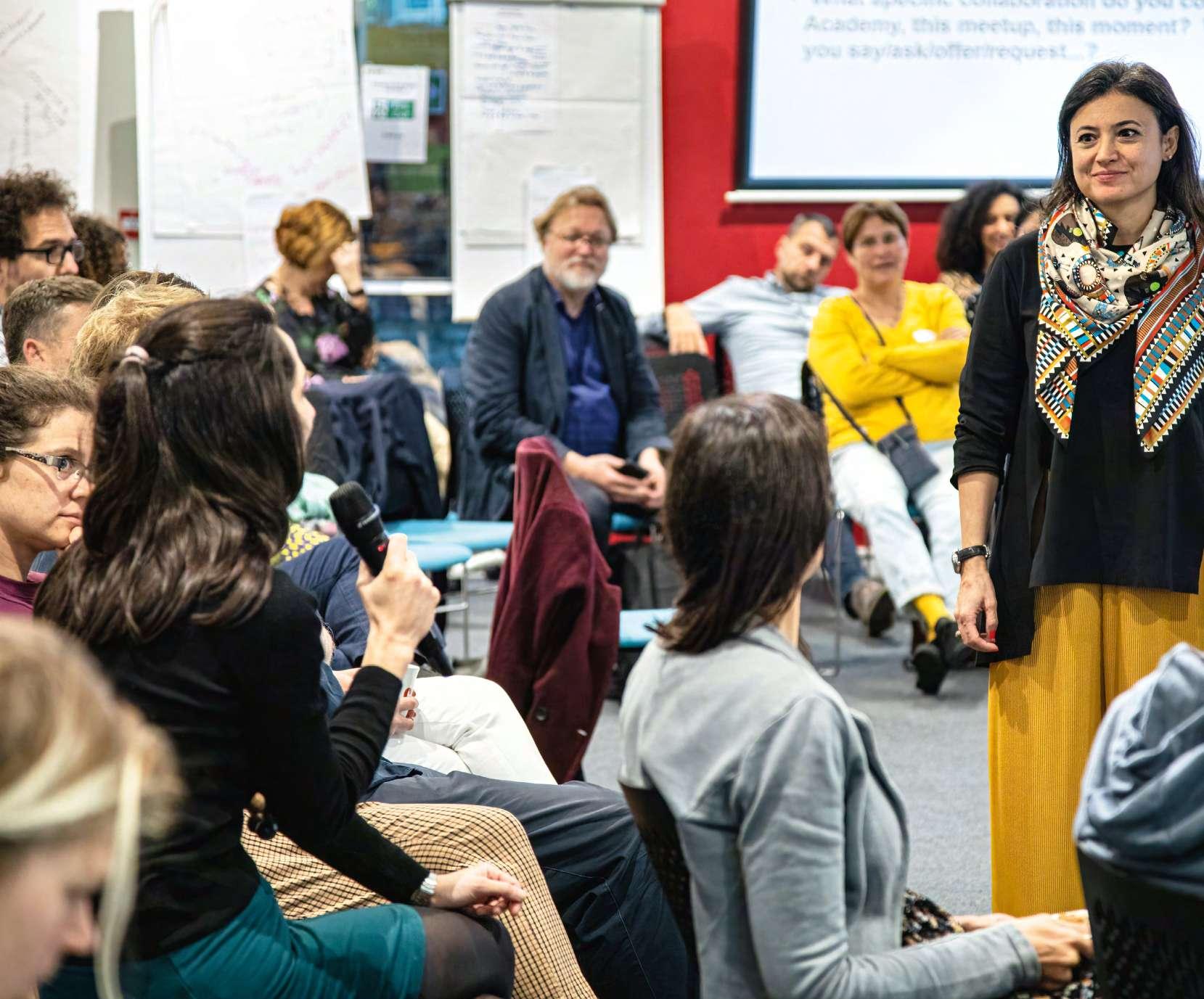
I first heard of the MAVA Foundation at university, but my direct relationship with MAVA started three years ago in 2019, through the Waders of the Bijagós project coordinated by IBAP in Guinea-Bissau – specifically in the Bijagós archipelagos.

The experience has been rich in lessons learned through the activities undertaken in the framework of the project, such as capacity building focused on conservation, exchange and sharing of knowledge and experiences, and other important topics.
The research component, which involves knowledge-sharing between national and international researchers, has strengthened the issue of connectivity of waders (migratory birds) through the East Atlantic Flyway. Using the signal transmission device, the results showed the importance of the Bijagós archipelagos as a key site in the connectivity of the East Atlantic migratory route. This highlighted the value of Guinea-Bissau in the field of conservation.
There are not enough words to thank MAVA for believing in people, especially for the
opportunity it offers to young people like me, to develop not only my professional and technical skills – but also my skills for the development of my country.
Samuel Ledo Pontes, IBAPIn 1993, I worked as a tourist guide to fund my studies and was assigned to a WWF group visiting Patagonia. I interacted with all the country leaders after their annual meeting in Buenos Aires, including one humble and simple man who was interested in birds, just like me. He said he would send me a copy of a new book called Handbook of the Birds of the World, which he did, accompanied by a handwritten letter signed “Luc Hoffmann”.
From then on, we were in regular contact and he was always
interested in my career, which was difficult to continue given the never-ending instability issues in my country, Argentina. I finished my first degree in biology and also my PhD, and he was always encouraging me to make progress.
At some point, I learned who he was and the great experience he had in setting up conservation organisations. When I decided to create the Global Penguin Society, I met him and he accepted to join our board. From then onwards, he was always a very valuable source of advice. In 1995, thanks to MAVA Foundation, we created the largest UNESCO Biosphere Reserve in
Argentina with 3.1 million hectares, as well as a marine protected area that benefits half a million penguins. So far, we have been able to protect 13 million hectares of penguin habitat. Luc was such an inspiration and allowed me to move forward in difficult moments. His legacy continues through our work to protect penguins, the oceans and the entire planet.
Pablo Borboroglu, Global Penguin Society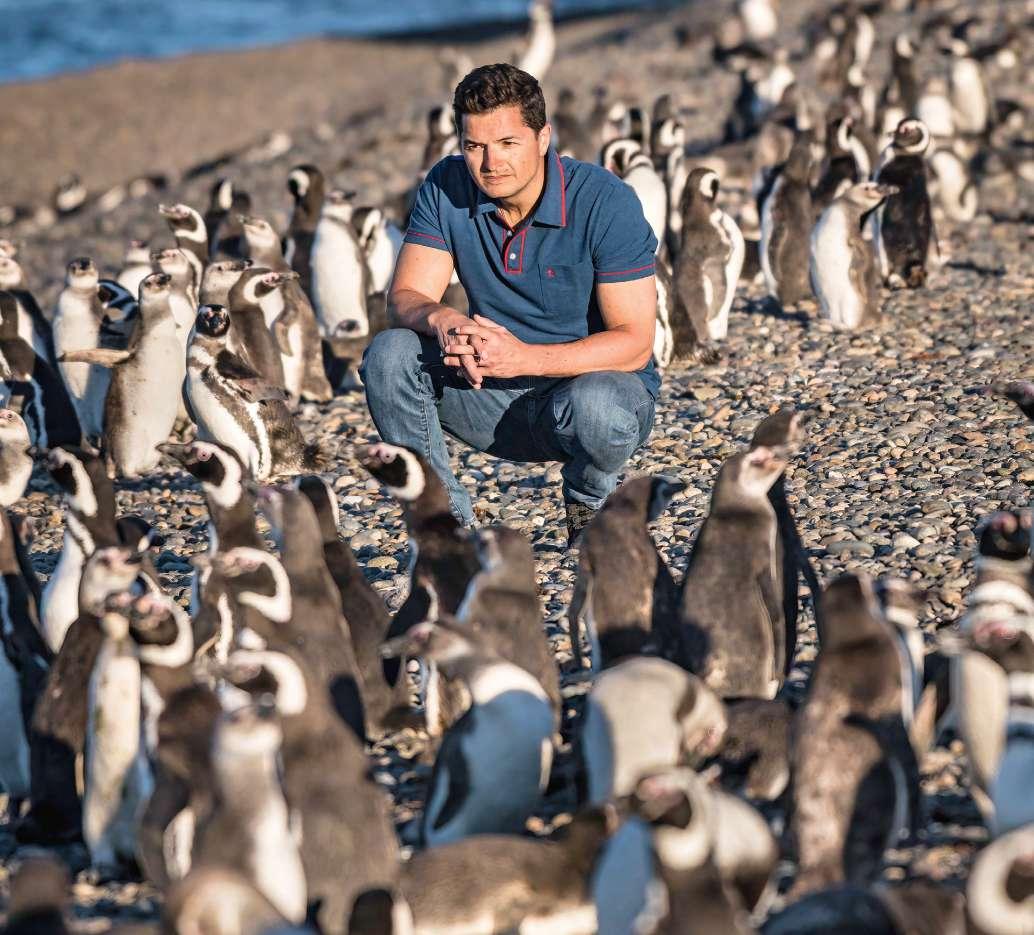
A few years ago, I was asked to organise the programme and logistics for a MAVA board meeting at our pilot site in the High Atlas of Morocco. At that time, I had only recently joined Global Diversity Foundation and I remember feeling
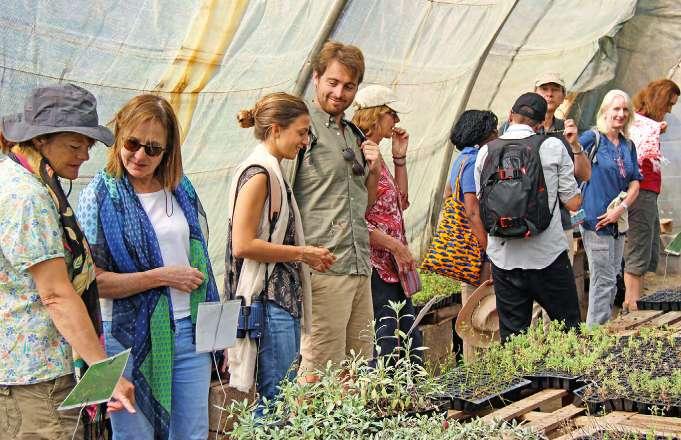
overwhelmed with such a big responsibility, as I wanted to make sure that the MAVA board would be impressed.
Once the board arrived, I felt a huge relief as I immediately felt they weren’t in the High Atlas to be impressed – they were
simply curious and eager to learn more about our region, projects and the conservation challenges we face. We hiked in the national park, had long talks about local fauna and flora and travelled to a remote village to meet local community members. I learned a lot through conversations with MAVA board members. This visit really reminded me how important it is to be surrounded by people that have a heart for nature and communities – it encourages and inspires you to keep on going, despite the environmental challenges of today’s world.
There have been several moments that have had an effect on me personally. One moment that I can highlight was when I was chosen as a hero of the MAVA Foundation for West Africa in 2020. It is a moment I will celebrate for a lifetime. This recognition has increased my responsibility towards the goals
of the MAVA Foundation and the sustainable development goals of my country and its sub-region. I would also like to highlight the influence that the foundation has left on Cape Verde, in terms of planning. It was through the foundation that the country drew up and made official its first management plan of the coastal area of one of the islands, the island of Boa Vista, aiming
towards the sustainable use of its coastal area.
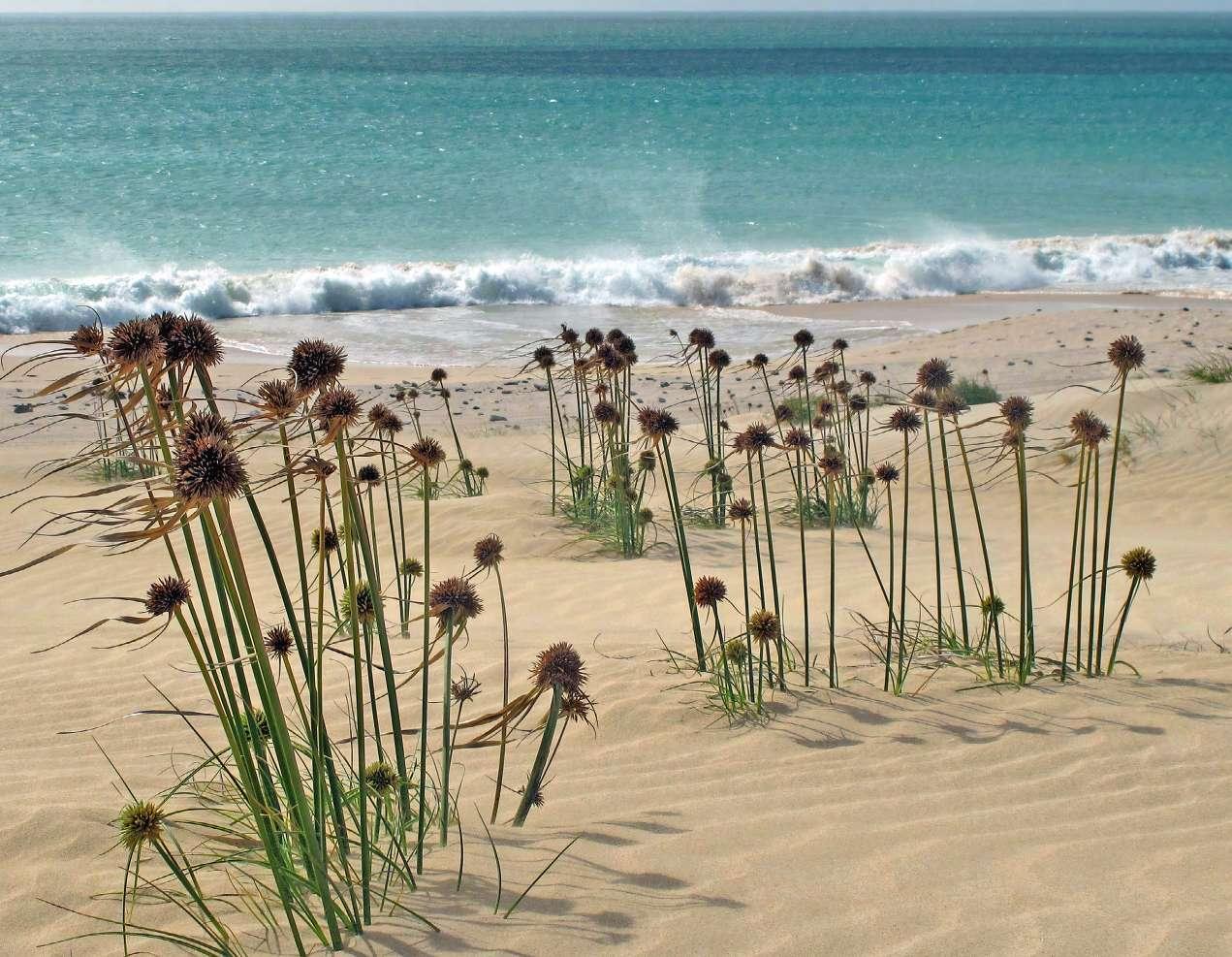
I’m certainly far from alone in the point of view that the three years of our collaboration with the MAVA Foundation have been a highlight in bringing together actors within the ecosystem our organisation is active in. I am lucky and grateful to share this with dozens of my colleagues in Geneva and Lausanne, as well as fellow makers from other Swiss Impact Hubs and our global network at large. I’m sure this is further shared by many peers from within our partner organisations, and the circular economy enthusiasts, entrepreneurs and innovators benefiting from our project. It is this highlight of ‘bringing together’
hundreds of actors from different sectors, industries and cultural backgrounds around a shared vision of a circular economy as a future-fit model for how we can live sustainably on this planet and each contribute to building an inclusive world for people and nature.
One specific highlight that came to my mind was the Factory17 event in December 2021 that we organised during the Geneva Building Bridges Week. André Hoffmann shared –among innovation pioneers from the global south and Europe – his very personal ‘why’ behind the ‘what’ he stands for. He spoke on stage for in front of a large crowd from the financial industry and employees of international
organisations, as well as to anyone who followed via the live stream. This time the ‘bringing together’ was that of personal beliefs, values and action. This gave participants the opportunity to relate to his source of inspiration on a truly human level, and thus enabling them to reconnect to their own personal motivations and the strength needed to drive sustainable change.
Felix Staehli, Impact Hub Geneva-Lausanne Pommelien Da Silva Cosme, Global Diversity Foundation Euda Helena Miranda, Instituto Nacional de Gestão do Território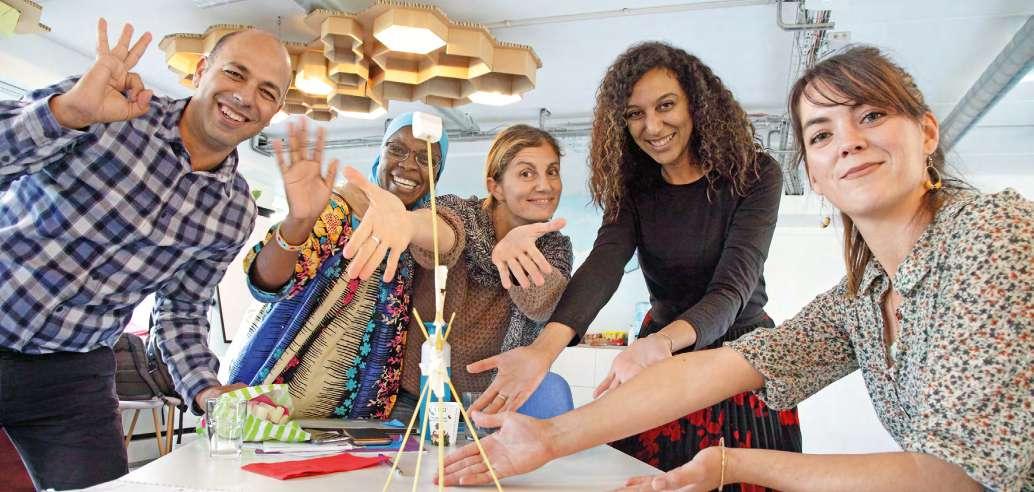
In autumn 2017, Association BIOM organised the very first anti-poaching action in the Neretva Delta in Croatia, which is a black spot for the illegal killing of birds. I was then just a volunteer who was interested in nature protection, limiting the negative impact of people on nature and the preservation of amazing oases of biodiversity like river deltas in the Mediterranean.
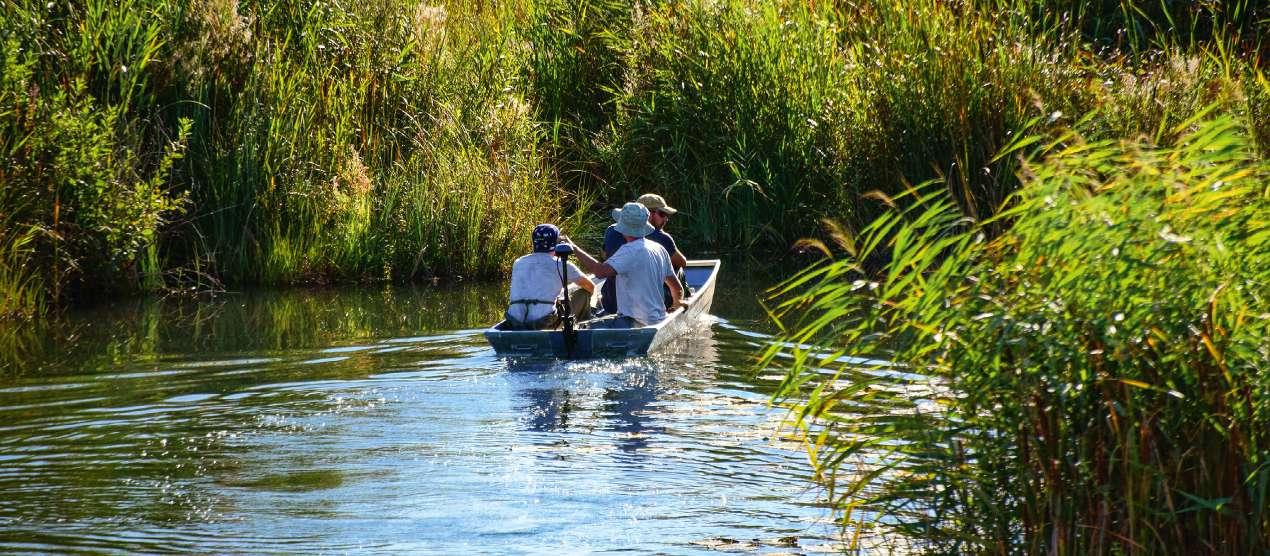
I am very grateful for MAVA’s investment in the development of people working for nature conservation. The creation of exchange spaces during the pandemic has been a great help and an incredible support for isolated people. I have participated in several exchange training sessions; they have been very relevant and have taken me
My experience with MAVA is through my involvement in the Institute for Environmental Sciences (ISE), a partner of Wetlands International Africa, in the PRISE and ResilienSEA projects. In these two projects, the ISE was entrusted with the development of training modules designed to strengthen the capacities of stakeholders in the management
out of my comfort zone each time to reflect and question myself. In fact, each time I participate in MAVA training I feel an evolution, a sense of learning, and that my ideas are nourished by innovation and benevolence. I would like to salute MAVA for its commitment and generosity towards training and capacity building.
of coastal ecosystems for the conservation of seagrass beds in West Africa and to improve knowledge of the impacts of infrastructures on sensitive ecosystems.
My participation in this exercise allowed me to learn more about the design of training modules for higher education institutions. It also enabled me to strengthen my pedagogical capacities through the development of a Massive
Open Online Course (MOOC) on the environmental management of the impacts of coastal infrastructures on sensitive ecosystems. These two MAVA projects have also allowed me to increase my knowledge of coastal conservation, to build new relationships and expand my professional network.
I hoped it was just a rumour, I hoped the scale of poaching was an exaggeration. The Neretva river mouth could be one of the most peaceful places in the world –picture a full moon and mountains beautifully reflecting on the water surface. However, by 10pm there were more than 15 people in this area interested only in bird poaching. The sound of illegal calling devices spreads around the whole area and hundreds of shots can be heard. We see ducks and coots being shot every minute,
light torches being active all the time, ready for new birds to arrive. It does not matter if it is at night, out of the hunting grounds, in the ornithological reserve. Poaching occurs every night for the whole night. Poachers had no respect for any regulations.
Association BIOM decided it was time to react. In autumn and winter 2017, we – in cooperation with nature protection rangers –removed six illegal poaching hides from the ornithological reserves and helped to catch red-handed two poachers. It changed the game. Poachers felt they were no longer invisible, they were not untouchable.
Throughout the MAVA-funded projects Adriatic Flyway 3 and Adriatic Flyway 4, BIOM has conducted a regular monitoring of poaching activities in the area and regular anti-poaching actions. The number of active poachers has reduced significantly. Our methods of work are also being disseminated to other parts of
the country. Anti-poaching work has been successful, but also became a part of the Association BIOM identity. It is all thanks to the MAVA Foundation which created a platform to actively oppose environmental crime. BIOM developed the knowledge, capacities, experience and network to create and implement successful strategies to fight against bird crime. There is still a lot of work ahead, but at least one place in Croatia – the Neretva Delta – has been changed by MAVA-funded projects.
The lives of people like me and many of our volunteers all around Croatia have also been changed as we learned and felt empowered to fight against the illegal killing of birds. Five years later, I am a fully aware leader who is a part of the international Balkan network of people who want to stop the illegal killing of birds.
Boleslaw Slocinski, Association BIOM Houda El Alaoui, IUCN Mediterranean Alioune Faye, Institut des Sciences de l’Environnement de l’Université Cheikh Anta Diop de DakarThe MAVA Leaders for Nature Academy has been a turning point for me, both personally and professionally. I had the opportunity to meet people active in nature conservation from all over Europe, West Africa and the Mediterranean basin: a breath of fresh air in a sometimes depressing environment where we are faced with colossal challenges and nothing seems to be moving forward. The values of MAVA have been shared, transmitted and internalised: benevolence, tolerance, love, passion.

I was lucky to be selected as part of the MAVA Leadership Academy, a journey where we learn how to be better leaders. And what an amazing adventure it is. Not only did we learn how to be better professionals, but also how to be a better person. And not only to
I still remember an exercise we did in Rabat, under a radiant sun: the hero’s journey. An introspective journey, which allows us to ask ourselves questions that we never take the time to answer and that are sometimes difficult to put into words. A complicated exercise but oh so useful and rewarding! The Academy programme also included being paired with a mentor. My mentor helped me a lot, sometimes by putting me up against a wall that could only be overcome through personal development. I quickly understood that the only barriers blocking
me were internal. What did I get out of it? More self-confidence and the desire to move forward, without fear of failure. I came out of this experience stronger, with the desire to pass on the values of MAVA and to act on my scale. I hope that the flame lit during these exchanges will continue to fuel my passion and my love for nature, and that together we can change things.
Melanie Annen, Parc naturel du Joratothers, but to ourselves. I was –and still am – mind-blown by the activities, the sharing, the learning and the empathy that shapes our experience. I cannot wait to meet with my Cohort 6 family again, and I am so grateful for what MAVA has put together, thank you infinitely!
The Resilience Project, financed by MAVA, was a scheme to support the strengthening of the institutional capacity of the NGO Tiniguena. It was a vital project for the sustainability of our organisation and the economic dynamism of local communities. The initiative strengthened our internal and external communication structures, supported initiatives to develop local products and knowledge, and reinforced our financial sustainability through new partnerships and projects.
The support for initiatives to enhance local products led to
the rehabilitation of three local production units to encourage the dynamism of the local economy. During this process, I had the opportunity to get to know these communities and understand how supporting sustainable production processes that value traditional knowledge are extremely important for local development. The process also put me in touch with the importance that the women’s economy has for the survival of these communities and gave me the opportunity to experience how grassroots development drives the ownership of actions and, consequently, their effectiveness, the key to ensuring Guinea-Bissau’s sustainable development.
Finally, for me, this project holds a special place in my heart, as it was my first experience of direct coordination of a project in my homeland, Guinea-Bissau, and it was the basis that made me, who grew up in the diaspora, sustain my engagement with Guinea-Bissau and fulfil my dream of contributing to the development of my land. Therefore, when we talk about MAVA’s institutional support projects, I also talk about a life project, which allowed me to feed my dreams in the search for a more just Guinean society.
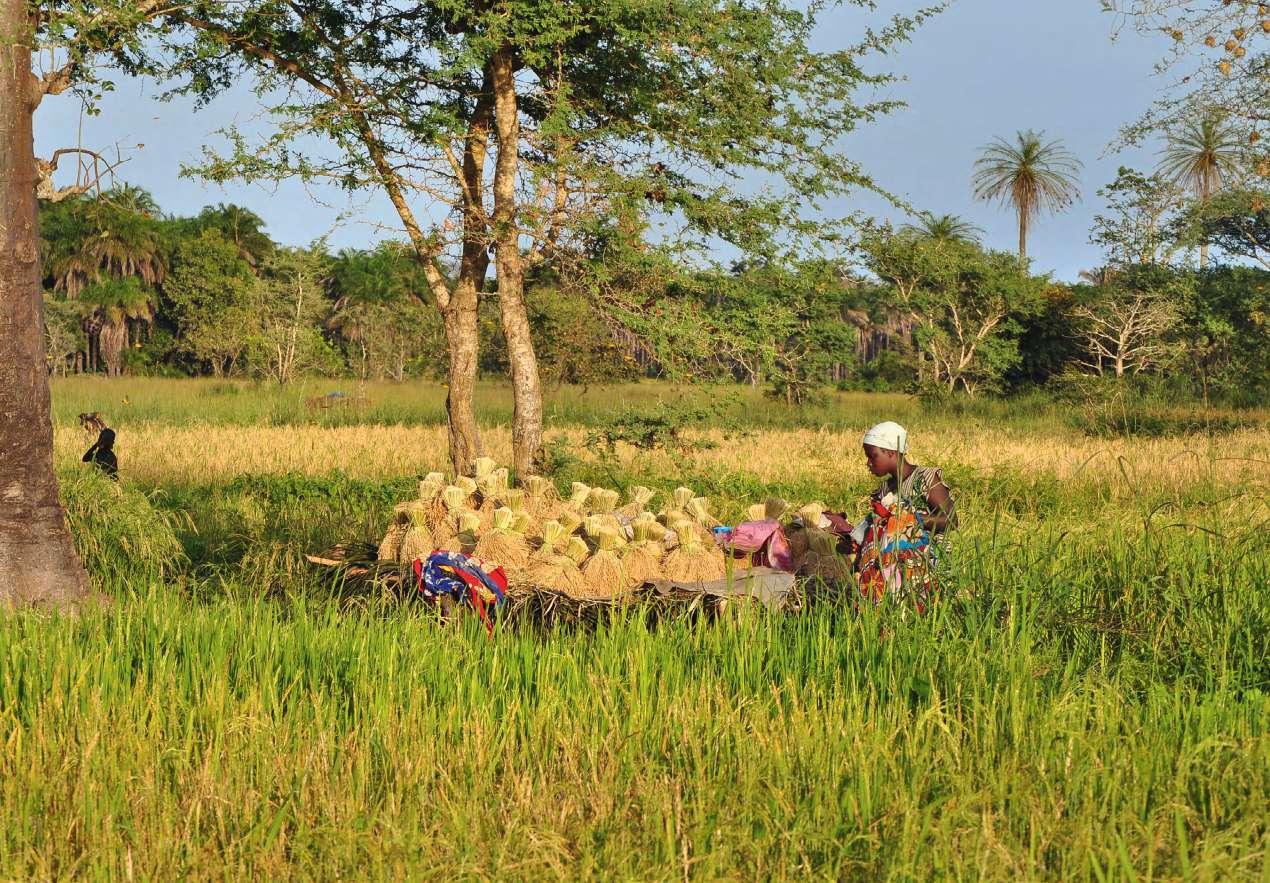 Ruguiato Baldé, Tiniguena
Anaïk Anthonioz Blanc, Luc Hoffmann Institute
Ruguiato Baldé, Tiniguena
Anaïk Anthonioz Blanc, Luc Hoffmann Institute
The first time I heard about this conservation community was through a criticism of the Foundation for the Banc d’Arguin (FIBA). I heard one person say: “This is an organisation that comes to our country to protect birds and has no respect for humans.”
Then I started to come across more and more people who worked for FIBA. In fact, whenever I needed scientific information for my work, or an awareness-raising tool on biodiversity, I was directed to a person who had a link with the foundation, or provided me with a document produced by it.
This is how I met and got to know some wonderful people, all of them inspiring, generous and so humanistic... and I understood the origin of this bad perception of the work of these scientists who came to observe and study the birds of the park: a terrible fear of being deprived of access to their territories, the legacy of a rather recent colonisation and/or bad governance practices.
Thanks to FIBA and later MAVA, I personally learned to develop knowledge and skills in my perception of nature and all the good that could be gained by building links with it: spiritual, material and technical nourishment.
One of my best experiences, which comes back to me immediately, is definitely the Leaders for Nature Academy. It was truly an enriching, inspiring and resilience-building experience. In addition to all the discoveries,
I especially learned to take care of myself and my mental and physical health, which I had never learned to do previously.
I thank my Lord for giving me this opportunity which came at a time when I really needed it. The year 2021 was a particularly difficult year on a personal and professional level. Thanks to the support of the coaches of this training, in particular Richard, I managed to go back up a slope that was taking me to the bottom of the abyss.
So I can say, without any exaggeration, that if I am fulfilled today it is thanks to MAVA.
I am grateful to every person I have had the chance and privilege to meet. Since 2006, this magnificent community has inspired me, taught me, supported me and
given me the means, the resources, the knowledge, the capacities to realise the most beautiful projects! I am thinking in particular of: Pierre, Augusta, Frederic, Charlotte, Nelson, Alfredo, Simon, Nathalie, Antonello, Salla, Ahmed, Sidi, Bamba, Farida, Heyti, Sonia, Richard, Samantha, but also all the people I met (and continue to meet every day) during the realisation of my projects financed by MAVA, such as PRCM, Wetlands International, Bird Life, the International Union for Conservation of Nature, the West African Coastal Areas Management Programme... and all the members of the platform of sea and coastline actors that has been built up over the years.
Maimouna Saleck, ONG BiodiverCitésThe first Cambridge Masters in Conservation Leadership alumni event took place in 2018 at the David Attenborough Building. This image shows the celebration day of the event, in which all eight cohorts gave incredible presentations on their life since graduation, followed by a speech
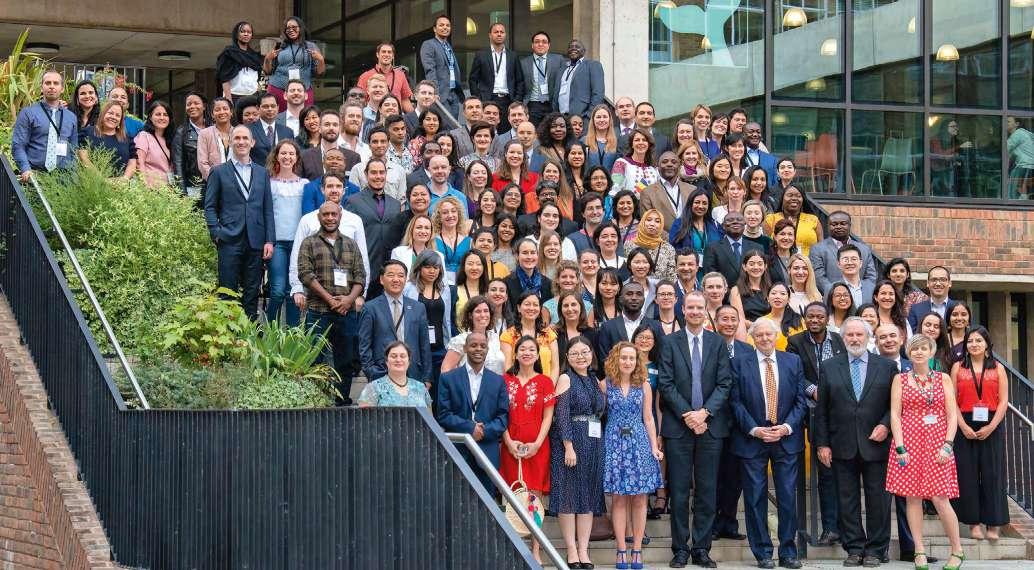
In 2018, I had the chance to join the Masters course in Conservation Leadership at the University of Cambridge, a programme supported by the MAVA Foundation. The Masters enabled me to gain the skills to scale up my game in terms of management, build a network with other passionate conservationists around the world (most of them from the global south), and better understand the trade-offs in conservation while developing critical thinking. Certainly, this was a once-in-a-
by Sir David Attenborough. The energy and enthusiasm that emanated from each and every one of these inspiring and driven individuals was like nothing I have experienced before or since. There was so much excitement and so many happy tears at being together for the first time, and so much passion and commitment to make a difference as part of this
unique network of conservation leaders. I have fond memories of every second of those four days, and starting my role with that explosion of ideas and energy has made me feel lucky to get out of bed every day.
Shelley Bolderson,lifetime experience that deeply shaped my professional skill set through direct participation in an epicentre of innovation and a cutting-edge school of thought in environmental conservation.
After that experience, I collaborated in a wildlife trafficking initiative in Europe and the monitoring of sustainable development goals in Latin America. Nowadays, I coordinate the marine programme for BirdLife International in West Africa. During the last two years I have had the chance to directly work with the MAVA Foundation, our main supporter in the region.
As time goes by, I have realised that MAVA brings much more than financial support to the table: it’s some sort of glue that spreads humanistic values across the partnership. Needless to say that I am grateful for its support, not only to our programme, but to the regions they work in. I am sure that the generations formed during the MAVA era will continue safeguarding the natural treasures worldwide.
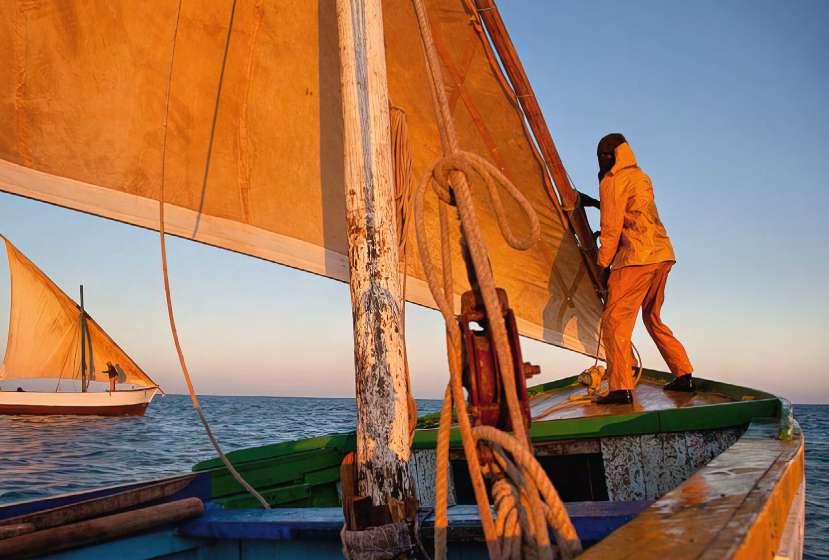 The Cambridge Masters in Conservation Leadership
The Cambridge Masters in Conservation Leadership
I used to work in fund development and project management in the humanitarian sector. I joined the Shouf Biosphere Reserve to manage MAVA’s M6 project, which aimed to promote sustainable land-use practices in the Mediterranean basin. My journey with and interest in biodiversity started with MAVA. The outcome action plan itself was very diverse
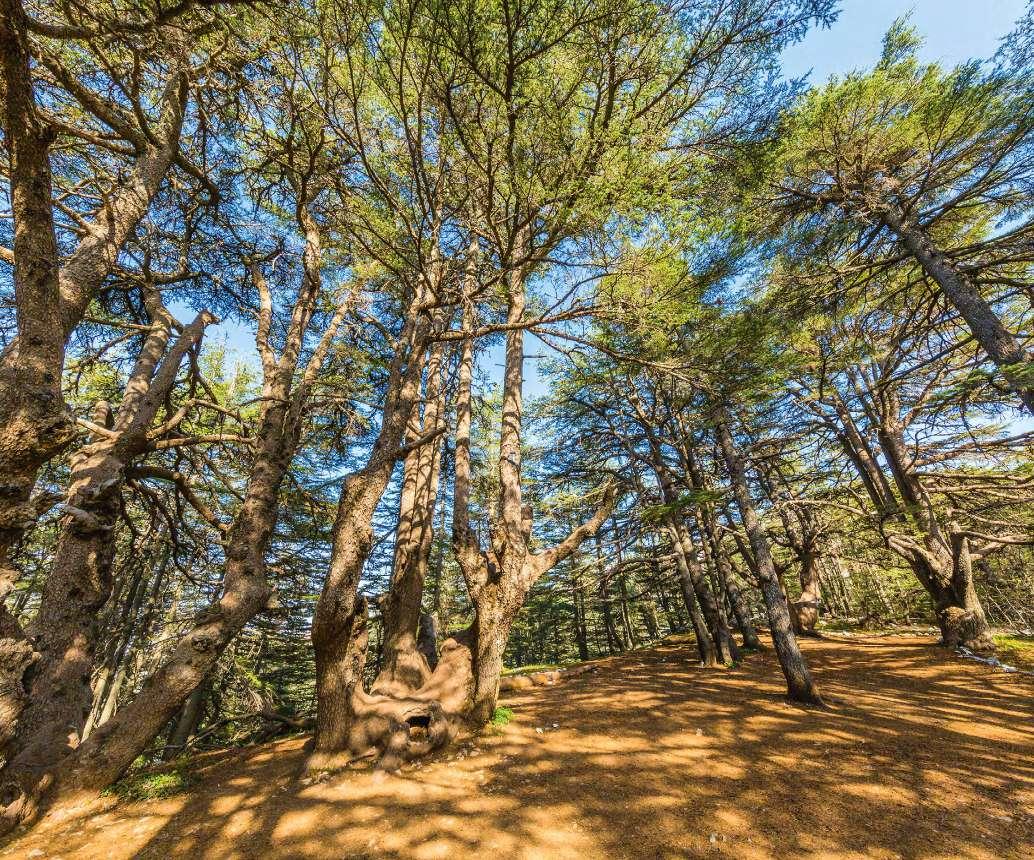
(conservation, restoration and economy) and able to link conservation with human beings. It connected us/me with other people/organisations doing the same job. I visited wonderful places and met very inspiring people. In particular, Menorca and Tour du Valat in the Camargue.
It was so challenging and so interesting that it motivated me to develop my knowledge and my skills – I wanted to know
more about this world. I am now engaged in developing projects related to conservation and biodiversity and supporting other institutions in my country and region. It is important to note that it had never occurred to me that I would be engaged in such a new and fresh start at my age – I was 58 when this journey began.
Although many of us have lots of happy memories of working with MAVA, I think that one thing stands out and that’s the warmth and genuine concern for our success and wellbeing that we always felt from everyone involved in MAVA. They were there, by our side, ready to support us and with a sympathetic ear, in good times and in bad. Whenever we had difficulties or problems they were always available.
I remember one particular time, when we were struggling with a difficult situation over building ownership for an information centre with an important stakeholder very much against us. When you are working
somewhere quite isolated and are deeply absorbed in a problem, it is incredibly comforting and supportive to have someone to turn to, someone who is ready to discuss an issue with you, offer advice and give a perspective that links you to something greater than the small world of your particular problem.
It always meant so much to have someone who was ready to listen at any time, not only to hear about a difficulty but to help find solutions, to console you, and to share a problem with you. I never felt this was something given out of a sense of obligation or duty, but because the people at MAVA genuinely care about us and the struggles that can so often be encountered in conservation work.
This has been true even in the last few months, when we faced a heart-breaking avian influenza outbreak in Prespa’s Dalmatian pelican colony. At a time when so much else has been happening at MAVA, as the foundation winds down its work, they were amongst the first to be in touch and offer their support and share their concern for the terrible losses we were seeing. This sense of unhesitating personal support has been precious and inspirational and will be sorely missed.
Myrsini Malakou, Society for the Protection of Prespa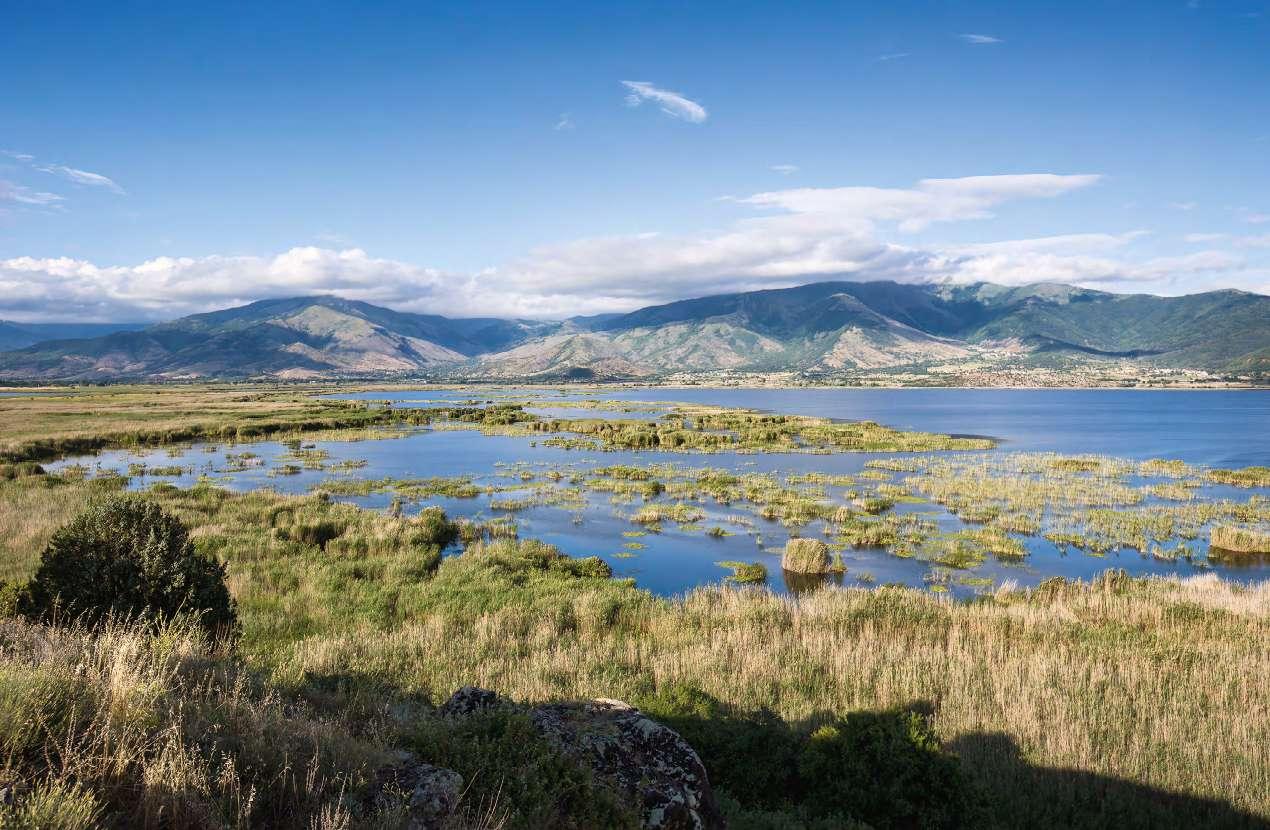
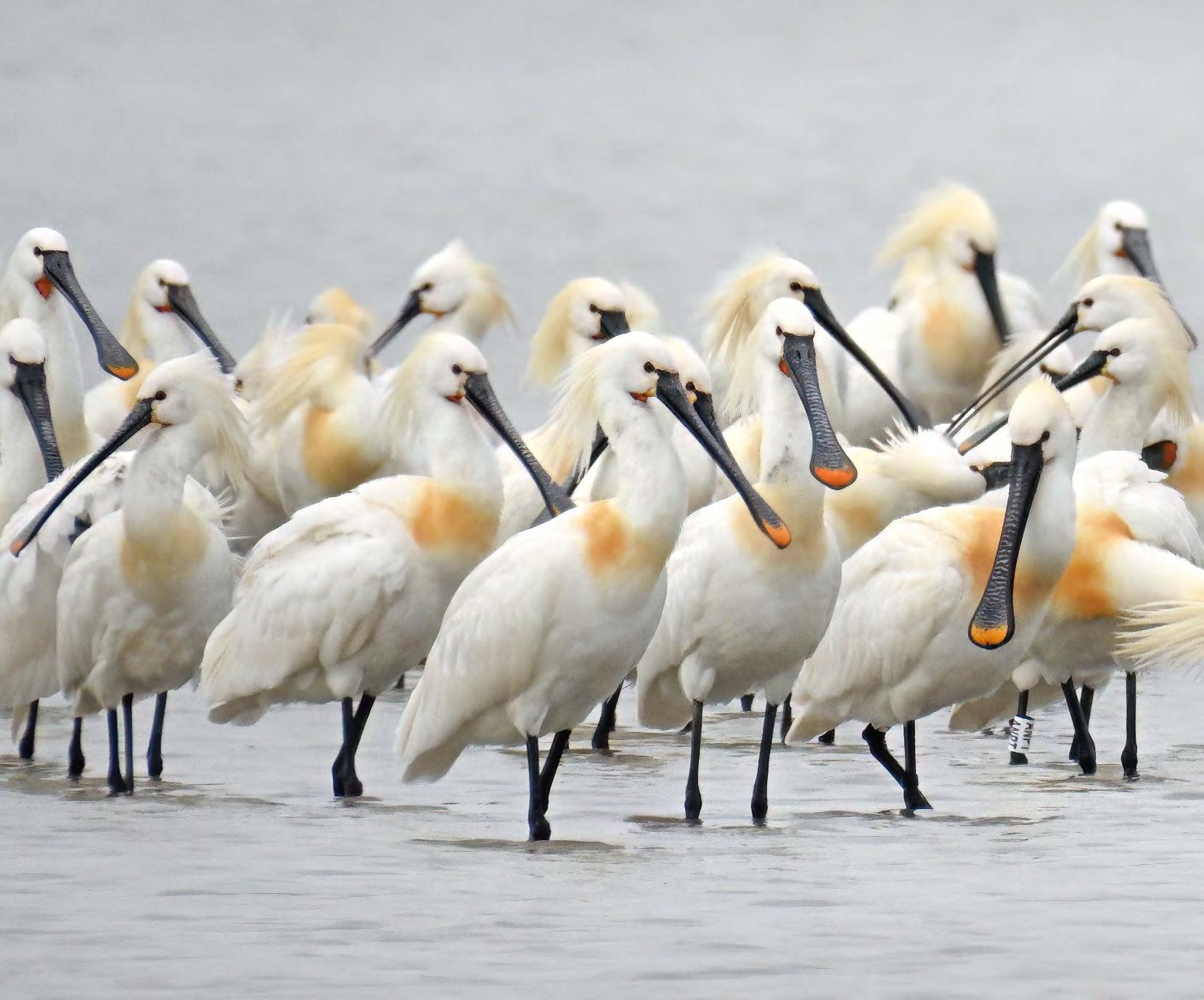
As well as reaching out to partners past and present, MAVA also asked its fellow funders to describe how they saw its role in philanthropy. The foundation worked with and alongside many other funders over the years, building coalitions and trying to incrementally strengthen collaboration in the funding community.
In the last few years preceding MAVA’s closure, it gradually passed the baton onto these other funders, many of which now fund its partners’ work.
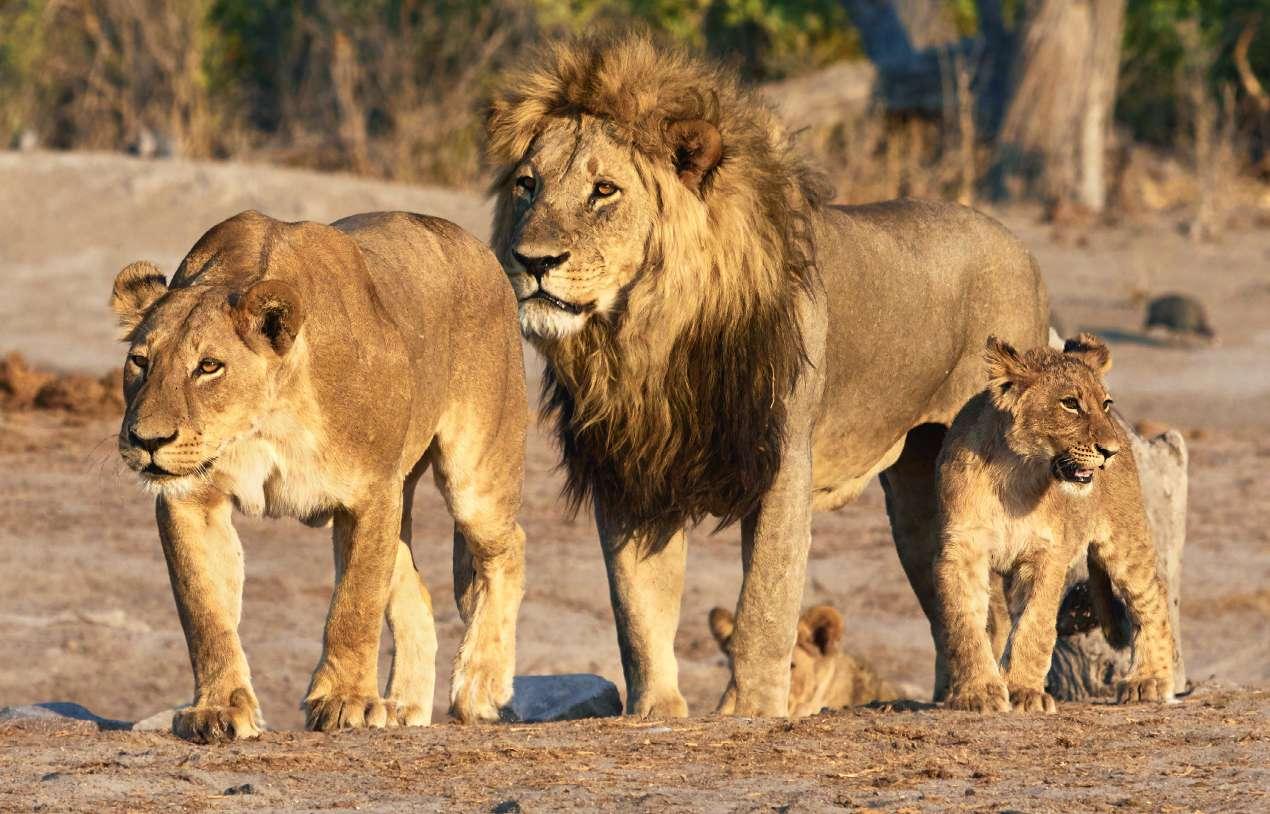
The Fondation Charles Léopold Mayer has had the opportunity to collaborate with the MAVA Foundation mainly in the framework of the environment group of the European Foundation Center (now Philea). The world of foundations is very diverse, particularly in terms of the size of the foundations. There are lions, large foundations like MAVA, and there are rats, small foundations like the Fondation Charles Léopold Mayer. MAVA has always been one of those lions that communicated with the rats in a non-condescending way. I always liked that very much.
This non-arrogant spirit was a hallmark of MAVA. It was the spirit of service that animated the team, led by Lynda Mansson. Philanthropy is an ethically complex activity, because the hand that gives is above the hand that receives. Only a genuine spirit of service can mitigate this raw power relationship. It is not condescension, we are demanding with those we value. Dialogue and a spirit of service have enabled MAVA to reconcile two often contradictory imperatives: continuity of support and adaptation to the convulsions of the world. MAVA has escaped the plague of foundations, the quest for improbable short-term innovation, an attitude that
tends to produce instability and insecurity for the actors. MAVA has supported many organisations over the long-term, recognising the importance of sustainability and evolution.
I watch MAVA disappear with melancholy. I console myself by thinking that the members of the team take with them this expertise and this state of mind, which will inspire the organisations in which they will pursue their careers.
MAVA is and will remain a landmark in the Swiss philanthropy sector. By strategically strengthening a philanthropic ecosystem around conservation and biodiversity, the foundation has created a lasting impact to protect nature. The process of closing the foundation can serve as a role model for many other foundations that aim to actively manage their full lifecycle – from the starting point until their sunset.
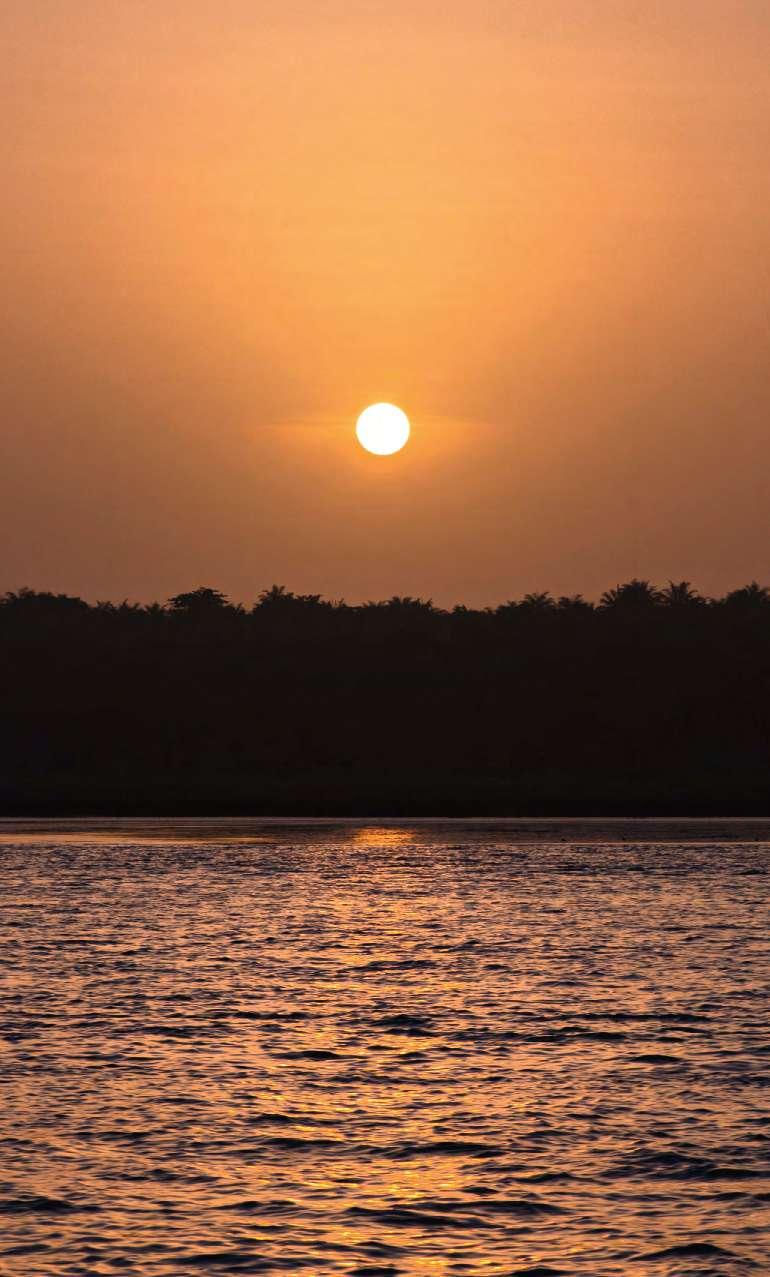
Georg von Schnurbein, Center for Philanthropy Studies (CEPS) at the University of Basel
MAVA and COmON are one side of the same coin. As fellow funders, we admire how MAVA has approached organisations who do good. Their publication Care for Those who Care for the Planet is a fantastic read to better understand how greater impact can be achieved through NGOs if you focus on leadership, capacity and staff enjoyment.
Our joint efforts to give the Peace Parks Foundation a continuous push will never be forgotten!
MAVA leaves us with a wealth of knowledge and a planet in a better state, despite the world being in turmoil.
John Loudon, COmON FoundationSince its formation, MAVA has been an excellent example of efficient, focused and effective conservation. I am especially proud of the innovative coalition of funders that we have been able to build with MAVA and three other foundations for the conservation of the endangered monk seal of the Mediterranean. MAVA’s role in conservation will be greatly missed!
When we decided to increase our support for the environment, we naturally turned to MAVA. Its indepth knowledge of the issues and actors enabled us to speed up the establishment of our Animals and Ecosystems unit. Several of MAVA’s partners thus form a basis on which we have been able to build our new strategy.
In our work as a nature and environmental foundation, we have encountered the MAVA Foundation time and time again. It has achieved great success thanks to its clear strategy and extensive financial resources. Its work has always been about strengthening the actors, building capacities and working towards long-term change.
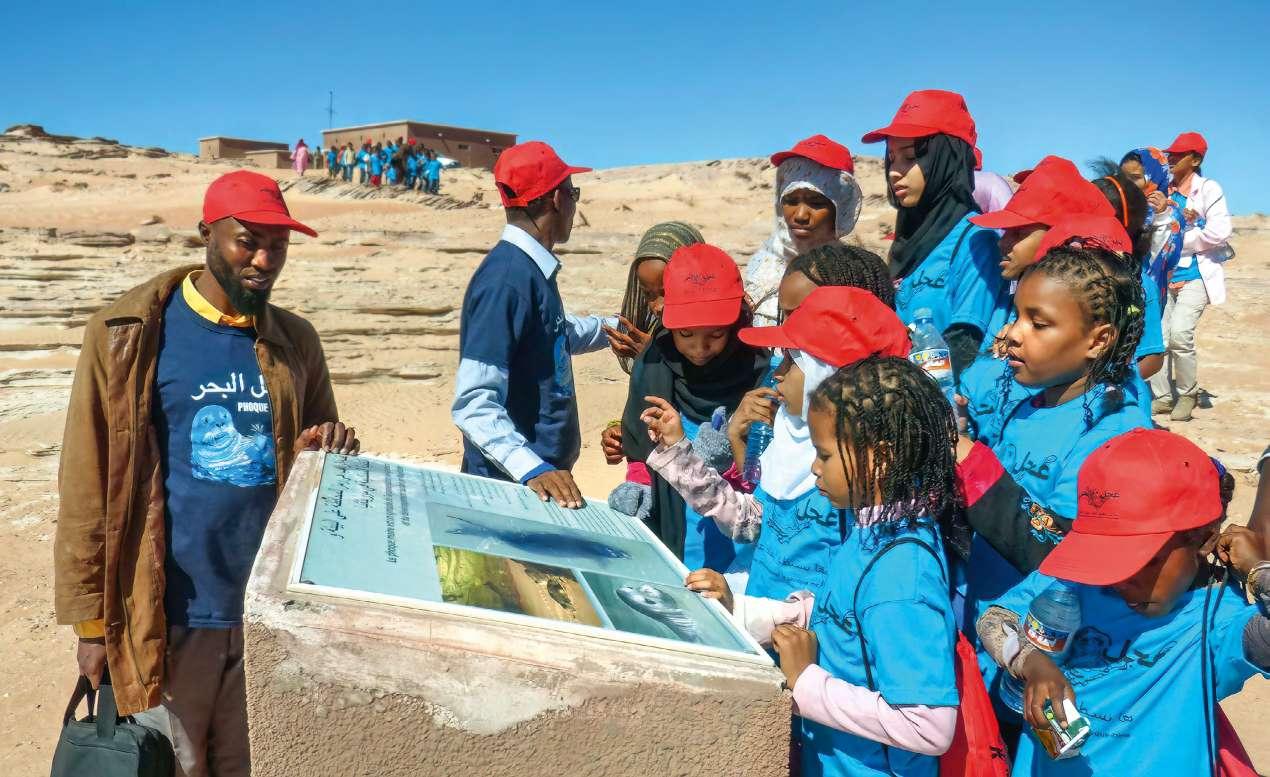
That is why it was a pleasure for us to have been able to build
MAVA Foundation has epitomised the brave and bold action that we, as foundations, all aspire to. As an early philanthropic investor in the circular economy, MAVA
up a concrete cooperation with the MAVA Foundation in the framework of the Donors’ Initiative for Mediterranean Freshwater Ecosystems (DIMFE) in recent years. We have found a competent partner in MAVA, which is why we have jointly succeeded in finding further donors to continue
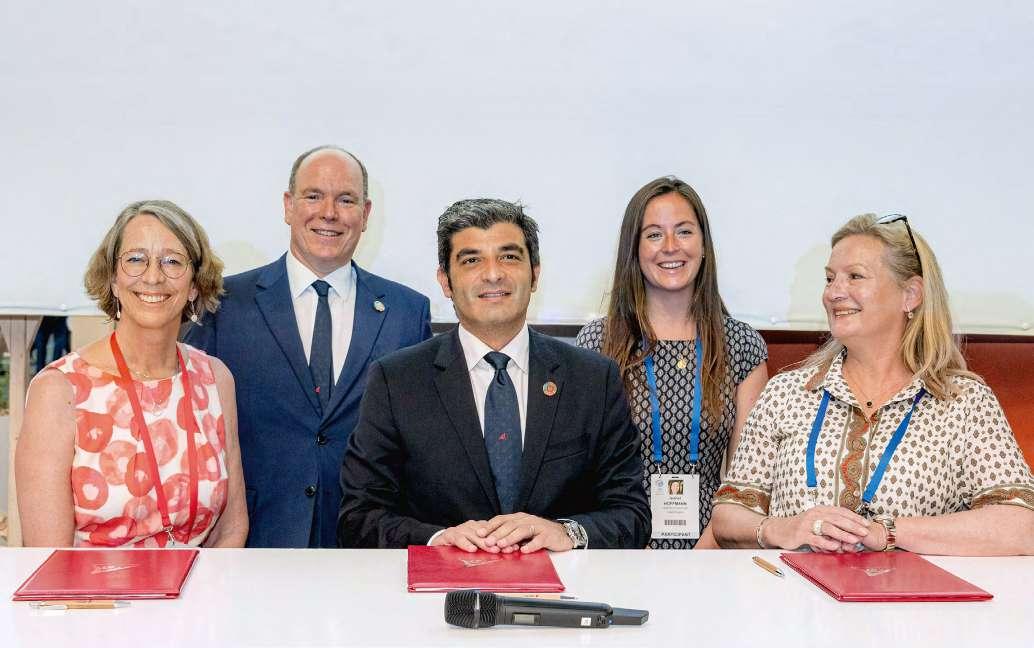
our conservation work. In this way, the MAVA Foundation has helped to ensure that its legacy is preserved for the world and will live as long as possible.
paved the way for others, including Laudes Foundation, to come in. The foundation had the foresight to connect the dots across the economy, nature, and material use, and, as a result, seeded many initiatives which have since grown
into powerful accelerators of the circular economy.
Claudio Segré, Fondation Segré Mette Skov, Aage V. Jensen Charity Foundation Leslie Johnston, Laudes Foundation Marc Maugué, Hans Wilsdorf Foundation Above: First, CBD-Habitat educates teachers about environmental education in Mauritania. After that, the teachers can pass the knowledge onto their students.In West Africa, in the Mandingo region, the big sister, or the eldest daughter of a family is called N’körö Mousso. She is the one who leads the way and accompanies her younger brothers and sisters in their growth, setting an example and carrying their voices to higher levels.
In the field of environmental philanthropy, MAVA has been a big sister to many foundations, which have been able to grow and professionalise under her benevolent guidance. As MAVA retires, many of us can say: Thank you N’körö MAVA! We will continue your work!
When MAVA created Partners for a New Economy (P4NE) in 2015 with Oak and KR Foundations, it sent a strong message to our philanthropy community: we shall address the root causes of the crises and not only try to fix the symptoms with nature conservation, for example. The current economic system which treats nature and people as inexhaustible resources leads to unacceptable environmental, social and political impact. It is high time to promote new economic thinking and approaches that will impede capitalism from destroying the planet. Thank you MAVA for making P4NE the beacon of a systemic change philanthropy!
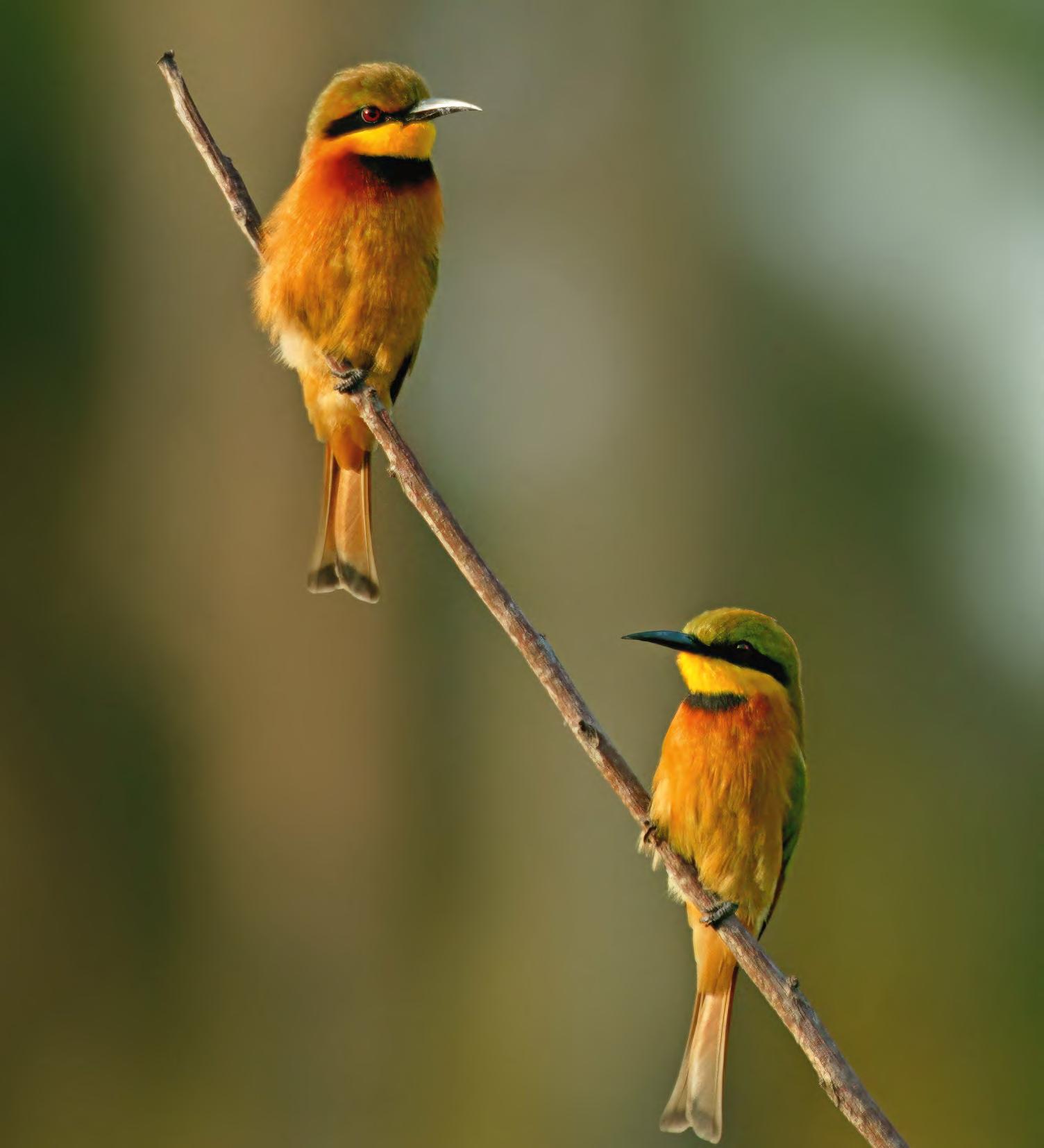 Nicolas Krausz, Fondation Charles Léopold Mayer
Ezra Ricci, Audemars-Watkins Foundation
Nicolas Krausz, Fondation Charles Léopold Mayer
Ezra Ricci, Audemars-Watkins Foundation
My team and I have had the pleasure to work over many years with the staff and the management at MAVA – on the operations and capacity building side as well as in a number of donor collaborations. Working over many years with MAVA as a trusted partner located in the Suisse Romande has made it so much

MAVA has been a cornerstone of the Mediterranean conservation sector, and leaves a legacy that is truly remarkable not only for its biodiversity achievements but also its impact on civil society and the landscape of conservation funding. MAVA’s commitment to securing the development and sustainability of its grantees aligns with our own values of long-term, flexible support and is much-needed in the sector. By recognising the importance of strong local actors in a region where many NGOs face significant challenges, MAVA has without doubt contributed to a more resilient and effective conservation civil society. This is reflected particularly strongly in the significant contribution it has made to fostering additional funding opportunities for NGOs in the region. Through instigating innovative mechanisms like the Small-scale Initiatives Programme for North African Civil Society Organisations and Prespa Ohrid Nature Trust - both of which we

more interesting and less lonely for us. We have mindmapped ideas together and brought some of them to life. MAVA has led in some areas and Oak in others, bringing together the diversity of their teams with their strengths and unique talents. The work MAVA and Oak have done together with others showcases the potential for philanthropic organisations working in collaboration to achieve impact that none of us can achieve alone. Although
MAVA’s closing will be a big loss on many fronts, the incredible work they have done will continue to have tremendous impact, and the staff will carry forward the ethos of collaboration into other philanthropic foundations active in the region, thus strengthening the ecosystem of philanthropy.
Vinit Rishi, Oak Foundationalso now support - MAVA has thoughtfully laid the groundwork for life after it closes. While we are sad to see MAVA draw to an end, its legacy will be a far stronger civil society ecosystem, contributing to the
An influence that is impossible to measure MAVA’s work is long-term, very long-term, and it is impossible to measure the influence it has had on our relationship with nature. Beyond the countless number of projects that have been supported, the numerous students, technicians, politicians, journalists, fishermen, farmers, and many more I’m forgetting, who have been trained,
the strength of MAVA has been to bring together a whole community of men and women invested with the same passion for nature, who have discussed for hours behind binoculars, around a good meal, who have confronted their opinions, who have been excited, confused and then reconciled. A whirlwind that was conducive to the emergence of new ideas, new approaches, new alliances, like so many small seeds whose fruits will
Long after its closure, MAVA will be remembered and referred to as a standard-setter. It will be so for its strategy and philanthropic model, characterised by a clear mission, vision and values throughout the organisation’s setup and activities. One of MAVA’s key features is its spend-down approach, which has produced directly and indirectly a very positive impact on the ‘framing effect’ that it has produced in the philanthropic space and
the development of its project portfolio. This is perhaps the most striking part of MAVA’s ‘business model’: set the capacity building of its beneficiaries as a key priority for them to become autonomous and, in a way, self-sustainable to pursue their philanthropic missions in the long run. This is a scalable model: what better impact could be imagined for a donor foundation? Of course, MAVA did not do this alone. The quality of its management, culture and spirit, and the founder’s vision have been cornerstones. Since the beginning, MAVA has been aware
continue to be harvested for a long time to come.
that no foundation, whatever its size, can act as a solo player, and that partnerships are thus necessary between donors and public authorities, and between donors and beneficiaries. MAVA convincingly walked the talk and left us with an inspiring and stimulating philanthropic model.
Henry Peter, Geneva Centre for Philanthropy conservation of biodiversity in this unique hotspot long into the future. Duncan Wilson and Sophie Adwick, Sigrid Rausing Trust Julien Semelin, Cartier for NatureAhead of time, MAVA understood that looking at the root causes of issues is crucial in order to enable change. Therefore, MAVA’s vision and impact strategy included a systemic approach which recognised the interconnectedness of issues and themes. For instance, MAVA did not shy away from challenging prevailing economic models and stressing the importance of governance, culture and values. The foundation went beyond looking at activities from a project perspective, instead it emphasised how to build skills, empower key actors and give them the means to collectively create a sustainable impact.
MAVA has shaped the philanthropic ecosystem within Switzerland and beyond. The foundation has inspired visions, activities, organisations and most of all - people. Hence, MAVA’s legacy will be diffused and multiplied and will continue to nurture systemic change.
Andrew Holland, Stiftung Mercator SchweizAspiring to be more than a funder; to become a critical friend of civil society organisations. At Adessium, we see this as a key role for grant-making foundations. That aspiration and attitude are the great legacies that MAVA leaves behind after it closes its doors. MAVA inspired us to think strategically about how to bring about change and how to build the societal power to move the needle on critical environmental issues.
MAVA’s pioneering work to protect the Mediterranean Sea is a case in point. By building strong civil society organisations and seeking lasting conservation change through co-creation with essential stakeholders, MAVA has effectively built collaborations that work to protect and restore the rich biodiversity in the Mediterranean region for the benefit of both people and nature.

MAVA leaves behind a memorable legacy. We thank MAVA for setting a standard for philanthropy and for the excellent collaboration over the past years.
To MAVA staff, we say: until we meet again!
Rogervan Vliet – Chairman, On behalf of the entire team at Adessium Foundation
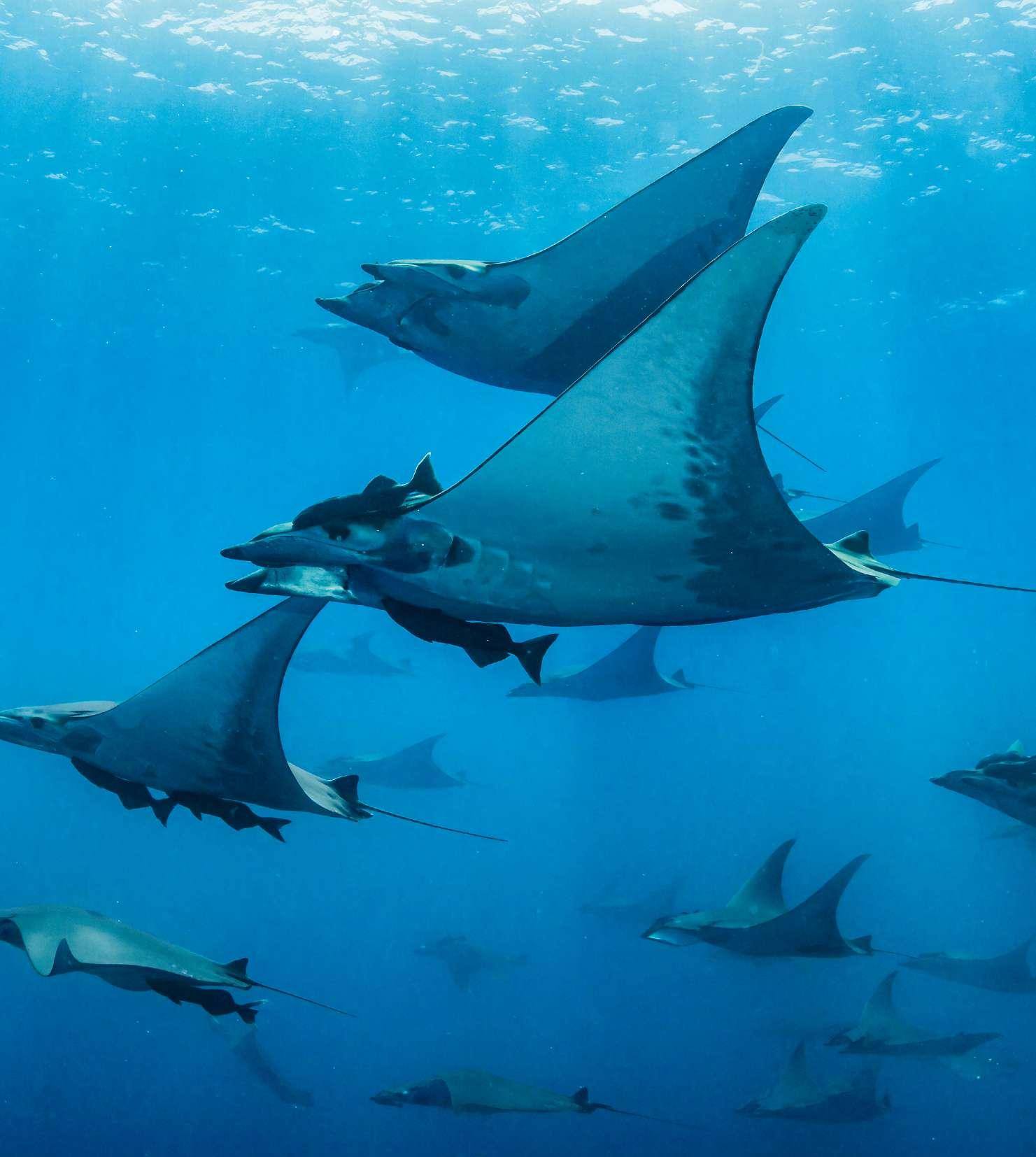
Twelve years of collaboration between the Critical Ecosystem Partnership Fund and MAVA! After a few meetings, the relationship between our two organisations began to crystallise under the Murano glass chandeliers of the Palazzo Zorzi in Venice, where UNESCO was hosting us. It was the first meeting of what was to become our informal Mediterranean Donors’ Group.
Since then, we have met often, trying each year to take the time to take a step aside, to think about how we can have more impact, together, for the preservation of Mediterranean biodiversity.
Each time, of course, we did not forget to honour Mediterranean culture, well aware that conviviality contributes to the quality of the reflection.
I remember a lot of laughter, beautiful discussions along hiking trails, and lively debates that went on long after the desserts had disappeared from the table!
Today, MAVA is leaving us, but the group continues to meet, and even to grow. It will remain, I hope, one of the legacies of the Foundation in our region for a long time.
Pierre Carret, Critical Ecosystem Partnership FundWhen I think of European foundations who understand the ‘big picture’ enough to think big, MAVA is always at the top of the list. Unfortunately, that list is very short. The result is that Oak and MAVA have ended up working together on big, complicated and innovative solutions to the problems that face us all. Whether it is the Plastic Solutions Fund, the Partners for a New Economy, or the Global Commons Alliance, MAVA has been at the forefront, willing to take risks. As a great group of people and an institution, you will be sorely missed.
Kristian Parker, Oak Foundation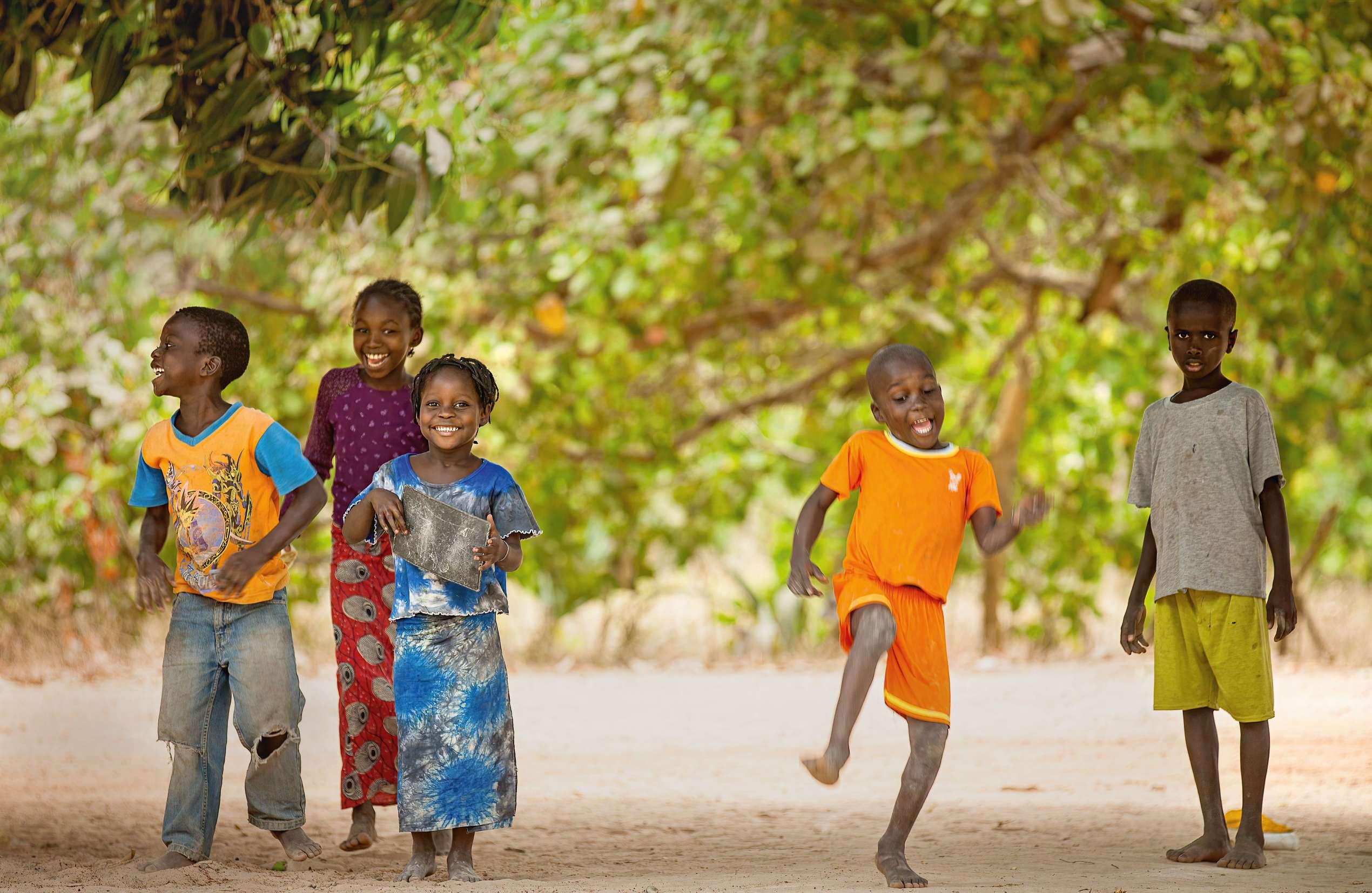

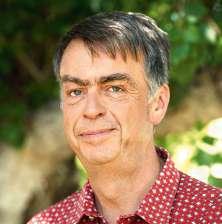
The foundation’s closure has given me the opportunity to reflect on the past three decades, as well as to look ahead and envision what the future might look like for conservation and those committed to it without MAVA’s presence.
MAVA’s achievements have honoured the memory of my father. We executed his vision and used his methods; the resulting impact was remarkable. The combined efforts of my father and our foundation also helped to bring about great changes in the perception of nature.
Thirty years ago, the fact that our consumption patterns were endangering nature, and by extension humanity, was always discounted rather quickly. Today, the realisation that nature is indispensable to life on Earth is mainstream and it’s widely recognised that we will not survive very long if our natural system is pushed too far.
However, I also believe that the idea that only philanthropy can save nature, that we can create recurrent cash flows towards nature only through philanthropy, is a doomed model. Traditional philanthropy, particularly in conservation, has
not fully fulfilled its mission. Nature is struggling. MAVA, its peers and partners have certainly helped ease its suffering and prolong the situation, but we haven't solved the problem.
The amount of money that philanthropy commits to the environment is several billion Swiss francs each year, which is incredible and impactful, but also not enough to solve the enormous challenges facing the natural world. We need to have a systemic change that is not only based on the realisation of impact, but also the demonstration of the opportunity that nature provides. If the aim is sustainability, we cannot rely on people’s charity or philanthropy, so we need to create recurrent, consistent cash flows for nature and continue to explore innovative sustainable funding mechanisms for conservation that build on the examples MAVA and our partners have developed.
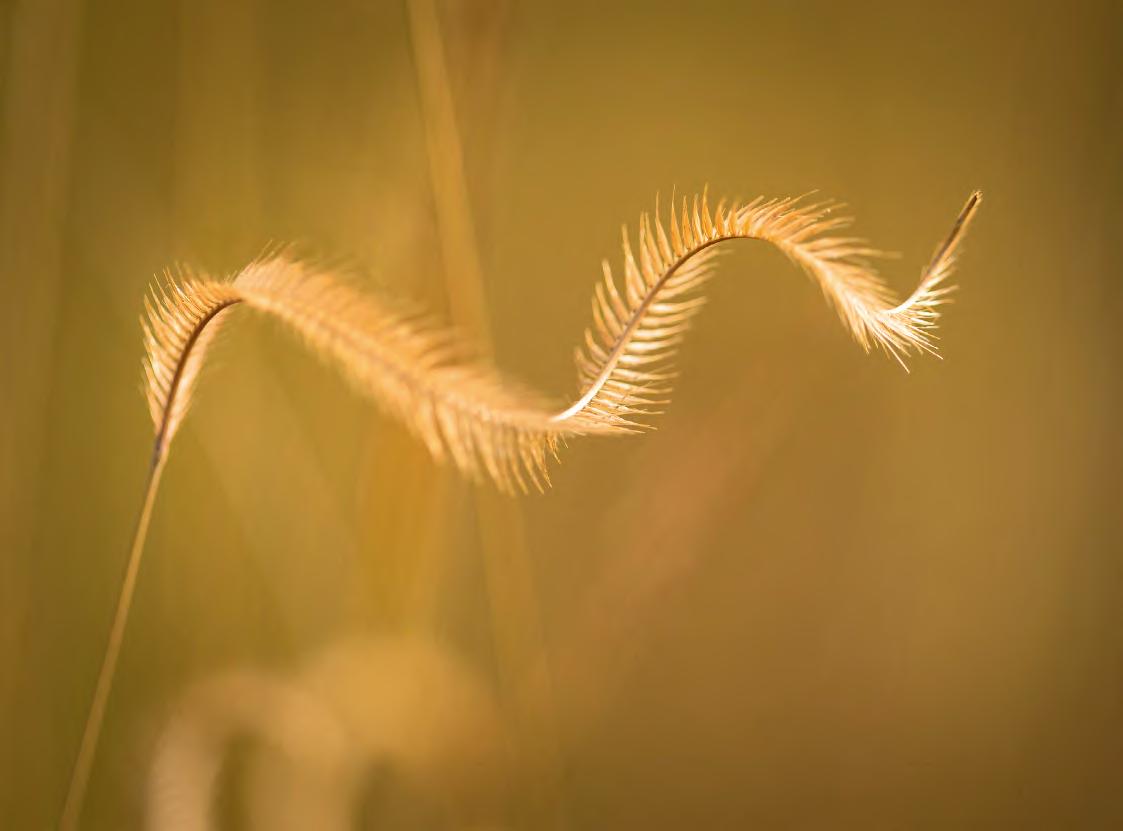
Whilst the future will certainly be challenging, there are many reasons for optimism. There’s an increasing understanding, both in conservation circles and the business community, that we must protect nature not only because nature is beautiful, but also because there is a serious practical interest for humanity in its preservation. The interconnectedness of people and nature and the immense potential of nature-based solutions are becoming factors in boardroom and
government office decision-making all over the world. More people are understanding that you do not keep a pocket of the Amazon rainforest just because you want to protect the forest, you also do it because if we lose it we’ll have problems – from temperature spikes to disruption of rainfall – that affect us all, no matter where we live.
There is also a resilient, committed community of conservationists determined to face these challenges. This is what I see as MAVA’s ultimate legacy – the tens of thousands of people who have been empowered over the years thanks to their connections with us or our partners, and especially the upcoming generation of leaders we helped bloom to their full potential. When I look back at our mission and what we wanted to achieve, to conserve biodiversity for the benefit of people and nature by funding, mobilising and strengthening our partners and the conservation community, I can say we achieved it.
André Hoffmann MAVA President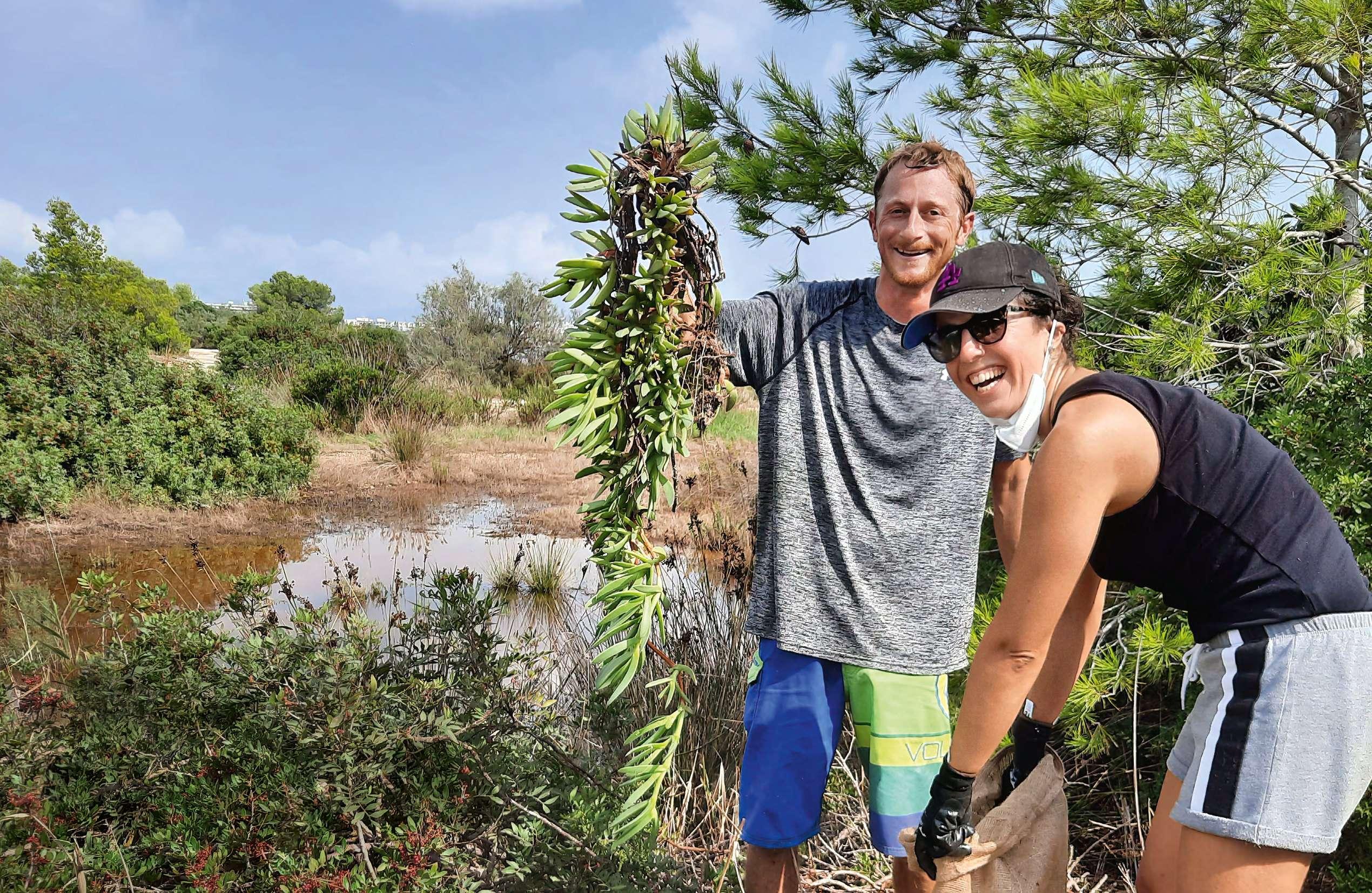
Whilst we’re proud of all the achievements we have contributed to, the true credit must go to our partners – we simply facilitated their impact. We would like to express our gratitude to all our partners for their unfailing engagement, collaboration and dedication throughout the years.
All our partners are named below. This list encompasses all MAVA’s direct partners, but we acknowledge all the impactful work done by indirect partners too (such as those sub-contracted by direct partners) and all the members of the conservation community we had the honour of collaborating with during our lifespan.
A Rocha Lebanon
Acumen Academy
African Leadership University (ALU)
African Wildlife Foundation (AWF)
Agroscope
Al-Shouf Cedar Society (ACS)
Alliance des Alpes
Alliance Vaudoise pour la Nature
Altenburg & Wymenga
Amnesty International Suisse
Antal Festetics, Professor
Antoine Guisan, Doctor
Arbeitsgruppe Piz Vizan
Arboretum du Vallon de l’Aubonne
Aristote University of ThessalonikiEidikos Logariasmos Kondilion Erevnas
Ashoka UK
Asity Madagascar (BirdLife Madagascar)
Asociación Eco-Unión
Associação Lantuna
Associação Natureza Portugal (ANP)
Associação para a Defesa do Ambiente e Desenvolvimento (ADAD)
Associação para a Investigação e Desenvolvimento de Ciências (FCiências.ID)
Associação Projecto Vitó
Associação Projeto Biodiversidade
Asociación Trashumancia y Naturaleza (TyN)
Association Alpes Vivantes
Association Beyond Plastic Med (BeMed)
Association BIOM (BirdLife Croatia)
Association Broye Source de Vie
Association de Gestion Intégrée des Ressources (AGIR)
Association de Vullierens
Association des Amis de la Salamandre
Association des Pêcheurs de la Communauté Rurale de Mangagoulack (APCRM)
Association du Rallye du Chablais
Association Ecovillages
Association Flamants Roses du Banc d’Arguin (FROBA)
Association for Nature, Environment and Sustainable Development (Sunce)
Association for Sustainable and Responsible Investment in Asia (ASrIA)
Association for the Protection of Jabal Moussa (APJM)
Association InTent
Association Internationale des Forêts
Méditerranéennes (AIFM)
Association J’aime ma Planète
Association Jorat, Parc Naturel
Association Jorat, Une Terre à Vivre au Quotidien (JUTAVAQ)
Association Les Amis des Marais du Vigueirat (AMV)
Association Liber Temporis Machinae
Association Limosa
Association MedPAN
Association Metropole Suisse
Association Notre Grand Bleu
Association OUI à la stratégie énergétique 2050
Association pour la Sauvegarde du Léman
Association pour le Cheval de Przewalski (TAKH)
Association Pro-Pandion
Association Suisse Pro Petite
Camargue Alsacienne
Association Truite-Léman
Associazione Paesaggio Bosco Gurin
Associazone Parc Adula
B Lab Switzerland
BACoMaB Trust Fund
Basel Zoo
Basic Roots
Better Nature
Big Tent Foundation
Bios Cabo Verde (Bios.CV)
Biosfera Cabo Verde
BirdLife Cyprus
BirdLife International
BirdLife Malta
BirdLife Österreich
BirdLife Switzerland (ASPO/SVS)
Black Vulture Conservation Foundation (BVCF)
Blue Finance - Economics of Coral
Reef Ecosystems (ECRE)
BlueSeeds
Bright Blue
Bürgerinitiative Unzmarkt-Frauenburg
Butterfly Conservation Europe
Cabo Verde Natura 2000
Capitals Coalition
Caribaea Initiative
Centre for Research on Multinational Corporations (SOMO)
Centre National de la Recherche
Scientifique (CNRS) de Montpellier
Centre Ornithologique Rhône-Alpes
Centre Régional d’Etudes Biologiques et Sociales (France)
Centro de Investigação Pesqueira
Aplicada (CIPA - Guinea-Bissau)
Cercle Ornithologique de Lausanne
Charles Darwin Foundation (CDF)
Chatham House (Royal Institute of International Affairs)
CHEM Trust
ChemSec
Chimbo Foundation
Ciconia Stiftung
Cigogne Suisse
CIHEAM, Mediterranean Agronomic Institute of Chania (MAICh)
CIPRA International
Circle Economy Switzerland
Clarmondial AG
Climate & Sustainability
Climate-KIC Holding B.V.
Club Alpin Suisse
Club of Rome
Comité d’action Galmiz
Comité du Parc Jurassien Vaudois
Comité Français de l’UICN
Commission des réserves forestières de Montricher
Commission Sous-Régionale des Pêches (CSRP)
Committee Yes to a Green Economy
Common Purpose
Commune de Montricher
Congrex Switzerland Ltd
Conservation Finance Alliance (CFA)
Conservation International (CI)
Conservation Without Borders
Convention on Wetlands (Ramsar)
Coöperative Circle Economy U.A.
Cosima Tegetmeyer
Council on Economic Policies (CEP)
Cradle to Cradle Products
Innovation Institute
Critical Ecosystem Partnership Fund (CEPF)
Croatian Herpetological Society (HYLA)
Cybelle Planète
CZIP, BirdLife Montenegro Dalberg SA
Daniel Aubort
Daniel Chérix, Professor
Danube Biosphere Reserve
DEKAMER
Der Verband für nachhaltiges Wirtschaften (öbu)
Direction des Aires Protégées et du Littoral (DAPL - Mauritania)
Direction des Parcs Nationaux (Senegal)
DiversEarth
Doğa Derneği
Društvo Ekologi brez meja (Ecologists Without Borders)
ECA Watch
EcoAlbania
Ecological Club Danube
ECOS AG
Ellen MacArthur Foundation
Empiricon AG
Enalia Physis Environmental Research Centre (ENALIA)
Ente Regionale per lo Sviluppo del Locarnese e Vallemaggia
Entreprise de Correction Fluviale du Nozon
Environmental Justice Foundation (EJF)
Eppel Sustainability
État de Vaud, Direction générale de l’environnement, Division Biodiversité et Paysage (DGE-BIODIV)
EuroNatur
Europa Forum Luzern
European Climate Foundation (ECF)
European Environmental Bureau (EEB)
European Pond Conservation Network (EPCN)
Ex’Tax Project
Fairshare Educational Foundation (trading as ShareAction)
Federation of Associations for Hunting and Conservation of the EU (FACE)
Finance Watch
Fish2Fork
Fondation Bios / Association Andalus
Fondation Changins
Fondation des Grangettes
Fondation du Bois de Chênes
Fondation du parc zoologique La Garenne
Fondation Hainard
Fondation Hoffmann
Fondation Internationale du Banc d’Arguin (FIBA)
Fondation Jan Michalski pour l’écriture et la littérature
Fondation Les Moulins de Rivaz
Fondation pour l’étude des Relations Internationales et du Développement, Genève
Fondation pour l’Université de Lausanne
Fondation pour la Conservation du Gypaète
Fondation suisse pour le Développement
Durable (sanu durabilitas)
Fondation pour les Parcs et Réserves de Côte d’Ivoire
Fondation ProValat
Fondation Succow
Fondation Suisse d’Education pour l’Environnement (FEE)
Food Packaging Forum Foundation (FPF)
Foraus - Swiss Forum on Foreign Policy
Förderkreis BIOTOPIA
Naturkundemuseum Bayern e.V.
Forever Costa Rica Association (FCRA)
Forschungsinstitut für biologischen Landbau (FiBL)
Forum Biodiversité Suisse
Forum Ökologisch-Soziale
Marktwirtschaft e.V.
Foundation for Global Sustainability (FFGS)
Foundation of the University of Zurich
Friends of the Earth Europe
Fundação BioGuiné (FBG)
Fundação Maio Biodiversidade (FMB)
Fundação Tartaruga
Fundación Global Nature (FGN)
Fundación Naturaleza y Hombre (FNYH)
Fundación para la Conservación de la Biodiversidad (CBD-Hábitat)
Fundatia Conservation Carpathia
Fundaziun Pro Terra Engiadina
Fundaziun Capricorn
Funders for Fair Trade
Fundo Brasileiro para Biodiversidade (Funbio)
Gemeinde Samedan
Gemeinden im Neckertal
General Fisheries Commission for the Mediterranean (GFCM)
Global Canopy Foundation
Global Diversity Foundation (GDF)
Global Footprint Network (GFN)
Global Green Growth Institute (GGGI)
Global Infrastructure Basel Foundation (GIB)
Global Infrastructure Institute
Global Legislators Organisation (GLOBE)
Global Penguin Society (GPS)
Global Sustainability Trust
GOB Menorca
Goetheanum Dornach
Grande Cariçaie
Green Alliance Green Economy Coalition
GreenCape Sector Development Agency
Greenlight Association
Greifensee-Stiftung
GRID-Arendal
Groupe 3.21
Groupe d'études faunistiques de Jaman (GEFJ)
Groupe de Recherche et d’Information sur les Vertébrés (GRIVE)
Groupe de Recherche et d’Echanges Technologiques (GRET)
Groupement d’Intérêt Scientifique pour les Mammifères Marins de Méditerranée (GIS3M)
Grün Stadt Zürich
Grupo de Estudos de Ordenamento do Território e Ambiente (GEOTA)
Hannah Cubaynes
Hans Salzmann
Heinrich Boell Foundation
Hellenic Center for Marine Research (HCMR)
Hellenic Institute of Speoleogical Research (HISR)
Hellenic Ornithological Society (BirdLife Greece)
Hellenic Society for the Protection of Nature (HSPN)
Hochschule für Technik Rapperswil (HSR)
ICLEI, Local Governments for Sustainability e.V.
Impact Hub Geneva-Lausanne
Impact Hub GmbH
Impact Hub Switzerland Association
Imperial College of Science, Technology and Medicine
InfluenceMap CIC
Infras AG
Initiative pour les Petites îles de Méditerranée (Initiative PIM)
Institut de la Francophonie pour le Développement Durable (IFDD)
Institut de Recherche pour le Développement (IRD)
Institut du Développement Durable et des Relations Internationales (IDDRI)
Institut Supérieur des Sciences de la Mer (ISSM)
Institute for European Environmental Policy (IEEP)
Institute of Chartered Accountants in England and Wales (ICAEW)
Instituto da Biodiversidade e das
Áreas Protegidas (IBAP)
Inter Pares
International Conservation Caucus Foundation
International Federation of Organic Agriculture Movements, European Regional Group (IFOAM EU)
International Institute for Environment and Development (IIED)
International Institute for Sustainable Development (IISD)
International Union for Conservation of Nature (IUCN)
Investor Watch Ltd
IUCN Centre for Mediterranean Cooperation
IUCN Guinea-Bissau
IUCN Mauritania
IUCN Programme Office for South-Eastern Europe (IUCN SEE)
IUCN Programme on African Protected Areas & Conservation (PAPACO)
IUCN Regional Office for Eastern Europe and Central Asia (ECARO)
IUCN Regional Office for West Asia (ROWA)
Jenifer Altman Foundation
Judith Zbinden, Doctor
KARCH: Centre de Coordination pour la Protection des Amphibiens et des Reptiles de Suisse
Klaus Ewald, Professor
Konrad Lorenz Stiftung
KORA Stiftung
Landesmuseum Zurich
Le Balkan
Lega Italiana Protezione Uccelli (LIPU-BirdLife Italy)
Les Editions de la Salamandre Sarl Liechtensteinische Gesellschaft für Umweltschutz (LGU)
Ligue pour la Protection des Oiseaux (LPO - BirdLife France)
Ligue pour la Protection des Oiseaux (LPO) - Antenne Grands Causses
Low Impact Fishers of Europe (LIFE)
Luc Hoffmann Institute
Lukas Indermaur
LUMA & cetera Fondation
LX Filmes
Maarten Bijleveld van Lexmond, Doctor Marcelo de Camargo Furtado
Mark Halle
Maisenbacher Magic projects
Maison de la Rivière
Marianne Haahr
Marilles Foundation
Marine Stewardship Council (MSC)
Material Economics Sverige AB
Maumary Lionel and Vallotton Laurent
Mediterranean Association to Save the Sea Turtles (MEDASSET)
Mediterranean Information Office for Environment, Culture and Sustainable Development (MIO-ECSDE)
Mediterranean Institute for Nature and Anthropos (MedINA)
Mediterranean Wetlands Initiative (MedWet)
MEDSEA Foundation
Michael Succow Foundation
Ministère de l’Environnement et du
Développement Durable (Mauritanie)
Monitoring Institute for Rare Breeds and Seeds in Europe
Moroccan Biodiversity and Livelihoods
Association (MBLA)
Mowgli Mentoring
National Marine Park of Zakynthos (NMPZ)
National Research Center (Palestine)
Nationalpark Oberoesterreichische Kalkalpen GmbH
Natural Justice
Natural Resources Defense Council Inc. (NRDC)
Nature Mauritania
Nature Network Fund
Nature Trust Malta
Nature-Communautés-Développement (NCD - BirdLife Senegal)
NatureFinance (formerly Finance for Biodiversity - F4B)
Nébéday
Neue Zürcher Zeitung AG
New Economics Foundation
New Venture Fund
Noé
North Cyprus Society for Protection of Turtles (SPOT)
Nos Oiseaux
Ö+L Büro Für Ökologie und Landschaft
Ocean Conservancy
Oceana
Office National de la Chasse et de la Faune Sauvage (France)
OIKOS Istituto
ONG Palmeirinha
Opération Canopée
ORCA Production SA
Organisation for Orphan Projects
Organisation pour la Protection des Alpages (OPPAL)
Ornitologia Stiftung Basel
Palestine Wildlife Society (PWLS)
Parc National du Banc d’Arguin (PNBA)
Parc National du Diawling
Parc Naturel Régional de Camargue
Parc Naturel Régional Gruyère
Pays-d’Enhaut
Parc Naturel Régional Jura Vaudois
Parco Nazionale del Locarnese
Partenariat Régional pour la Conservation de la zone Côtière et Marine (PRCM)
Partners for a New Economy (P4NE)
Peace Parks Foundation
Pesticide Action Network Europe (PAN Europe)
Philanthropy Europe Association (Philea - formerly EFC)
Photographes pour la Planète
Plan Bleu
PlantLife International
Plastics Solutions Fund
Prespa Ohrid Nature Trust (PONT)
Preventable Surprises
Prince Albert II of Monaco Foundation
Priority Actions Programme/Regional Activity Centre (PAP/RAC)
Pro Natura
Progetto Lince Italia
Projekte Ökologie Landwirtschaft (Schweiz)
ProPark Foundation
ProSea
Prozirkula
PUSCH
Regional Activity Centre for Specially
Protected Areas (RAC/SPA)
Regional Activity Centre for Sustainable Consumption and Production (SCP/RAC)
Regione Locarnese et Vallemaggia (RLVM)
Réseau Action Climat - France
Réseau Régional d’Aires Marines
Protégées en Afrique de l’Ouest (RAMPAO)
Resilient Foundation
Reto Soler
Royal Botanic Gardens
Royal Netherlands Institute for Sea Research (NIOZ)
Royal Society for the Conservation of Nature - Jordan (RSCN)
Royal Society for the Protection of Nature - Bhutan (RSPN - BirdLife Bhutan)
Rytec AG
Salzburg Global Seminar
SAVE Foundation
Schmetterlings - Forum Zürich
Schweizerische Ausbildungsstätte
für Natur - und Umweltschutz - SANU
Schweizerische Greina-Stiftung (SGS)
Schweizerische Vogelwarte
Schweizerischer Forstverein
Scottish Wildlife Trust
Seas at Risk
Silverback Films Limited
SILVIVA Foundation
Simon Zadek
Slowfood
Sociedad Española de Ornitologia (SEO - BirdLife Spain)
Sociedade Portuguesa para o Estudo das Aves (SPEA - BirdLife Portugal)
Société Coopérative de l’Asile du Marchairuz
Société d’Etudes Ornithologiques de France (SEOF)
Society for Territorial and Environmental Prosperity (STEP)
Society for the Protection of Nature in Lebanon (SPNL - BirdLife Lebanon)
Society for the Protection of Nature Israel (BirdLife Israel)
Society for the Protection of Prespa (SPP) Sofies SA
Southern African College
Stichting Birdlife Europe
Stichting Global Flyway Network
Stichting Metabolic Institute
Stichting Transhumance & Natuur
Stiftung Bildungswerkstatt Bergwald
Stiftung Frauenwinkel
Stiftung für nachhaltige LandwirtschaftSchweiz (SNL)
Stiftung Landschaftsschutz
Schweiz (SL-FP)
Stiftung Pro Bartgeier
Surfrider Foundation Europe
Sustainable Digital Finance Alliance (formerly Green Digital Finance Alliance)
Sustainable Finance Geneva (SFG)
Swiss Association for the Development of Agriculture and Rural Areas (AGRIDEA)
Swiss Economic Forum (SEF)
Swiss Federal Institute for Forest, Snow and Landscape Research (WSL)
Swiss Federal Institute of Aquatic Science and Technology (EAWAG)
Swisscleantech
SYSTEMIQ Ltd
Tacugama Chimpanzee Sanctuary
Tamedia Publications Romandes
Teenergy Productions
Terra Cypria, The Cyprus Conservation Foundation
Terroir et Cultures
Tethys Research Institute
The Board of Trustees of the Leland
Stanford Junior University
The Chancellor, Masters and Scholars of the University of Cambridge
The Chancellor, Masters and Scholars of the University of Oxford
The Conservation Collective
The European Conservation Coaches Network (CCNet Europe)
The MedFund
The Nature Conservancy
The Pew Charitable Trusts
The Sea Turtle Protection Society of Greece (ARCHELON)
The Value Web
Third Generation Environmentalism (E3G)
Tiniguena
Topten International Services (TIS)
Tour du Valat
Transboundary Conservation Specialist Group (IUCN)
Trinationales Umweltzentrum
Tropical Biology Association Ltd
Turtle Foundation
Ukrainian Green Wave Ecological Club
Underwater Research Society (SAD)
United Nations Development Programme (UNDP)
United Nations Environment Programme (UNEP)
United Property Investments Limited
University of Aveiro
University of Avignon
University of Barcelona
University of Basel
University of Bern
University of British Columbia
University of Cabo Verde (Department of Engineering and Marine Science)
University of Cambridge
University of Exeter
University of Groningen
University of Lausanne
University of Lisboa
University of Natural Resources and Life Sciences, Vienna (BOKU)
University of New York
University of Vienna
University of Vigo
University of Zurich
Verein Beirat NATUR
Verein Parc Adula
Verein Pro Riet Rheintal
Verein Pro Wiesenweihe
Verein Sauberes Wasser für alle
Vertigo Lab
Vision Landwirtschaft
VivaRiva
Vivid Economics Ltd
Vulture Conservation Foundation (VCF)
Wade & Co
Waldwirtschaftverband beider
Basel und Basellandschaftlicher
Natur- und Vogelschutzverein
Wässermatten Stiftung
Wasserwelten Göschenen
Waste and Resources Action Programme (WRAP)
WaterBear
WESPO Inc, DBA CEA Consulting
Wetlands International
Wetlands International Africa
Whitley Fund for Nature
Wild Champanzee Foundation (WCF)
Wild Foundation
Wildlife Conservation Society
Wildlife Consulting
Wildscreen
WIN Wieselnetz
World Association of Zoos and Aquariums (WAZA)
World Business Council For Sustainable Development (WBCSD)
World Conservation Monitoring Centre (WCMC)
World Economic Forum (WEF)
World Resources Institute (WRI)
WWF Adria
WWF Austria
WWF Danube-Carpathian Programme (DCP)
WWF European Policy Programme
AISBL (EPO)
WWF France
WWF Germany
WWF Greece
WWF Indonesia
WWF International
WWF Italy
WWF Mediterranean Programme Office (MedPO)
WWF Mongolia
WWF Netherlands
WWF North Africa
WWF Portugal
WWF Spain
WWF Switzerland
WWF Türkiye
WWF UK
WWF Vaud
WWF West Africa Marine Programme (WAMPO ex-WAMER)
Yolda Initiative
Z/Yen Group Limited
Zero Waste Europe
ZOE, the Institute for FutureFit Economies
We would like to express our deep recognition to all the MAVA board and team members for their support and inspiration, sometimes in the background but equally important, enabling MAVA to accomplish its mission to conserve biodiversity for people and nature.
MAVA Board:
Luc Hoffmann
President from 1994-2010
President Emeritus from 2010-2016
André Hoffmann
2008-2010
President from 2010-2023
Mario Broggi (2001-2009)
Pierre Goeldlin (1994-2010)
Frederic Hoffmann (2015-2023)
Maja Hoffmann (2008-2023)
Rosalie Hoffmann (2011-2023)
Dr Hans Hüssy (1994-2000)
Raymond Junod (1994-2010)
Jonathan Knowles (2011-2023)
Claude Martin (2008-2015)
Vera Michalski (1994-2023)
Mike Moser (2015-2023)
Hubert du Plessix (Treasurer) (2011-2023)
Jean-Philippe Rochat (2011-2023)
Ibrahim Thiaw (2015-2019)
MAVA Staff:
Suzanne Amrein, Executive Assistant & Head of Communications (2011-2022)
Antonio Araújo*, Manager, West Africa Programme (1999-2018)
Salla Ba*, Manager, West Africa Programme (2013-2023)
Eve Cabo*, Manager, West Africa Programme (2014-2023)
Nathalie Cadot*, Manager, Impact & Sustainability (2011-2023)
Luís Costa, Manager, Mediterranean Basin Programme (2016-2023)
Stéphanie Courtines, Director, Finance & Administration (2008-2010)
Natalya Davydova Kinseher, acting Head of Finance & Administration (consultant) (2013-2014)
Laurianne Demierre, Financial Analyst (2012-2024)
Aissata Dia*, Project Officer, West Africa Programme (2015)
Maoudo Diaw*, Driver, West Africa Programme (2009-2023)
Céline Diedhiou*, Femme de ménage, West Africa Programme (2011-2023)
Bousso Dramé, Manager, West Africa Programme (2016-2017)
Ahmet Fall*, Head of Finance & Administration, West Africa Programme (2007-2023)
Jill Forman, acting Head of Finance & Administration (consultant) (2011-2012)
Christophe Gay-Balmaz*, Finance Manager (2011-2015)
Marie Madeleine Gomez, Manager, West Africa Programme (2017-2023)
Paule Gros, Director, Mediterranean Basin Programme & Head of Strategic Partnerships (2009-2023)
Jean Hauss, Finance Controller (2010)
Shalini Joseph, Programme Assistant (2016-2023)
Charlotte Karibuhoye*, Director, West Africa Programme & Head of Strategic Alliances (2004-2023)
Benjamin Landreau, Advisor, Impact & Sustainability (part-time consultant) (2018-2022)
Lynda Mansson, Director General (2010-2023)
Simon Mériaux*, Manager, Impact & Sustainability / Head of Learning (2008-2023)
Charlène Minster, Manager, Mediterranean Basin Programme / Impact & Sustainability Unit (2020-2023)
Sokhna Ndiaye*, Assistant, West Africa Programme (2009-2023)
Gonzalo Oviedo, Manager, Mediterranean Basin Programme (part-time consultant) (2018-2023)
Marko Pecarevic, Manager, Mediterranean Basin Programme (2011-2016)
Jérôme Pellet, Manager, Switzerland Programme (part-time consultant) (2016-2022)
Thierry Renaud, Director, Impact & Sustainability Unit (2009-2022)
Holger Schmid, Director, Sustainable Economy & Switzerland Programmes (2005-2023)
Julien Semelin*, Manager, Mediterranean Basin Programme / Head of Learning (2009-2021)
Rachel Sturm, Director, Finance & Administration (2010-2024)
Jean-Paul Taris, Director and Personal Advisor to Luc Hoffmann (2005-2010)
Ismaila Traoré*, Technicien de surface, West Africa Programme (2014-2023)
Veronica Troya, Consultant (2022-2023)
Silvana Tschudin, Secretary (2006-2009)
Dominic Walker, Finance and Administration Assistant (2010-2012)
Carol Wuersch, Programme Assistant (2009-2016)
We would also like to thank the below organisations and all their individual contributors, who we count as friends. We have fond memories of our collaboration and strong appreciation for their work. As MAVA was involved with so many projects and programmes over the years we have undoubtedly forgotten some names, so we extend our gratitude to everyone else who crossed our path.
Aage V. Jensen Charity Foundation
Accounting & Management Services SA
Achim Steiner
Agence Française de Développement (AFD)
Aid Impact
Alexandre Manghi
Alissa Mendes de Leon
Ambassade de Suisse au Sénégal
Ambassade du Royaume des Pays-Bas à Dakar
Arcadia Fund
Augusta Henriques
Barry Spergel
Bettina Court
Blanca Casares Guillén
Blue Action Fund
Blue Pangolin Consulting
Book Sprints
Bourgeois Avocats SA
BSR Imprimeurs
Cape Capital
Cartier Philanthropy and Cartier for Nature
Catherine Lokschin
Centre for Philanthropy Studies (CEPS), Université de Bâle
Centre en Philanthropie de l’Université de Genève (GCP)
Charlotte Gobin Consulting
Chris Hails
Claudia Genier
Corinne Brunois
Critical Ecosystem Partnership
Fund (CEPF)
Dalberg
Dave Pritchard
David Morrisson
Deloitte
Deutsche Gesellschaft für Internationale Zusammenarbeit (GIZ)
DOB Ecology
Eldora IUCN
Elma Okic
Environmental Funders Network (EFN)
European Climate Foundation (ECF)
European Union
Fiduciaire Reddani
Fondation Adessium
Fondation Audemars Piguet
Fondation Audemars-Watkins
Fondation Charles Léopold Mayer
Fondation ClimateWorks
Fondation COmON
Fondation David and Lucile Packard
Fondation des Fondateurs
Fondation Ford
Fondation Gordon and Betty Moore
Fondation Hans Wilsdorf
Fondation IKEA
Fondation IMS
Fondation KR
Fondation Laudes
Fondation Marisla
Fondation Minerva
Fondation Oak
Fondation PeaceNexus
Fondation Prince Albert II
Fondation Segré
Fondation Swiss Philanthropy
Fondation William and Flora Hewlett
Fondation Wyss
Fonds Français pour l’Environnement
Mondial (FFEM)
Foundations of Success (FOS)
François Nimal
Georg Schwede
GI WACAF
Global Environment Facility (GEF)
Global Environment Facility (GEF) Small Grants Programme
Global Water Partnership (GWP)
Guillaume Taylor
Heather Corrie
Hellio & Van Ingen
Hervé Lethier
Huib Koeleman
Ingrid Anderson
INTRAC
Johannah Bernstein
Jonathan Loh
Jorgen Randers
Julia Marton-Lefevre
Justin Woolford
Kathleen Cravero
Kathy Mikitin
Kellerhals Carrard Lausanne
KfW
Laura Penn
Legacy Landscapes Fund
Madeleine Schaerer
Massellaz
Matthieu Ducroq
Messaggio
Miller Design
Natacha Yellachich
Natural Strategies
Nelson Gomes Diaz
Network of High Ecological Value
Mediterranean Forests (MEDFORVAL)
Oceans 5
Opsys360 SA
Patrick Chalmers
Patrick Reyes
Paul Siegel
Paula Salnot
PHI - Karin Jestin
Pierre Campredon
PricewaterhouseCoopers (PwC) SA
Rewilding Europe
RN Travel
Rockefeller Philanthropy Advisors
Scobag Privatbank
SETIN Group
Sigrid Rausing Trust
Social Investors
Social-Ecological Interactions Group
Stephanie Fonteyn
Stephanie Mansourian
Stiftung Mercator Schweiz
Stone Soup Consulting
Swiss Philanthropy Circle
SwissFoundations
Sword Technologies
Sylvie Goyet
The Conservation Collective
The Nature Conservancy (TNC)
The World Bank
TroisDeuxUn
UBS
University of Portsmouth
Voices That Count
Wild Wonders of Europe
WISE
Yona Lee SA
Yves Junod
If you would like to read more about MAVA, a selection of its learning products and publications remain available on MAVA’s legacy website.
These include reflections on its experiences, its guidance on sunsetting a foundation, white papers on a range of topics and a series of its blogs.

A fruitful OD partnership: our retrospective of the long collaboration between MedPAN & MAVA
Be an octopus: reflections from an engaged donor
Care for those who care for the planet: grantmaking for staff development
Conservation Learning Initiative: evidence-based learning to improve conservation impact
How to finance conservation sustainably beyond project support / granting Learning to let go: Decision-making for foundations
Meaning or money: what do we value?
Merging for impact: radically rethinking how we deliver impact
Not if but how: troubleshooting in projects
Our journey in philanthropy: lessons from three decades of grant-making at MAVA
Strategic partnerships: MAVA’s approach to scaling up conservation impact
Tips of the triangle: exploring three-way partnerships for organisational development
Using core values to honor the founder’s vision while not creating a mausoleum
What lies beyond financial outcomes: a donor’s perspective on supporting fundraising
Why investing in leadership development matters
All these publications are available on MAVA’s legacy website: www.mava-foundation.org
A• Aage V. Jensen Charity Foundation, 209
• Adessium Foundation, 215
• Adwick, Sophie, 212
• Agence Française de Développement (AFD), 35
• Albania
- lynx conservation, 100–103
- Prespa Lakes, 28, 74–79, 140, 203
- river protection, 186
• Alliance for Mediterranean Nature and Culture, 140, 174
• Alps
- lynx conservation, 189
- river protection, 151
- vulture conservation, 122–123 see also Switzerland
• Al-Shouf Cedar Society, 202
• Amrein, Suzanne, 40
• Andevski, Jovan, 117
• Annen, Melanie, 198
• Arditi, Stéphane, 158
• Argentina, 193
• Associação Natureza Portugal (ANP), 160
• Associação Transumância e Natureza (ATN), 152, 176
• Association BIOM, 197
• Attenborough, Sir David, 201
• Audemars-Watkins Foundation, 210
• Austria, 90–91, 151, 189
• Berliner, Ana, 176
• Biai, Justino, 81
• Bijagós islands, Guinea-Bissau, 28, 55–57, 80–83, 92–94, 177, 192
• Binet, Thomas, 131
• Biosfera, 134, 179
• bird atlases, 162, 185, 188
• bird conservation
- anti-poaching action, 162, 197
- Dalmatian pelican, 74, 77–79, 203
- greater flamingo, 22, 23, 25, 63, 153, 156–157
- migratory shorebirds, 184, 192
- penguins, 193
- raso lark, 179
- seabirds, 134–135, 185
- vulture conservation, 122–123
• BirdLife International, 134–135, 184, 185, 201
• Blanc, Anaïk Anthonioz, 198
• BlueSeeds, 130–131
• Boa Vista, Cape Verde, 94, 159, 194
• Bolderson, Shelley, 201
• Borboroglu, Pablo, 193
• Bores, Joana, 179
• Boschi, Cristina, 154
• Bosnia and Herzegovina, 149, 162
• Bosshard, Andreas, 108, 109
• Breitenmoser, Christine, 100
• Breitenmoser, Urs 100
• Bury, Kathleen 116–117
- sea turtle conservation, 94, 159, 178
- seabird conservation, 134
• Cartier for Nature, 213
• Casier, Liesbeth, 163
• Catsadorakis, Giorgos, 74
• CBD-Habitat, 113, 177, 179, 208
• Center for Philanthropy Studies (CEPS), University of Basel, 207
• Charles Darwin Foundation for the Galapagos, 182
• Cheikh, Sidi, 72
• China, 165
• circular economy, 86–87, 158, 165, 174, 183, 195, 209
• Coburn, Alison, 118
• Common Purpose, 116–118
• COmON Foundation, 207
• Cordes, Hiltrud, 53
• Costa de las Focas Reserve, Mauritania, 113
• Council on Economic Policies (CEP), 169
• Critical Ecosystem Partnership Fund (CEPF), 216
• Croatia, 90–91, 130, 197
• culture and nature, 28, 82, 140–141, 152, 174, 216
• CZIP Montenegro, 153
• Da Silva Cosme, Pommelien, 195
• Dalmatian pelican, 74, 77–79, 203
• eagle
- Spanish imperial, 27, 69
- white-tailed, 90, 91
• EcoAlbania, 163, 186
• Economics for Nature (E4N), 126–127
• ECOS, 174
• Edwards, Gavin, 175
• El Alaoui, Houda, 121, 196
• Ellen MacArthur Foundation, 165
• EuroNatur, 100–103, 162, 173
• European Bird Census Council (EBCC), 188
• European Breeding Bird Atlas 2 (EBBA2), 162, 188
• European Environmental Bureau, 158
• European Union
- Chemicals Strategy of Sustainability, 183
- Right to Repair, 158
- Water Framework Directive, 68
• Galapagos, 182
• García Rodríguez, Raúl, 148
• Garzón, Jesús, 152
• Gas, Cecilia, 55
• Geneva Centre for Philanthropy, 213
• Gil, Teresa, 67
• Global Biodiversity Framework, 175
• Global Diversity Foundation, 50, 195
• Global Footprint Network, 167
• Global Penguin Society, 193
• GOB Menorca, 166
• Gomez, Marie Madeleine, 134
• Goyet, Sylvie, 35
• Grayson, Claire, 120
• Greece
- marine protected area, 187
- Prespa Lakes, 28, 74–79, 140, 203
• Green Digital Finance Alliance (GDFA), 163
• Green Economy Coalition (GEC), 126
• Greenfield, Oliver, 126, 127
• Hoffmann, Rosalie, 31, 42
• Holland, Andrew, 214
• Houseman, Paul, 158
• Huber, Thomas, 189
• Hudina, Tomislav, 121
• Hungary, 90–91
• Hutovo Blato Nature Park, Bosnia and Herzegovina, 149
• Impact Hub Geneva-Lausanne, 195
• Institute for Biodiversity and Protected Areas (IBAP), 80–82, 92, 93, 94, 192
• Institute of Environmental Sciences (ISE), 196
• Instituto Nacional de Gestão do Território, 194
• International Institute for Sustainable Development (IISD), 163
• Faia Brava Reserve, Portugal, 176
• Faria, Ceandra, 133
• Faye, Alioune, 196
• Febrer, Jara, 166
• Feh, Claudia, 110, 111
• Fernandez de Larrinoa, Pablo, 179
• FIBA (International Foundation of the Banc d’Arguin), 28, 31, 35, 41–42, 70, 150, 200
• Finance for Biodiversity (F4B), 132–133
• Finch, Olivia, 165
• flamingo, greater, 22, 23, 25, 63, 153, 156–157
• Fondation BioGuiné, 35, 82
• Gros, Paule, 34, 38, 39, 43, 45
• Grossmann, Marco, 174
• Gueye, Ibrahima, 137
• Guinea-Bissau
- Bijagós islands, 28, 55–57, 80–83, 92–94, 177, 192
- migratory shorebird conservation, 192
- sea turtle conservation, 92–94
- sustainable development, 199
• Guri, Besjana, 186
• Haahr, Marianne, 163
• International Union for Conservation of Nature (IUCN), 27, 31, 89, 100, 110, 150, 196
- Centre for Mediterranean Cooperation, 125, 177
- Programme on African Protected Areas & Conservation (PAPACO), 164
- Red List of Ecosystems, 138–139
• Jalbert, Jean, 64, 65
• Janjušević, Jovana, 153
• Johnston, Leslie, 209
• Ba, Oumar, 185
• Balde, Ruguiato, 199
• Balkans
- bird protection and study, 162, 197
- Hutovo Blato Nature Park, 149
- l ynx conservation, 100–103
- Prespa Lakes, 28, 74–79, 140, 203
- river protection, 90–91, 186
- Ulcinj Salina, Montenegro, 153
• Banc d’Arguin and Coastal Marine Biodiversity Trust Fund (BACoMaB), 35, 72
• Banc d’Arguin National Park, Mauritania, 28, 35, 70–73, 92–94
• Barkawi, Alexander, 169
C• Cabo, Eve, 47
• Cabo Blanco, Mauritania, 113, 179
• Cadot, Nathalie, 42, 116
• Calame, Matthieu, 206
• Camargue, 22–25, 31, 62–65
• Cambridge Masters in Conservation Leadership, 201
• Campanarios de Azaba Biological Reserve, Spain, 155
• Campredon, Pierre, 28, 107
• Cape Verde
- coastal management plan, 194
- migratory shorebird conservation, 184
• Damalas, Dimitrios, 187 Danube see Mura-Drava-Danube
Biosphere Reserve
• de Barros, Miguel, 80, 82
• del Olmo, Juan Carlos, 68
• Dell, Alex Llopis, 122
• Diamant, Nicolai, 86, 87
• Doñana Defence Fund, 68
• Doñana National Park, Spain, 27, 66–69
• Donors’ Initiative for Mediterranean Freshwater Ecosystems (DIMFE), 209
Drava see Mura-Drava-Danube
Biosphere Reserve
• Ducrocq, Mathieu, 150
• Fondation Charles Léopold Mayer, 206, 211
• Fondation Segré, 208
• Fonds Français pour l’Environnement Mondial (FFEM), 35, 125
• Food Packaging Forum, 183
• France - lynx conservation, 189
- Przewalski horse conservation, 110
- Tour du Valat, 22–25, 31, 62–65
• Frankfurt Zoological Society, 79
• Fundação Maio Biodiversidade (FMB), 92, 94, 178
• Fundação Tartaruga, 92, 94, 95, 159
• Fundación Naturaleza y Hombre, 155
• Hans Wilsdorf Foundation, 208
• Hatti, Gabriel, 71
• Hellenic Centre for Marine Research, 187
• Henderson, Julia, 78
• Henrique, Augusta, 80
• Hernandez-Rios, Alfonso, 201
• Herrando, Sergi, 188
• Hoffmann, André, 23, 30, 31, 35–37, 39, 46, 50, 51, 86, 132, 195, 220–221
• Hoffmann, Fred, 42
• Hoffmann, Luc, 21–28, 30–31, 34–35, 40, 51, 54, 63, 66, 68, 70, 74–77, 104, 140, 152, 155, 176, 177, 182, 193
• Hoffmann, Maja, 30, 31, 110
• Kaczensky, Petra, 189
• Karavellas, Demetres, 56, 74–77
• Karibuhoye, Charlotte, 42, 82
• Keller, Verena, 188
• KfW Development Bank, 35, 79
• Khomyn Talyn Takhi (KTT), 110
• Kosovo, 100–103
• Kotrošan, Dražen, 162
• KR Foundation, 211
• Kramer, Peter, 182
• Krausz, Nicolas, 211
• Kuzmenko, Tatiana, 185
• Lake Dayet Aoua, Morocco, 153
• lark, raso, 179
• Laudes Foundation, 209
• Leaders for Nature Academy, 45, 51, 96, 116–121, 161, 163, 173, 191, 196, 198, 200
• Lebanon, 202
• Lefghih, Ahmed, 73
• Living Planet Morocco, 153
• Lombardi, Paolo, 160
• Loudon, John, 207
• Luc Hoffmann Institute, 198
• lynx, 27, 100–103, 189
- monk seal conservation, 112–113, 208
- nature and culture, 140–141, 152, 174, 216
- Shouf Biosphere Reserve, Lebanon 202
- Tour du Valat, France, 22–25, 31, 62–65
see also North Africa
• Mediterranean Institute for Nature and Anthropos (MedINA), 140–141
• Mediterranean Wetland Alliance, 63–64
• Mediterranean Wetlands Initiative (MedWet), 63
• MedPAN, 89
• MEDSEA Foundation, 172
• Melis, Blandine, 119
• Menorca, 166, 202
O• Oak Foundation, 211, 212, 217
• Ocean Stewardship Fund (OSF), 158
• ONG BiodiverCités, 200
• Papayannis, Thymio, 74, 140
• Parc naturel du Jorat, 198
• Parker, Kristian, 217
• Partners for a New Economy (P4NE), 169, 211
• Pavlov, Aleksandar, 103
• Peace Parks Foundation, 207
• pelican, Dalmatian, 74, 77–79, 203
• Pellet, Jérôme, 96
• penguins, 193
• Ricci, Ezra, 210
• Right to Repair campaign, 158
• Rishi, Vinit, 212
• Rodríguez, Jon Paul, 138, 139
• Romani, Marie, 89 S
• Saleck, Maimouna, 200
• Saloum Delta Biosphere Reserve, Senegal, 137
• Sanchez Martínez, Carlos, 155
• Sardinia, 172
• Sarkis, Lina, 202
• Satta, Alessio, 172
• Schmid, Holger, 32, 34, 40, 43, 90, 151
• Schneider-Jacoby, Martin, 162
• Status and Conservation of the Alpine Lynx Population (SCALP), 189
• Stiftung Mercator Schweiz, 214
• Sturm, Rachel, 38
• Sustainable Asset Valuation (SAVi), 163
• Swiss Ornithological Institute, 185, 188
• Switzerland, 15, 31, 39
- agriculture reform, 108–109
- canton of Vaud, 96–97, 168
- circular economy, 86–87, 174, 195
- lynx conservation, 189
- small carnivore conservation, 154
• Madani, Yousra, 153
• Mahjoub, Maher, 125
• Maio island, Cape Verde, 94, 178
• Malack, Jean, 137
• Malakou, Myrsini, 74, 76, 79, 203
• mangrove ecosystem, 104, 150
• Mansson, Lynda, 10–11, 35, 37–38, 39, 41, 42, 45, 79, 206
• Margot, François, 97
• Marín, Lourdes Lázaro, 177
• marine conservation funding, 130–131, 158
• marine protected areas (MPAs), 88–89, 187
• Marine Stewardship Council, 158
• Maristanis project, Sardinia, 172
• Mateljak, Zoran, 149
• Maugué, Marc, 208
• Mauritania
- Banc d’Arguin National Park, 28, 35, 70–73, 92–94
- migratory shorebird conservation, 184
- monk seal conservation, 113, 179
• Mauvais, Geoffroy, 164
• MedBycatch project, 172
• Mediterranean Basin, 15, 31, 39, 160, 173, 215
- Campanarios de Azaba Biological Reserve, Spain, 155
- marine conservation funding, 130–131, 158
- marine protected areas (MPAs), 88–89, 187
- Maristanis project, Sardinia, 172
- MedBycatch project, 172
• Mériaux, Simon, 36, 42, 134
• Michalski, Vera, 23, 30, 31
• Miranda, Euda Helena, 194
• Mohl, Arno, 90, 91
• Molinari-Jobin, Anja, 189
• Mongolia, 110–111
• Monk Seal Alliance, 113
• monk seal conservation, 112–113, 179, 208
• Monod, Theodore, 28
• Monteiro, Antonio, 176
• Montenegro, 153
• Moreno, Rocio, 94
• Morocco, 50, 123, 153, 195
• Mowgli Mentoring, 116–118, 173
• Muncke, Jane, 183
• Mura-Drava-Danube Biosphere Reserve, 90–91
• Nanopoulou, Ivi, 141
• nature and culture, 28, 82, 140–141, 152, 174, 216
• NatureFinance, 132
• Neretva delta, Croatia, 197
• Nicholson, Edward Max, 27
• North Africa, 50, 125, 153, 195, 212
• North Cyprus Society for Protection of Turtles (SPOT), 55
• Northern Macedonia
- lynx conservation, 100–103
- Prespa Lakes, 28, 74–79, 140, 203
• Perrin, Catherine Strehler, 168
• Perrin, Jean-Louis, 110
• Peter, Henry, 213
• Plateforme Nature Vaudoise, 96–97
• Plessix, Hubert du, 96
PNBA see Banc d’Arguin National Park, Mauritania
• Pontes, Samuel Ledo, 192
• Portugal, 176
• PPI OSCAN, 125
PRCM see Regional Partnership for Coastal and Marine Conservation (PRCM)
• Prespa Lakes, 28, 74–79, 140, 203
• Prespa Ohrid Nature Trust, 35, 79, 212
• Programme on African Protected Areas & Conservation (PAPACO), 164
• Projeto Vitó, 134
• Przewalski horse, 110–111
• Ramsar Convention for Wetlands of International Importance, 28, 63, 64, 79, 140, 153
• Red List of Ecosystems, 138–139
• Regalla, Aissa, 93, 94
• Regional Partnership for Coastal and Marine Conservation (PRCM), 32, 104–107, 150
• Renaud, Thierry, 34, 38, 43, 45
• Réseau Régional d’Aires Marines Protégées en Afrique de l’Ouest (RAMPAO), 150
• Resende, Ukie, 94, 95, 159
• Schnurbein, Georg von, 207
• Schwaderer, Gabriel, 173
• Schweitzer, Jean-Pierre, 158
• Scott, Sir Peter, 23, 27
• sea turtle conservation, 55, 92–95, 159, 178, 185
• seabird conservation, 134–135, 185
• Segré, Claudio, 208
• Semelin, Julien, 213
• Senegal, 42, 136–137
• Senhoury, Ahmed, 105, 106
• Serbia, 90–91
• shorebird conservation, 184, 192
• Shouf Biosphere Reserve, Lebanon, 202
• Sierra Leone, 184
• Sigrid Rausing Trust, 212
• Simon, Joan Marc, 161
• Skov, Mette, 209
• Slocinski, Boleslaw, 197
• Slovenia, 90–91
• small carnivore conservation, 154
• Smit, Henk, 176
• Sociedade Portuguesa para o Estudo das Aves (SPEA), 179
• Society for the Protection of Prespa (SPP), 28, 31, 74–79, 140, 203
• Spain
- Campanarios de Azaba Biological Reserve, 155
- Doñana National Park, 27, 66–69
- livestock walking, 152
- marine conservation, 148
• Spangenberg, Annette, 100, 101
• Staehli, Felix, 121, 195
• Vulture Conservation Foundation (VCF), 122
• vultures, 122–123, 143–145
W• Wackernagel, Mathis, 167
• Walder, Christoph, 151
• West Africa, 15, 31, 39, 41–42, 53
- Banc d’Arguin and Coastal Marine Biodiversity Trust Fund (BACoMaB), 35, 72
- Banc d’Arguin National Park, Mauritania, 28, 35, 71–73, 92–94
- Bijagós islands, Guinea-Bissau, 28, 55–56, 80–83, 93–94, 177, 192
• TAKH (Association pour le cheval de Przewalski), 110
• Taris, Jean-Paul, 30, 31, 43, 64, 110, 155, 177
• Tavares, José, 122
• Teixidor, Arnau, 178
• Theodorou, Panagiota, 120
• Tiniguena, 80–81, 199
• Tour du Valat, France, 22–25, 31, 62–65
• transhumance, 152
• turtle conservation, 55, 92–95, 159, 178, 185
• Turtle Foundation, 53, 92, 94
• Ukraine, 185
• Ukrainian Society for the Protection of Birds, 185
• Ulcinj Salina, Montenegro, 153
• UNESCO, 28, 90, 193, 216
• United Nations Convention on Biological Diversity, 175
• United Nations Environment Programme (UNEP), 172
- capacity building, 164
- coastal management plan, 194
- mangrove ecosystem, 104, 150
- migratory shorebird conservation, 184, 192
- monk seal conservation, 113, 179
- Regional Partnership for Coastal and Marine Conservation (PRCM), 32, 104–107, 150
- sea turtle conservation, 92–95, 159, 185
- seabird conservation, 134, 185
• Wetlands International Africa, 163, 196
• Wilson, Duncan, 212
• WIN Wieselnetz, 154
• WWF (World Wide Fund for Nature), 27, 31, 89, 175
- WWF Adria, 90, 149, 160
- WWF Austria, 90–91, 151
- WWF Greece, 56, 74, 79, 163, 187
- WWF Hungary, 90
- WWF Mediterranean, 160
- WWF North Africa, 160
- WWF Spain, 66–68, 148
• Valverde, José Antonio, 27, 66
• van Gemerde, Barend, 184
• van Vliet, Rogier, 215
• Vaud canton, Switzerland, 96–97, 168
• Villat, Jessica, 120
• Vision Landwirtschaft, 108–109
• Vjosa River, Albania, 186
• Voříšek, Petr, 188
• Yılmaz, Engin, 174
• Yolda Initiative, 174 Z
• Zalewski, Sally, 110
• Zarrouk, Anis, 172
• Zero Waste Europe, 161
• Zurita, Patricia, 135
1 Cover: Frederic Reglain / Alamy
5 Wild Wonders of Europe / Zankl naturepl.com
6 José Gieskes Fotografie / Getty
8 Switzerland © Michel Roggo / roggo.ch
10-11 Ulcinj Salinas, Montenegro © EuroNatur
Lynda Mansson © Elma Okic
MAVA at a glance
12-13 Agami Photo Agency / Shutterstock
15 Mediterranean Basin – ORCA
Impact & Sustainability – Bankim Desai
Global – Don Pablo
Switzerland – Lukas Bammatter
West Africa – Hellio - Van Ingen
Sustainable Economy – Andrea Ferrario
16 Jesse Kraft / Alamy
18-19 Victor Maschek Shutterstock
20 Luc Hoffmann © Photothèque Tour du Valat
Jean E/ Roche / naturepl.com
Orsolya Haarberg / naturepl.com
22 Luc Hoffmann © Photothèque Tour du Valat
23 First flamingo ringing, Camargue © Photothèque
Tour du Valat
24 Jag_cz / Shutterstock
Luc Hoffmann © Photothèque Tour du Valat
David Tipling naturepl.com
26 Bijagós, Guinea-Bissau © Hellio - Van Ingen
29 Prespa © Jean Jalbert, Tour du Valat
30 Mauritania © FIBA
31 Hoffmann family © Hervé Hôte, agence Cameleon, Tour du Valat
33 Senegal © Hellio – Van Ingen
34-35 Mangroves, Senegal © François Nimal
36 Palm trees and mangroves, Urok Islands, Guinea-Bissau
© Tiniguena
Simon Mériaux and driver, Banc d’Arguin - Mauritania
© François Nimal
André Hoffmann © Hervé Hôte, agence Cameleon, Tour du Valat
38-39 Together for the Med documentary © Felix Vigné
40-41 MAVA/FIBA merger celebrations © JCO Communications
42 Roland Dorozhani © EuroNatur
43 MAVA staff © MAVA (both photos)
44 Kopački Rit Nature Parc, Croatia © Arno Mohl
47-48 © Hemis / Alamy
MAVA’s approach
48-49 Wild Wonders of Europe / Radisic / naturepl.com
50 Plant distribution, Morocco © Pommelien Da Silva, GDF
51 Lemnos, Greece © MedINA
53 Admirio Inocêncio / Lantuna
54-55 Ramosch, Switzerland © Angelika Abderhalden-Raba
56 Jinfeng Zhang / Dreamstime
Success stories
58-59 Bijagós, Guinea-Bissau © ORCA Production
60 Pascal Tordeux / naturepl.com
62 Images from BarbAnna Getty
63 Marion Vittecoq © Zepellin, Tour du Valat
64-65 Yann Guichaoua Getty Collared pratincole, blickwinkel / Alamy
67 Doñana © Diego López WWF España
69 Luke Massey naturepl.com
70 Banc d’Arguin, Mauritania © Hellio – Van Ingen
71 Banc d’Arguin, Mauritania © Hellio – Van Ingen
72 Banc d’Arguin, Mauritania © Nathalie Cadot
73 Banc d’Arguin, Mauritania © Louis Gérard d’Escrienne
75 Prespa © SPP Archive, Francesco Márquez
76-77 Prespa Lake, Greece © Julia Henderson / SPP
78 Vegetation study © SPP Archive, Francesco Márquez
79 Frog, Prespa © ORCA Production
81 Tree, Bijagós, Guinea-Bissau © CBD-Habitat
82-83 Anton_Ivanov / Shutterstock
83 E. Lopez-Tapia/CBD-Habitat
84 Senegal © Hellio – Van Ingen
86 André Hoffmann © Circular Economy Switzerland
87 Iryna Imago / Shutterstock
88 Installation of temperature sensors in Gôkova, Türkiye © Z. Kizilkaya
90 xbrchx Shutterstock
91 Wild Wonders of Europe / Widstrand / naturepl.com
92 People on beach © Turtle Foundation
93 Cape Verde © Turtle Foundation
95 Enrique Lopez-Tapia / naturepl.com
96 Libellule © Jérôme Pellet
97 River Vaud, Switzerland © Jérôme Pellet
98 Tree, Mauritania © François Nimal
100 imageBROKER / Alamy
101 North Macedonia © Melovski/MES
102-103 Lynx tracking © Leschinski
104 Senegal © Hellio – Van Ingen
105 Senegal © Hellio – Van Ingen
107 Senegal © Hellio – Van Ingen
108 © Visionlandwirtschaft
109 © Visionlandwirtschaft
111 Mongolia © Association pour le cheval de Przewalski (TAKH)
112 Banc d’Arguin, Mautitania © Programme
Conservation Phoque Moine
114-115 Vaud Alps © Alpes Vivantes
117 MAVA Leaders for Nature Academy © Thibaut Branquart / Grand Nord Films
119 MAVA Leaders for Nature Academy © Thibaut Branquart / Grand Nord Films
120-121 MAVA Leaders for Nature Academy © Thibaut Branquart / Grand Nord Films
123 Franzsika Lörcher with Wally © Hansruedi Weyrich, LBV
124 © Maher Mahjoub, IUCN
126 Açaí Productive Chain © Dirce Quintino - Foundation for Amazon Sustainability (FAS)
127 Açaí Productive Chain © Dirce Quintino - Foundation for Amazon Sustainability (FAS)
128 © MedINA
131 Gokova Bay, Türkiye © Timothée Cook, BlueSeeds
132 Daniel Prudek / Shutterstock
133 Inga Linder / Shutterstock
135 AGAMI Photo Agency / Alamy
136 Senegal © Hellio – Van Ingen
139 Magali Rossi
140 Luc Hoffmann and Thymio Papayannis © Jean Jalbert
141 © MedINA
142-143 Neretva Delta, Croatia © Marin Burić
145 Dadia National Park, Greece © Nasos Nalbantis / WWF Greece
146 Nick Upton / naturepl.com
148 © Miguel Murcia / WWF Spain
149 Hutovo Blato Nature Park, Bosnia and Herzegovina © Nikola Zovko
150 Senegal © Hellio – Van Ingen
151 Daniel Malinowski / Dreamstime
152 Jesús Garzón © Marity González
Luc Hoffmann © Jesús Garzón
153 Ulcinj Salina, Montenegro ©Nikolai Petkov
154 Krys Bailey Alamy
155 Campanarios de Azaba Biological Reserve, © Staffan Widstand
156 Camargue, France © Hervé Hôte / Agence Caméléon
159 Boa Vista Island, Cabo Verde © Marcel Meierhofer
160 Raptor’s Refuge of Montejo de la Vega (Segovia), Spain © Jorge Sierra / WWF Spain
161 Zero Waste Europe © Javier Bernal Revert
162 Wild Wonders of Europe / della Ferrera / naturepl.com
163 © Thibaut Branquart Grand Nord Films
164 Cameroon © Emmanuel Awono
165 Obbchao Shutterstock
166 Public excursion to Hort de Matadones farm © GOB Menorca
167 Doñana, Spain © ORCA Production
168 © “Formation Chef de projets Nature et environnement”, SANU
169 © C. Amico / MedWet
170 © Research Station Petite Camargue Alsacienne
172 © Emirhan Karamuk / WWF Türkiye
173 MAVA Leaders for Nature Academy © Thibaut Branquart / Grand Nord Films
174 © Circular Economy Switzerland
175 Val Maighels, Switzerland © Nathalie Cadot
176 Juan Carlos Munoz / Alamy
177 © CBD-Habitat
178 Maio Island, Cape Verde © en Haut!
179 Monk seal, Mauritania © Cedenilla. M / CBD-Habitat
179 © Joana Bores
180 La Sauge, Switzerland © BirdLife / F. Turrian
182-183 Sergey Uryadnikov / Shutterstock
184 © Barend van Gemerden
185 © Serhiy Kantsyrenko
186 Ollirg / Dreamstime
187 Lemonakis Antonis / Shutterstock
188 European Breeding Bird Atlas © Petr Voříšek
189 Laurent Geslin / naturepl.com
190 MAVA Leaders for Nature Academy © Thibaut Branquart
Grand Nord Films
192 Guinea-Bissau © Samuel Ledo Pontes IBAP
193 © Global Penguin Society
194 Boa Vista Island, Cape Verde © Nathalie Cadot
195 Argentina © Global Diversity Foundation
196 MAVA Leaders for Nature Academy © Thibaut Branquart
Grand Nord Films
197 Neretva Delta, Croatia © Association Biom
198 MAVA Leaders for Nature Academy © Thibaut Branquart / Grand Nord Films
199 Urok Islands, Guinea Bissau © Tiniguena
200 Banc d’Arguin, Mauritania © François Nimal
201 © The Cambridge Masters in Conservation Leadership
202 LEBANON Landmarks and People by Vision Alamy
203 Prespa, Greece © ORCA Production
204 © Hugo Ferreira
206 Lennjo / Shutterstock
207 Bijagós, Guinea-Bissau © ORCA Production
208 Mauritania © CBD Habitat
209 Donors’ Initiative for Mediterranean Freshwater Ecosystems
signing © Axel Bastello, Palais Princier
210-211 Hellio – Van Ingen
212 Prespa © Jean Jalbert, Tour du Valat
213 Istanbul, Türkiye © Sea Turtle Steering Committee
214-215 Croatia © A. Rossetti, MEDPAN
216-217 Vincent Pommeyrol Getty
218-219 Senegal © François Nimal
Reflections and hopes
220 Bijagós, Guinea-Bissau © ORCA Production
André Hoffmann © Hervé Hôte
Appendices
222-223 Tschlin, Ramosch, Switzerland © Angelika Abderhalden-Raba
233 Jonathan Aubert / EyeEm / Getty
Writing: Catherine Finch
Editing: George Timms and Frédéric Brunet
Proofreading: Ellen Tout and Quentin Huon
Design: Liz Rankin and Shyama Rajani
Image research: Laura Barwick
Image retouching: Stephen Johnson
Production:
Touchline (touchline.com)
Coordination: Suzanne Amrein
This book recounts the history and philosophy of the MAVA Foundation and pays tribute to the invaluable work accomplished by its partners over its lifetime.
MAVA was founded by Dr Luc Hoffmann in 1994 to support the conservation of biodiversity, and was later led by his son André.
The foundation was a key funder in the conservation field and had worked with over 500 partners by the time of its closure in 2022. This book tells a small selection of its partners’ stories, alongside MAVA’s own.
